

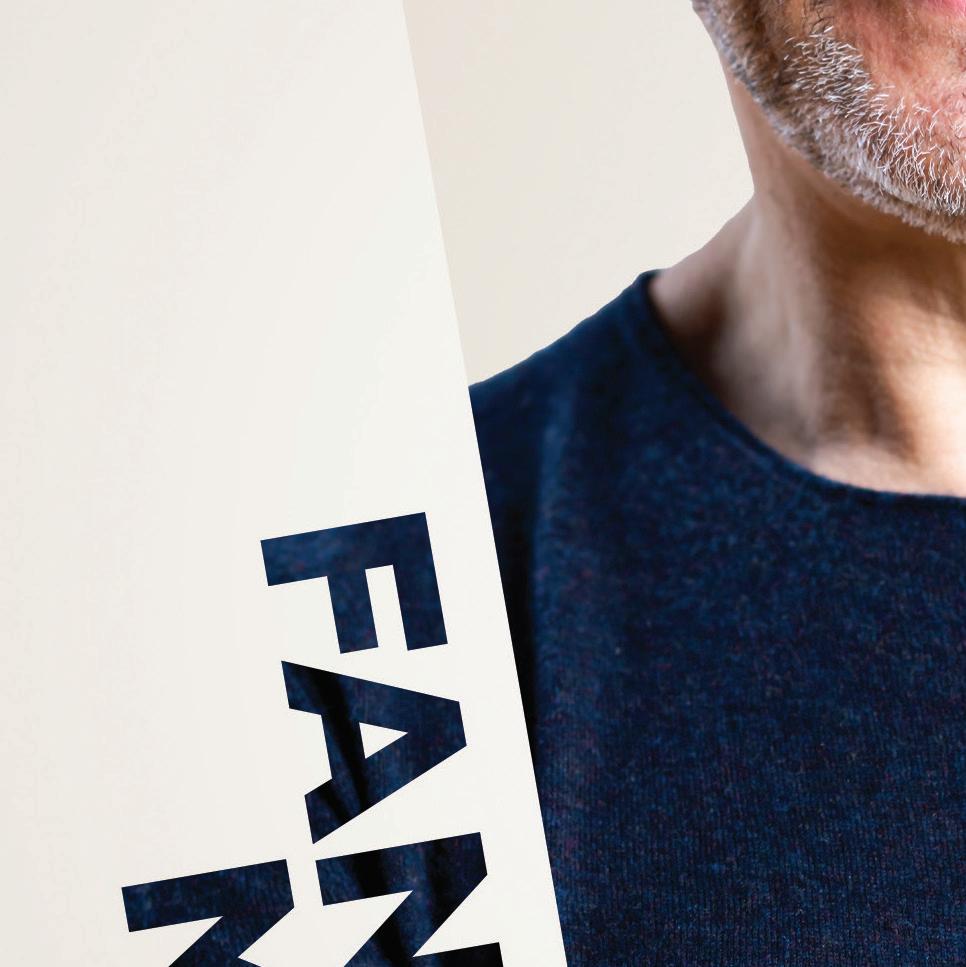

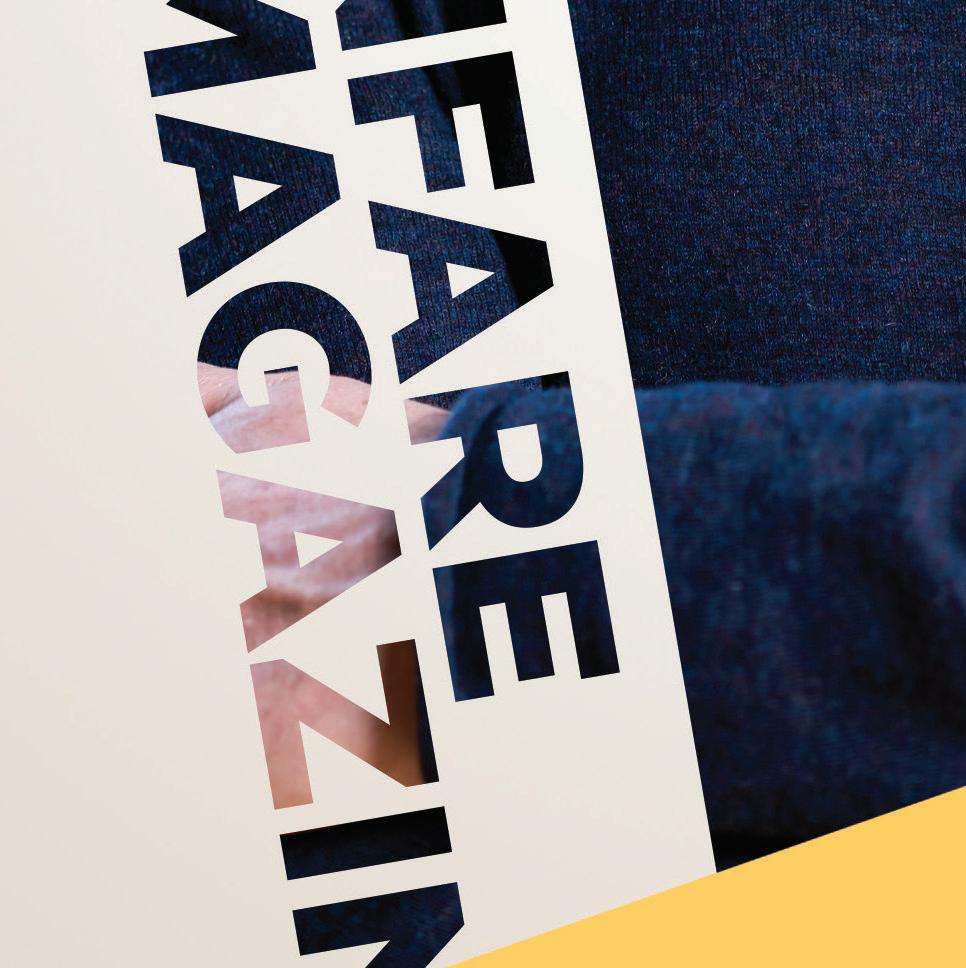
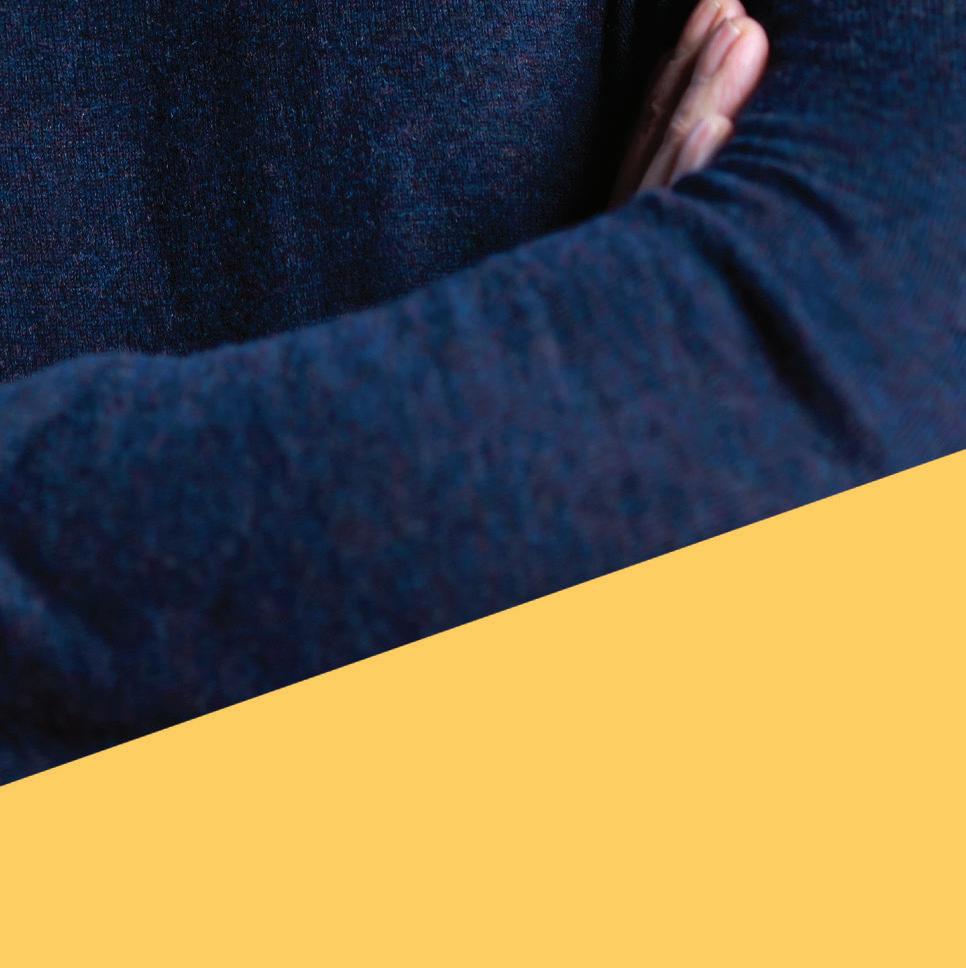

SEP / OCT 2023 The History of the Future SEP / OCT 2023 The History of the Future SEP / OCT 2023 The History of the Future SEP / OCT 2023 The History of the Future
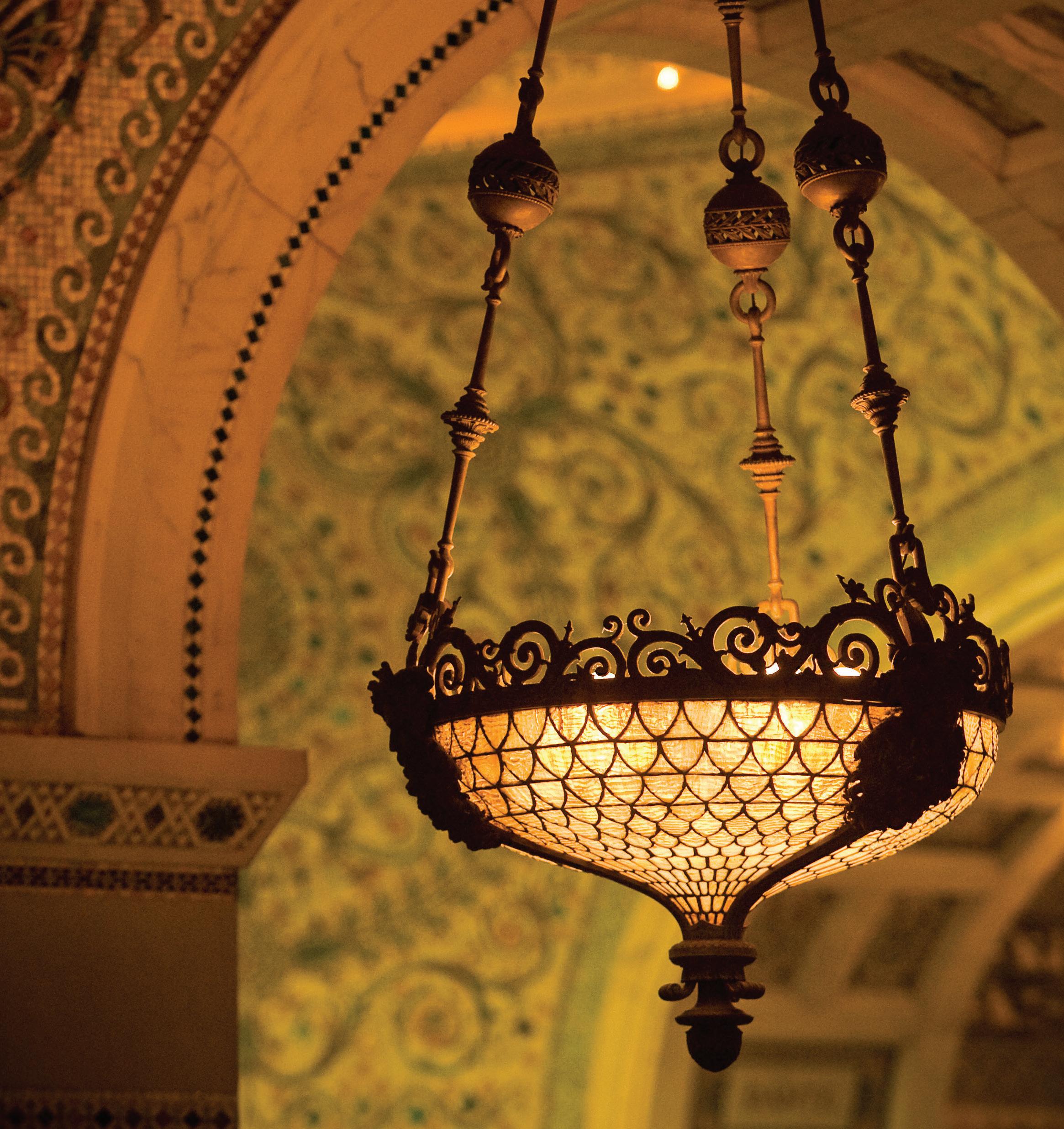

Oxford proudly supports the Cincinnati Symphony Orchestra. ATLANTA F CHICAGO F CINCINNATI F GRAND RAPIDS F INDIANAPOLIS F MINNEAPOLIS F PALM BEACH 513.246.0800 F WWW.OFGLTD.COM/CSO Oxford is independent and unbiased — and always will be. We are committed to providing multi-generational estate planning advice and forward-thinking investment solutions to families and institutions. Oxford is an investment advisor registered with the U.S. Securities and Exchange Commission. Registration does not imply a certain level of skill or training. More information about Oxford’s investment advisory services and fees can be found in its Form ADV Part 2, which is available upon request. OFG-2308-1
All recitals at 3 PM at Memorial Hall, 1225 Elm Street OTR, except where noted
Sara Daneshpour PIANO
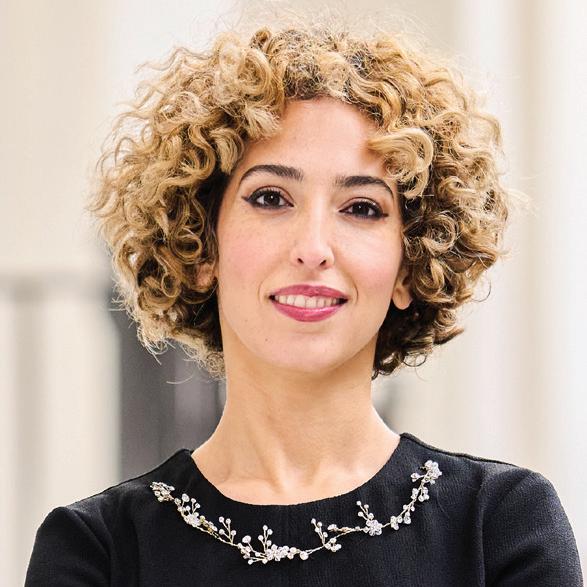
Sunday September 17, 2023
Julian Schwarz CELLO
Marika Bournaki PIANO
Sunday October 29, 2023
Jasmine Choi FLUTE

ChangYong Shin PIANO
Sunday November 19, 2023
NEW VENUE: Westwood First Presbyterian Church
• Winner of a number of major international competitions

• 1st Prize, Gold Medal 2007 Internat’l Russian Music Piano Comp; 1st Prize, Gold Medal, & Audience Award 2007 San Jose Internat’l Piano Comp; 3rd Prize 2017 Arthur Rubinstein Intern’l Piano Comp
• This fall joins the faculty of UC’S CCM
• His powerful tone, effortless virtuosity and extraordinarily large color palette are hallmarks of his style
• Since being awarded 1st Prize at the inaugural Schoenfield International String Competition in 2013, has led an active career as soloist, performing internationally
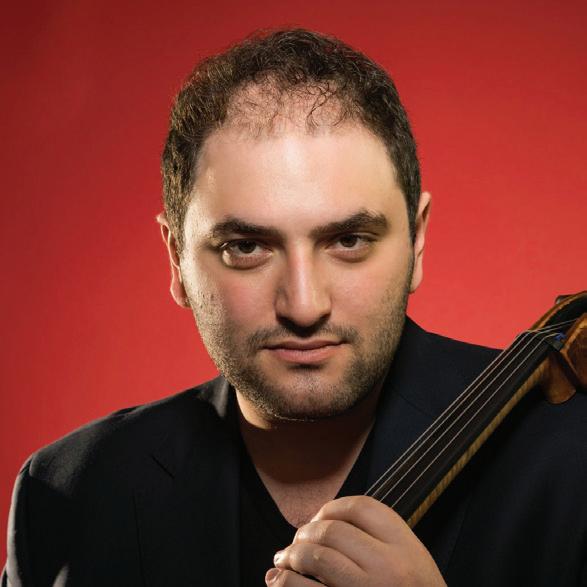
• One of the most celebrated flutists of our time, known for her virtuosity and refined interpretation
• A former Principal Flute of the Vienna Symphony and Associate Principal of the Cincinnati Symphony Orchestra
Tickets: MemorialHallOTR.org or 513-977-8838 MatineeMusicaleCincinnati.org
CINCINNATI DEBUT
CINCINNATI DEBUT
E x p e r i e n c e t h e E x c i t e m e n t o f T h e s e O u t s t a n d i n g A r t i s t s T h i s F a l l ! M a t i n é e M u s i c a l e C i n c i n n a t i O p e n s i t s 1 1 0 t h S e a s o n
Feature: Stephen Schwartz + JMR: Opening Doors 19 Spotlight: The Nina Simone Piano Competition

21 Spotlight: CSO and EarShot Collaborate to Nurture
season is Louis Langrée’s last as CSO Music Director, and he’ll open the season in much the same way he did in 2013, with performances of Copland’s Lincoln Portrait, this time with narrator George Takei. In Part I of a series about Langrée’s tenure, “The History of the Future” (pp. 13–15), you’ll learn about his selection process and his early days with the Orchestra.

16




26 Artistic Leadership: Louis Langrée, John Morris Russell, Matthias Pintscher, Damon Gupton, Samuel Lee and Daniel Wiley
29 Guest Artist Biographies
43 Concerts and CSO Program Notes:
Sep. 9–10: Pops The Princess Bride Film in Concert |
Sep. 16–17: Pops Heroes: A Video Game Symphony | Sep. 22–24: Pops Defying Gravity: An Evening with Stephen Schwartz and Friends | Sep. 30–Oct. 1: CSO The Rite of Spring | Oct. 4: CSO EarShot | Oct. 6: CSO Nina Simone Piano Competition | Oct. 8: Pops Audra McDonald | Oct. 13–14: CSO Bernstein, Price & Copland |

Oct. 13: Winstead Chamber Series | Oct. 18: Beethoven & Tchaikovsky | Oct. 20–22: Pops Disney in Concert: The Sound of Magic | Oct. 27–28: CSO Ring Without
Words | Oct. 28: Lollipops Halloween Spooktacular 87
Cincinnati Pops conductor John Morris Russell first heard the music of Stephen Schwartz at a production of Godspell he attended in his youth, an experience that opened musical doors for him. In a full circle moment, JMR leads the Pops and pianist/host Stephen Schwartz in “An Evening with Stephen Schwartz and Friends.” Read more on pp. 16–18.

19
ON THE COVER: CSO Music Director Louis Langrée.
Credit: Chris Lee
All contents © 2023–24. Contents cannot be reproduced in any manner, whole or in part, without written permission from the Cincinnati Symphony Orchestra and Cincinnati Pops.
Two extraordinary partnerships in the life of the Orchestra come to the Music Hall stage in October: the Nina Simone Piano Competition Concerto Finals, which shines the spotlight on three gifted African American pianists who are vying for the competition’s grand prize, and the EarShot readings, where the CSO will give the first performances of works by four emerging composers. Read more on pp. 19–22.
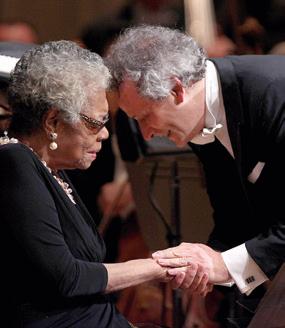
4 Directors & Advisors 5 Welcome to Fanfare Magazine 8 Cincinnati Symphony Orchestra “We Believe” 9 Welcome from the President & CEO 10 CSO Feature: Rephrasing the
13 Louis
Part I:
of
Future
Pops
Familiar
Langrée,
The History
the
16
Concerto Finals
Today’s Composers
Orchestra Roster
25
Financial Support
Administration
96
2 | 2023–24 SEASON FO R AFRICAN AMERICAN PIANISTS PIANO COMPETITION
SEPTEMBER/ OCTOBER 2023
STRONGER ARTS FOR A STRONGER REGION
The growth of Cincinnati and its arts is inseparable. Creating a thriving region starts with each of us giving what we can to the arts. Help set the stage for the future of the region we all love.
Give today at artswave.org.
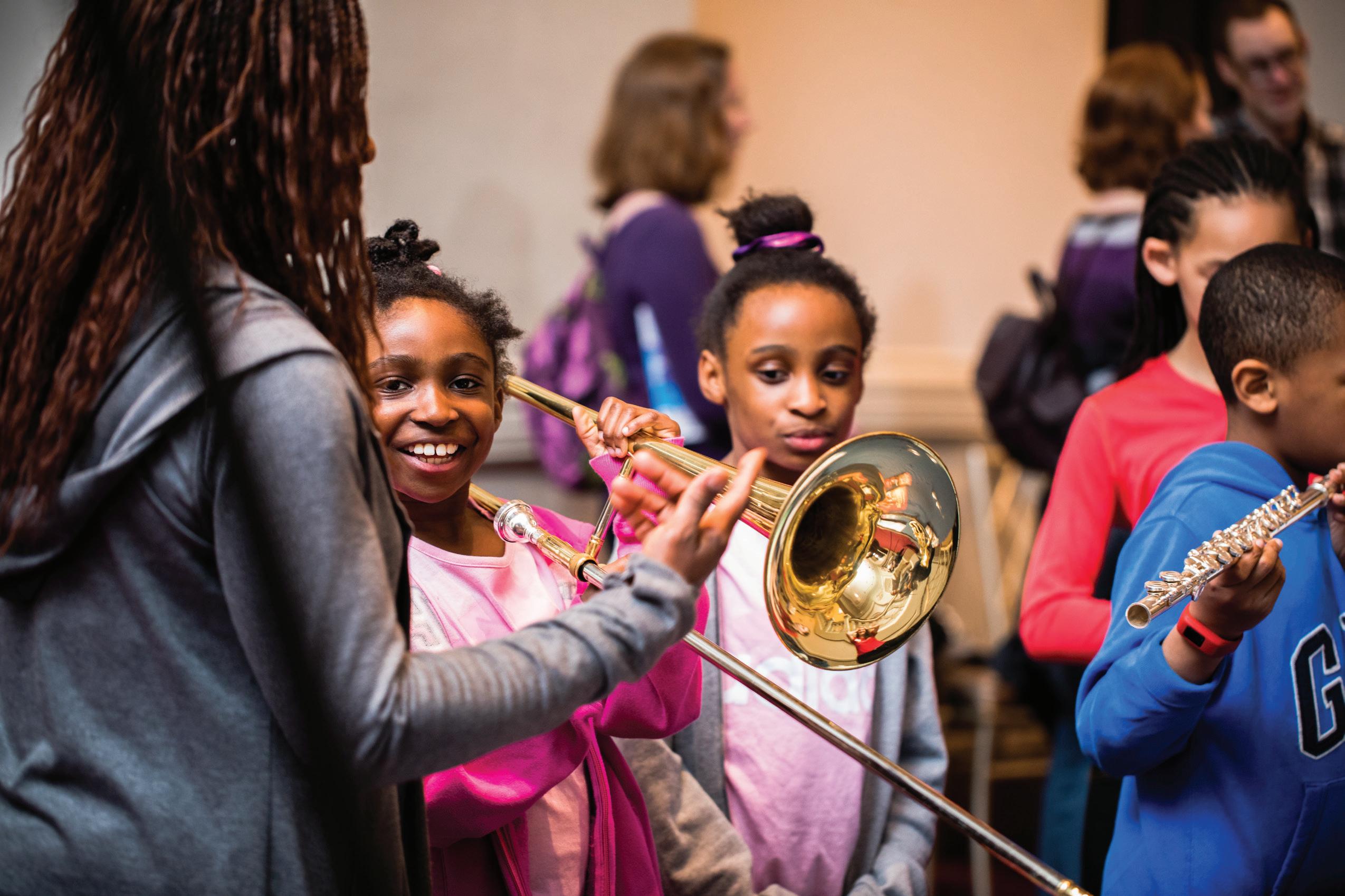
CINCINNATI SYMPHONY
ORCHESTRA & CINCINNATI POPS
Music Hall, 1241 Elm Street, Cincinnati, OH 45202
Box Office: 513.381.3300
hello@cincinnatisymphony.org
Group Sales: 513.864.0196
groupsales@cincinnatisymphony.org
TTY/TDD: Use TTY/TDD Relay
Service 7-1-1
cincinnatisymphony.org
cincinnatipops.org
O cers
Dianne Rosenberg, Chair
Robert W. McDonald, Immediate Past Chair
Sue McPartlin, Treasurer and Vice-Chair of Finance
Gerron McKnight, Esq., Secretary
Timothy Giglio and Kari Ullman, Vice-Chairs of Volunteerism
Anne E. Mulder, Vice-Chair of Community Engagement
Charla B. Weiss, Vice-Chair of Institutional Advancement
Melanie Healey, Vice-Chair of Leadership Development
Directors
Dorie Akers
Heather Apple
Michael P. Bergan
Kate C. Brown
Ralph P. Brown, DVM
Trish Bryan*
Otto M. Budig, Jr.*
Andria Carter
Melanie M. Chavez
Andrea Costa
Adrian Cunningham
FANFARE MAGAZINE STAFF:
Managing Editor
Tyler Secor
Senior Editor/Layout
Teri McKibben
Graphic Design
Stephanie Lazorchak
CINCINNATI MAGAZINE:
Advertising and Publishing
Partners for Fanfare Magazine
Publisher
Ivy Bayer
Production Director & IT Systems
Administrator
Vu Luong
Advertising & Marketing Designer

Logan Case
Account Representatives
Laura Bowling, Maggie Wint Goecke, Hilary Linnenberg, Chris Ohmer, Julie Poyer, Joe Ho ecker
Operations Director
Missy Beiting
Business Coordinator
Erica Birkle
Advertising and Business O ces
1818 Race Street, Suite 301
Cincinnati, OH 45202 | 513.421.4300
Subscriptions: 1.800.846.4333
cincinnatimagazine.com
Gabe Davis
Dr. Maria Espinola
Mrs. Charles Fleischmann III*
Lawrence Hamby
Delores Hargrove-Young
Francie S. Hiltz*
Joseph W. Hirschhorn*
Lisa Diane Kelly
Edna Keown
Patrick G. Kirk, M.D.
Florence Koetters
Jonathan Kregor
Peter E. Landgren
John Lanni
Shannon Lawson
Spencer Liles*
Will Lindner
Holly Mazzocca
James P. Minutolo
Laura Mitchell
Lisa Lennon Norman
Bradford E. Phillips, III
Aik Khai Pung
James B. Reynolds*
Jack Rouse*
Lisa M. Sampson
Patrick Schleker
Valarie Sheppard
Stephanie A. Smith
Albert Smitherman
David R. Valz
Randolph L. Wadsworth, Jr.*
*Director Emeritus
BOARD OF DIRECTORS DIVERSITY, EQUITY & INCLUSION (DE&I) COMMITTEE and COMMUNITY ADVISORY COUNCIL
In May 2020 the realities of systemic inequity, injustice and racism in America were once again laid bare by the murder of George Floyd. That summer, the CSO created a 10-point DEI Action Plan to prioritize the Orchestra’s work to better represent and serve the entirety of the Cincinnati community. Action items included the continued amplification of BIPOC artists on stage and in education programs; a review of hiring and compensation practices; organization-wide implicit bias training; increased mentorship opportunities; and the creation of a standing CSO Community Advisory Council (CAC) to strengthen ties to the community. We thank our many partners on the CAC and on our standing DE&I committee who are helping us with this important work.
CSO Board of Directors
DE&I Committee

Charla B. Weiss, Lead
Heather Apple
Ralph Brown
Adrian Cunningham
Maria Espinola
Delores Hargrove-Young
Lisa Kelly
David Kirk*
Gerron McKnight
Lisa Lennon Norman
Jack Rouse
Lisa Sampson
Stephanie Smith
*Community Volunteer
Primary Sta Liaison: Harold Brown
Other Sta Members: Ti any Cooper, Kyle Wynk-Sivashankar
Christopher Miller, National Underground Railroad Freedom Center
Joele Newman, Peaslee Neighborhood Center
Candra Reeves, Urban League of Greater Southwestern Ohio
Leslie Rich, Ioby
John P. Scott, Community Engagement Partners
Billy Thomas, Cincy Nice
Sta : Ti any Cooper, Harold Brown
Multicultural Awareness Council
Susan Carlson
Andria Carter
Piper Davis
Dara Fairman
Kori Hill
Alverna Jenkins
Beverley Lamb
Carlos Garcia Leon
You are welcome to take this copy of Fanfare Magazine home with you as a souvenir of your concert experience. Alternatively, please share it with a friend or leave it with an usher for recycling. Thank you!
Community Advisory Council
Desire Bennett, Design Impact
Daniel Betts, Cincinnati Recreation Commission
Jackie Taggart Boyd, Cincinnati Convention and Visitors Bureau/CincyUSA
Alexis Kidd, Seven Hills Neighborhood Houses
Aurelia “Candie” Simmons
Jaime Sharp
Quiera Levy Smith
Daphney Thomas
Alford West
Sta : Ti any Cooper, Harold Brown
BOARD OF DIRECTORS
Welcome to the Cincinnati Symphony Orchestra’s 2023–24 season and welcome to Fanfare Magazine
Welcome to the Cincinnati Symphony Orchestra’s 2023–24 season and welcome to Fanfare Magazine

Within these pages, you will find content to help shape your understanding of the music you will experience, stories of the people who work on and off the stage, and information about organization-wide initiatives and developments.
Within these pages, you will find content to help shape your understanding of the music you will experience, stories of the people who work on and off the stage, and information about organization-wide initiatives and developments.
You are welcome to take this copy of Fanfare Magazine home with you as a souvenir of your concert experience. Alternatively, please share it with a friend or leave it with an usher for recycling. Thank you!
You are welcome to take this copy of Fanfare Magazine home with you as a souvenir of your concert experience. Alternatively, please share it with a friend or leave it with an usher for recycling. Thank you!

Please enjoy these stories that have been curated for you in Fanfare Magazine , but also know that the experience is not limited to a print publication available only at concerts. Last season, as part of the CSO’s ongoing commitment to digital storytelling and innovation, we launched a new online platform for our program book content, which contains all the information found in the printed Fanfare Magazine , plus a host of complementary digital-only content, such as videos, links to additional material and articles, up-to-the-minute information, and so much more. The digital program is concert specific and is available for viewing several weeks in advance of a concert. So, you can explore the digital program before coming down to Music Hall. To explore our digital program, we invite you to visit cincinnatisymphony.org/digital-program or text the word PROGRAM to 513.845.3024.*
Please enjoy these stories that have been curated for you in Fanfare Magazine , but also know that the experience is not limited to a print publication available only at concerts. Last season, as part of the CSO’s ongoing commitment to digital storytelling and innovation, we launched a new online platform for our program book content, which contains all the information found in the printed Fanfare Magazine , plus a host of complementary digital-only content, such as videos, links to additional material and articles, up-to-the-minute information, and so much more. The digital program is concert specific and is available for viewing several weeks in advance of a concert. So, you can explore the digital program before coming down to Music Hall. To explore our digital program, we invite you to visit cincinnatisymphony.org/digital-program or text the word PROGRAM to 513.845.3024.*
In addition, you can always explore Fanfare Magazine any time via our website at cincinnatisymphony.org/fanfare-magazine. There you’ll find the editorial content in a digital layout, a flipbook of each full issue, as well as our digital-only stories, which are released during the summer months on social media. We encourage you to follow us on social media to be among the first to read our new releases and like, comment and share with your friends!
In addition, you can always explore Fanfare Magazine any time via our website at cincinnatisymphony.org/fanfare-magazine. There you’ll find the editorial content in a digital layout, a flipbook of each full issue, as well as our digital-only stories, which are released during the summer months on social media. We encourage you to follow us on social media to be among the first to read our new releases and like, comment and share with your friends!
And finally, we hope you find inspiration within these pages and within the music—past, present and future—that reverberates at Music Hall and in the community. It is our honor and privilege to share these stories with you. Thank you for being with us this season!
And finally, we hope you find inspiration within these pages and within the music—past, present and future—that reverberates at Music Hall and in the community. It is our honor and privilege to share these stories with you. Thank you for being with us this season!
*By texting to this number, you may receive messages that pertain to the organization and its performances; msg & data rates may apply. Reply HELP to help, STOP to cancel.

Fanfare Magazine | 5 WELCOME TO FANFARE MAGAZINE SEP / OCT 2023
CINCINNATISYMPHONY.ORG SEP / OCT 2023 FANFARE MAGAZINE
The History of the Future
*By texting to this number, you may receive messages that pertain to the organization and its performances; msg & data rates may apply. Reply HELP to help, STOP to cancel.
Fanfare Magazine | 5 WELCOME TO FANFARE MAGAZINE SEP / OCT 2023
The History of the Future
SEP / OCT 2023 FANFARE MAGAZINE
CINCINNATISYMPHONY.ORG
COMING UP AT MUSIC HALL
NOV 2023
TETZLAFF & TCHAIKOVSKY’S FIFTH
NOV 10 & 11 FRI 11 AM; SAT 7:30 PM
Gustavo Gimeno conductor
Christian Tetzlaff violin
Daníel BJARNASON I Want To Be Alive, Part I: Echo/Narcissus (CSO Co-Commission)
SZYMANOWSKI Violin Concerto No. 1
TCHAIKOVSKY Symphony No. 5
THOMAS’ HAMLET
NOV 17 & 19 FRI 7:30 PM; SUN 2 PM
Louis Langrée conductor; Jodie Devos Ophélie; Stéphane Degout Hamlet; Béatrice Uria-Monzon Gertrude; Laurent Alvaro Claudius; May Festival Chorus
THOMAS Hamlet
Presented in collaboration with Opéra Comique
SIBELIUS SYMPHONY NO. 5
NOV 25 & 26 SAT 7:30 PM; SUN 2 PM
Dalia Stasevska conductor
Davóne Tines baritone
DVOŘÁK Largo from Symphony No. 9, From the New World
Kaija SAARIAHO True Fire
WALKER Lyric for Strings
SIBELIUS Symphony No. 5
CSO Proof
EL NIÑO: NATIVITY RECONSIDERED
NOV 30 THU 8 PM
Christian Reif conductor; Julia Bullock soprano; Jasmin White mezzo-soprano; Anthony Roth Costanzo countertenor; Davóne Tines baritone
John ADAMS El Niño
CSO Proof is generously made possible by Presenting Sponsors Irwin and Melinda Simon
6 | 2023–24 SEASON
DEC 2023
MAHLER’S FIFTH
DEC 1 & 2 FRI 11 AM; SAT 7:30 PM
Case Scaglione conductor; Randolph Bowman flute; Henrik Heide flute; Stefani Matsuo violin
BACH Brandenburg Concerto No. 4
MAHLER Symphony No. 5
HOLIDAY POPS
DEC 8-10 FRI 11 AM & 7:30 PM; SAT 2 PM & 7:30 PM, SUN 2 PM & 7 PM
John Morris Russell conductor
Capathia Jenkins vocalist
Concert Sponsor: Graeter’s Ice Cream
STAR WARS: THE LAST JEDI Film in Concert
DEC 29 & 30 FRI & SAT 7:30 PM
Anthony Parnther conductor
NEW YEAR’S EVE: ELLINGTON AT 125
DEC 31 SUN 8 PM
John Morris Russell conductor
Denzal Sinclaire vocalist
Presenting Sponsor: Dr. John and Louise Mulford Fund for the CSO
MUSIC TO MOVE YOU
FOR A FULL LIST OF UPCOMING EVENTS AND ADDITIONAL INFO VISIT CINCINNATISYMPHONY.ORG
Louis Langrée Music Director • John Morris Russell Cincinnati Pops Conductor MUSIC HALL 1241 Elm Street Cincinnati OH 45202
Fanfare Magazine | 7
WE BELIEVE MUSIC LIVES WITHIN US ALL
regardless of who we are or where we come from. We believe that music is a pathway to igniting our passions, discovering what moves us, deepening our curiosity and connecting us to our world and to each other.
DIVERSITY, EQUITY AND INCLUSION
The Cincinnati Symphony Orchestra and Cincinnati Pops Orchestra’s commitment to diversity, equity and inclusion is catalyzed by systemic injustice and inequality perpetuated by individuals and institutions. Our mission is to seek and share inspiration, and at its essence, the CSO exists to serve our community. Our entire community. Reflecting our community and the world around at every level—on stage, behind-thescenes, and in neighborhoods throughout the region—is essential to the CSO’s present and future and makes us a strong ensemble and institution.
LAND ACKNOWLEDGEMENT
The Cincinnati Symphony Orchestra and Cincinnati Pops acknowledges that Cincinnati Music Hall occupies land that has been the traditional land of the Hopewell, Adena, Myaamia (Miami), Shawandasse Tula (Shawanwaki/Shawnee), and Wahzhazhe Manzhan (Osage) peoples, who have continuously lived upon this land since time immemorial. We acknowledge that this land was unceded and stolen via methods of genocide and ethnic cleansing by colonizers.
We honor past, present and future Indigenous peoples.
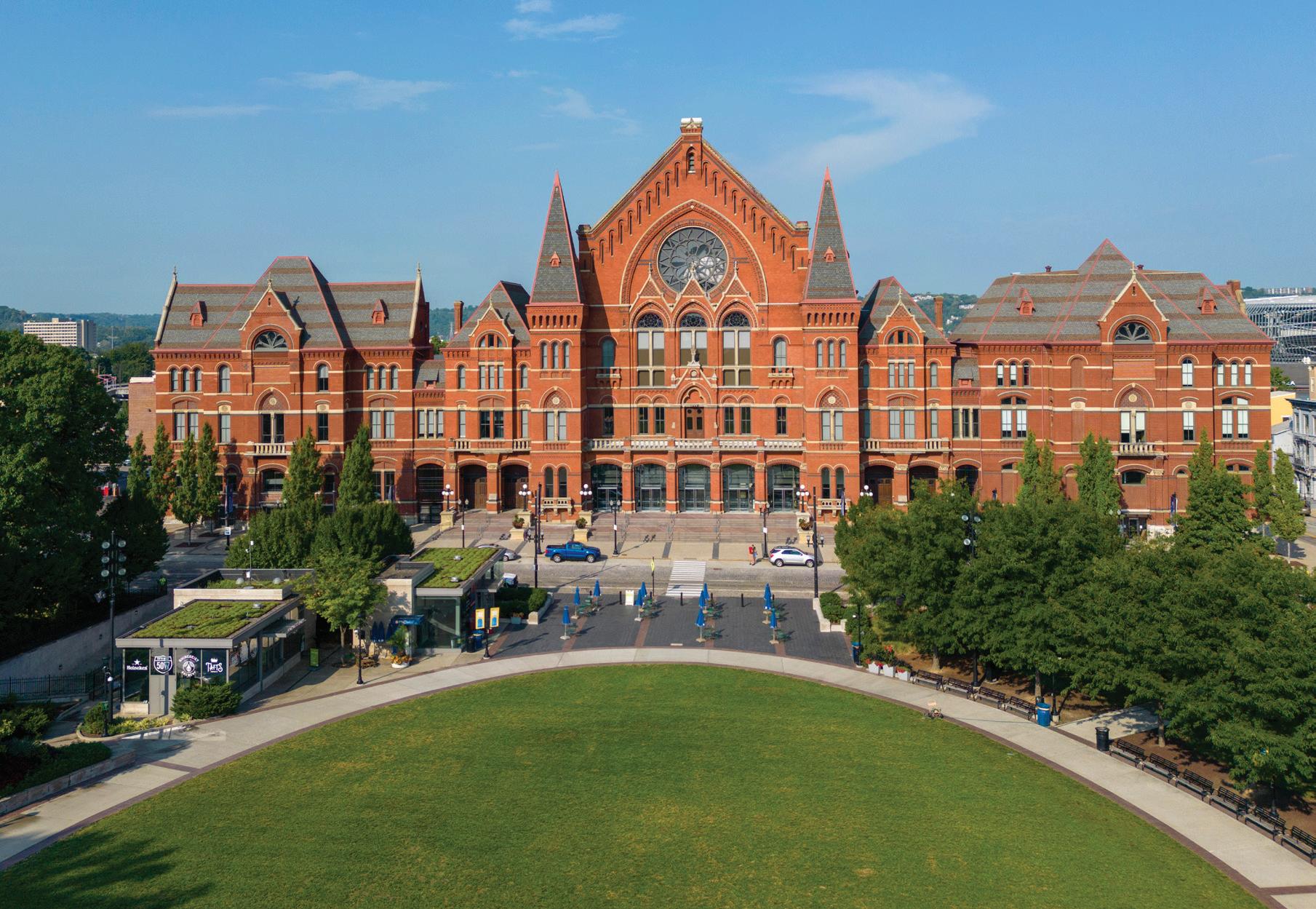
Welcome
©Roger Mastroianni
Dear Friends of Music, Welcome to our 2023–24 season and Louis Langrée’s final season as Music Director of our Orchestra. Although we mark the beginning of each subscription season in the fall, our Orchestra maintains a busy schedule all year long and continues to perform throughout the summer.


This summer was no exception. We partnered with Seven Hills Neighborhood Houses, Cincinnati Recreation Commission, Evanston and East Walnut Hills community councils, Learning Through Art/Jazz Alive, ROMAC, Cincinnati Parks, Price Hill Will, and many others to host five Brady Block Parties at locations throughout Greater Cincinnati, including our first Pride concert in June to celebrate the LGBTQ+ community— the Orchestra’s first performance at the ICON Festival Stage at Smale Park. We celebrated Independence Day with John Morris Russell, the Cincinnati Pops, and talented special guests at Riverbend Music Center with Red, White and BOOM!, a beloved Cincinnati tradition that always culminates with a spectacular fireworks display by Rozzi’s. We performed for Cincinnati Opera’s subscription season, including productions of Lucia di Lammermoor, The Knock, The Barber of Seville and Madame Butterfly We reached thousands of people through performances and community engagement, and we are grateful and energized by the reception we receive in each community.
Our gratitude extends into the start of the CSO and Pops subscription season in September. We open our season with the Cincinnati Pops performing the score to the complete screening of The Princess Bride; a Heroes Symphony featuring music and sync-clips to some of the most famous video games of all time; a dazzling tribute to the music of Stephen Schwartz, with Schwartz at the piano; the return of Broadway star Audra McDonald; and Disney in Concert: The Sound of Magic in celebration of 100 years of The Walt Disney Company.
In September, the CSO performs for a special filming and live recording of Justin Morell’s jazz trumpet concerto All Without Words, a tribute to the composer’s non-verbal autistic son. The event will be a large-scale, world premiere production that embraces music, staging, light, color and multiple artistic disciplines. It is a unique concert experience that we will present for free to the Cincinnati community.
We also mark the beginning of Louis Langrée’s final season as Music Director of our Orchestra. In true Louis fashion, his programs beautifully honor the beginning of his time with us in Cincinnati while looking fervently to the future. In October, our Orchestra led by Louis will perform alongside the finalists of the Nina Simone Piano Competition, emerging star pianists who will undoubtedly shape the future of our industry. Through the American Composers Orchestra’s EarShot program, four composers will be mentored by Louis and have their works performed by the CSO in a public performance. In the same month, we invite George Takei to join Louis and the Orchestra for Aaron Copland’s Lincoln Portrait, inspired by Louis’ first CSO subscription concert of his tenure in 2013, which featured revered author and poet Dr. Maya Angelou and was subsequently recorded for Hallowed Ground, Louis’ first full commercial recording with the Orchestra. And it’s only the beginning.
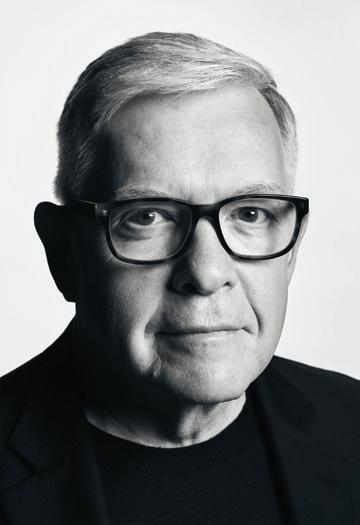
Our 2023–24 season is full of moments to cherish with friends and loved ones, and we encourage you to be a part of the energy that is unique to our Orchestra by attending one or more of our performances this season, donating, volunteering, and amplifying your experiences with us through your favorite social networks.

We are grateful to you for your excitement for what we do. Thank you for joining us this season.
Jonathan Martin
Fanfare Magazine | 9 WELCOME FROM THE PRESIDENT AND CEO
We reached thousands of people through performances and community engagement, and we are grateful and energized by the reception we receive in each community.
Rephrasing the Familiar

This fall, Christian Reif and James Ga gan explore two juggernauts of the repertoire, with a twist
by HANNAH EDGAR
When El Niño rolls through CIncinnati [CSO Proof Nov. 30], Reif will be making his fourth appearance with the orchestra in half as many years.… So, what was intended as an introduction will actually be a reunion—and a very happy one, says Reif.

If you’ve heard John Adams’ El Niño, last heard in Cincinnati at the 2022 May Festival, you know it’s a work that resists easy summary. The emotional heft of Adams’ multilingual opera-oratorio on the Nativity story is matched by its musical forces, meaning they’re massive: soprano, mezzo-soprano, baritone and a trio of countertenors; a full orchestra with guitars and a sampling keyboard; and both an adult chorus and a children’s chorus.
Those specs alone put El Niño well out of reach for most small, and small-budget, ensembles. Conductor Christian Reif and soprano Julia Bullock want to change that. With Adams’ blessing, the husband and wife team created El Niño: Nativity Reconsidered, an hour-long chamber version of Adams’ original, coming to the CSO Proof Series on November 30.
Reif and Bullock first encountered El Niño at The Juilliard School, where they met. The two listened to it together for the first time and were floored.
“We were sitting there [in my apartment] in tears. Since then, we’ve been in love with the piece,” Reif says.
When El Niño rolls through Cincinnati, Reif will be making his fourth appearance with the orchestra in half as many years. But it wasn’t planned that way. Because symphony seasons are plotted out years in advance, Reif’s CSO concerts on September 30 and October 1 were intended to be
CSO FEATURE
Composer John Adams conducts El Niño at the 2022 May Festival. Credit: JP Leong
his orchestra debut. He accidentally ticked that box back in February 2022, subbing last-minute in a program anchored by John Adams’ teeming, 35-minute City Noir. He stepped in again in April 2023 to lead Shostakovich’s Symphony No. 5 and Rachmanino ’s Piano Concerto No. 1, with pianist Stephen Hough.
So, what was intended as an introduction will actually be a reunion—and a very happy one, says Reif.
Rite since his student days at the Mozarteum in Salzburg, Austria. Even so, every performance turns up new surprises and nuances.
“It’s a piece that just keeps on giving. Suddenly, you’re like, ‘Oh, that little piccolo entrance there…’ or, ‘Okay, how do I balance the oboe with the trumpet while everyone else is also playing?’ It’s been a real joy to do that.”
Sep. 30–Oct. 1, Reif and the CSO “will tackle a work that thrills even the hardiest symphony veteran: Stravinsky’s Rite of Spring.”
Reif’s program also features excerpts from Falla’s La vida breve and Prokofiev’s Violin Concerto No. 2 with violinist Clara-Jumi Kang.
“It’s a dream, making music with the Cincinnati Symphony Orchestra,” Reif says. “Both times, we were able to tell a story with the pieces we played. I’ve been lucky to have wonderful experiences everywhere, but I would say it’s been one of the highlights both times. They’re so open, enthusiastic and willing to try out things.”
For the September 30/October 1 program, Reif and the CSO will tackle a work that thrills even the hardiest symphony veteran: Stravinsky’s The Rite of Spring. The ballet, whose 1913 premiere was divisive enough to incite a small riot, has given us one of the most famous concert pieces of all time and become “almost a [box o ce] draw,” to Reif’s amusement. Like so many classically trained musicians, Reif has studied The
Reif’s very terpsichorean program also features excerpts from Falla’s opera La vida breve, which jounces with Spanish dance rhythms, and Prokofiev’s Violin Concerto No. 2, a work Reif has been digging into in recent months.

“The throughline of it all is their groundedness, the feeling of being rooted in the earth,” Reif says.
The Prokofi ev will spotlight German violinist Clara-Jumi Kang in a rare stateside appearance. A “dear friend” of Reif’s, Kang lives close to Reif and Bullock in Munich—in fact, in the same building as Reif’s brother, the concertmaster of the Bavarian Radio Symphony Orchestra, and his wife, piano soloist Alice Sara Ott (who will perform with the CSO in May 2024).

Fanfare Magazine | 11
CSO FEATURE
Christian Reif conducts the Cincinnati Symphony Orchestra in Shostakovich’s Fifth Symphony in April 2023. Credit: Mark Lyons
With a family of musicians, it goes without saying that Lukas, Reif and Bullock’s infant son, will grow up around plenty of music. The couple took time o after Lukas’ birth last fall and found that parenthood changed their approach to, well, everything. Even their El Niño is sounding in new ears.
“We conceptualized it many years ago, when we did not know that we would be parents. But performing it as a parent…. Yeah, that definitely changed it,” Reif says. “This text, and this music, hits di erently on a deep emotional level.”
really, in size and strength. The possibilities are endless in cities like that,” Ga gan says.
Much like Reif’s twist on El Niño, Ga gan’s CSO appearance turns a hulking titan of the canon on its head: an orchestra-only medley from Wagner’s Ring cycle, arranged by the late conductor Lorin Maazel. Maazel no doubt faced an even more daunting assignment than Reif and Bullock when he abbreviated the four-opera cycle— between 15 to 17 hours of music—into an unbroken 75-minute-long compilation. Other conductors have taken a stab at the concept of a concert Ring, like Otto Klemperer and Leopold Stokowski, but Maazel’s version manages to sound most seamless.
“Maazel cleverly, sometimes even with one bar, transitions from one thing to another in a very gentle way. I think even Wagner would have approved,” Ga gan says.
After a pandemic cancelation, in 2025
Ga gan will finally conduct his first opera in the cycle, Die Walküre, at a to-be-announced major company. In the concert version, however, he’s struck by the evocativeness of the Ring’s leitmotifs, or the musical themes that recur throughout the work like signposts.
—James Gaffigan

“Wagner wasn’t someone I’d like to have dinner with. However, you can’t mistake his genius in crafting a piece of music drama—I mean, he was basically doing movies before there were movies,” Ga gan says. “He plants seeds in your brain, little musical germs, and then he brings them back so you’re comfortable. Because that’s what life is, isn’t it? You go away from home, and then you return nostalgically to things that you’ve loved.”
Connecting with Fanfare from Valencia, where he’s music director of the Palau de les Arts Reina Sofía, James Ga gan is also juggling parenthood with podium appointments. He speaks a notch or two softer than usual so as not to disturb his son sleeping nearby, but his excitement over his return to Cincinnati on October 27 and 28 registers loud and clear.
“I think that there are few magical cities in the United States…and Cincinnati is a perfect example of that. It’s the definition of an American city,
Maybe you’ve been curious about the Ring cycle but cowed by its titanic length. Or maybe, in Ga gan’s words, you’re “intimidated by hearing people scream in German, which I don’t blame [you] for.” The Ring Without Words is a rare opportunity to dip into Wagner’s soundworld without taking a full plunge.
Ga gan adds, “For the public and for the musicians, it’s a real event. If you’ve never heard a Wagner opera, this is the perfect way to whet your appetite for that.”

Cincinnati is...the definition of an American city...the possibilities are endless.
CSO FEATURE
Conductor James Gaffigan. Credit: Miguel Lorenzo
The History of the Future
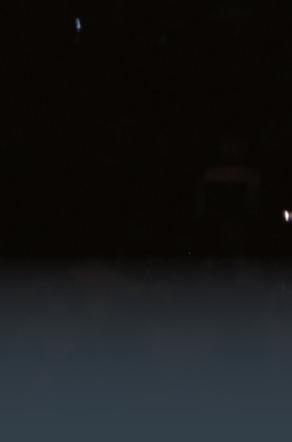
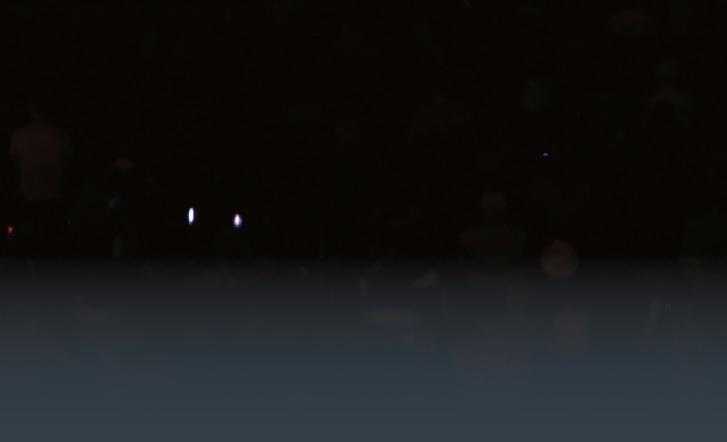
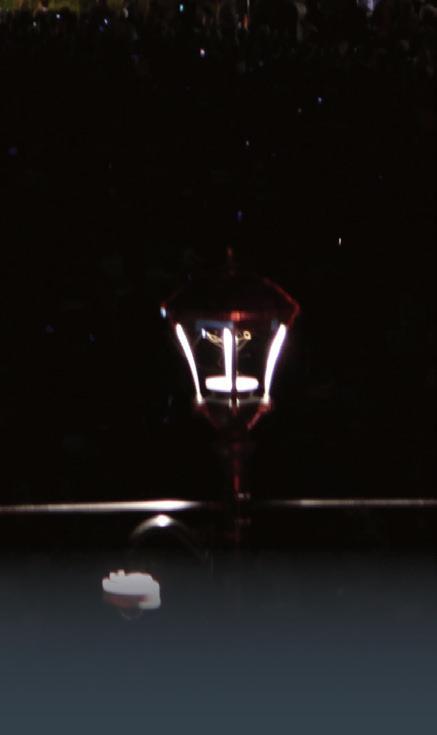


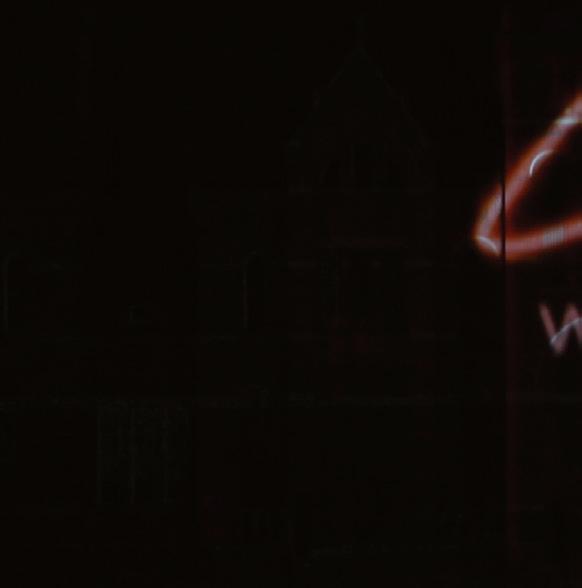
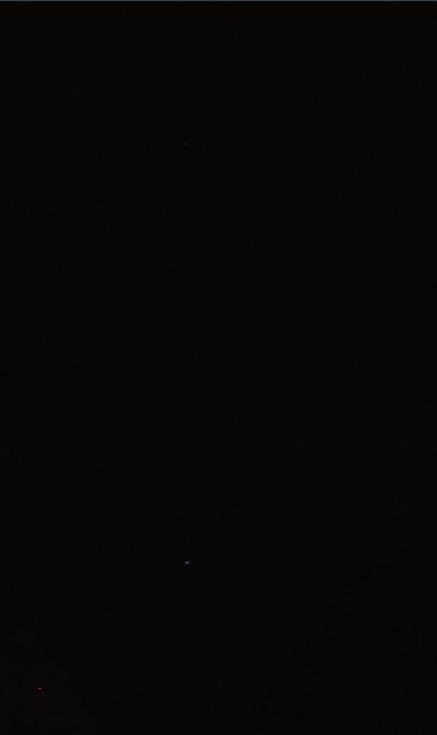

 by KEN SMITH
by KEN SMITH
Celebrating “the history of the future,” as Langrée calls it, has long been the core of the CSO’s identity, with Lincoln Portrait being a prime example. …Langrée’s first time conducting the work was on the Music Hall stage.
Louis Langrée opens his final season as Music Director of the Cincinnati Symphony Orchestra much as he did his first: with a performance of Aaron Copland’s Lincoln Portrait, flanked by pieces showcasing the CSO at its best. Back then, it was Beethoven’s Fifth Symphony and the world premiere of Jennifer Higdon’s On a Wire; this time around, it’s two Bernstein favorites and a rare performance of Florence Price’s Symphony No. 1.
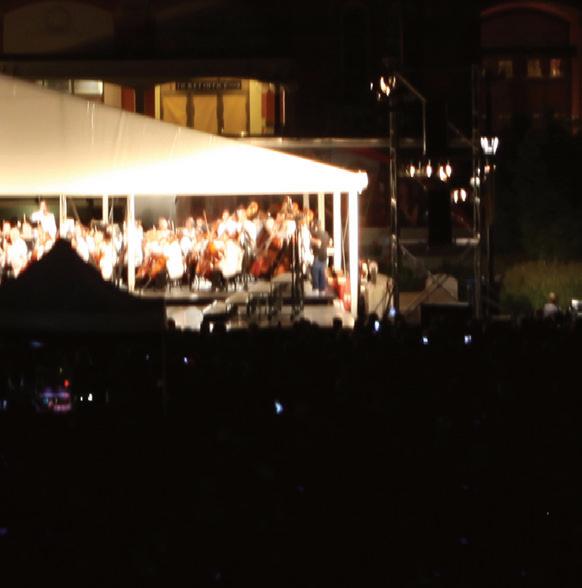
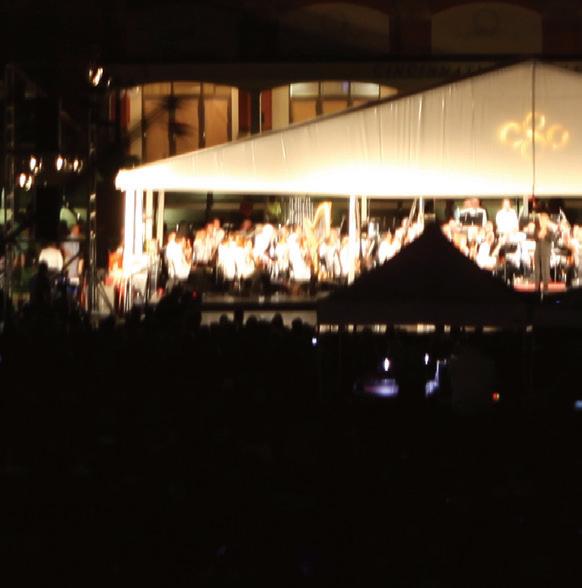
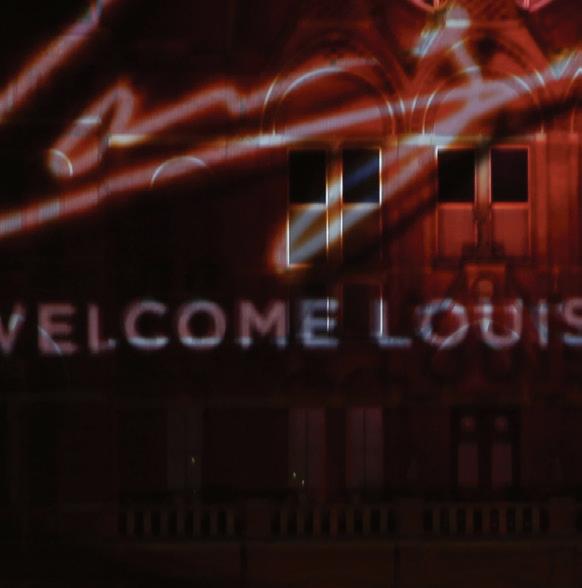
Celebrating “the history of the future,” as Langrée calls it, has long been the core of the CSO’s identity, with Lincoln Portrait being a prime example. Although he later led the piece with the CSO in London, San Sebastian, Edinburgh and Paris (with its narration translated into French), Langrée’s first time conducting the work was on the Music Hall stage. At that performance, the narrator was the celebrated poet Dr. Maya Angelou; this time, Langrée will be working with the legendary actor and activist George Takei, “whose battles for justice and humanity set an example for us all,” Langrée notes.
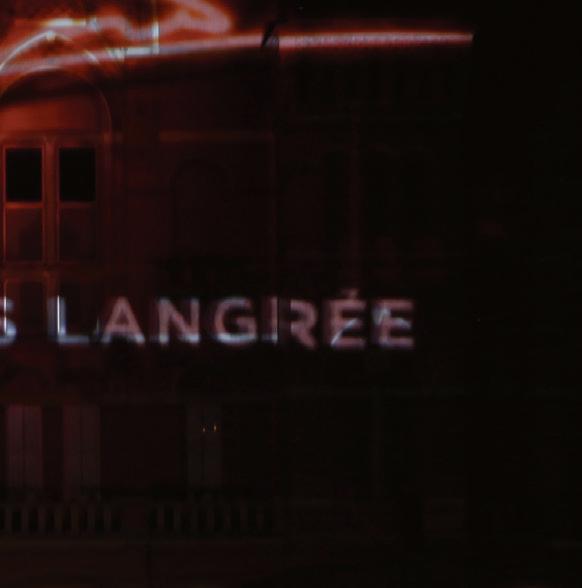
For Langrée, though, the real star remains the Orchestra itself. “It was thrilling to conduct that piece where it first appeared, with the successors of the musicians who premiered it,” he says.
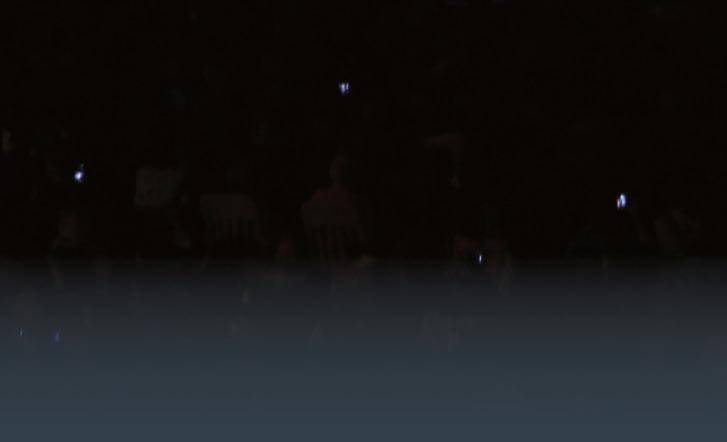
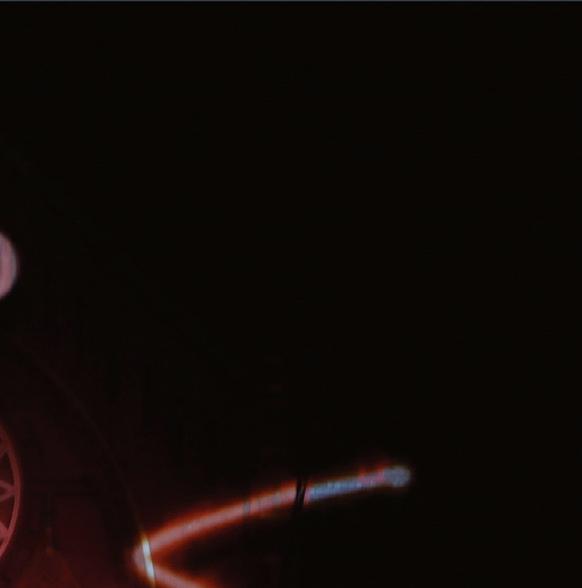
Fanfare Magazine | 13 LOUIS LANGRÉE, Part I
Summer 2013 Lumenocity that welcomed the CSO’s new Music Director Louis Langrée. Credit: Mark Lyons
Like many fruitful relationships, though, this one took time to grow. From the moment previous CSO Music Director Paavo Järvi had announced his departure, Langrée’s name surfaced as a potential successor. But he had not yet conducted the Orchestra, nor was Langrée, happily leading Lincoln Center’s Mostly Mozart Orchestra, particularly looking for a job.
Within a year, however, Langrée made his first appearance with the CSO leading Brahms’ First Symphony in a performance both conductor and musicians still vividly recall. “There was great clarity, an almost vertical conception of the sound,” Langrée says. “But none of that vertical precision sacrificed the horizontal shape or phrasing. At our very first rehearsal, I felt we were speaking the same musical language.”
Patrick “Pat” Schleker, the CSO timpanist during that performance, gives Langrée much of the credit. “Underneath these long solos, the timpani and the violas have maybe six notes to every one of theirs, so we need to pace ourselves,” he says. “Louis conducted the soloists with his right hand and pointed at me or the strings with his left, which made us all listen to each other.”
“There was something about his generosity and respect for the Orchestra that was immediately clear,” says former CSO Concertmaster Tim Lees.

“Whether or not he was on our initial list, he rose pretty quickly after that.”
“We started with at least 75 names,” says Ann Santen, who led the search committee to find Järvi’s successor. “It wasn’t so much choosing as eliminating. Some conductors were interested, but had a family in Europe. Others the Orchestra loved were absolutely hopeless in the administrative side of the job. So as other people dropped o , Louis kept looking stronger and stronger.”
As the dating continued, both sides did due diligence. Search committee members shadowed Langrée at The Metropolitan Opera and the St. Louis and Detroit symphonies, speaking with musicians he’d conducted. Langrée, for his part, turned up in Cincinnati unannounced to get his own feel for the city and the Orchestra. Langrée remained among the final candidates when thenCSO president Trey Devey formally o ered him the position backstage after a performance at Paris’ Théâtre des Champs-Élysées.
“Generally, people choose conductors either because they’re young and promising, or old and experienced,” says Langrée. “Sometimes a conductor has a record label, or other advantages. The only thing we had to talk about was what kind of things we wanted to do together.”
LOUIS LANGRÉE, Part I
Dr. Maya Angelou was narrator for Copland’s Lincoln Portrait, for Louis Langrée’s inaugural concerts with the Cincinnati Symphony Orchestra, November 2013. Credit: Mark Lyons
For the Orchestra, the change on the podium was immediately palpable. “Paavo was a very demanding technician, with a vivid idea of what he wanted,” says Lees, whose 20 years as CSO concertmaster overlapped both conductors. “He’d almost micromanage the way every ‘t’ got crossed and every ‘i’ dotted. Then Louis came in and started talking about things like sound and color, and let individual players take charge. By then, the Orchestra was so secure technically that we were yearning for that kind of inspiration.”
“That doesn’t mean I don’t know what I want,” says Langrée, explaining his approach, “but I feel the need to include the musicians. For me, the more you know a piece, the more open you can be to what others have to o er. Everyone talks about what the conductor wants, less so about what the musicians want. Music directors come and go, but the musicians are the true owners of an orchestra’s tradition.”
Once past the initial honeymoon, the relationship experienced a few early hiccups. “Orchestras don’t usually like to hear conductors talk,” Santen says of those early rehearsals, “and Louis was also very self-conscious about his accent. I’d tell him, ‘Louis, don’t worry. We’re paying you extra for that.’”
“Early on, he’d rely on those of us in front to translate or help him find the right word,” Lees recalls. “He always knew what he was trying to say, and he’d get about 80 percent of it in English. Over time, he grew more comfortable with the language, and we just became used to this being part of his process.”
Santen also recalls Langrée’s early reticence, trying to maintain professional distance by referring to musicians by their instrument. “I said, ‘Louis, those people have names,’” she says. “But the thing was, he knew absolutely everyone there already.” Langrée takes it a step further: “Whenever I study a new piece for another orchestra, I look at the score and hear the CSO musicians.”
Soon, the Orchestra also became aware that “the Mostly Mozart guy” had many interests outside the standard repertory, which smoothly merged into the CSO’s musical byroads. “I’d conducted new pieces before, of course,” Langrée says. “But the dedication to new music in Cincinnati—not just with musicians but with
audiences—was a true inspiration.”


So, too, did Langrée’s early decision to move his family to Cincinnati reveal a strong commitment to the city. For Santen, the mutual embrace
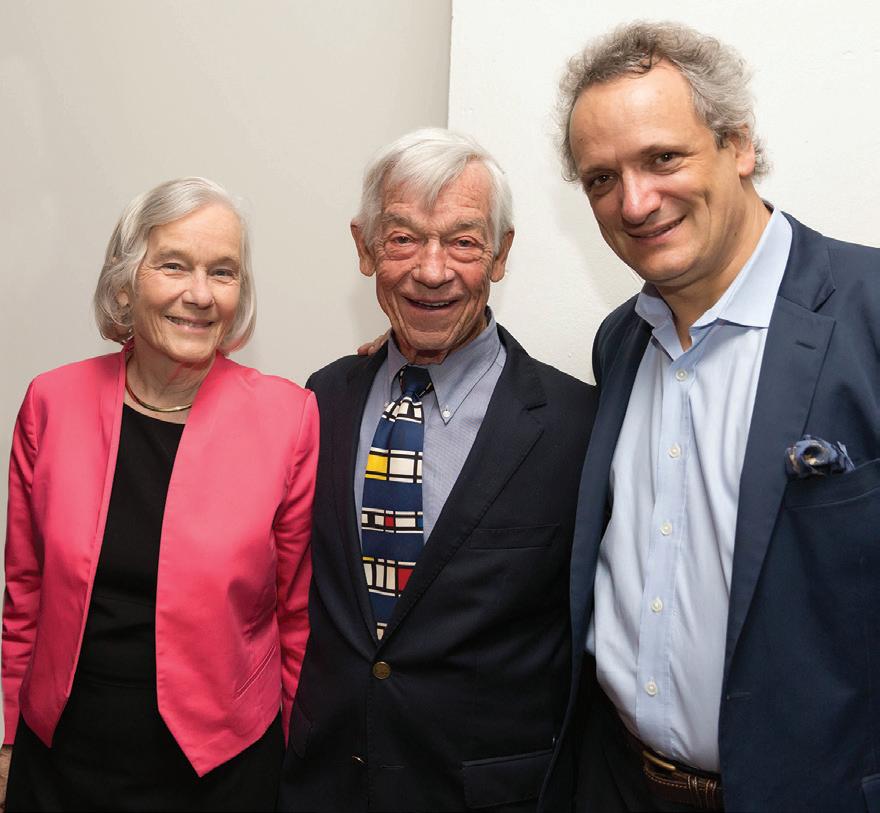
between conductor and community became clear about a year later when he conducted the Orchestra at Walnut Hills High School, where both of his children were playing in the violin section. “For me,” Langrée says, “I really felt I was part of the community when people stopped saying, ‘Welcome to Cincinnati!’”
“Never once, in dealing with the community, did I see him put on the ‘maestro’ shirt,” Santen claims. Schleker likewise noted Langrée’s nature on the podium. “Louis is the most humble music director I’ve ever known,” he says. “Often, when audiences are clapping at the end of a piece, he’ll hold up the score as if to say, this is the real genius you’re applauding.”
Now, after 10 years, with orchestra and leader in their prime comfort zone, the relationship draws to a close. “A musician once told me that the ideal music director is the exact opposite of the one you have—and there’s a certain truth in that,” Langrée says. “One of the CSO’s greatest attributes was that every music director was di erent from his predecessors. Once musicians completely ingest one conductor’s musical values, they need someone who will infuse them with something completely di erent.
“Basically, when you stop in a rehearsal and the musicians already know what you’re going to say, it’s time to leave,” he maintains. “The CSO now needs someone with a new flavor, a new style. And because they’re strong and healthy, they’ll
absorb that, too, without losing their balance.”
LOUIS LANGRÉE, Part I
Fanfare Magazine | 15
Ann and Harry Santen with Louis Langrée at a 2016 donor appreciation event.
Stephen Schwartz + JMR: Opening Doors

 by DAVID LYMAN
by DAVID LYMAN
It seems unthinkable, but the first time Pops conductor John Morris Russell encountered composer Stephen Schwartz, he had no idea who Schwartz was. We can probably forgive JMR, though. It was January of 1973 and he was just 12 years old.
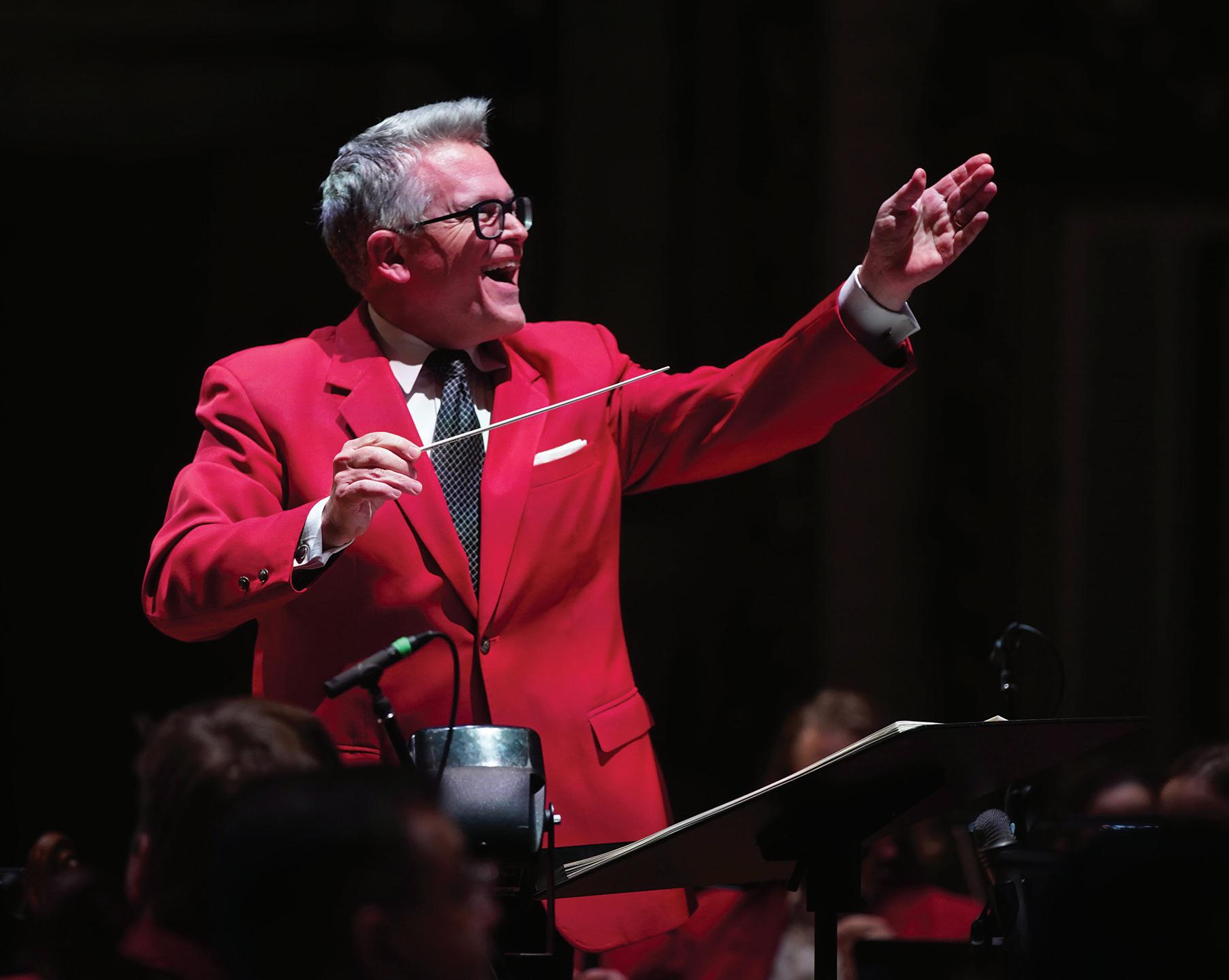
A national tour of Schwartz’s first big musical, Godspell, was performing at Cleveland’s Hanna Theatre, just 20 minutes from JMR’s childhood home in Shaker Heights.
Today, we know of Schwartz as one of the most notable—and successful—composer-lyricists in musical theater history, the creative genius behind Wicked and Pippin, as well as a string of movies that includes Enchanted, Pocahontas, The Hunchback of Notre Dame and The Prince of Egypt
But back in 1973, JMR had no idea of what he was in for.
“It was a Saturday matinee says JMR, “and we all piled into the Plymouth Satellite to go downtown.”
This was completely new territory for Russell—his very first live professional theater performance.
“I had no idea what this whole thing was about,” recalls Russell. “I had never even heard of Godspell. But I had a funny feeling it was going to be about Jesus.”
16 | 2023–24 SEASON
“The show [Godspell] opened up this huge door that I never knew existed. …it was one of those big moments for me.”
—John Morris Russell
John Morris Russell leads the Cincinnati Pops in Ragtime in Concert, April 2023.
Credit: Mark Lyons
Well, he was right about that much. Godspell, which began as a student project at Pittsburgh’s Carnegie Mellon University, is structured as a series of parables primarily based on the Gospel of Matthew. It was unlike any other show running at the time. There were no big tap numbers or extravagant sets. Instead, the music was decidedly contemporary, with melodies that could have been lifted from Top 40 radio. And the costumes were purposefully raggedy, leaving the actors looking like recent graduates from Clown College.
Godspell had just 10 characters. And although the storyline inevitably ends with the betrayal and crucifixion of the Christ character, it is a supremely joyful show, reveling in the jubilance of its stories.
“I was just weeping at the end,” says Russell. “The show opened up this huge door that I never knew existed. In terms of emotional content, it was one of those big moments for me. It took these dusty old stories from thousands of years ago and made them into NOW. It was a real awakening for young me.”
Russell stops talking for a moment. The silence stretches on. Clearly, he is moved by the memory of that first Godspell. Finally, he is composed again and continues.
“You can probably tell that I’m getting all choked up about this,” he says. “But the thing is, now I’m coming full circle, getting to meet THE guy—Stephen Schwartz. I’m both thrilled and humbled.”
Schwartz will join Russell and the Cincinnati Pops September 22–24, for a trio of Music Hall concerts opening the 2023–24 season.
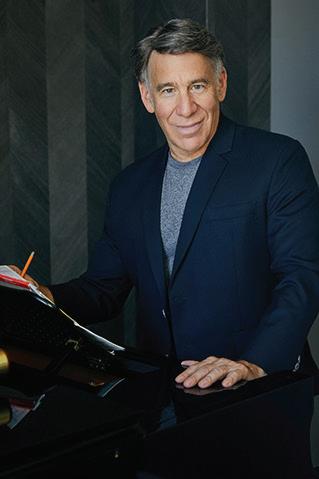

Schwartz is not usually known as a performer. He’s supposed to be the guy behind the piano, nudging singers along as they wow audiences with the songs he has written for the stage, for films and choruses—even one opera. Early in his career, he even wrote most of the lyrics for Leonard Bernstein’s MASS. His creative output has been enormous. And enormously successful.
Consider the awards he has collected on his way to becoming one of his generation’s most-lauded composer-lyricists: three Academy Awards, four Grammys and four Drama Desk Awards. He’s a member of the American Theatre Hall of Fame, as well as the Songwriters Hall of fame.
And he’s not done.
“I’m working on two new projects right now,” he says. “Both of them have been announced, so I suppose I can say something about them. The first is a musical based on a 2012 documentary called
The Queen of Versailles. We’ve done a couple of workshops already.”
Kristin Chenoweth, who starred as Glinda in the original production of Wicked, is slated to star in the title role.
“The other one is about the painter Pablo Picasso and the creation of the painting Guernica,” he adds. Actor Antonio Banderas is scheduled to star as Picasso.
But those are for the future. At the time we’re speaking by phone, he is sitting in a production trailer in the middle of a huge field on the outskirts of Ivinghoe, UK, a village of 965 people 33 miles northwest of London.
He’s there to help with the filming of Wicked, which stars Cynthia Erivo, Ariana Grande, Je Goldblum and Michelle Yeoh.

“We already filmed a lot of it on soundstages closer to London,” explained Schwartz. “But the sets they built here were simply too big for the soundstages. They are immense.”
He peers out a window and starts to describe the sets for Munchkinland and the Emerald City. But trying to capture it all in just a few words proves too much for him. “It is just kind of overwhelming,” he laughs. “I was unprepared for the meticulousness of detail on the part of the
Fanfare Magazine | 17 POPS FEATURE: Schwartz + JMR
Stephen Schwartz
art department. Even the labels on bottles that you will never see are filled with incredible detail. They’re decorated with Ozian things and expressed in Ozian language. I’m pretty flabbergasted. It’s mindboggling.”
With some luck, though, Wicked filming will be complete by the time he joins with Maestro Russell and the Pops in September.
Schwartz used to do appearances like the one in Cincinnati more frequently. But as he’s become busier (and older—he’s 75 now), these evenings have become much more rare. “I haven’t done one for quite a while,” he says. “And that’s too bad because I really enjoy them.
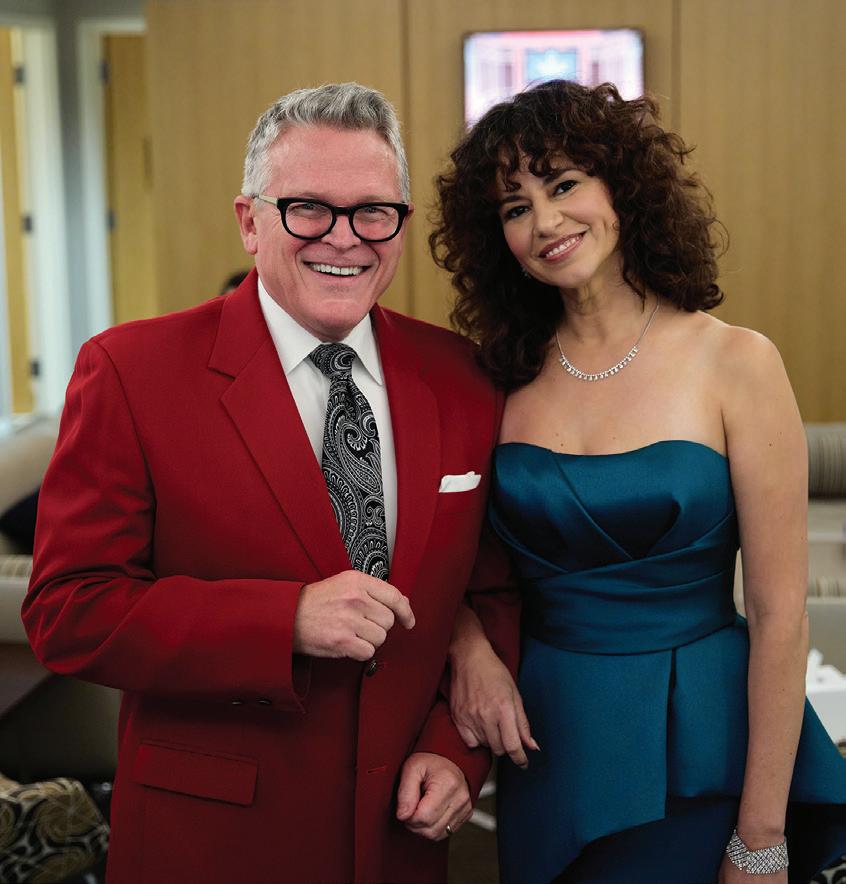
Theater is a living, breathing organism. Every time you perform in front of an audience it’s a di erent experience. As a performer, I think it’s a much more profound experience than performing on film. And I think it is for the audience, too. So when Scott Coulter (singer and University of Cincinnati College-Conservatory of Music grad) came to me several months ago and said we have this opportunity in Cincinnati, it sounded like something really enjoyable to do. And so, here we are.”
One of Schwartz’s Godspell songs—“Beautiful City”—unexpectedly became something of an inspirational and optimistic anthem for people in the wake of the 9/11 attacks. He had rewritten the lyrics in the 1990s, but he had no idea that the song would become such a comfort to people at a time of national grieving.
Here are a few of those “Beautiful City” lyrics:
Out оf thе ruins аnd rubblе,
Out оf thе smоkе,
Out оf оur night оf strugglе
Cаn wе sее а rаy оf hоpе?
Onе pаlе thin rаy
Rеасhing fоr thе dаy…
Wе саn build
A bеаutiful сity, Yеs, wе саn (Yes, we can).
Wе саn build

A bеаutiful сity.
Nоt а сity оf аngеls, But wе саn build а сity оf mаn.
“Interestingly, I had rewritten the song after the Los Angeles riots in 1992,” says Schwartz. “I wrote them to be performed as a benefit to raise money to rebuild South Central L.A. It became a very di erent song then. When 9/11 happened and New York was trying to recover from that, people started singing it and…it was an organic thing. I certainly didn’t push it. People just found it. And it gave them solace.”
A few last words from Maestro Russell.
“American musical theater has produced many fine composers and lyricists. But in Stephen Schwartz’s case, it goes beyond the music and the tunes. His songs have so much thoughtfulness and nuanced storytelling. The genius of Godspell is its timelessness.”
“For me, that first time seeing Godspell was lifechanging. Like all of his shows, he takes some very uncomfortable truths about the human condition and helps us all to come to grips with them.”
Listen to Schwartz discussing and performing two versions of “Beautiful City” by searching “Stephen Schwartz—Stephen Schwartz performs ‘Beautiful City’: Evolution of a Song” on YouTube.
As JMR told us when this 2023–24 Pops season was announced, “I guarantee you that this will be one of those performances you’ll tell your children and grandchildren about. This sort of concert is what Cincinnati’s Music Hall has always been about. Look at the people who have performed here— Richard Strauss and Rachmanino , Miles Davis and Ella Fitzgerald, Janis Joplin, Johnny Cash. It’s part of the legacy of our hall—it’s a place where the greatest performers and composers share their music with us.”
POPS FEATURE: Schwartz + JMR
JMR with Mandy Gonzalez, who starred as Elphaba in a Broadway production of Wicked. She joined JMR and the Pops for the Hear Me Roar concerts in 2022. Credit: JP Leong
PIANO C OMPETITION
FO R

AFRICAN AMERICAN PIANISTS
The Heart of the Piano: The Nina Simone Piano Competition Concerto Finals
by ERICA REID
On October 6, the Cincinnati Symphony Orchestra and partner organization The Art of the Piano will present a concert featuring the three finalists of the inaugural Nina Simone Piano Competition. At the conclusion of the evening, prizes and medals will be awarded, with the Gold Medalist and Grand Prize Winner receiving $50,000 and performance opportunities.

Acclaimed pianist Awadagin Pratt—who himself won the Naumburg International Piano Competition at a young age, launching his formidable career—helms The Art of the Piano as well as this new piano competition, which shines the spotlight exclusively on African American pianists. In creating the competition, Pratt was inspired by the inroads laid by the Sphinx Organization, which has been creating opportunities for and fostering the careers of up-and-coming Black and Latine string musicians in classical music since 1997. (The Nina Simone Piano Competition is also supported by a grant from Sphinx.)
“I just felt like somebody needs to have a place to showcase these African American pianists, and to showcase the fact that a lot of them are versatile,” says Pratt. “The competition has allowed the pianists to demonstrate skills in improvisation and arranging that are not generally showcased at all in competitions.”
Pratt has known CSO President and CEO Jonathan Martin since the 1990s, when the two crossed paths at the Atlanta Symphony Orchestra. Says Martin, “I came to know [Pratt’s] energy, his artistry, and his view on the world, and we shared a lot of the things in common about the need to create change in our field.” Martin says it felt like a natural step for the CSO to collaborate with Pratt on the competition, adding that Music Director Louis Langrée also saw the competition’s vision from the beginning. “It just came together very naturally,” he says.
“It’s incredible to have the Cincinnati Symphony as a partner,” adds Pratt, suggesting that the collaboration “elevates the stage that these young people are going to have the opportunity to perform on.”
CSO audiences can expect pyrotechnics at the Finals concert, as the three finalists each perform a piano concerto chosen to showcase their talents—an unconventional but thrilling format for a classical concert. Clayton Stephenson, who has already made a name for himself as a finalist (and the first Black finalist at that) at the esteemed Van Cliburn

SPOTLIGHT
Fanfare Magazine | 19
Nina Simone
International Piano Competition, performs Tchaikovsky’s Piano Concerto No. 1; Joshua Mhoon has chosen Rachmanino ’s Piano Concerto No. 2; and Kayden Kelly will perform Liszt’s Piano Concerto No. 1. “We’re lucky we didn’t end up with two of the same [concerto], which could have happened,” Pratt points out (it has occurred at other competitions). Instead, the audience on October 6 will be treated to three beloved jewels of Romantic piano repertoire, performed by some of today’s brightest rising stars.
“All three are very di erent in how they address the audience, and very professional, but they just have their own ways of being,” Pratt says of his finalists. He calls Kayden Kelly a “wild card”—while Kelly’s other two competitors came from the Artist Division for entrants ages 18 and up, Kelly was selected from the Senior Division for ages 14–18. Pratt was impressed by Kelly from his first video audition. “He played strongly from the beginning of the competition but really came into his own as the rounds progressed, in terms of how he was projecting himself on stage,” Pratt reports.
And competitors Clayton Stephenson and Joshua Mhoon? They are “the full deal,” according to Pratt. “They have the technical firepower, and their musical artistic profiles and sensibilities are pretty well defined: how they think about things, how they feel things, how they communicate. And it’s great that they’re just so completely di erent, right? So it’s just exciting.”
All three [finalists] are very different in how they address the audience, and very professional, but they just have their own ways of being.
—Awadagin Pratt
Nina Simone would likely be proud of the competition bearing her name, even if she were frustrated by the societal circumstances that, decades after her passing, still called for this type of ground to be broken for African American musicians. “The power of seeing someone like you [on stage] is an old story,” says Pratt. “While these young people have seen me, they’ve seen André Watts, there hasn’t been su cient volume. Then they’re in school and it’s just one or two of them and they can’t feel comfortable talking about their experiences. And they have experienced racism.”
When Pratt was settling on a name for the nascent competition, he happened across an article about singer, songwriter and pianist Nina Simone. “She was training to be the first Black concert pianist, and that dream just didn’t happen,” Pratt recalls. “That got my attention.” Pratt knew that Simone’s name recognition would bolster the competition, but to him the name signaled more. “Everybody knows Nina Simone, and she was also politically active. So you have this great artist with political experience speaking her mind, and for change.” That aligned with Pratt’s goals for the competition, and Simone’s estate agreed.
The Nina Simone Piano Competition Concerto Finals is more than a showcase for excellent music, it is a unique opportunity for talented but historically marginalized musicians to access a powerful platform for performance, a community of peers, a network of mentorship, and much more.
“Where do we need to light the fuses in our work as an orchestra to become more relevant?” asks Martin. “And not just relevant nationally, but more importantly, relevant in the community?
I think every arts organization, certainly every classical arts organization, ought to be asking themselves that question.”

Awadagin Pratt and the CSO are asking the question, and, on October 6, audiences can hear part of the answer for themselves.

SPOTLIGHT:
Piano Competition
Nina Simone
Awadagin Pratt
Expanding the Canon: CSO and EarShot Collaborate
to Nurture
Today’s Composers
by ERICA REID
One challenge that contemporary orchestral composers face is the near-impossibility of fully workshopping their music before its first performance. Many composers lean on popular tools such as the music notation software Sibelius to synthesize the music they are writing, but most do not have the opportunity to hear their music performed by a full symphony orchestra until the dress rehearsal, at which point there is only time for minor tweaks and revisions.
Enter EarShot, a 25-year-old program of the American Composers Orchestra (ACO), which bills itself as “the first ongoing, systematic program for developing relationships between composers and orchestras on a national level.” ACO Director of Artist Equity Loki Karuna describes the EarShot Readings program as creating a “front door” for composers to engage with orchestras. “Getting this opportunity to really interface with orchestras, to hear their music realized live and in the moment, and also to practice engaging with conductors and musicians for feedback about what does work, what doesn’t work—it’s really a unique aspect of the EarShot Readings,” he says.
On October 4, the CSO will collaborate with EarShot on a public performance of four brand new pieces of music by emerging and early-career composers, selected from roughly 400 entries. “There is no fee to apply, and there’s also no age limit, which is something that we’re very proud of,” says Karuna, explaining that the chief criterion is that selected composers cannot have had more than two previous works performed by professional orchestras. “We’re identifying a lot of really talented composers who just haven’t been given the chance,” he says. ACO narrows the pool to 25–40 finalists, and the partner orchestra—in this case the CSO—participates in selecting the final four.
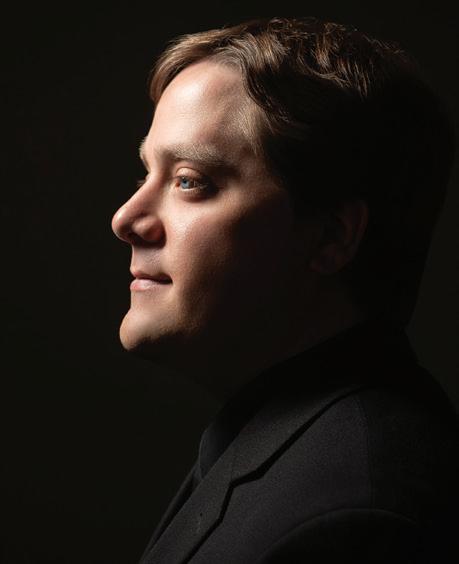
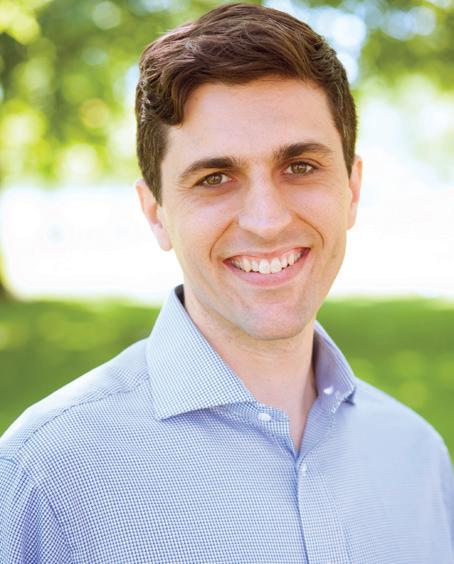
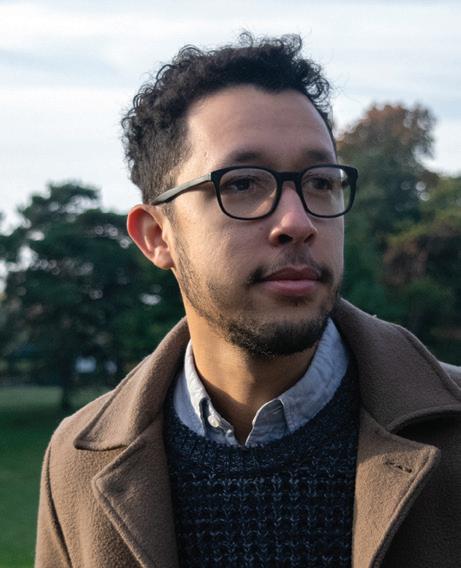

Karuna is thrilled about October’s composers and their music. Audiences will hear Leyou Wang’s Impressions from Tianqiao, inspired by sounds and aesthetics from his native China; Martin Hebel’s Radiant Pillars, which plays at the intersection of music and astronomy; Giuseppe Gallo-Balma’s Los Huesos de Yayael, which is rooted in Dominican and Haitian folklore and includes traditional voodoo drumming; and Joseph Sowa’s Summer Has Ten Thousand Stars, inspired by what Karuna calls “two skyward-viewing poems.” He adds, “We are extremely excited not only about the diversity of who we
Read more about the composers and their pieces on pp. 53–55.

Fanfare Magazine | 21
SPOTLIGHT
EarShot features composers (from top) Giuseppe Gallo-Balma, Martin Hebel, Joseph Sowa and Leyou Wang.
platform, but also the diversity of thought and approach when it comes to what audiences will ultimately hear from the stage.”
“This, I hope, is a marker that we, as an institution, take our role in the field seriously,” says CSO President and CEO Jonathan Martin about this partnership. “The Cincinnati Symphony Orchestra has had a long history of nurturing, primarily through commissioning, young composers or composers whose voices have not readily had a place.” He continues, “It’s our obligation to do so, but it also creates exciting programs.”
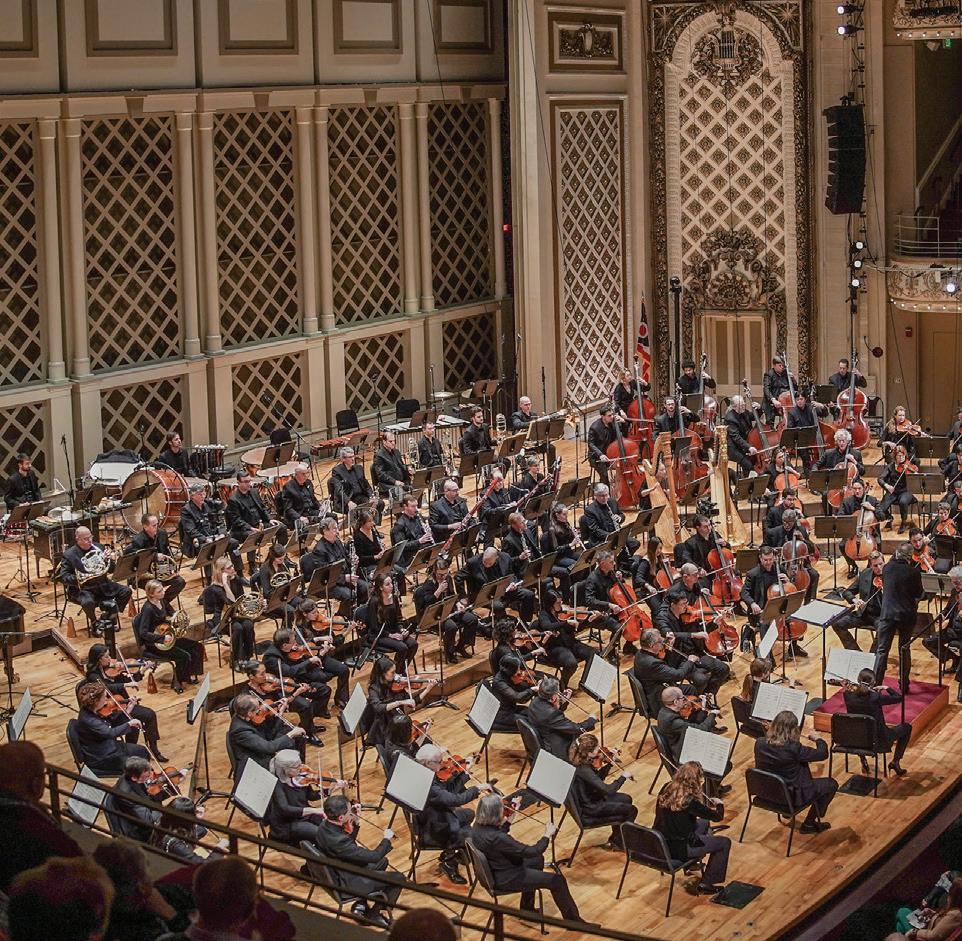
Martin says he was attracted to EarShot’s work as a result of the “incredible energy” of the President & CEO of American Composers Orchestra, Melissa Ngan. “She and I quickly found that we shared a lot in common,” he says. “We’re both interested in creating change within orchestras and in the industry of classical music.”
Ngan agrees, calling Martin an optimist like herself. “From my perspective, we [ACO] are here to take care of the next 50 years of American orchestral music, and to make sure that it is vibrant and beautiful,” she says. Ngan believes not only in creating career opportunities for composers, but also giving them a healthy platform through which to create their most
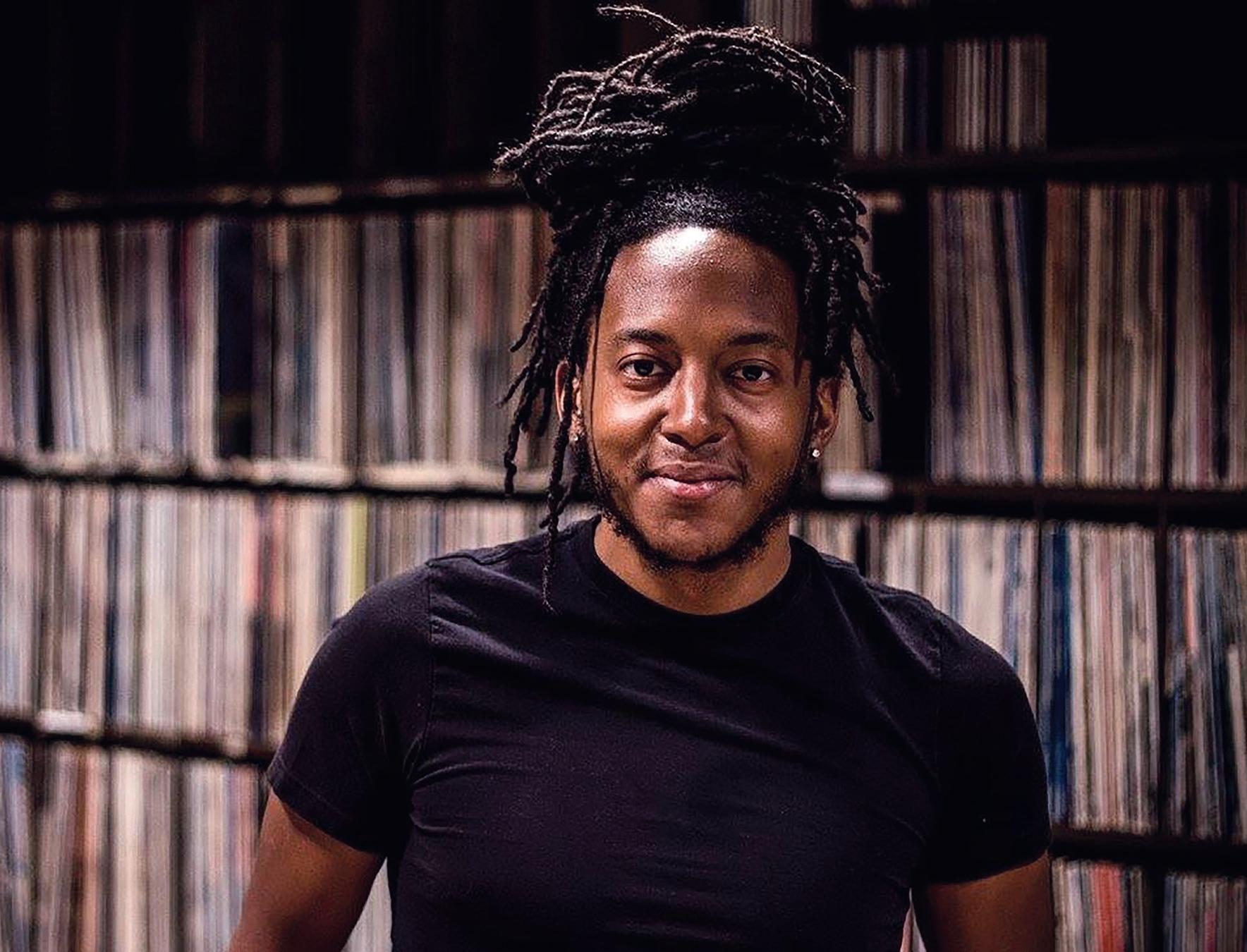
22 | 2023–24 SEASON
SPOTLIGHT: EarShot
Loki Karuna, American Composers Orchestra Director of Artist Equity.
Music to MOVE YOU. CREATE YOUR OWN EXPERIENCE filled with special moments from the music you love. — Choose ANY 4 OR MORE CSO CONCERTS & SAVE! cincinnatisymphony.org/create
Credit: Devon Fails
authentic work. To do so, she wants not only to invite new composers into the space but also question what happens once they get there, to examine whether the processes are serving both the composers and the orchestras at large. “A lot of what we think about is the continuum of care that has to exist from a composer’s first intersection with an orchestra to when they actually gain momentum in their career,” she explains, pointing out that other programs within EarShot provide support and guidance around public speaking, program design, publishing contracts and beyond. “We want to make sure that composers have everything they need to be great partners to orchestras, and vice versa, because it really is an ecosystem. It’s both ways.”




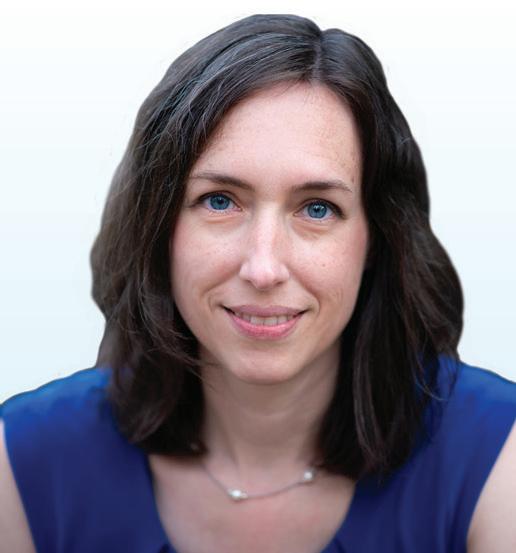

Programs like EarShot benefit composers tremendously. Martin, who also studied composition in college, notes that composers often lack opportunities to hear their music in real time, receive feedback from conductors and section principals, and make adjustments to their work as a result. “It enriches the whole writing experience,” he confirms. “I wish there had been something like that in my school. It’s a laboratory, and there was probably some version of this a

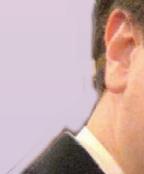



hundred years ago, but I’d like to see more of this happening in our field.”
































































































Martin believes that the CSO is an ideal orchestra to take on a collaboration such as EarShot, pointing out that the CSO musicians—many of whom are also teachers—fully understand and embrace the importance of this developmental work and create a friendly, supportive environment for the visiting composers. “[EarShot] creates better composers, and I think it creates better orchestras,” he says. “And it creates better [musical] works, because the goal of this is to expand the canon, to expand the palette.”

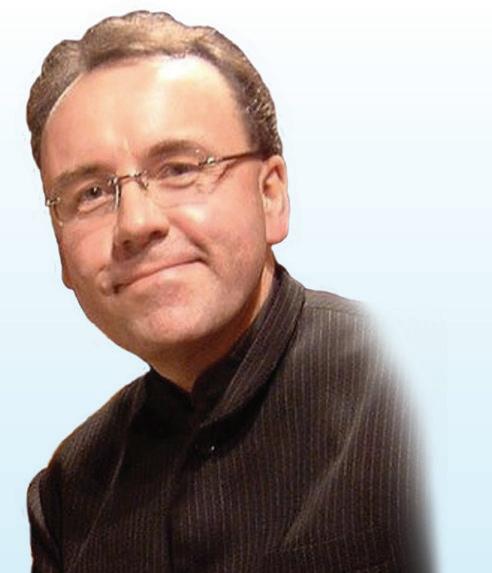

The CSO’s EarShot Readings take place October 3–4 and culminate with a public concert on October 4 at Music Hall, led by CSO Associate Conductor Samuel Lee and CSO Assistant Conductor Daniel Wiley. According to Karuna, audience members can expect both EarShot sta and the composers themselves to speak from the stage about the music being presented. This EarShot collaboration is an unmissable experience that boldly challenges industry norms by putting the compositional process front and center while providing a showcase for the upcoming voices of the symphonic artform.

Fanfare Magazine | 23
SPOTLIGHT: EarShot 202023-2024 20th
Wesley
Children’s Concert October 15, 2023 2:00pm
February 18, 2024 3:00pm
Anniversary Season
Hall
David
Briggs Silent Film
April 20, 2024 7:30pm Paul Jacobs September 17, 2023 4:00pm Learn More! Hyde Park Community UMC | (513) 871-1345 | 1345 Grace Ave., Cincinnati, OH 45208
Kentucky Symphony Orchestra with Brenda Portman

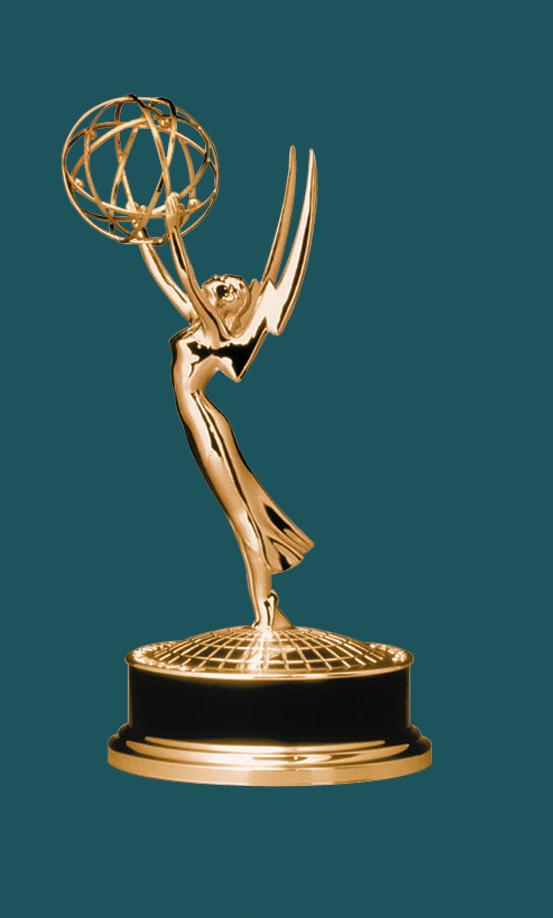
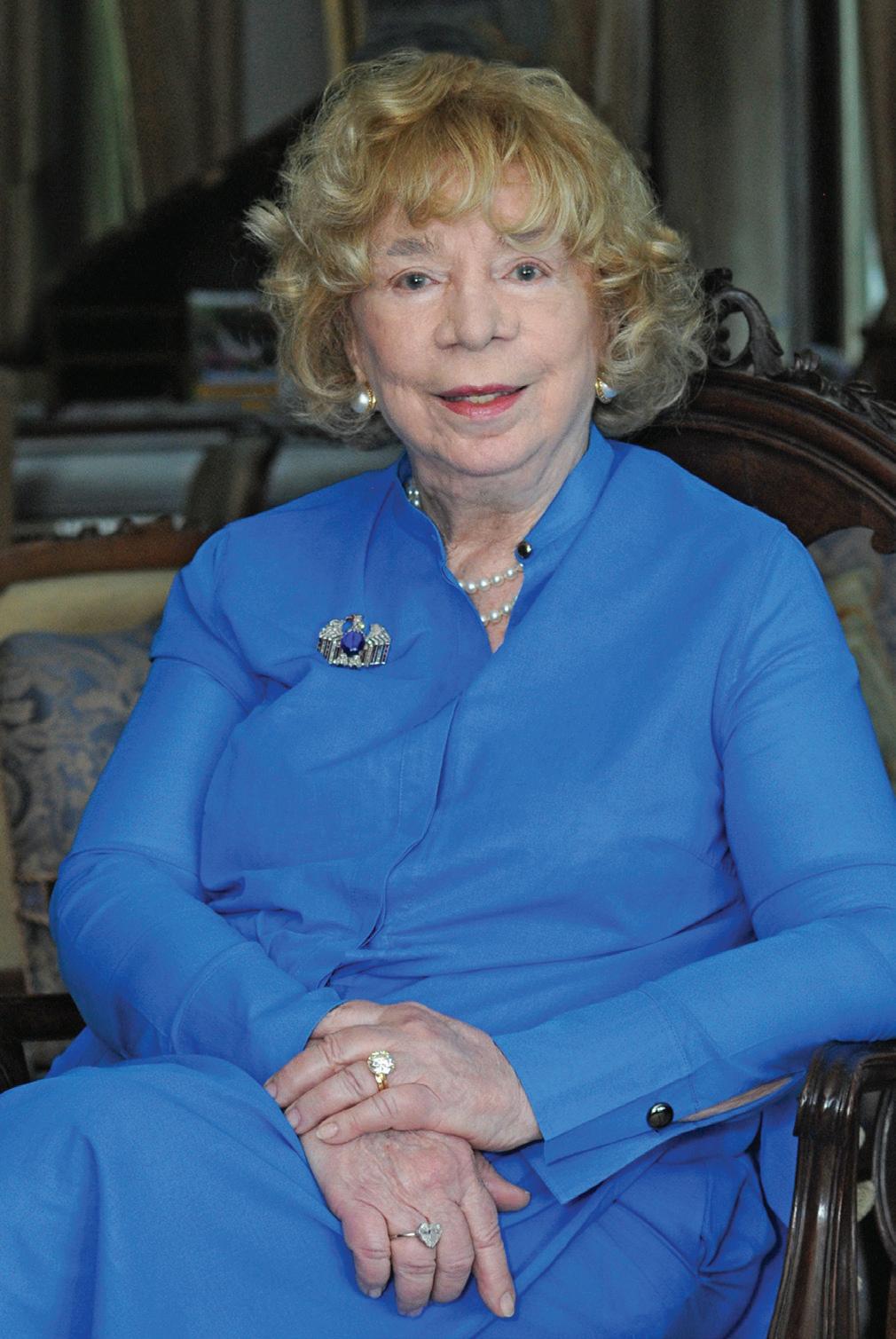

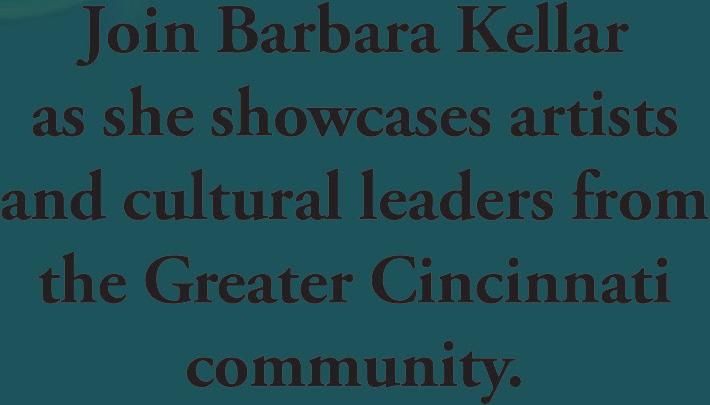
Award Winner Regional - Interview/Discussion Program SATURDAY 6:30PM CET SUNDAY 8:30 PM CET ARTS Join Barbara Kellar as she showcases artists and cultural leaders from the Greater Cincinnati community. www.CETconnect.org
Emmy
LOUIS LANGRÉE, Music Director
Louise Dieterle Nippert & Louis Nippert Chair
JOHN MORRIS RUSSELL, Cincinnati Pops Conductor
Louise Dieterle Nippert & Louis Nippert Chair
Matthias Pintscher, CSO Creative Partner
Damon Gupton, Pops Principal Guest Conductor
Samuel Lee, Associate Conductor
Ashley and Barbara Ford Chair
Daniel Wiley, Assistant Conductor
Ashley and Barbara Ford Chair
FIRST VIOLINS
Stefani Matsuo
Concertmaster
Anna Sinton Taft Chair
Felicity James
Associate Concertmaster
Tom & Dee Stegman Chair
Philip Marten
First Assistant Concertmaster
James M. Ewell Chair++
Eric Bates
Second Assistant Concertmaster
Serge Shababian Chair
Kathryn Woolley
Nicholas Tsimaras–
Peter G. Courlas Chair++
Anna Reider
Dianne & J. David Rosenberg Chair
Mauricio Aguiar§
Anne G. & Robert W. Dorsey Chair
Minyoung Baik
James Braid
Marc Bohlke Chair given by Katrin & Manfred Bohlke
Rebecca Kruger Fryxell
Cli ord J. Goosmann & Andrea M. Wilson Chair
Gerald Itzko
Jean Ten Have Chair
Charles Morey†
Luo-Jia Wu
[OPEN]
Jo Ann & Paul Ward Chair
SECOND VIOLINS
Gabriel Pegis
Principal
Al Levinson Chair
Yang Liu*
Harold B. & Betty Justice Chair
Scott Mozlin**
Henry Meyer Chair
Kun Dong
Cheryl Benedict
Evin Blomberg§
Rachel Charbel
Ida Ringling North Chair
Chika Kinderman
Hyesun Park
Paul Patterson
Charles Gausmann Chair++
Stacey Woolley
Brenda & Ralph Taylor Chair++
VIOLAS
Christian Colberg
Principal
Louise D. & Louis Nippert Chair [OPEN]*
Grace M. Allen Chair
Julian Wilkison**
Rebecca Barnes§
Christopher Fischer
Stephen Fryxell
Melinda & Irwin Simon Chair
Caterina Longhi
Gabriel Napoli
Denisse Rodriguez-Rivera
Dan Wang
Joanne Wojtowicz
CELLOS
Ilya Finkelshteyn
Principal
Irene & John J. Emery Chair
Daniel Kaler
Acting Associate Principal
Ona Hixson Dater Chair
Norman Johns**
Karl & Roberta Schlachter
Family Chair
Nicholas Mariscal§
Hiro Matsuo
Laura Kimble McLellan Chair++
Theodore Nelson
Peter G. Courlas–
Nicholas Tsimaras Chair++
Alan Ra erty
Ruth F. Rosevear Chair
[OPEN]
Marvin Kolodzik & Linda S. Gallaher
Chair for Cello
BASSES
Owen Lee
Principal
Mary Alice Heekin Burke Chair++
[OPEN]*
Thomas Vanden Eynden Chair
Stephen Jones**
Trish & Rick Bryan Chair
Boris Astafiev§
Luis Arturo Celis Avila
Gerald Torres
Rick Vizachero
HARP
Gillian Benet Sella
Principal
Cynthia & Frank Stewart Chair
FLUTES
Randolph Bowman
Principal
Charles Frederic Goss Chair
Henrik Heide*
Haley Bangs
Jane & David Ellis Chair
PICCOLO
Rebecca Pancner
Patricia Gross Linnemann Chair
OBOES
Dwight Parry
Principal
Josephine I. & David J. Joseph, Jr. Chair
Lon Bussell*
Stephen P. McKean Chair
Emily Beare
ENGLISH HORN
Christopher Philpotts
Principal
Alberta & Dr. Maurice Marsh Chair++
CLARINETS
Christopher Pell
Principal
Emma Margaret & Irving D. Goldman Chair
Joseph Morris*
Associate Principal and E-flat Clarinet
Robert E. & Fay Boeh Chair++
Ixi Chen
Vicky & Rick Reynolds Chair in honor of William A. Friedlander
BASS CLARINET
Ronald Aufmann
BASSOONS
Christopher Sales
Principal
Emalee Schavel Chair++
Martin Garcia*
Hugh Michie
CONTRABASSOON
Jennifer Monroe
FRENCH HORNS
Elizabeth Freimuth
Principal
Mary M. & Charles F. Yeiser Chair [OPEN]*
Ellen A. & Richard C. Berghamer
Chair
Molly Norcross**
Acting Associate Principal

Sweeney Family Chair in memory of Donald C. Sweeney
Lisa Conway
Susanne & Philip O. Geier, Jr. Chair
Duane Dugger
Mary & Joseph S. Stern, Jr. Chair
Charles Bell
Donald & Margaret Robinson Chair
TRUMPETS
Anthony Limoncelli
Principal
Rawson Chair
Douglas Lindsay*
Jackie & Roy Sweeney Family Chair
Alexander Pride†
Otto M. Budig Family
Foundation Chair++
Christopher Kiradjie
TROMBONES
Cristian Ganicenco
Principal
Dorothy & John Hermanies
Chair
Joseph Rodriguez**
Second/Assistant Principal Trombone
Sallie Robinson Wadsworth & Randolph L. Wadsworth Jr. Chair
BASS TROMBONE [OPEN]
TUBA
Christopher Olka
Principal
Ashley & Barbara Ford Chair
TIMPANI
Patrick Schleker
Principal
Matthew & Peg Woodside Chair
Joseph Bricker*
Morleen & Jack Rouse Chair
PERCUSSION
David Fishlock
Principal
Susan S. & William A. Friedlander Chair
Michael Culligan*
Joseph Bricker
Morleen & Jack Rouse Chair
Marc Wolfley+
KEYBOARDS
Michael Chertock
James P. Thornton Chair
Julie Spangler+
James P. Thornton Chair
CSO/CCM DIVERSITY
FELLOWS~
Lucas Braga, violin
Melissa Peraza, violin
Manuel Papale, cello
Caleb Edwards, double bass
Wendell Rodriguez da Rosa, double bass
LIBRARIANS
Christina Eaton
Principal Librarian
Lois Klein Jolson Chair
Elizabeth Dunning
Acting Associate Principal Librarian
Cara Benner
Interim Assistant Librarian
STAGE MANAGERS
Brian P. Schott
Phillip T. Sheridan
Daniel Schultz
Mike Ingram
Andrew Sheridan
§ Begins the alphabetical listing of players who participate in a system of rotated seating within the string section.
* Associate Principal
** Assistant Principal
† One-year appointment
+ Cincinnati Pops rhythm section
++ CSO endowment only
~ Funded by the Andrew W. Mellon Foundation

Fanfare Magazine | 25
LOUIS LANGRÉE, Music Director
Louise Dieterle Nippert & Louis Nippert Chair
In the 2023-24 season, Louis Langrée celebrates his final season with the Cincinnati Symphony Orchestra, where he has been Music Director since 2013, and he continues as Director of Théâtre national de l’Opéra-Comique in Paris, an appointment that began in November 2021.
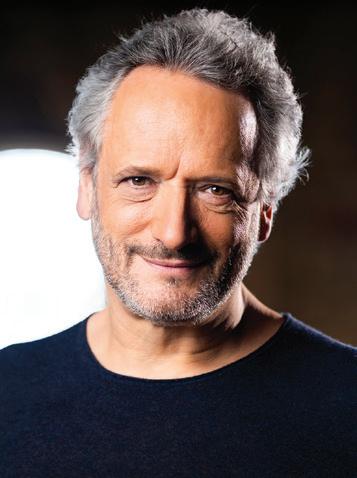
Langrée ended his 20-year tenure as Music Director of the Mostly Mozart Festival at Lincoln Center in the summer of 2023. Two of his Cincinnati recordings were Grammy nominated for Best Orchestral Performance: Transatlantic, with works by Varèse, Gershwin and Stravinsky; and Concertos for Orchestra, featuring world premieres by Sebastian Currier, Thierry Escaich and Zhou Tian. On stage, his Pelléas et Mélisande trilogy contrasted settings by Fauré, Debussy and Schoenberg. A multiseason Beethoven [R]evolution cycle paired the symphonies with world premieres, as well as recreation of the legendary 1808 Akademie. During the Covid pandemic, Langrée was a catalyst for the Orchestra’s return to the stage in the fall of 2020 with a series of digitally streamed concerts.
Between the start of his tenure and the conclusion of the CSO’s 2023–24 season, Langrée and the CSO will have commissioned 45 new orchestral works and he will have conducted 31 premieres from a wide range of composers, including Julia Adolphe, Daníel Bjarnason, Jennifer Higdon, Jonathan Bailey Holland, Kinds of Kings, David Lang, Missy Mazzoli, Nico Muhly, André Previn, Caroline Shaw and Julia Wolfe, and the world premiere of Christopher Rouse’s Symphony No. 6, Rouse’s final opus.

He has guest conducted the Berlin Philharmonic, Vienna Philharmonic, London Philharmonic, Los Angeles Philharmonic, New York Philharmonic, Philadelphia Orchestra, Budapest Festival Orchestra, NHK Symphony, Orchestre National de France and Leipzig Gewandhaus, as well as Orchestre des Champs-Elysées and Freiburg Baroque. He frequently conducts at the leading opera houses, including more than 50 performances at The Metropolitan Opera, and engagements with Vienna Staatsoper, Teatro alla Scala, Royal Opera House Covent Garden, Lyric Opera of Chicago and Bavarian Staatsoper, and at festivals including Glyndebourne, Aix-enProvence, BBC Proms, Edinburgh International and Hong Kong Arts.
A native of Alsace, France, he is a Chevalier de la Légion d’Honneur and O cier des Arts et des Lettres, and he is an Honorary Member of the Confrérie Saint-Étienne d’Alsace, an Alsatian winemakers’ brotherhood dating to the 14th century.
JOHN MORRIS RUSSELL Cincinnati Pops Conductor
Louise Dieterle Nippert & Louis Nippert Chair
A master of American musical style, Grammynominated conductor John Morris Russell, a.k.a. “JMR,” has devoted himself to redefining the American orchestral experience. In his 12th year as conductor of the Cincinnati Pops Orchestra, Russell continues to reinvigorate the musical scene throughout Cincinnati and across the continent with the wide range and diversity of his work as a conductor, collaborator and educator. As Music Director of the Hilton Head Symphony Orchestra in South Carolina Russell leads the prestigious Hilton Head International Piano Competition, and as Principal Pops Conductor of the Bu alo Philharmonic Orchestra he follows in the footsteps of Marvin Hamlisch and Doc Severinsen. Guest conducting engagements have included many of the most distinguished orchestras in North America: the Los Angeles Philharmonic, Cleveland Orchestra, New York Philharmonic, Boston Pops, National Symphony, and the orchestras of Toronto, Vancouver, Dallas, Detroit and Pittsburgh.
With the Cincinnati Pops, Russell leads sold-out performances at Music Hall, concerts throughout the region, and domestic and international tours— including Florida in 2014 and China/Taiwan in 2017. His visionary leadership at the Pops created the “American Originals Project,” which has garnered both critical and popular acclaim in two landmark recordings: American Originals (the music of Stephen Foster) as well as American Originals: 1918. In 2020, the American Originals Project: The Cincinnati Sound, featuring Late Night with David Letterman musical director Paul Sha er, celebrated the beginnings of bluegrass, country, rockabilly, soul and funk immortalized in recordings produced in the Queen City. Russell’s other recordings with The Pops include Home for the Holidays, Superheroes, Carnival of the Animals and Voyage Recent collaborations with artists around the world include Aretha Franklin, Emanuel Ax, Amy Grant and Vince Gill, Common, Garrick Ohlsson, Brian Stokes Mitchell, Jon Kimura Parker, Ann Hampton Callaway, Michael McDonald, Cho-Liang Lin, Sutton Foster, George Takei, Megan Hilty, Ranky Tanky, Steve Martin, Katharine McPhee, Brian Wilson, Cynthia Erivo and Leslie Odom, Jr.

26 | 2023–24 SEASON AND ARTISTIC LEADERSHIP
©Chris Lee 2021
MATTHIAS PINTSCHER
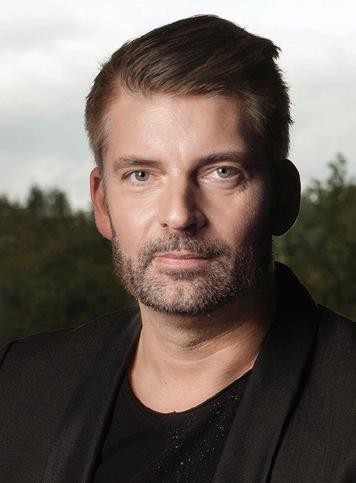
CSO Creative Partner
Matthias Pintscher is the newly appointed Music Director of the Kansas City Symphony, e ective from the 2024–25 season. He has just concluded a successful decadelong tenure as Music Director of the Ensemble Intercontemporain
(EIC), the iconic Parisian contemporary ensemble founded by Pierre Boulez and winner of the 2022 Polar Prize. During his stewardship, Pintscher led this most adventurous institution in the creation of dozens of world premieres by cutting edge composers from all over the world and took the ensemble on tours around the globe—to Asia and North America and throughout Europe to all the major festivals and concert halls
The 2023–24 season is Pintscher’s fourth as Creative Partner at the Cincinnati Symphony Orchestra (CSO), where he will conduct a new work by inti figgis-vizueta, as well as an immersive video-concert of Olivier Messiaen’s Des canyons aux étoiles. He will also tour with the Junge Deutsche Philharmonie, with which he is artistin-residence. As guest conductor, he returns to the RAI Milano Musica, Orchestre de Chambre de Paris, NDR Hamburg, Indianapolis Symphony, Milwaukee Symphony, Barcelona Symphony, Lahti Symphony, Deutsche Kammerphilharmonie Bremen, La Scala, and Berlin’s Boulez Ensemble. Pintscher has conducted several opera productions for the Berliner Staatsoper, Wiener Staatsoper and the Théâtre du Châtelet in Paris. He returns to the Berliner Staatsoper in 2024 for Beat Furrer’s Violetter Schnee
Pintscher is also well known as a composer, and his works appear frequently on the programs of major symphony orchestras throughout the world. In August 2021, he was the focus of the Suntory Hall Summer Festival—a week-long celebration of his works with the Tokyo Symphony Orchestra— as well as a residency by the EIC with symphonic and chamber music performances. His third violin concerto, Assonanza, written for Leila Josefowicz, was premiered in January 2022 with the CSO. matthiaspintscher.com
DAMON GUPTON Pops Principal Guest Conductor
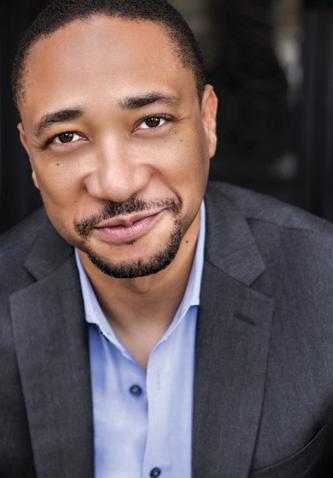
An accomplished conductor, Damon Gupton is the first-ever Principal Guest Conductor of the Cincinnati Pops. He served as American Conducting Fellow of the Houston Symphony and held the post of assistant conductor of the Kansas City Symphony. His conducting appearances include the Boston Pops, Orchestra of St. Luke’s, Detroit Symphony, San Francisco Symphony, Atlanta Symphony, Baltimore Symphony, National Symphony Orchestra, Toledo Symphony, Fort Worth Symphony, Florida Orchestra, San Diego Symphony, Long Beach Symphony, San Antonio Symphony, Princeton Symphony, Orchestre Philharmonique de Monte Carlo, NHK Orchestra of Tokyo, Orquesta Filarmonica de UNAM, Charlottesville Symphony, Brass Band of Battle Creek, New York University Steinhardt Orchestra, Kinhaven Music School Orchestra, Vermont Music Festival Orchestra, Michigan Youth Arts Festival Honors Orchestra, Brevard Sinfonia, and Sphinx Symphony as part of the 12th annual Sphinx Competition. He led the Sphinx Chamber Orchestra on two national tours with performances at Carnegie Hall, and conducted the finals of the Seventh Cliburn International Amateur Piano Competition and the 2021 Classic FM Live at Royal Albert Hall with Chineke!. Other musical collaborations include work with Marcus Miller, Brian Stokes Mitchell, Common, Leslie Odom Jr., Byron Stripling, Tony DeSare, The Midtown Men, Kenn Hicks and Jamie Cullum. Gupton received his Bachelor of Music Education degree from the University of Michigan. He studied conducting with David Zinman and Murry Sidlin at the Aspen Music Festival and with Leonard Slatkin at the National Conducting Institute in Washington, D.C. Awards include the Robert J. Harth Conducting Prize and The Aspen Conducting Prize. He is the inaugural recipient of the Emerging Artist Award from the University of Michigan School of Music and Alumni Society and a winner of the Third International Eduardo Mata Conducting Competition.
An accomplished actor and graduate of the Drama Division of The Juilliard School, Gupton has had roles in television, film and on stage, most recently in series regular roles on The Big Door Prize for Apple TV, as well as The Last Days of Ptolemy Grey starring Samuel L. Jackson. damongupton.com
Fanfare Magazine | 27 CSO AND POPS ARTISTIC LEADERSHIP
©Franck Ferville ©Damu Malik
LEE Associate Conductor
Samuel Lee, fi rst prize winner of the BMI International Conducting Competition in Bucharest and the International Conducting Competition in Taipei, was appointed Assistant Conductor of the Cincinnati Symphony Orchestra, beginning in the 2022–23 season, and was promoted to Associate Conductor in August 2023.
In addition to several recent guest conducting engagements throughout Europe and Asia, Lee was also a Conducting Fellow with the Cabrillo Festival of Contemporary Music in 2021 and 2022, where he worked with conductors Cristian Măcelaru, Yannick Nézet-Séguin, Octavio MásArocas and Marin Alsop.
Since 2016 Samuel Lee has been the chief conductor of the C.P.E. Bach Musikgymnasium orchestra Berlin. He and the orchestra have been regularly invited to the Berlin Philharmonie and Konzerthaus Berlin for subscription concerts. He also served as a viola professor at Hochschule für Musik und Theater “Felix Mendelssohn-Bartholdy” in Leipzig, Germany until 2022.
As a violist, Lee was invited to perform with orchestras throughout Europe and Asia. From 2009 until 2017, he was the violist of Novus String Quartet, and he was the second prize winner of the 61st International Music Competition of ARD Munich and first prize winner of the Salzburg International Mozart Competition.

Lee is an alumnus of Hochschule für Musik “Hanns Eisler” Berlin, where he studied viola with Prof. Tabea Zimmermann (BM, MM, Konzertexamen), and orchestral conducting with Prof. Christian Ehwald (BM, MM). Lee completed Konzertexamen in orchestral conducting from Hochschule für Musik und Theater Hamburg (Prof. Ulrich Windfuhr).
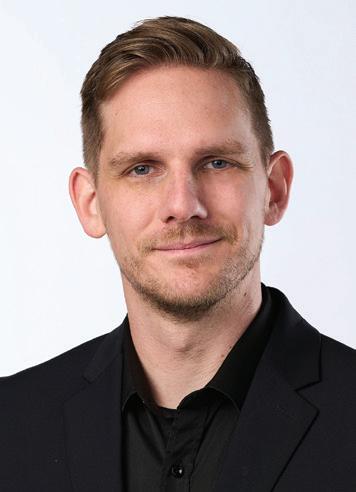
DANIEL WILEY Assistant Conductor
Daniel Wiley has quickly become a notable young conductor on the rise, having made guest appearances with orchestras, ballet companies and opera productions in the U.S. and Canada. Prior to his tenure with the CSO, Wiley held numerous conducting posts, including Assistant Conductor of the Jacksonville Symphony, Music Director of the Jacksonville Symphony Youth Orchestras, Associate Conductor of the Windsor Symphony Orchestra, Music Director of the Windsor Symphony Youth Orchestras, Music Director of the Windsor Symphony Community Orchestra, Wind Ensemble Conductor at the School of Creative Arts at the University of Windsor, Education Conductor/ Consultant for London Symphonia, Conductor for the Windsor Abridged Opera Company, Music Director of Texas Academy of Mathematics and Science Youth Orchestra, and Assistant Conductor for the Meridian Symphony Orchestra.
During the pandemic, Wiley was instrumental in expanding the Windsor Symphony’s educational footprint by creating a digital education concert series that includes 12 hours of interactive music curriculum for schools. This program has been recognized by the Ontario Provincial Parliament as an example of how an orchestra can change lives through music, even during a time of unprecedented uncertainty.

In 2019, Wiley was the second prize recipient of both the Smoky Mountain International Conducting Institute and Competition and the Los Angeles International Conducting Competition. Wiley has also spent time conducting new music ensembles, including for the Musicbed Music and Film Corporation based in Fort Worth, Texas, as well as participating in the Composing in the Wilderness program as part of the Fairbanks Summer Arts Festival in Fairbanks, Alaska. Through this program, Wiley has conducted numerous world premieres in Denali National Park.
As a former public-school music teacher, Wiley has a unique passion for music education and frequently donates his time as a guest clinician to support students and teachers in music programs across North America.
SAMUEL
CSO AND POPS ARTISTIC LEADERSHIP 28 | 2023–24 SEASON
POPS SEP 9–10:
The Princess Bride in Concert
SARAH HICKS, conductor
Sarah Hicks’ versatile and vibrant musicianship has secured her place as an in-demand conductor across an array of genres, and as an educator, arranger, Emmy-winning producer, writer and speaker committed to creating connections through music. Her career has seen collaborations with diverse artists, from Hilary Hahn and Dmitri Hvorostovsky to Rufus Wainwright, Jennifer Hudson and Smokey Robinson; during the summer of 2011, she toured with Sting as conductor of his Symphonicities Tour. Her passion for cross-genre partnerships led to a 2019 album with rap artist Dessa and the Minnesota Orchestra, with whom she holds a titled position; in 2021, she collaborated with gamer DrLupo for an innovative live-play project for Intel Gaming.
A specialist in film music and the film-inconcert genre, she has premiered Pixar in Concert and Coco in Concert; her live concert recording of A Celebration of the Music of Coco at the Hollywood Bowl can be seen on Disney+, and her work on Little Mermaid Live was broadcast on ABC. Since 2019, she has acted as consultant for Disney Concerts in developing live-to-film products. Her concerts with the Danish National Symphony Orchestra of film music, The Morricone Duel, was released as an album and worldwide broadcast in 2018 and has garnered over 150 million views on YouTube.
Sarah Hicks was born in Tokyo and raised in Honolulu. Trained on both the piano and the viola, she was a prizewinning pianist by her early teens. She received her BA in composition magna cum laude from Harvard University and holds an Artists’ Diploma in conducting from the Curtis Institute of Music. In her spare time, Hicks enjoys running, hiking, her Papillon, cooking (and eating) with her husband, traveling and blogging. sarahhicksconductor.com
MARK KNOPFLER, composer

Mark Knopfler is an acclaimed British singersongwriter, guitarist and record producer who has composed several film scores, including The Princess Bride. He is best known as the lead singer, lead guitarist and songwriter of internationally celebrated rock band, Dire Straits. markknopfler.com
POPS SEP 16–17: Heroes: A Video Game Symphony
KEVIN ZAKRESKY, conductor
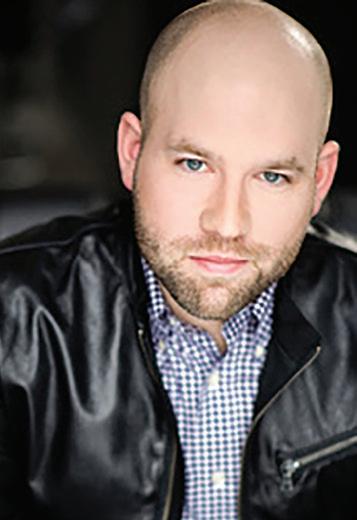
Kevin Zakresky is a choral and orchestral conductor living in Vancouver, British Columbia. He has directed international touring productions of The National Geographic Symphony for Our World, The Legend of Zelda: Symphony of the Goddesses, and the Heroes
Video Game Symphony
In Vancouver he is director of the Vancouver Baroque Players and Maddalena’s Descant, a new women’s vocal ensemble.

The National Geographic Symphony for Our World debuted in San Francisco’s Davies Symphony Hall and continued to venues in San Jose, Chicago, Madison, Minneapolis, Houston, Edmonton, Calgary, Limerick, Monterrey and Columbus.

The Legend of Zelda: Symphony of the Goddesses tour saw him conduct orchestras throughout North America, South America and Europe. Zelda performances include London— to conduct the Royal Philharmonic Concert Orchestra in Wembley Arena—as well as Montreal, Philadelphia, Miami, Los Angeles, Dublin, San Francisco, San Antonio, Charlottesville, Fresno, Santiago, Buenos Aires, Birmingham (UK), Toronto, Seattle, Portland, Salt Lake City, Oklahoma City, Vancouver and Pittsburgh.
He is the past Music Director of the Prince George Symphony Orchestra and has guest conducted the St. Louis Symphony, Calgary Philharmonic, Columbus Symphony, Vancouver Chamber Choir, Fort Worth Symphony, Sudbury Symphony and West Coast Symphony. He is also
Fanfare Magazine | 29 CSO & POPS GUEST ARTISTS: September–October, 2023
©Joby Sessions
past Conductor of the Pacifica Singers and Music Director of the Players & Singers Ensemble.
Zakresky received a doctorate in Choral Conducting at Yale University in 2012.
MEMBERS OF THE MAY FESTIVAL CHORUS
Robert Porco, Director
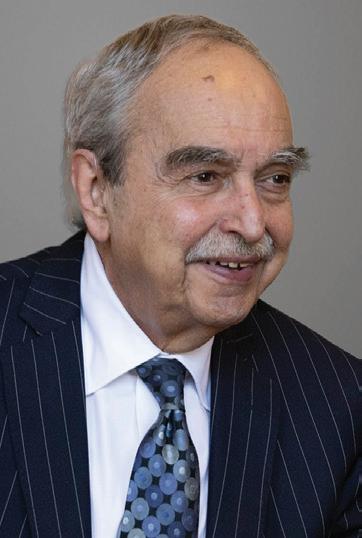
Matthew Swanson, Associate Director of Choruses

Heather MacPhail, Accompanist
Sergey Tkachenko, Conducting Fellow
Kathryn Zajac Albertson, Chorus Manager
The May Festival Chorus has earned acclaim locally, nationally and internationally for its musicality, vast range of repertoire, and sheer power of sound. The Chorus of 130 avocational singers is the core artistic element of the Cincinnati May Festival as well as the official chorus of the Cincinnati Symphony Orchestra (CSO) and the Cincinnati Pops.
The May Festival Chorus has strengthened its national and international presence through numerous PBS broadcasts of live concerts and several award-winning recordings, many in collaboration with the Cincinnati Symphony Orchestra and Cincinnati Pops. Most recently, a live recording of Robert Nathaniel Dett’s The Ordering of Moses featuring Music Director Laureate James Conlon conducting the Chorus and the CSO at Carnegie Hall was released to critical acclaim in 2016 (Bridge Records).
The May Festival Chorus has garnered awards in recognition of its continuing artistic excellence and performances throughout the state, including the Spirit of Cincinnati USA Erich Kunzel Queen City Advocate Award from Cincinnati USA Convention and Visitors Bureau and the Irma Lazarus Award from the Ohio Arts Council’s annual Governor’s Awards for the Arts. mayfestival.com/chorus
ROBERT PORCO has been recognized as one of the leading choral musicians in the U.S., and throughout his career he has been an active preparer and conductor of choral and orchestral works, including most of the major choral repertoire, as well as of opera. In 2011, Porco received Chorus America’s
“Michael Korn Founders Award for Development of the Professional Choral Art.” In 2016, he led the May Festival Chorus and
Cincinnati Symphony Orchestra in a performance of Mendelssohn’s Elijah for Chorus America’s National Conference.
Porco’s conducting career has spanned geographic venues and has included performances in the Edinburgh Festival; Taipei, Taiwan; Lucerne, Switzerland; Tel Aviv and Jerusalem, Israel; and Reykjavik, Iceland; and at the May Festival, Tanglewood Music Festival, Berkshire Music Festival, Blossom Festival and Grant Park Festival. He has been a guest conductor at the May Festival and with the Cincinnati Symphony Orchestra and The Cleveland Orchestra, among others.
The 2023–24 season is Robert Porco’s 35th as Director of Choruses.
THE MAY FESTIVAL CHORUS, Heroes
Sopranos
Tracy Bailey
Caitlyn Byers
Renee Cifuentes
Kathy Dietrich
Rachel Dummermuth
Sarah Evans
Anita Marie Greer
Melissa Haas
Carolyn Hill
Lisa Koressel
Judy LaChance
Hilary Landwehr
Julia Lawrence
Regina Rancourt
Mary Ann Sprague
Altos
Edy Dreith
Amanda Gast
Sally Harper
Karolyn Johnsen
Megan Lawson
Melissa Martin
Jennifer Moak
Christie Roediger
Amanda Rosenzweig
Karen Vosseberg
Christine Wands
Robin Wiley
Tenors
Lydia Ball
David Bower
David Gillespie
Eli Lanham
Matthew Leonard
Scott Nesbitt
Larry Reiring
Matthew Swanson
Stephen West
Basses
Richard Becker
Nathan Bettenhausen
Darren Bryant
Matthew Cheek
David Dugan
Kim Icsman
Jim Laskey
Stuart Lohrum
Jim Racster
Joshua Wallace
Tommy Wessendarp
JASON MICHAEL PAUL, producer
A pioneer and leader in the live symphonic concert industry, Jason Michael Paul (JMP) Entertainment, Inc. produces and promotes concerts for leading international artists, including a series of live symphonic concerts that make video game music come to life.
A leader in film orchestra projects, Jason Michael Paul was the first to take video game music to the masses.
30 | 2023–24 SEASON SEP–OCT
GUEST ARTISTS
Credit: Charlie Balcom
In 2004, JMP brought the first concert featuring music and visuals from Final Fantasy to the United States. More recently, Nintendo asked JMP to commemorate the 25th anniversary of their AAA series with a concert featuring the music from The Legend of Zelda. The success of those shows spawned a worldwide touring sensation with The Legend of Zelda: Symphony of the Goddesses
Second Quest and Master Quest
Jason Michael Paul has produced concerts all over the world for artists and companies such as Luciano Pavarotti, The Three Tenors, Elton John, Foo Fighters, Outkast, Michael McDonald, James Ingram, Patti Austin, Los Angeles Philharmonic, Philadelphia Orchestra, Baltimore Symphony Orchestra, Pittsburgh Symphony Orchestra, Seattle Symphony, San Diego Symphony, Tokyo Philharmonic, Sydney Symphony Orchestra, Vancouver Symphony Orchestra, Detroit Symphony, Dallas Symphony, Houston Symphony, Oregon Symphony, Utah Symphony, Ft. Worth Symphony, Royal Philharmonic Orchestra, Atlanta Symphony, Nintendo, Sony Computer Entertainment America, Bethesda, Square Enix, Konami, Electronic Arts, Disney, Madison Square Garden Network, PBS, LiveNation, AEG and Nederlander.
POPS SEP 22–24: Defying Gravity: An Evening with Stephen Schwartz & Friends
JOHN MORRIS RUSSELL, conductor
Turn to p. 26 for a biography of Pops Conductor
John Morris Russell.
STEPHEN SCHWARTZ, piano and host
Stephen Schwartz wrote the music and lyrics for the current Broadway hit Wicked, and has also contributed music and/or lyrics to Godspell, Pippin, The Magic Show, The Baker’s Wife, Working (which he also adapted and directed), Rags and Children of Eden He collaborated with Leonard Bernstein on the English texts for Bernstein’s MASS and wrote the title song for the play and movie Butterflies are Free. For children, he has written songs for two musicals, Captain Louie and My Son Pinocchio He has also worked in film, collaborating with Alan Menken on the songs for Disney’s Enchanted as well as the animated features Pocahontas and The Hunchback of Notre Dame,

and writing the songs for the DreamWorks animated feature The Prince of Egypt. His first opera, Séance on a Wet Afternoon, was produced at Opera Santa Barbara and New York City Opera. A book about his career, Defying Gravity, has been released by Applause Books. Schwartz has been inducted into the Theatre Hall of Fame and the Songwriters Hall of Fame and has been given a star on the Hollywood Walk of Fame. Awards include three Academy Awards, four Grammy Awards, and a tiny handful of tennis trophies. stephenschwartz.com
SHALEAH ADKISSON, vocalist

Shaleah Adkisson has been seen on Broadway and on tour in Hair: The American Tribal Love-Rock Musical and off-Broadway in the revival of the Pulitzer Prizewinning musical Rent. Her many regional theater credits include Jubilee (Arena Stage), Clybourne Park, Avenue Q (Arkansas Repertory Theatre), The Hot Mikado, Beehive: The 60’s Musical, Ain’t Misbehavin’ (Broward Stage Door Theatre), Grease, Nunsense (Murry’s Dinner Playhouse) and Children of Eden (Arkansas Repertory Theatre). Adkisson regularly performs in New York City and on tour with Soul Picnic Productions (Back to the Garden and August 1969: A Tribute to the Women of Woodstock). shaleahadkisson.com
SCOTT COULTER, vocalist
Scott Coulter is one of New York’s most honored vocalists. For his work in cabaret, Scott has received five MAC Awards (Manhattan Association of Cabarets & Clubs), five Bistro Awards and two Nightlife Awards for Outstanding Vocalist, and he has performed at most of NYC’s top rooms including Birdland, 54 Below, The Oak Room at the Algonquin, and Feinstein’s at The Regency, where he spent a record-setting eight months performing the revue 11 O’Clock Numbers at 11 O’Clock, which he also co-created, directed and musically arranged. His selftitled debut CD won the 2003 MAC Award for Outstanding Recording and was chosen as the best recording of the year by TheaterMania and Cabaret Scenes magazines.

Fanfare Magazine | 31 SEP–OCT GUEST ARTISTS
Since 1997, Coulter has performed around the country with award-winning songwriting duo Marcy Heisler and Zina Goldrich in their many revues. While singing with Goldrich and Heisler, he was discovered by Oscar- and Grammy-winning composer Stephen Schwartz, who then invited him to join the revue Stephen Schwartz & Friends
Coulter regularly performs in concert both as a solo artist and with a variety of legendary performers. He also is creator, arranger and director of several touring shows (symphonic and non) and, along with Dave Gaebler, is a coproducer of the award-winning Jessica Hendy/ Brianna Barnes musical Walking With Bubbles
Coulter is a proud graduate of the University of Cincinnati College-Conservatory of Music (CCM), which honored him with the CCM Young Alumni Award in 2010 and CCM’s Distinguished Service Award in 2020.
DEBBIE GRAVITTE, vocalist
Tony Award winner Debbie Gravitte (Jerome Robbins’ Broadway) has found herself in demand from the Broadway stage to the concert stage and beyond. After making her Broadway debut in the original cast of They’re Playing Our Song, she went on to appear in Perfectly Frank (Drama Desk Award nomination), Blues in the Night, Ain’t Broadway Grand, Zorba, Chicago and Les Miserables. Gravitte has been seen in the Encores! series productions of The Boys from Syracuse, Tenderloin and Carnival at New York’s City Center. She has appeared as Reno Sweeney in Anything Goes, Love Life at the Walnut St. Theatre, Red, Hot and Blue at the Paper Mill Playhouse, and in the West Coast Premiere of The Goodbye Girl
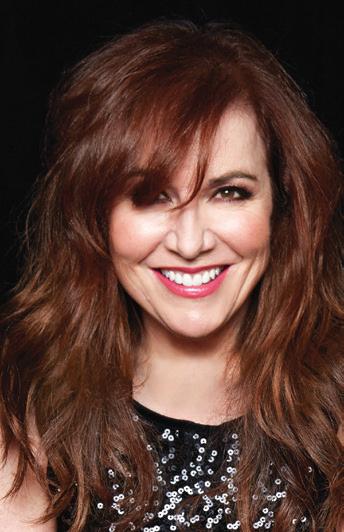
Gravitte has performed her nightclub act worldwide, and, a favorite with symphony orchestra audiences, she has sung with more than 175 orchestras around the world. On television, Gravitte co-starred on the CBS series Trial and Error, was seen on NBC’s Pursuit of Happiness, and has starred in several specials for PBS
Gravitte has four solo CDs to her credit, including her latest release, Big Band Broadway, along with Defying Gravity, The MGM Album, and Part of Your World: The Music of Alan Menken. Her other recordings include Calamity Jane, Unsung Sondheim, Lucky Stiff, Miss Spectacular, Louisiana Purchase, A Broadway Christmas, as well as Mack and Mabel in Concert, among others.
Gravitte has sung with the New York City Ballet in Peter Martins’ Thou Swell at Lincoln Center, appeared with Bette Midler in the Universal Feature Isn’t She Great?, and can be heard as one of the voices in Disney’s The Little Mermaid debbiegravitte.com or debbietunes.com
MICHAEL McCORRY ROSE, vocalist
Michael McCorry Rose can be seen in Disney’s live action film Disenchanted starring Amy Adams and Maya Rudolph, directed by Adam Shankman. Prior to that, he starred in Daniel Levine’s film adaptation of Snapshots, which recently received a 2021 Grammy nomination for Best Musical Theater Album. On Broadway, he’s appeared in the Tony-winning musical A Gentleman’s Guide to Love and Murder, Wicked and the first national tour of Anastasia
In New York, McCorry Rose has appeared in concert at Jazz at Lincoln Center, Avery Fisher Hall, Symphony Space, Birdland, Green Room 42 and Feinstein’s/54 Below.
He regularly appears in concert with his longtime collaborator Stephen Schwartz (Wicked, Godspell, Pippin), and one of their concerts starring Scott Coulter and Debbie Gravitte was filmed for PBS’s Great American Songbook Concert Series at the New Jersey Performing Arts Center; it aired in the summer of 2016 and was nominated for a 2017 Regional Emmy.
McCorry Rose has performed with symphonies and concert orchestras across the United States, and internationally he’s performed in concert at the Adelaide Music Festival in Australia, for the U.S. State Department in Nairobi, Kenya and in São Paulo, Brazil.
His theatrical credits include roles at regional theaters such as the Paper Mill Playhouse, Williamstown Theater Festival, Yale Repertory Theater, Primary Stages, Capital Repertory Theater and Project Shaw in New York City.
Originally from San Diego, he holds a BA in Mass Communication Studies from UCLA, where he appeared in Carol Burnett’s directorial debut of Once Upon a Mattress. He studies at the Jen Waldman Studios and The Actor’s Gym in New York.
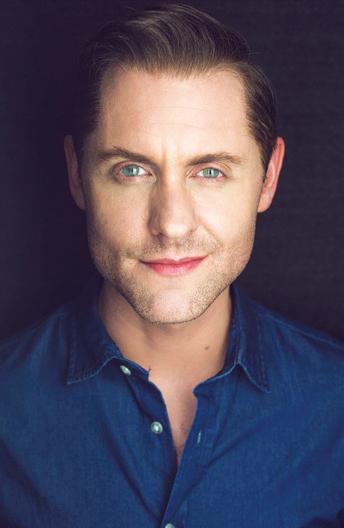
32 | 2023–24 SEASON
SEP–OCT GUEST ARTISTS
JOHN BOSWELL, piano
Pianist John Boswell has served as musical director for Judy Collins, Andy Williams, Bob Newhart, Scott Coulter, Maude Maggart, Faith Prince, Carmen Cusack, Babbie Green, Jason Graae and a host of other fine talents. Boswell played the role of “Moose” in the national tour of Crazy for You and has appeared on The Tonight Show, Today Show, CBS This Morning, Regis and Kathie Lee and General Hospital, and he was the piano playing hands of Nancy McKeon on the sitcom The Facts of Life. Recent concerts with symphonies have included Jerry Herman: The Broadway Legacy Concert, Blockbuster Broadway!, Sheena Easton and Scott Coulter: The Spy Who Loved Me and Music of the Knights Boswell has been heard singing in the shows Three Men and a Baby…Grand, Cinema Toast, Broadway Today, Wiseguys, and the New York cult hit Cashino. Broadway/Off Broadway credits include Crazy for You, The Secret Garden, LIZA! Steppin’ Out at Radio City Music Hall, Back to Bacharach and David and The Kathy and Mo Show: Parallel Lives. His monthly concerts in 2017 at The Gardenia in Los Angeles have been crowd pleasers. Boswell has eight CDs of original piano music and a ninth on the way. While a student at UCLA, Boswell received the Frank Sinatra Award for popular instrumentalists.
CSO SEP 30–OCT 1: The Rite of Spring
CHRISTIAN REIF, conductor
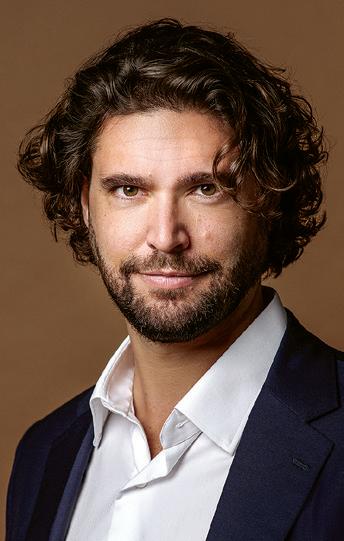
Newly appointed Chief Conductor of the Gävle Symphony Orchestra, Christian Reif has established a reputation for his natural musicality, innovative programming and technical command.
The 2023–24 season marks Reif’s inaugural season as Chief Conductor of the Gävle Symphony Orchestra, a position he will hold through the 2025–26 season. Since 2022, Reif has served as Music Director of the Lakes Area Music Festival in Minnesota.
Reif’s 2023–24 season also includes subscription appearances with the Cincinnati Symphony
Orchestra, St. Louis Symphony, Seattle Symphony, Milwaukee Symphony, Philharmonia Orchestra, Swedish Radio Symphony and Brno Philharmonic Orchestra plus summer festival appearances at the Grand Teton Music Festival and at Interlochen. Reif will conduct his own arrangement of John Adams’ El Niño: Nativity Reconsidered with the Cincinnati Symphony Orchestra (Nov. 30 for the CSO Proof series) and on tour with the American Modern Opera Company.
With an equal footing in North America and Europe, Reif has conducted the symphony orchestras of San Francisco, Baltimore, Cincinnati, Dallas, Houston, Colorado, Indianapolis, Kansas City and Louisville, and the St. Paul Chamber Orchestra and Orchestra of St. Luke’s.
Reif enjoys conducting opera and has led productions at Juilliard Opera of The Merry Wives of Windsor, Opera San Jose of Leoncavallo’s Pagliacci and the Lakes Area Music Festival of Ariadne auf Naxos

Reif is featured on classical singer Julia Bullock’s debut solo Nonesuch Records album Walking in the Dark, where he leads London’s Philharmonia Orchestra as well as accompanies Bullock on the piano. In 2020 during the pandemic, Reif and Bullock recorded a series of at-home virtual “Songs of Comfort,” and NPR Music featured the duo in a “Tiny Desk Concert” for their special quarantine edition of the series.
Reif studied conducting at the Mozarteum in Salzburg and at The Juilliard School in New York City. He resides in Munich with his wife, Julia Bullock, and their son. christianreif.eu
CLARA-JUMI KANG, violin
Violinist Clara-Jumi Kang is an artist of supreme musicality, impeccable refinement and poise, as borne out by the many awards and accolades she has received since she won first prize at the Indianapolis International Violin Competition (2010), Sendai Violin Competition (2010), and the Seoul Violin Competition (2009). Her cycle of Beethoven
Violin Sonatas with pianist Sunwook Kim, which was released on Accentus in 2021, has received outstanding reviews and award nominations.
Highlights of the 2023–24 season include her Edinburgh Festival solo recital debut, as well as debuts with the Israel Philharmonic as part of the Côte-Saint-André Festival under Music
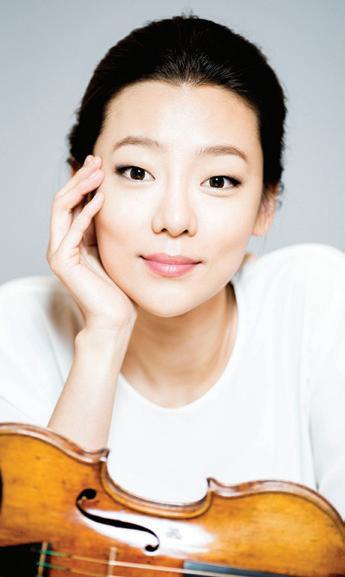
Fanfare Magazine | 33
©Simon Pauly
SEP–OCT GUEST ARTISTS
Director Lahav Shani, with whom she also makes her Budapest Festival Orchestra debut, the LA Philharmonic as part of the Hollywood Bowl Festival, and the Cincinnati and Detroit symphony orchestras. Kang will also return to the Rotterdam Philharmonic and Auckland Philharmonia and tour South Korea with the Munich Philharmonic. As a recitalist, Kang regularly performs at the world’s most prestigious halls; she makes her Wigmore Hall debut this season and returns to the Théâtre des Champs-Élysées for two concerts.
She made her concerto debut with the Hamburg Symphony at the age of five and has since performed with orchestras across Europe, the U.S. and Asia. A devoted chamber musician, she regularly visits chamber music festivals and collaborates with renowned musicians including Janine Jansen, Gidon Kremer and Mischa Maisky.
Clara-Jumi Kang has made two recordings for Decca: Modern Solo featuring works by Schubert, Ysaÿe and others, and a Brahms/Schumann album with Yeol-Eum Son.

Born in Germany to a musical family, ClaraJumi Kang took up the violin at the age of three and, a year later, enrolled as the youngest ever student at the Mannheim Musikhochschule.
She went on to study with Zakhar Bron at the Lübeck Musikhochschule and, at age seven, was awarded a full scholarship to The Juilliard School to study with Dorothy Delay. She took her bachelor’s and master’s degrees at the Korean National University of Arts under NamYun Kim before completing studies at the Munich Musikhochschule with Christoph Poppen. clarajumikang.com
CSO OCT 4: EarShot
Samuel Lee, conductor
Daniel Wiley, conductor
Turn to p. 28 for biographies of CSO Associate Conductor Samuel Lee and CSO Assistant Conductor Daniel Wiley.
composer biographies are on pp. 54–55.
34 | 2023–24 SEASON
SEP–OCT GUEST ARTISTS THANK YOU —
EarShot
The Rite of Spring is generously supported by Presenting Sponsor, The Ladislas and Vilma Segoe Family Foundation.
CSO OCT 6: Nina Simone Piano Competition Concerto Finals
LOUIS LANGRÉE, conductor
Turn to p. 26 for a biography of CSO Music Director Louis Langrée.
KAYDEN KELLY, piano
Kayden Kelly is the first place Senior Division winner of the inaugural Nina Simone Competition and a 2023 Junior Cliburn Festival Artist. He has been playing piano since he was five and gave his recital debut at age 11 at the National Theater of Costa Rica for the Costa Rican Vice President and his orchestral debut three years later in Italy. He has subsequently had three performances at the Lensic Performing Arts Center in Santa Fe, NM as well as played with orchestras in Vanemuise Concert Hall in Estonia, Teatro Das Figuras in Portugal, and the Berlin Admiralspalast, Germany. Kayden has been part of the Mozarteum
International “Young Excellence” Academy in Austria, Curtis Summerfest, PianoTexas, Amalfi Coast Festival, Algarve Music Series, Perugia MusicFest and Aspen Music Festival. He has participated in masterclasses with renowned musicians such as Piotr Paleczny, Olga Kern, Anne McDermott, Dmitri Alexeev, Boris Slutsky, Jerome Lowelthal, Hung-Kuan Chen, Jacques Rouvier, Christopher Elton and Jean-Yves Thibaudet.
Kayden has had over 25 solo public performances in festivals in the US, Germany, Latvia, Estonia, Finland, Austria, Portugal, Costa Rica and Italy. He has been interviewed and performed on local television and NPR’s From the Top. Kayden, who is originally from Santa Fe, received an award for his musical talent and dedication from the Secretary for the New Mexico Department of Cultural Affairs. He is currently studying with Fabio Bidini at the Precollege Music Academy of The Colburn School in Los Angeles.
JOSHUA MHOON, piano
Joshua Mhoon won first place in the Grandquist Music Competition (Illinois) in 2011, 2012 and 2014. Mhoon has also won honors awards at the National Federation of
Music’s Junior Music Festival and first place in the Emilio del Rosario Concerto Competition, Savler Competition and CAMTA Sonata Festival.
Mhoon has been covered in such publications as The Chicago Sun Times, Jet Magazine, The Daily Herald and Musical America, and he has appeared on PBS’s Chicago Tonight and CBS’s Someone You Should Know
He has studied jazz and spontaneous creation/ composition with Willie Pickens and Steve Million, has been mentored by pianist Lang Lang and clarinetist Anthony McGill, and has studied chamber music with the Lincoln Trio. He has played alongside Yo-Yo Ma, Lang Lang, Anthony McGill and Gil Shaham at such venues as Jazz at Lincoln Center, Stern Hall at Carnegie Hall, Steinway Hall, Chicago Symphony Hall, New World Symphony Center and Vienna’s Musikverein.
Mhoon has studied with Dr. Harry Steckman, Mio Isoda-Hagle at Chicago’s Merit School of Music, Alexander Djordjevic and Brenda Huang at the Music Institute of Chicago, and Dr. James Giles at Northwestern University’s Bienen School of Music. He currently studies at Juilliard with Emmanuel Ax.

CLAYTON STEPHENSON, piano
Hailed for “extraordinary narrative and poetic gifts” and interpretations that are “fresh, incisive and characterfully alive” (Gramophone), Clayton Stephenson was named 2022 Gilmore Young Artist, 2017 United States Presidential Scholar in the Arts and a Young Scholar of the Lang Lang International Music Foundation. In 2022, Stephenson became the first Black finalist at the 16th Van Cliburn International Piano Competition. Highlights of Stephenson’s burgeoning career include appearances with the Calgary Philharmonic, Chicago Sinfonietta and the Fort Worth, Louisville, Lansing and North Carolina symphony orchestras, as well as recitals at the Phillips Collection Concert Series in Washington, D.C., Foundation Louis Vuitton Auditorium in Paris, Festival Bad Kissingen and Beethovenfest in Germany, Colour of Music Festival, Ravinia Festival and Weill Recital Hall at Carnegie Hall.
Stephenson was accepted into the Juilliard Outreach Music Advancement Program for underprivileged children and advanced to Juilliard’s Pre-College Program at age 10. He now


Fanfare Magazine | 35 SEP–OCT GUEST ARTISTS
studies in the Harvard-NEC Dual Degree Program, pursuing a bachelor’s degree in economics at Harvard and a master’s degree in piano performance at the New England Conservatory under Wha Kyung Byun.

POPS OCT 8: Audra McDonald

AUDRA McDONALD, guest artist
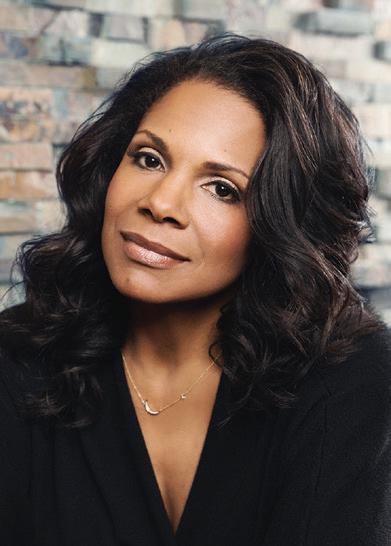
Audra McDonald is unparalleled in the breadth and versatility of her artistry as both a singer and an actor. The winner of a recordbreaking six Tony Awards, two Grammy Awards and an Emmy, in 2015 she was named one of Time magazine’s 100 most influential people and received a National Medal of Arts— America’s highest honor for achievement in the field—from President Barack Obama. In addition to her Tony-winning performances in Carousel, Master Class, Ragtime, A Raisin in the Sun, The Gershwins’ Porgy and Bess and Lady Day at
Emerson’s Bar & Grill—the role that also served as the vehicle for her Olivier Award-nominated 2017 debut in London’s West End—she has appeared on Broadway in The Secret Garden; Marie Christine (Tony nomination); Henry IV; 110 in the Shade (Tony nomination); Shu e Along, or, The Making of the Musical Sensation of 1921 and All That Followed; Frankie and Johnny in the Clair de Lune (Tony nomination); and Ohio State Murders
On television, she was seen by millions as the Mother Abbess in NBC’s The Sound of Music Live! and played Dr. Naomi Bennett on ABC’s Private Practice. She won an Emmy Award for her role as host of PBS’s Live From Lincoln Center and has received nominations for Wit, A Raisin in the Sun, and Lady Day at Emerson’s Bar & Grill. Having first appeared on CBS’s The Good Wife, she plays Liz Reddick in The Good Fight on Paramount+ and Dorothy Scott in Julian Fellowes’ historical drama The Gilded Age on HBO and HBO Max. Her film credits include Disney’s live-action Beauty and the Beast and MGM’s Aretha Franklin biopic, Respect. A Juilliard-trained soprano, her opera credits include La voix humaine and Send at Houston Grand Opera, and Rise and Fall of the City of Mahagonny at Los Angeles Opera, where the resulting recording earned her two Grammy Awards. McDonald has issued five solo albums on the Nonesuch label as well as Sing Happy with the New York Philharmonic on Decca Gold. She also maintains a major career as a concert artist, regularly appearing on the great stages of the world and with leading international orchestras. A founding member of Black Theatre United, board member of Covenant House International, and prominent advocate for LGBTQAI+ rights, her favorite roles are those performed o stage, as an activist, wife to actor Will Swenson, and mother. audramcdonald.com
ANDY EINHORN, conductor
Leading Broadway music director and conductor Andy Einhorn most recently served as the music supervisor and musical director for the Broadway productions of Hello, Dolly! starring Bette Midler (Grammy nomination, original Broadway cast recording) and Carousel starring Renée Fleming (Grammy nomination, original Broadway cast recording). Einhorn’s previous
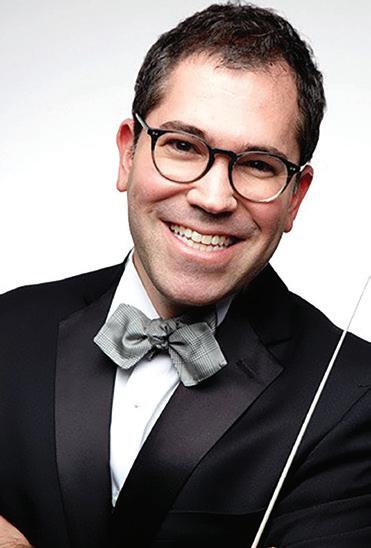
36 | 2023–24 SEASON
SEP–OCT GUEST ARTISTS
©Allison Michael Orenstein
Broadway music directing and conducting credits include Holiday Inn, Woody Allen’s Bullets Over Broadway, Rodgers and Hammerstein’s Cinderella, Brief Encounter and Sondheim on Sondheim. Other Broadway work includes Evita and The Light in the Piazza.
Since 2011, Einhorn has served as music director and pianist for six-time Tony Award winner Audra McDonald, performing with her at prestigious orchestras and venues across the U.S., as well as a series of recorded concerts with the Sydney Symphony at the Sydney Opera House in Australia. He most recently made his debut at New York City Center. McDonald and Einhorn have recorded two albums together: Sing Happy: Live with the New York Philharmonic and Go Back Home
He served as the music director for HBO’s Peabody Award-winning documentary Six by Sondheim and music supervisor for the Great Performances Peabody Award-winning special Broadway Musicals: A Jewish Legacy on PBS. In 2019, Einhorn conducted Bette Midler and Marc Shaiman at the 2019 Academy Awards. He also music supervised and appeared on camera for the Emmy-winning performance of Eat Sh*t Bob for HBO’s Last Week Tonight starring John Oliver. Upcoming film and TV projects include
the AppleTV+ series Extrapolations and Cabrini (producer Jonathan Sanger).
Recently, he has conducted concerts with the Baltimore Symphony Orchestra, National Arts Centre Orchestra, Detroit Symphony, Vancouver Symphony Orchestra, Pacific Symphony, Cleveland Orchestra and Aspen Music Festival. He is a guest faculty member at the Aspen Music Festival and is a regular music director and pianist for the 92nd Street Y’s Lyrics and Lyricists series. Andy Einhorn is an honors graduate of Rice University in Houston.
CSO OCT 13–14: Bernstein, Copland & Price

LOUIS LANGRÉE, conductor
Turn to p. 26 for a biography of CSO Music Director Louis Langrée.
GEORGE TAKEI, narrator

George Takei is known around the world for his role in the acclaimed original TV series Star Trek, in which he played Hikaru Sulu, helmsman of the starship Enterprise. But Takei’s story, which includes an acting career that spans six decades, goes where few have gone before. From a childhood spent with his family wrongfully imprisoned in Japanese American internment camps during World War II to becoming one of the country’s leading figures in the fight for social justice, LGBTQ+ rights and marriage equality, Takei remains a powerful voice on issues ranging from politics to pop culture.
Takei hosts the AARP-produced YouTube series Takei’s Take, and he is the subject of the documentary To Be Takei. On his own YouTube channel, Takei and his husband Brad Takei bring viewers into their personal lives in the web series It Takeis Two. He was a series regular in the second season of Ridley Scott’s anthology drama The Terror: Infamy.
His rich baritone has provided narration for the PBS series The National Parks: America’s Best Idea, the Peabody Award-winning radio documentary Crossing East, and Star Trek IV: The Voyage Home, which garnered Takei a Grammy nomination for Best Spoken Word Album. He has also done voiceover work for hundreds of video games, commercials, films and TV series.
Fanfare Magazine | 37 SEP–OCT GUEST ARTISTS
©ABC—Lorenzo Bevilaqua

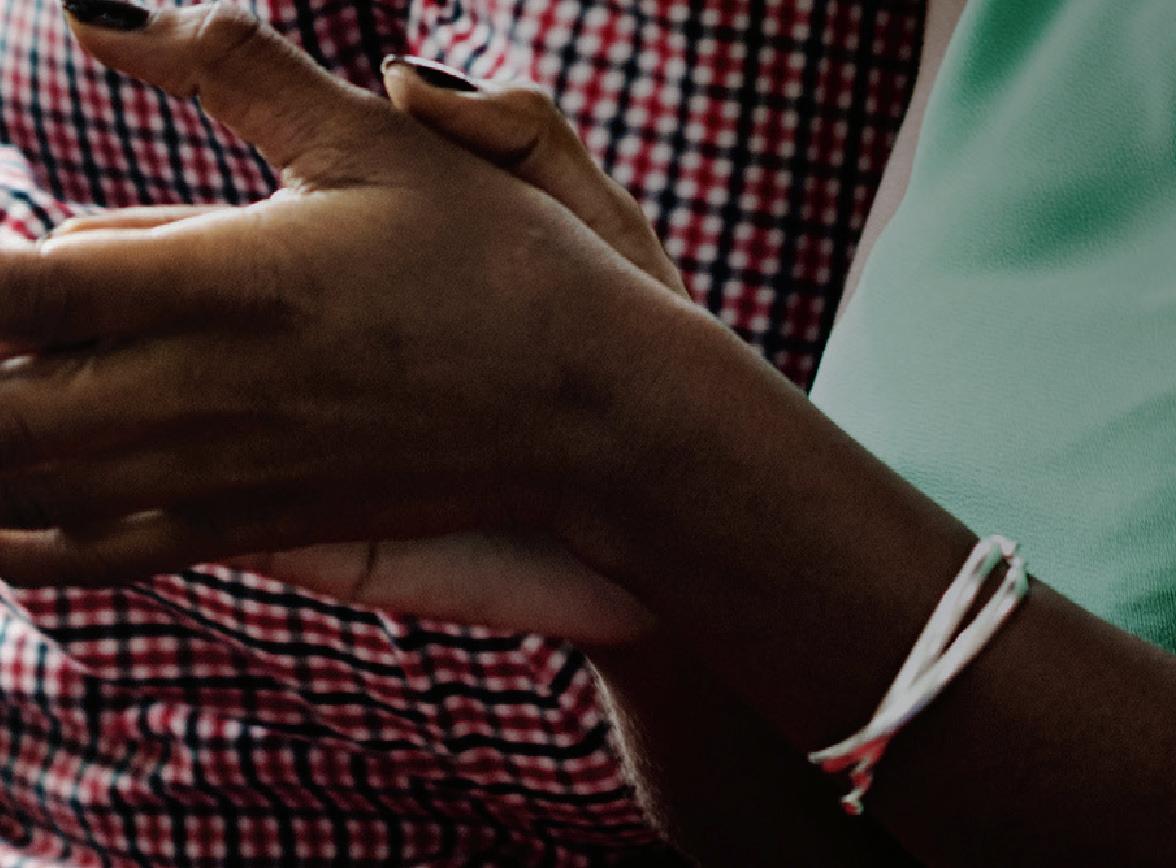






Takei’s acting credits include co-starring in five Star Trek movies and appearances on numerous television series.
In 2015, Takei made his Broadway debut in the musical Allegiance, which was inspired by his true-life experiences during World War II. In 2017, he starred in a revival of Stephen Sondheim’s Pacific Overtures in New York City.
Takei is the author of four books, including his autobiography To the Stars. His fifth book, New York Times bestselling graphic memoir They Called Us Enemy, was released in July 2019.
Takei has served as the spokesperson for the Human Rights Campaign’s Coming Out Project and was Cultural Affairs Chairman of the Japanese American Citizens League. He is also chairman emeritus and a trustee of the Japanese American National Museum. He was appointed to the Japan-U.S. Friendship Commission by former President Clinton, and the government of Japan awarded Takei the Order of the Rising Sun, Gold Rays with Rosette, for his contributions to U.S.Japanese relations.
Takei received both Bachelor and Master of Arts degrees from UCLA. In June 2019, Takei received the Distinguished Alumni Award in Theater from the UCLA School of Theater, Film and Television. georgetakei.com
CSO OCT 18: Beethoven & Tchaikovsky
RAMÓN TEBAR, conductor
Spanish Conductor Ramón
Tebar is currently Principal Conductor in Association with the Orquesta de Valencia, as well as Artistic Director of Opera Naples. He was previously Artistic Director of the Florida Grand Opera and Principal Guest Conductor of Valencia’s Palau de les Arts Reina Sofia.
Alongside his work in Valencia, the 2022–23 season saw Ramón Tebar make debuts with the Cincinnati Symphony Orchestra, Calgary Philharmonic, Copenhagen Philharmonic, Norrlandsoperans symfoniorkester and the Würth Philharmoniker, as well as at Frankfurt Opera with a new production of Saverio Mercadante’s Francesca da Rimini. He also returned to the Teatro Colón to conduct Bizet’s Les pêcheurs de perles, and to the Szczecin Philharmonic and the Basque National Orchestra in Bilbao for concerts.
In addition to his operatic career and his role as Music Director of the Orquestra de València, Tebar is sought after as a guest conductor with orchestras around the world. He has conducted the Spanish National Orchestra several times, and he further guested with many of Spain’s other orchestras. Beyond Spain, Tebar has guest conducted such orchestras as the Philharmonia in London, Prague Philharmonia, Het Gelders Orkest, Malaysian Philharmonic, Armenian Philharmonic, Orchestre de l’Opéra de Rouen Normandie, Szczecin Philharmonic, St. Petersburg Symphony, San Antonio Symphony and the Orquestra
Sinfónica Nacional de Perú. Tebar was also previously Artistic Director of the Santo Domingo Music Festival in Puerto Rico.
Tebar’s work can also be heard on recordings with Joseph Calleja and the Orquestra de la Comunitat Valenciana on the DECCA label, and with Gregory Kunde and the Orquesta Sinfonica de Navarra on Universal. ramon-tebar.com
JONATHAN BISS, piano
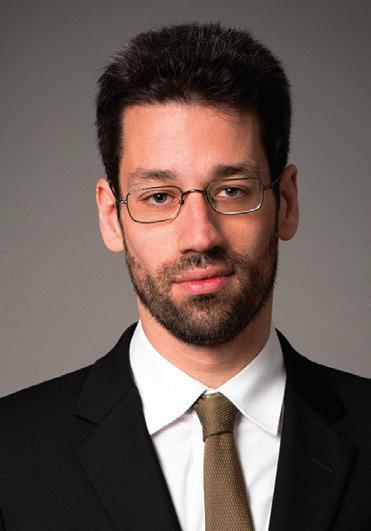
Jonathan Biss is a worldrenowned pianist who, in addition to performing with today’s leading orchestras, continues to expand his reputation as a teacher, musical thinker and one of the great Beethoven interpreters of our time. He is Co-Artistic Director alongside Mitsuko Uchida at the Marlboro Music Festival. He also recently led a massive open online course (MOOC) via Coursera, reaching an international audience of over 150,000. Biss writes extensively on his repertoire and has authored four audio- and e-books, including UNQUIET: My Life with Beethoven (2020).
During the 2022–23 season, Biss gave solo recitals in cities including Cologne, New York and Philadelphia; performed Beethoven trios with Midori and cellist Antoine Lederlin in Cologne, Engardin, Hamburg, London and Tokyo; and appeared as soloist with the Atlanta Symphony, Budapest Symphony and Rochester Philharmonic, as well as with the New York String Orchestra at Carnegie Hall.
Throughout his career, Biss has advocated for new music. In 2015, he began his Beethoven/5 commissioning project, in association with the Saint Paul Chamber Orchestra, pairing each Beethoven concerto with a new concerto composed in response. Among the Beethoven/5
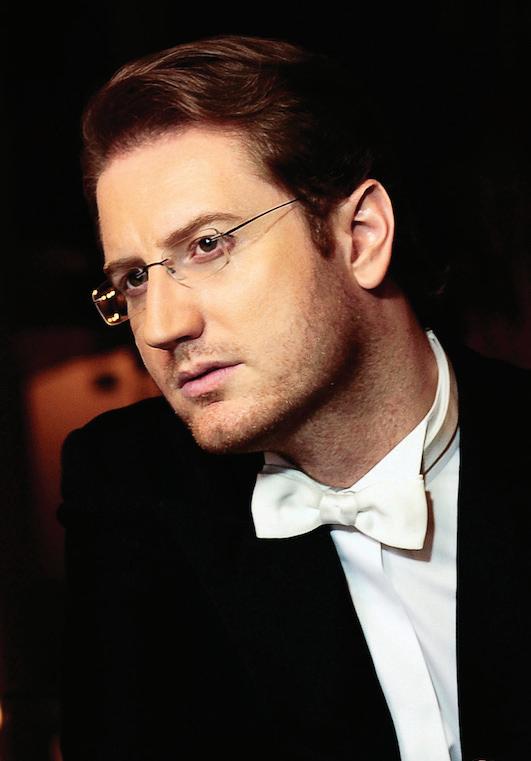
Fanfare Magazine | 39
SEP–OCT GUEST ARTISTS
©Benjamin Ealovega
commissions are Brett Dean’s Gneixendorfer
Musik—Eine Winterreise, Caroline Shaw’s Watermark, Timo Andres’s The Blind Banister (a finalist for the Pulitzer Prize in Music), Sally Beamish’s City Stanzas, and Salvatore Sciarrino’s Il sogno di Stradella. Prior to the Beethoven/5 project, Biss commissioned Lunaire Variations by David Ludwig, Interlude II by Leon Kirchner, Wonderer by Lewis Spratlan, and Three Pieces for Piano and a concerto by Bernard Rands.
Biss has been recognized with numerous honors, including the Leonard Bernstein Award presented at the 2005 Schleswig- Holstein Festival, Wolf Trap’s Shouse Debut Artist Award, the Andrew Wolf Memorial Chamber Music Award, Lincoln Center’s Martin E. Segal Award, an Avery Fisher Career Grant, the 2003 Borletti-Buitoni Trust Award, and a 2002 Gilmore Young Artist Award. His albums for EMI won the Diapason d’or de l’année and Edison awards. He was an artist-in-residence on American Public Media’s Performance Today and was the first American chosen to participate in the BBC’s New Generation Artist program. He is also on the piano faculty of the New England Conservatory. jonathanbiss.com
POPS OCT 20–22: Disney in Concert: The Sound of Magic DAMON GUPTON, conductor
Turn to p. 27 for a biography of Pops Principal Guest Conductor Damon Gupton.
CSO OCT 27–28: Ring Without Words

JAMES GAFFIGAN, conductor
Recognized worldwide for his natural ease and extraordinary collaborative spirit, American conductor James Ga gan has attracted international attention for his equitable prowess as both a conductor of symphony orchestras and opera. He is the General Music Director of Komische Oper Berlin and the Music Director of the Palau de les Arts Reina Sofía in Valencia, and he is Music Director of the Verbier Festival Junior Orchestra. Ga gan previously served as Principal
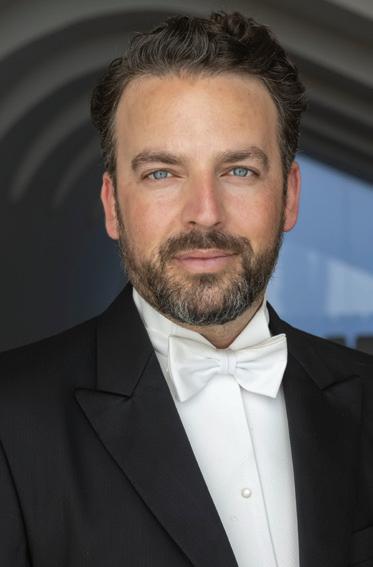
40 | 2023–24 SEASON SEP–OCT GUEST ARTISTS
©Miguel Lorenzo
Robert Porco, conductor Michael Unger, organ Elliot Madore, baritone $10 tickets—space is limited! Julia ADOLPHE Crown of Hummingbirds Maurice DURUFLÉ Requiem MAY FESTIVAL CHORUS AT CHRIST CHURCH CATHEDRAL SAT OCT 21, 2023 2 PM & 5 PM mayfestival.com 513.381.3300
Guest Conductor of both the Netherlands Radio Philharmonic Orchestra and the Trondheim Symphony Orchestra & Opera.
Recent orchestral appearances include London Symphony Orchestra, Royal Concertgebouw Orchestra, Orchestre de Paris, Wiener Symphoniker, Münchner Philharmoniker, Symphonieorchester des Bayerischen Rundfunks, Norske Opera and Ballet, Deutsches Symphonie Orchester Berlin, Staatskapelle Berlin, Czech Philharmonic and Luzerner Symphonieorchester. In North America, Ga gan regularly works with the New York Philharmonic, Cleveland Orchestra, Philadelphia Orchestra, San Francisco Symphony, National Symphony Orchestra, Los Angeles Philharmonic, Detroit Symphony Orchestra and Toronto Symphony Orchestra, among others.
A regular at The Metropolitan Opera, Bayerische Staatsoper and Opéra National de Paris, Ga gan has also conducted the Zürich Opera, Vienna Staatsoper, Staatsoper Hamburg, Dutch National Opera, Glyndebourne Festival, Lyric Opera of Chicago and Santa Fe Opera.
Passionate about music education and a product of the New York City public school
STRATEGIC PLAN Investors
The Orchestra launched a dynamic 10-year strategic plan in September of 2019. The plan guides us toward achieving our new vision: to be the most relevant orchestra in America. To thrive, we must inspire, innovate, and include, going above and beyond our current offerings to ensure our relevancy for future generations.

As we continue to implement this strategic plan, we would like to recognize those who have joined us in the early stages of this work by investing in the Orchestra’s innovative initiatives.
system, Ga gan believes that access to music education is the method by which America’s concert halls will finally begin to reflect our community and shrink the racial and gender gaps that currently exist in performing arts today. jamesga gan.com
LOLLIPOPS OCT 28: Halloween Spooktacular
DANIEL WILEY, conductor
Turn to p. 28 for a biography of CSO Assistant Conductor Daniel Wiley.
For more information about our guest artists, please text PROGRAM to 513.845.3024*.
*By texting to this number, you may receive messages that pertain to the organization and its performances; msg & data rates may apply. Reply HELP to help, STOP to cancel.
Anonymous
Anonymous Foundation
Mr. & Mrs. Frederick E. Bryan, III
Michael L. Cioffi & Rachael Rowe
Kelly Dehan & Rick Staudigel
Robert W. Dorsey
Ashley & Bobbie Ford
Mrs. Philip O. Geier*
Clifford J. Goosmann & Andrea M. Wilson
Ms. Delores Hargrove-Young
Healey Liddle Family Foundation, Mel & Bruce Healey
George L.* & Anne P. Heldman Fund
Patti & Fred Heldman
Dr. Lesley Gilbertson & Dr. William Hurford
Florence Koetters
Carol & Scott Kosarko
Mrs. Erich Kunzel
Whitney & Phillip Long
Janice W.* & Gary R. Lubin
Mark & Tia Luegering
Mr. & Mrs. Timothy Maloney
Mrs. Susan M. McPartlin
Messer Construction Co.
Jo Anne & Joe Orndorff
Marilyn J.* & Jack D. Osborn
Vicky & Rick Reynolds
Dianne & J. David Rosenberg
Moe & Jack Rouse
William S. Rowe Foundation
Ann & Harry Santen
Mark & Rosemary Schlachter
Harold C. Schott Foundation, Francie & Tom Hiltz, trustees
Irwin & Melinda Simon
Tom & Dee Stegman
Mrs. Theodore Striker
Mr. & Mrs. Jonathan Ullman
Thomas Vanden Eynden & Judith Beiting
Christopher & Nancy Virgulak
Mr. Randolph L. Wadsworth Jr.
Nancy C. Wagner & Patricia M. Wagner
Ginger & David W. Warner
Scott & Charla Weiss
DeeDee & Gary West
Fanfare Magazine | 41 SEP–OCT GUEST ARTISTS
—
Celebrating the arts and the joy they bring to life every day.
PNC is proud to be the Pops Season Sponsor and to support the Cincinnati Symphony Orchestra and Cincinnati Pops. Thank you for helping to make the Greater Cincinnati region a beautiful place to call home.
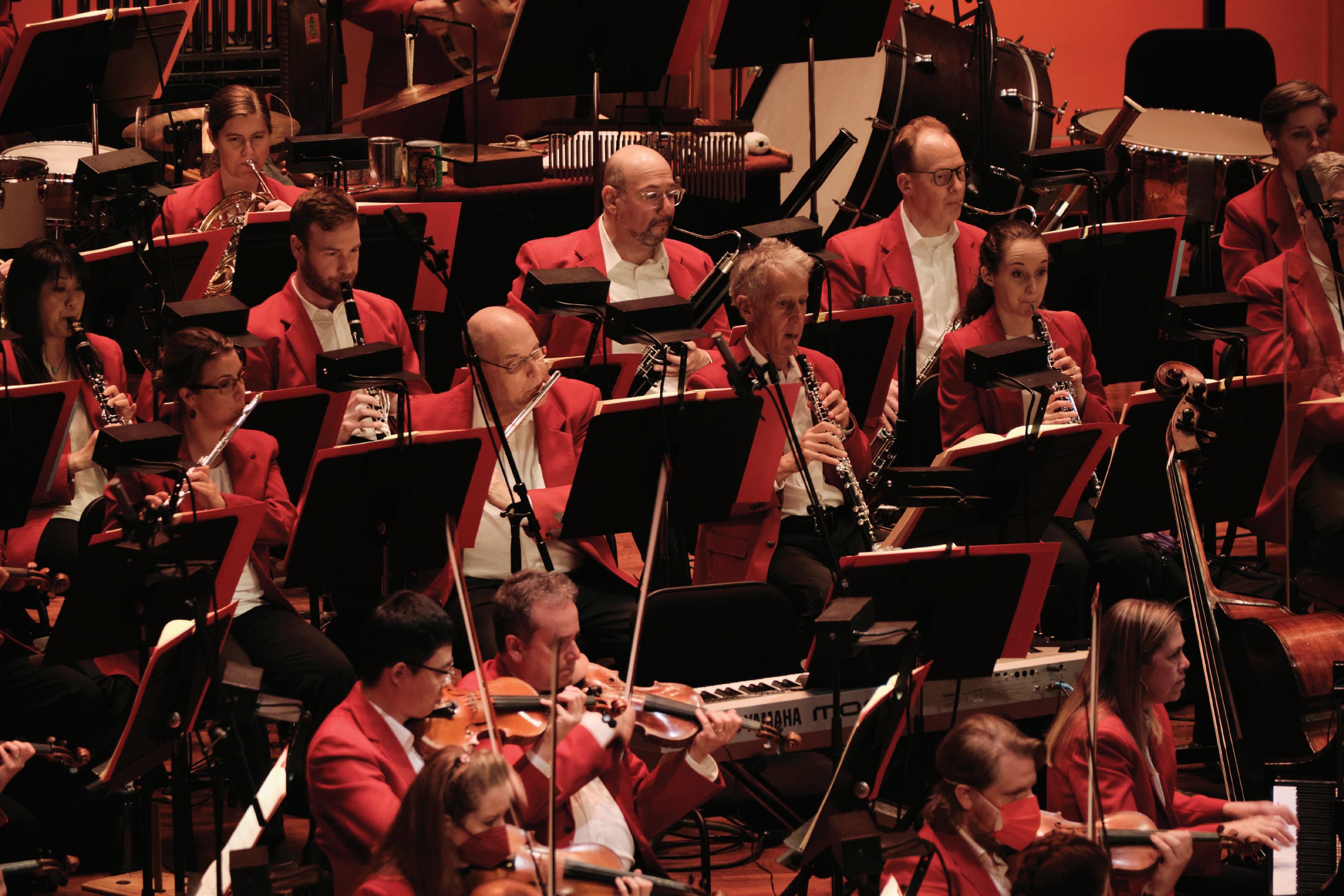
42 | 2023–24
SEASON
©2022 The PNC Financial Services Group, Inc. All rights reserved. PNC Bank, National Association. Member FDIC
SAT SEP 9, 7:30 pm
SUN SEP 10, 2 pm
Music Hall
THE PRINCESS BRIDE IN CONCERT SARAH HICKS, conductor
ACT III COMMUNICATIONS Presents A REINER/SCHEINMAN Production

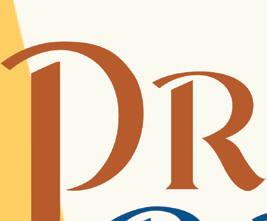
WILLIAM GOLDMAN’S
CARY ELWES • MANDY PATINKIN • CHRIS SARANDON CHRISTOPHER GUEST • WALLACE SHAWN • ANDRE THE GIANT
Introducing ROBIN WRIGHT
Special Appearances by PETER FALK and BILLY CRYSTAL
Edited by ROBERT LEIGHTON
Production Designed by NORMAN GARWOOD
Director of Photography


ADRIAN BIDDLE
Music by MARK
KNOPFLER
Executive Producer NORMAN LEAR
Screenplay by WILLIAM GOLDMAN
Produced by ANDREW SCHEINMAN and ROB REINER
Directed by ROB REINER
Today’s performance lasts approximately 1 hour and 45 minutes, including a 20-minute intermission. The performance is a presentation of the complete film The Princess Bride with a live performance of the movie’s entire score, including music played by the orchestra during the end credits. Out of respect for the musicians and your fellow audience members, please remain seated until the conclusion of the performance. ©Princess Bride, Ltd. All rights reserved.
Original musical score composed by Mark Knopfler ©1987 Straitjacket Songs Ltd. Used by permission. All rights reserved. “Storybook Love” written by Willy DeVille ©1987 Jockamo Music. Used by permission. All rights reserved.
The Cincinnati Pops Orchestra is grateful to Pops Season Sponsor PNC

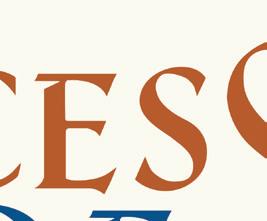



The Cincinnati Symphony Orchestra is grateful for the support of the Louise Dieterle Nippert Musical Arts Fund of the Greenacres Foundation and the Nina Browne Parker Trust, and for the thousands of people who give generously to the ArtsWave Community Campaign, the region’s primary source for arts funding. This project was supported in part by the Ohio Arts Council, which receives support from the State of Ohio and the National Endowment for the Arts
The Cincinnati Symphony Orchestra in-orchestra Steinway piano is made possible in part by the Jacob G. Schmidlapp Trust
Fanfare Magazine | 43
THE PRINCESS BRIDE | 2023–24 SEASON
A Note From the Composer

To have been a part of The Princess Bride gives me enormous pride and joy. To me, the picture has never lost an ounce of its freshness and charm. I couldn’t be more delighted to see it finding more devotees around the world with every passing year.
Now, to hear the score in the hands of a brilliant orchestral arranger, conductor and players, is an added privilege. I hope you have a wonderful evening in their company along with the many memories the film has created.
—Mark Knopfler
PRODUCTION CREDITS
The Princess Bride in Concert is produced by Film Concerts Live!, a joint venture of IMG Artists, LLC and The Gorfaine/Schwartz Agency, Inc.
Producers: Steven A. Linder and Jamie Richardson
Director of Operations: Rob Stogsdill
Production Manager: Sophie Greaves
Production Assistant: Katherine Miron
Worldwide Representation: IMG Artists, LLC
Technical Director: Mike Runice
Music Composed by Mark Knopfler
“Storybook Love” written by Willy DeVille
Musical Score Adapted and Orchestrated for Live Performance by Mark Graham
Music Preparation: Jo Ann Kane Music Service
Film Preparation for Concert Performance: Epilogue Media
Technical Consultant: Laura Gibson

Sound Remixing for Concert Performance: Chace Audio by Deluxe
The score for The Princess Bride has been specially adapted for live concert performance.
With special thanks to: Norman Lear, Mark Knopfler, Julie Dyer, David Nochimson, Paul Crockford, Sherry Elbe, James Harman, Peter Raleigh, Trevor Motycka, Bethany Brinton, Matt Voogt, Adam Michalak, Alex Levy, Adam Witt, and the musicians and sta of the Cincinnati Pops Orchestra.
THE PRINCESS BRIDE IN CONCERT
44 | 2023–24 SEASON
Mark Knopfler, ©Joby Sessions
SAT SEP 16, 8 pm
SUN SEP 17, 2 pm
Music Hall
MEMBERS
ACT I
KEVIN ZAKRESKY, conductor
OF THE MAY FESTIVAL CHORUS, Robert Porco, director
Produced by JASON MICHAEL PAUL and RYAN HAMLYN
Opening from The Elder Scrolls: Oblivion 2007 Suite
Introduction and the Call to Adventure


Journey
Refusal of the Call
Mass E ect
Supernatural Aid
Guild Wars 2 Suite
The Crossing of the First Threshold
BioShock
The Belly of the Whale
The Elder Scrolls: Blades
The Road of Trials
God of War: Ascension Main Theme
The Meeting with the Goddess
Final Fantasy: Terra’s Theme
The Temptress
Portal 2 Variations

Composer/Arranger


Jeremy Soule, orch. Robert Pu
Austin Wintory, orch. Andy Brick
Jack Wall, orch. Robert Pu
Leif Chappelle, Maclaine Diemer, Stan LePard and Jeremy Soule, orch. Stan LePard
Gary Schyman, orch. Robert Pu
Inon Zur, orch. Paul D. Taylor
Tyler Bates, orch. Robert Pu
Nobuo Uematsu, orch. Shota Nakama
Mike Morasky & J.S. Bach, orch. Geo Knorr & Andy Brick
INTERMISSION
The Cincinnati Pops Orchestra is grateful to Pops Season Sponsor PNC
The Cincinnati Symphony Orchestra is grateful for the support of the Louise Dieterle Nippert Musical Arts Fund of the Greenacres Foundation and the Nina Browne Parker Trust, and for the thousands of people who give generously to the ArtsWave Community Campaign, the region’s primary source for arts funding. This project was supported in part by the Ohio Arts Council, which receives support from the State of Ohio and the National Endowment for the Arts
The Cincinnati Symphony Orchestra in-orchestra Steinway piano is made possible in part by the Jacob G. Schmidlapp Trust
Fanfare Magazine | 45
| 2023–24
HEROES SYMPHONY
SEASON
ACT II
Atonement with the Father
Metal Gear Solid IV Harry Gregson-Williams & Nobuko Toda, orch. Shota Nakama
Apotheosis
Chrono Suite Yasunori Mitsuda, orch. Adam Klemens

The Ultimate Boon
Starfield Suite Inon Zur, orch. Paul D. Taylor
Refusal of the Return
Dragon Age Inon Zur, orch. Paul D. Taylor
The Magic Flight
Castlevania Medley Kinuyo Yamashita, Masahiro Ikariko, Michiru Yamane & Oscar Araujo, orch. C. Seiter
Rescue from Without Shadow of the Colossus Kow Otani, orch. Nic Raine
Crossing the Return Threshold
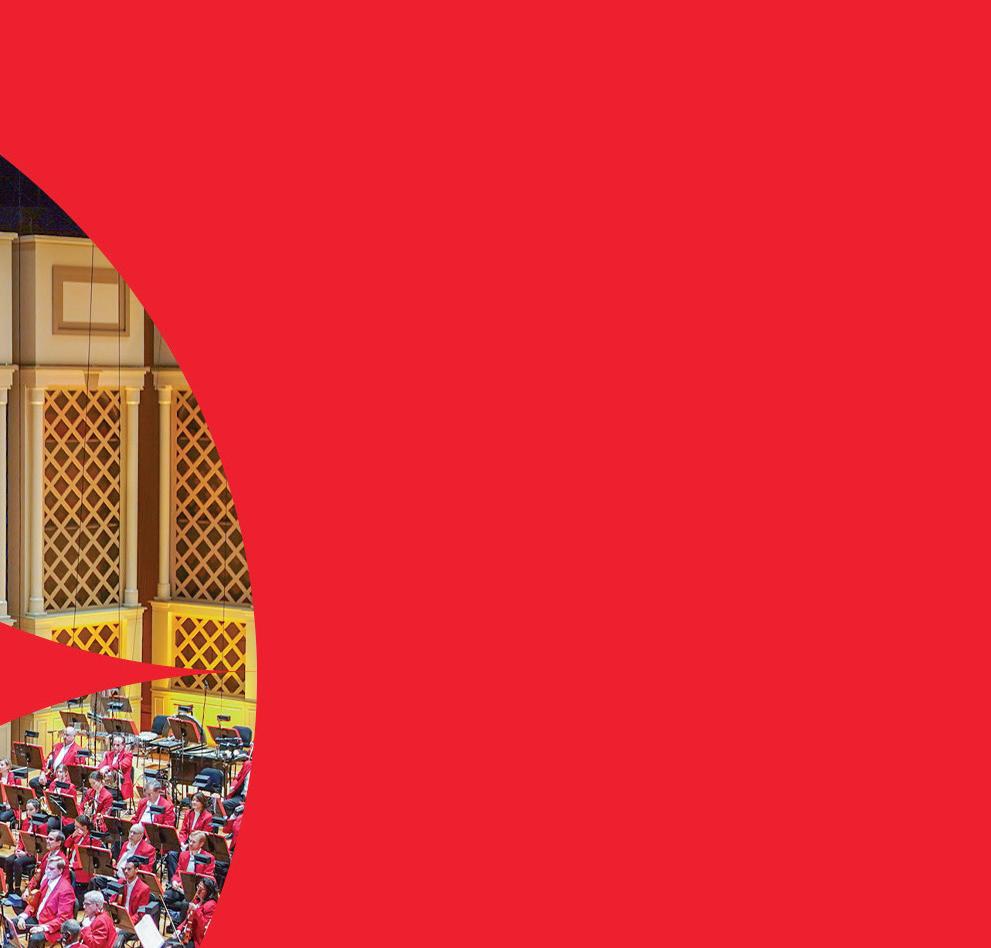
Fallout Suite Inon Zur, orch. Paul D. Taylor
Master of Two Worlds
Halo Medley Marty O’Donnell & Michael Salvatori, orch. Andy Brick and Arnie Roth
Music for the Narrations is from the game Dear Esther Jessica Curry, orch. Andy Brick
Narrations spoken by Nigel Carrington
Soloists from the Chorus: Christin Sears, soprano; Megan Lawson, mezzo-soprano
— Choose ANY 4 OR MORE POPS CONCERTS AND SAVE!
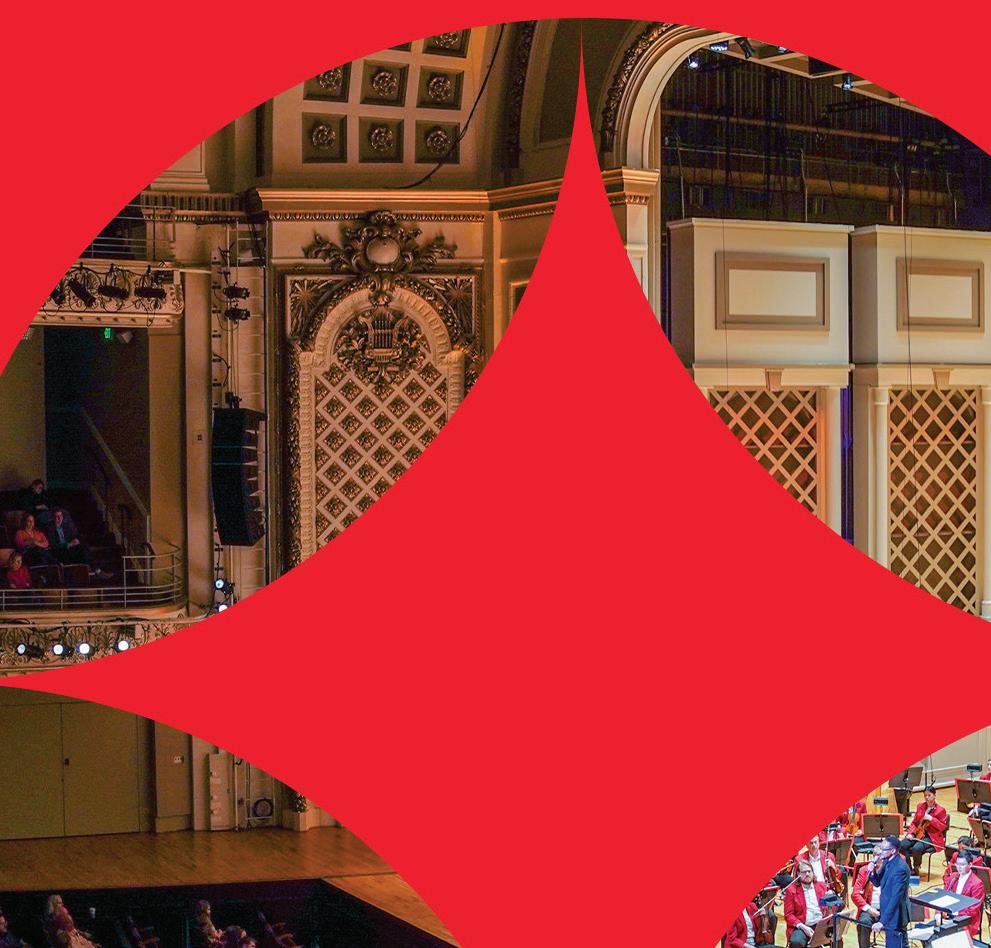
46 | 2023–24 SEASON CREATE YOUR OWN MAGIC with unforgettable moments for all ages at the
cincinnatipops.org/create
HEROES SYMPHONY
John Morris Russell, conductor
Stephen Schwartz, piano and host
Shaleah Adkisson, vocalist
Scott Coulter, vocalist
Debbie Gravitte, vocalist
Michael McCorry Rose, vocalist
John Boswell, piano
Grammy and Oscar-winning composer and musical icon Stephen Schwartz joins conductor John Morris Russell and the Pops for performances of his exquisite songs, featuring selections from Pippin, Godspell, Pochahontas, The Hunchback of Notre Dame, Children of Eden, Wicked, and more.
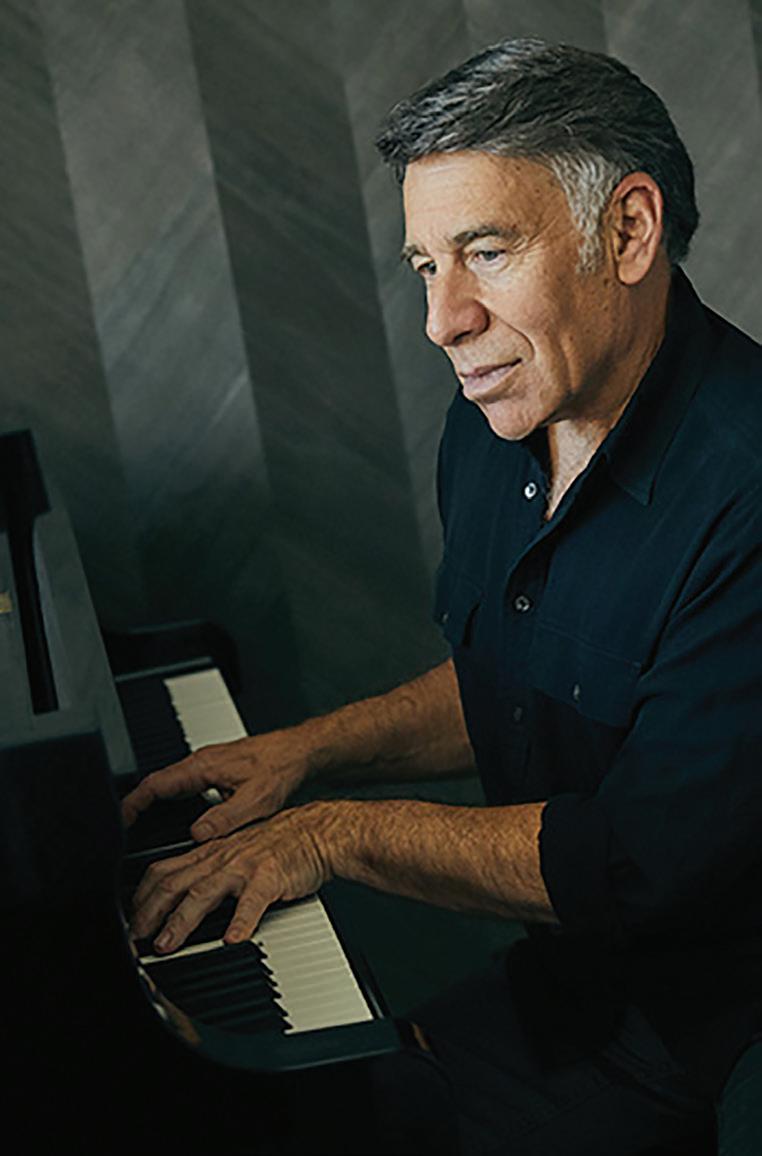
Selections will be announced from the stage.
There will be one 20-minute intermission.
FRI SEP 22, 7:30 pm



SAT SEP 23, 7:30 pm
SUN SEP 24, 2 pm
Music Hall
For more information about this program, please text PROGRAM to 513.845.3024*.

The Cincinnati Pops Orchestra is grateful to Pops Season Sponsor PNC
The Cincinnati Symphony Orchestra is grateful for the support of the Louise Dieterle Nippert Musical Arts Fund of the Greenacres Foundation and the Nina Browne Parker Trust, and for the thousands of people who give generously to the ArtsWave Community Campaign, the region’s primary source for arts funding. This project was supported in part by the Ohio Arts Council, which receives support from the State of Ohio and the National Endowment for the Arts
The Cincinnati Symphony Orchestra in-orchestra Steinway piano is made possible in part by the Jacob G. Schmidlapp Trust
*By texting to this number, you may receive messages that pertain to the organization and its performances; msg & data rates may apply. Reply HELP to help, STOP to cancel.

Fanfare Magazine | 47 DEFYING GRAVITY | 2023–24 SEASON





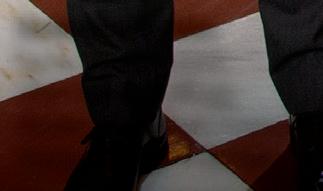

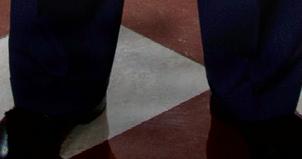

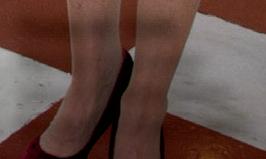
Fort Washington Investment Advisors, Inc., a member of Western & Southern Financial Group, is honored to help advance the Cincinnati Symphony Orchestra’s mission to seek and share inspiration. Learn how we can work together. fortwashington.com FORT WASHINGTON INVESTMENT ADVISORS PROUD PARTNER OF THE CINCINNATI SYMPHONY ORCHESTRA
Bradley J. Hunkler Senior Vice President, Chief Financial Officer, Western & Southern Financial Group, CSO Board Member
Kate C. Brown, CFP® Managing Director, Fort Washington, CSO Board Member
John F. Barrett Chairman, President & CEO, Western & Southern Financial Group
Maribeth S. Rahe President & CEO, Fort Washington
Tracey M. Stofa Managing Director, Head of Private Client Group, Fort Washington
SAT SEP 30, 7:30 pm
SUN OCT 1, 2 pm
Music Hall
CHRISTIAN REIF, conductor CLARA-JUMI KANG, violin
Manuel de FALLA Interlude and Spanish Dance (1876–1946) from La vida breve (“The Brief Life”)
Sergei PROKOFIEV Concerto No. 2 in G Minor for Violin and Orchestra, Op. 62 (1891–1953) Allegro moderato Andante assai Allegro, ben marcato
INTERMISSION
Igor STRAVINSKY Le Sacre du printemps (“The Rite of Spring”) (1882–1971) Part I: The Adoration of the Earth Part II: The Sacrifice
These performances are approximately 110 minutes long, including intermission.
The CSO is grateful to CSO Season Sponsor Western & Southern Financial Group and Presenting Sponsor The Ladislas & Vilma Segoe Family Foundation

The Ladislas & Vilma Segoe Family Foundation


The Cincinnati Symphony Orchestra is grateful for the support of the Louise Dieterle Nippert Musical Arts Fund of the Greenacres Foundation and the Nina Browne Parker Trust, and for the thousands of people who give generously to the ArtsWave Community Campaign, the region’s primary source for arts funding. This project was supported in part by the Ohio Arts Council, which receives support from the State of Ohio and the National Endowment for the Arts
Pre-Concert Talks are made possible by an endowed gift from Melody Sawyer Richardson
WGUC is the Media Partner for these concerts.
The Cincinnati Symphony Orchestra in-orchestra Steinway piano is made possible in part by the Jacob G. Schmidlapp Trust
THE RITE OF SPRING | 2023–24 SEASON
Fanfare Magazine | 49
n Composed: 1904–05
n Premiere: April 1, 1913 in Nice, France
n Instrumentation:
2 flutes, piccolo, 2 oboes, English horn, 2 clarinets, bass clarinet, 2 bassoons, 4 horns, 2 trumpets, 3 trombones, tuba, timpani, bass drum, castanets, crash cymbals, glockenspiel, triangle, 2 harps, celeste, strings
n CSO notable performances: First: January 1987, Jesús López Cobos conducting. Most Recent: February 2008 for a special concert (Fine Arts Fund Weekend Sampler), Eric Dudley conducting.
Recording: Falla: The ThreeCornered Hat (1987), Jesús López Cobos conducting
n Duration: approx.
8 minutes
MANUEL de FALLA
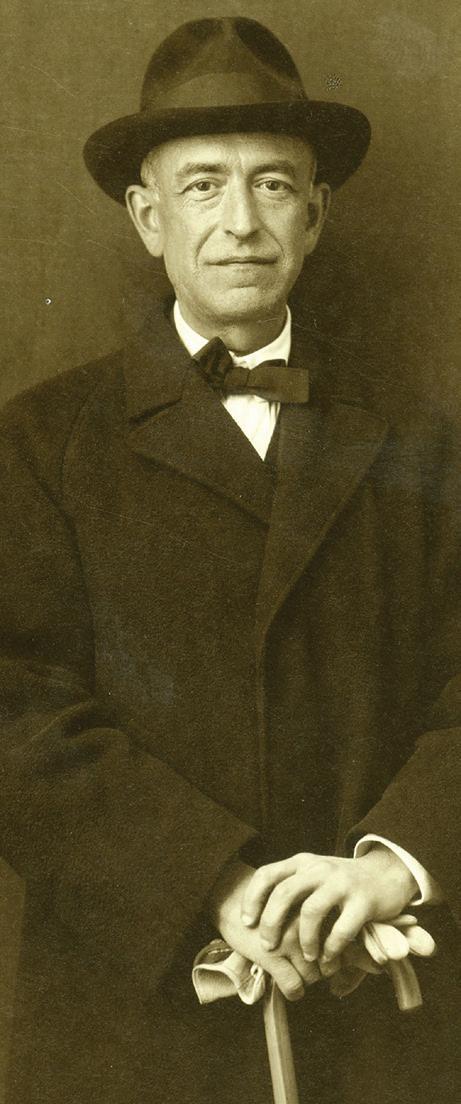
Born: November 23, 1876, Cádiz, Spain
Died: November 14, 1946, Alta Gracia, Argentina
Interlude and Spanish Dance from La vida breve (“The Brief Life”)
Between 1900 and 1902, while he was still a student at the Barcelona Conservatory, Falla wrote a series of five zarzuelas, the traditional form of popular Spanish musical theater mixing music and spoken dialogue whose origins trace back to the 17th century, but the works excited little interest, and only Los amores de la Inés (“Sweethearts of Inés”) was staged (Madrid, April 12, 1902). In 1904, the San Fernando Academy of Fine Arts in Madrid announced a competition for a new “Spanish lyrical drama,” and Falla eagerly applied. Performance of the winning entry was implied by the publicity materials, and Falla hoped that the receipts, should his opera be chosen, would fund his long-standing desire to study in Paris. He chose a successful writer of zarzuela librettos (and a fellow native of Cádiz), Carlos Fernández-Shaw, to supply the text. As the scores had to be submitted “before sunset” on March 31, 1905, Falla set quickly to work, but his schedule became complicated when José Tragó, his old Conservatory teacher, convinced him to enter a piano contest sponsored by the instrument manufacturers Ortiz y Cussó—planned to begin the day after the deadline for the opera submissions! Falla decided that he had little chance in the piano competition, and he concentrated instead during the following months on the new opera, titled La vida breve (“The Brief Life”). He finished the work just in time, and then returned to his piano practice, grateful that he would be among the last to perform at the two-week competition. He worked furiously on the required pieces—a Bach fugue, a Beethoven sonata, and compositions by Chopin, Schumann, Liszt and Saint-Saëns—and played with such emotion and intensity at his recital that one of the judges was moved to tears. He placed first in that competition and, a few months later, learned that La vida breve had been chosen as the winning entry in the Academy contest. His elation turned to frustration, however, when he was informed that, owing to some illdefined administrative problem, the new opera would not be staged. He reluctantly went back to teaching piano lessons and saved enough money during the following months to finance his trip to Paris. In the summer of 1907, he set out for the French capital with the score of La vida breve tucked into his luggage, planning to stay a week. He did not return to Spain for seven years. La vida breve was finally premiered on April 1, 1913, when it was successfully staged at the Casino at Nice.
Suzanne Demarquez outlined the stark plot of La vida breve in her biography of Falla:
A Gypsy girl, Salud, lives with her grandmother and her aunt in the Albaïcin quarter of Granada. She has been seduced by Paco, a fashionable young man. Both have sworn eternal love, but Paco has deserted Salud for a rich novia [i.e., fiancée], Carmela, whom he plans to marry. On the day of the wedding, Salud, followed by her relations, appears in the middle of the wedding feast, reproaches her lover for his unscrupulous conduct, and falls dead at his feet.
The Interlude and Dance from La vida breve not only suggest the opera’s Andalusian setting but also distill the essence of Falla’s Spanish musical nationalism.
—Dr. Richard E. Rodda
50 | 2023–24 SEASON
SEP 30–OCT 1 PROGRAM NOTES
Manuel de Falla
SERGEI PROKOFIEV
Born: April 23, 1891, Sontsovka, Ekaterinoslav, Russia
Died: March 5, 1953, Moscow
Concerto No. 2 in G Minor for Violin and Orchestra, Op. 63
1934 was a year of indecision for Prokofiev. He spent a large part of it visiting Russia, yet respect for his work was becoming especially high in the West. He was, for example, elected to honorary membership in the Academy of Music in Rome. And, as a result of his growing fame, he was asked by a group of French musicians to compose a violin concerto for the famous virtuoso Robert Soetens. The composer was torn between remaining in the West to take advantage of his rising fame and returning to the homeland he had left 16 years earlier.

He knew full well that to move back to Russia would affect his musical style, because the brilliant, hard driving, powerful works he had been writing while living in Paris would never satisfy the official Soviet requirements for art. Russian music was supposed to be readily accessible, melodic and consonant.
The Second Violin Concerto became a transitional work. The first movement was composed in Paris, while the remaining movements were written after Prokofiev’s return to Russia. Stylistically, however, the concerto is typical of his Soviet period, in that it is lyrical, tonal, relatively consonant, and simplified.
Despite returning to Russia, the composer was still able to make extensive concert tours. Consequently, the concerto was composed in hotel rooms in a variety of European cities. The premiere took place on Prokofiev’s and Soetens’ tour of Spain, Portugal, Morocco, Algeria and Tunisia.
When Soetens premiered the concerto in Madrid, Prokofiev was accorded a standing ovation by both audience and orchestra. Later a special delegation was sent to the composer to express appreciation for his having allowed the work to be played first in Spain.
The first movement is cast in a traditional sonata form, except that the usual opposition between a dramatic first theme and a lyrical second theme is not evident. Both themes are lyrical. Nonetheless, there is drama, as well as excitement and virtuosity, in the transitional and developmental passages. As the development section is remarkably straightforward, it is easy to follow the two themes through their various transformations. Prokofiev’s concern with accessibility is clear throughout the concerto.
The second movement, like the first, is predominantly lyrical, with the solo instrument seldom silent. Again, Prokofiev makes the main theme’s transformations easy to follow. Many of the textures derive from the opening opposition of staccato (short note) accompaniment and legato (smoothly connected) solo line. At the very end these roles are reversed, as the violin plays a pizzicato accompaniment to the lyrical tune in the cellos, horns and clarinets.
In contrast to the earlier movements, the finale is brash, a bit sarcastic, almost demonic—certainly not lyrical. As earlier, the solo instrument plays nearly constantly. There are no cadenzas. Despite the lack of outright lyricism, the music is melodic, as befits a concerto by a proper Soviet composer. Dance rhythms abound, and several times the music almost becomes a waltz. There are also exciting rhythmic and metric asymmetries, such as the passage in 7/4 time that is heard twice.
Prokofiev’s Second Violin Concerto was written nearly 20 years after his First. Comparisons are instructive. What is surprising is that the two works are not more different, considering the avant-garde music the composer was creating in the intervening years. Although there are certain stylistic differences, they share the idea of lyricism contrasted with harshness.
n Composed: 1935
n Premiere: December 1, 1935, Madrid, Enrique Arbós conducting; Robert Soetens, violin
n Instrumentation: solo violin, 2 flutes, 2 oboes, 2 clarinets, 2 bassoons, 2 horns, 2 trumpets, bass drum, castanets, snare drum, suspended cymbals, triangle, strings
n CSO notable performances: First: December 1938 Eugene Goossens conducting with violinist Jascha Heifetz.
Most Recent: March 2019 Louis Langrée conducting with violinist Esther Yoo.
n Duration: approx. 27 minutes
For more information about this program, please text PROGRAM to 513.845.3024*.
*By texting to this number, you may receive messages that pertain to the organization and its performances; msg & data rates may apply. Reply HELP to help, STOP to cancel.
Fanfare Magazine | 51
PROGRAM NOTES
Sergei Prokofiev
Composed: 1910–13, revised in 1921 and 1943
Premiere: May 29, 1913 in Paris, Pierre Monteux conducting
Instrumentation: 3 flutes (incl. piccolo), piccolo, alto flute, 4 oboes (incl. English horn), English horn, 3 clarinets (incl. bass clarinet), bass clarinet, E-flat clarinet, 4 bassoons (incl. contrabassoon), contrabassoon, 8 horns (incl. 2 Wagner tubas), piccolo trumpet in D, 4 trumpets in C (incl. E-flat bass trumpet), 3 trombones, 2 tubas, 2 timpani, antique cymbals, bass drum, crash cymbals, guiro, tam-tam, tambourine, triangle, strings,
CSO notable performances: First: April 1936, Eugene Goossens conducting. Most Recent: September 2018, Louis Langrée conducting. Other: November 1940, Igor Stravinsky conducting; November 1987, Iván Fischer conducting.
Duration: approx. 33 minutes

The First Concerto was composed while Prokofiev was preparing to leave Russia, the Second upon his return. Thus the two works form an appropriate frame around the composer’s Parisian period.
—Jonathan D. Kramer
IGOR STRAVINSKY
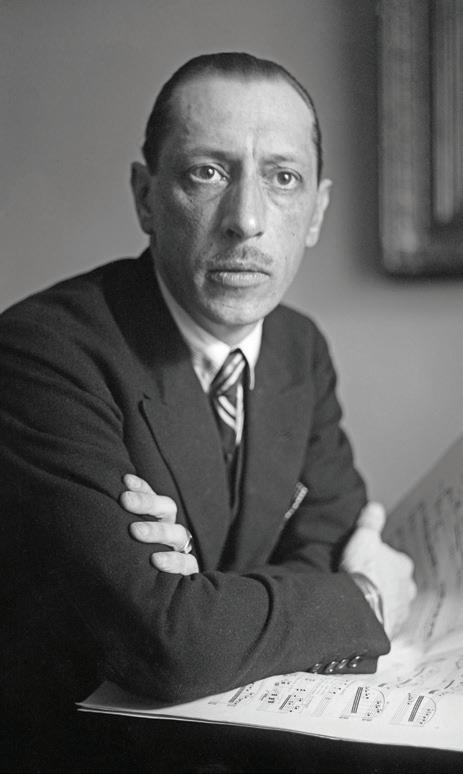
Born: June 17, 1882, Oranienbaum, near St. Petersburg
Died: April 6, 1971, New York City
Le Sacre du printemps (“The Rite of Spring”)
Stravinsky’s conception for the epochal The Rite of Spring came to him as he was finishing The Firebird in 1910. He had a vision of “a solemn pagan rite; wise elders, seated in a circle, watching a young girl dance herself to death. They were sacrificing her to propitiate the god of spring.” Stravinsky knew that his friend Nicholas Roerich, an archeologist and an authority on the ancient Slavs, would be interested in his idea. Stravinsky also shared the vision with Serge Diaghilev, impresario of the Ballets Russes, the company that had commissioned The Firebird. All three men were excited by the possibilities of the project—Diaghilev promised a production and encouraged Stravinsky to begin work immediately. Having just nearly exhausted himself with the rigors of completing and staging The Firebird, however, Stravinsky decided to compose a Konzertstück for piano and orchestra as relaxation before undertaking his pagan ballet. This little “concert piece,” however, grew into the ballet Petrushka, and he could not return to The Rite until the summer of 1911.
“What I was trying to convey in The Rite,” said Stravinsky, “was the surge of spring, the magnificent upsurge of nature reborn.” Inspired by childhood memories of the coming of spring to Russia (“which seemed to begin in an hour and was like the whole earth cracking,” he remembered), he worked with Roerich to devise a libretto that would, in Roerich’s words, “present a number of scenes of earthly joy and celestial triumph as understood by the ancient Slavs.” Stravinsky labored feverishly on the score through the winter of 1911–1912, and Diaghilev scheduled the premiere for May 1913. The performance created a sensation (and a nearriot), and The Rite’s position in the repertory was soon secured.
Robert Lawrence, in The Victor Book of Ballet, provided the following summary of the stage action:
The plot deals with archaic Russian tribes and their worship of the gods of the harvest and fertility. These primitive peoples assemble for their yearly ceremonies, play their traditional games, and finally select a virgin to be sacrificed to the gods of Spring so that the crops and tribes may flourish. There is a prelude in which the composer evokes the primitive past. Insistent, barbaric rhythms are heard, shifting accent with almost every bar. The first rites of Spring are being celebrated, and a group of adolescents appears. They dance until other members of the tribe enter. Then the full round of ceremonies gets under way: a mock abduction, games of the rival tribes, the procession of the Sage, and the thunderous dance of the Earth. The curtain falls, and there is a soft interlude representing the pagan night. Soon the tribal meeting place is seen again. It is dark and the adolescents circle mysteriously in preparation for the choice of the virgin to be sacrificed to the gods. Their dance is interrupted, and one of the girls is marked for the tribal o ering. The others begin a wild orgy glorifying the Chosen One and— in a barbaric ritual—call on the shades of their ancestors. Finally the supreme moment of the ceremony arrives: the ordeal of the Chosen One. It is the maiden’s duty to dance until she perishes from exhaustion. Throughout the dance, the music gathers power until it ends with a crash as the Maiden dies.
—Dr. Richard E. Rodda
52 | 2023–24 SEASON PROGRAM NOTES
Igor Stravinsky
WED OCT 4, 7:30 pm Music
SAMUEL LEE, conductor DANIEL WILEY, conductor
Giuseppe Los Huesos de Yayael (“The Bones of Yayael”) GALLO-BALMA (b. 1994)
Joseph SOWA Summer Has Ten Thousand Stars (b. 1984)
Martin HEBEL Radiant Pillars (b. 1990)
Leyou WANG Impressions from Tianqiao (b. 1992)
ABOUT EARSHOT


EarShot is the nation’s first systemic program for building relationships between orchestras and emerging composers, and is facilitated through Readings, CoLABoratory Fellowships, Commissions and Professional Development. EarShot expands the definition of American orchestral music to ensure a vibrant and inclusive future, and is a program of the American Composers Orchestra completed in partnership with American Composers Forum, the League of American Orchestras, and New Music USA. Composers for EarShot Readings are selected through an open call with no fee or age limit; more information on EarShot Readings and all of ACO’s EarShot programs can be found at americancomposers.org
Read more about the EarShot program on pp. 21–23.
This performance is approximately 60 minutes long.
The CSO is grateful to CSO Season Sponsor Western & Southern Financial Group EarShot is made possible by a generous gift from Irwin & Melinda Simon

The Cincinnati Symphony Orchestra is grateful for the support of the Louise Dieterle Nippert Musical Arts Fund of the Greenacres Foundation and the Nina Browne Parker Trust, and for the thousands of people who give generously to the ArtsWave Community Campaign, the region’s primary source for arts funding. This project was supported in part by the Ohio Arts Council, which receives support from the State of Ohio and the National Endowment for the Arts
The Cincinnati Symphony Orchestra in-orchestra Steinway piano is made possible in part by the Jacob G. Schmidlapp Trust
Hall
EARSHOT | 2023–24 SEASON
Fanfare Magazine | 53
GIUSEPPE GALLO-BALMA
Born: 1994, Santo Domingo, Dominican Republic
Los Huesos de Yayael (“The Bones of Yayael”)
Giuseppe Gallo-Balma has been commissioned by the CSU Philharmonic, hornist Lucas Testin, the CSU Flute Choir and Percussion Ensemble, and bassoonist Traian Sturza. His music has been performed by JACK Quartet, Transient Canvas, Re(a)d Trio and newEar Contemporary Chamber Ensemble, and has been featured on the radio show Sound Currents (KCUR/NPR). As the son of Haitian and Italian immigrants raised in the Dominican Republic, Gallo-Balma seeks to bring an amalgamation of these three distinct cultures to the foreground of his music; he also takes special interest in the musical aspects of Indigenous and Afro-Caribbean communities.

Composer’s Note: The Bones of Yayael for Orchestra uses elements from Dominican and Haitian folklore, such as rhythms taken directly from the Afro-Latiné communities (mainly from Haitian voodoo drumming), combined with melodic lines that imitate the Taíno way of singing and playing.

In the Caribbean Taíno culture there is a tale that describes the formation of the seas. The tale talks about a man named Yaya, whose son, Yayael, plots to kill him. In order to avoid his demise at the hands of his son, Yaya kills Yayael instead. Yaya places the remains of his son in a gourd, where the bones turn into fish. One day, a zemi (a Taíno ancestral spirit) named Deminán and his three brothers walk into Yaya’s house with the intention of stealing and eating the fish. Deminán accidentally drops the gourd and breaks it. The water and the fish that come out of the gourd fill up the earth, leading to the creation of the seas.
This piece is a depiction of the moments right before, during and after the gourd breaks. Through a cumulative process using a set of numbers derived from a Fibonacci sequence, the ensemble gradually grows in intensity. It builds up to a climax right at the moment where the gourd is dropped and breaks, leading to a resolution of the piece that depicts the earth being filled with water and life.
JOSEPH SOWA
Born: 1984, Provo, Utah
Summer Has Ten Thousand Stars
Joseph Sowa draws on diverse influences—from linguistics to plainchant to American football—to create music focused on detailed textures and vivid colors. His music has been performed by professionals and amateurs alike, including groups such as Hub New Music, Collage New Music, Ensemble Dal Niente, the Genesis Chamber Singers, the Ludovico Ensemble the PRISM Quartet, and middle schools and high schools across North America. The founder of the Wizarding School for Composers, Sowa has received awards from ASCAP, the American Prize and the Barlow Endowment, and he holds a doctorate in Music Composition and Theory from Brandeis University.
Composer’s Note: Summer Has Ten Thousand Stars was inspired by two poems. The first, “When I Heard the Learn’d Astronomer” by Walt Whitman, expresses how experience can be so much more stirring than facts:
When I sitting heard the astronomer where he lectured with much applause in the lecture-room, How soon unaccountable I became tired and sick, Till rising and gliding out I wander’d off by myself, In the mystical moist night-air, and from time to time, Look’d up in perfect silence at the stars.
The second, “I Wandered Lonely as a Cloud” by William Wordsworth, fleshed out that image from Whitman and inspired my piece’s title: “Continuous as the stars that shine / And twinkle on the milky way, / …Ten thousand saw I at a glance.”
54 | 2023–24 SEASON
EARSHOT PROGRAM NOTES
Giuseppe Gallo-Balma
Joseph Sowa
The piece seeks to capture the wonder of staring into the star-filled sky on a dark summer night: the adventure of driving up into the canyon, the stillness of watching the stars come out in silence, and the excitement of being connected to nature.
MARTIN HEBEL
Born: 1990, New Haven, Connecticut Radiant

Pillars
Six-time American Prize winner and 2020 recipient of the Presser Foundation’s Graduate Music Award, composer Martin Hebel works at the intersection of music, advocacy and interdisciplinary collaboration. He responds to challenges of today’s global community with socially conscious compositions exploring the common ground of shared experiences—such as inequity and conflict—to spark positive change through music. Hebel’s current project, Uplifting Unheard Voices, amplifies the voices of migrants and refugees he interviewed by setting their words to music. Hebel’s portfolio includes orchestral and wind ensemble works, instrumental and vocal chamber music, and multi-media compositions involving video projection and electronics, as well as collaborations with a diverse range of other artists.
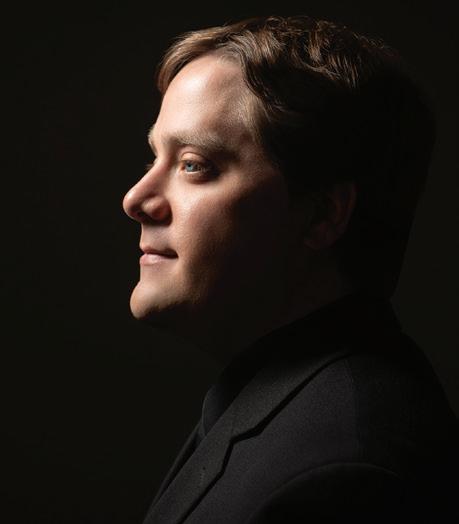
Composer’s Note: Radiant Pillars is an abstract reflection on two scientific observations that expanded our understanding of the universe: the Hubble telescope image, “Pillars of Creation,” showing stars forming from massive clouds of gas and dust, and the discovery of the Cosmic Microwave Background, the edge of the universe still expanding from the Big Bang.
Radiant Pillars begins with light, gently reverberating motives and delicate fragments that contrast with darker, colossal columns, illuminated by cascades of vivid, intense color. Bright, vibrant flourishes follow, building a torrent of energy as Radiant Pillars culminates in an immense explosion. Finally, clear, gentle fragments return, echoing as they fade away.
LEYOU WANG
Born: 1992, Beijing, China Impressions
from Tianqiao
In 2020, Leyou Wang was accepted on full scholarship into the DMA program of the University of Missouri Kansas City and, during his study, several of his orchestral pieces have been performed, under his baton, by professional orchestras including the Stuttgart Philharmonic Orchestra and Stuttgart Chamber Orchestra. His symphonic piece The Battle of Shantsuguan won the 2015 Winter Kompolize Award for composition, and he led the premiere given by the Lietze Orchestra in the Linden Church, the Berlin Broadcasting House (Große Sall des BBR). Since then, multiple orchestral pieces of his have been performed by professional orchestras in Germany, mostly under his direction, and recent awards include the Lei Cine Film Scoring Competition (2021) and the Dr. Gerald Kemner Prize for orchestra composition (2022).

Composer’s Note: With Impressions from Tianqiao, the composer tries to paint a picture of Beijing Tianqiao marketplace in the olden days, where street artists and buskers would present a wide variety of performances, from singing and talking (quyi shuochang) to acrobatics.
The piece is in traditional sonata form. The primary theme is melodious and was inspired by the singing of Chinese quyi. The secondary theme is a dance movement and imitates the acrobatic performances. The exposition ends in a fiery Allegro that demonstrates the lively atmosphere at Tianqiao. The three themes presented in the exposition are then freely developed. The recapitulation begins with the secondary theme and the primary theme, which appears later, becomes the climax of the entire piece. The recap of the Allegro brings the piece to a sudden and violent stop.
Leyou Wang
Martin Hebel
PROGRAM NOTES Fanfare Magazine | 55
FRI OCT 6, 7:30 pm |
LOUIS LANGRÉE, conductor
CLAYTON STEPHENSON, piano
KAYDEN KELLY, piano
JOSHUA MHOON, piano
Piotr Ilyich
Concerto No. 1 in B-flat Minor for Piano and Orchestra, Op. 23
Allegro non troppo e molto maestoso. Allegro con spirito (1840–1893)
TCHAIKOVSKY
Andantino semplice. Prestissimo. Andante semplice
Allegro con fuoco
Clayton Stephenson, pianist
Concerto No. 1 in E-flat Major for Piano and Orchestra (1811–1886)
Franz LISZT
Allegro maestoso
Quasi adagio. Allegretto vivace. Allegro animato—
Allegro marziale animato
Kayden Kelly, pianist
INTERMISSION
Concerto No. 2 in C Minor for Piano and Orchestra, Op. 18 RACHMANINOFF Moderato (1873–1943)
Sergei
Adagio sostenuto
Allegro scherzando
Joshua Mhoon, pianist
This performance is approximately 125 minutes long, including intermission.
The CSO is grateful to CSO Season Sponsor Western & Southern Financial Group

The Cincinnati Symphony Orchestra is grateful for the support of the Louise Dieterle Nippert Musical Arts Fund of the Greenacres Foundation and the Nina Browne Parker Trust, and for the thousands of people who give generously to the ArtsWave Community Campaign, the region’s primary source for arts funding. This project was supported in part by the Ohio Arts Council, which receives support from the State of Ohio and the National Endowment for the Arts
The Cincinnati Symphony Orchestra in-orchestra Steinway piano is made possible in part by the Jacob G. Schmidlapp Trust
Music Hall
NINA SIMONE PIANO COMPETITION | 2023–24 SEASON
56 | 2023–24 SEASON
PIOTR ILYICH TCHAIKOVSKY
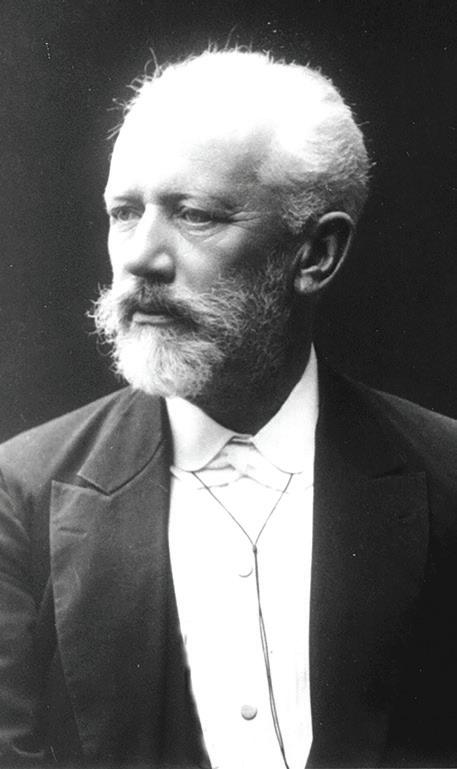
Born: May 7, 1840, Votkinsk, Russia
Died: November 6, 1893, St. Petersburg
Concerto No. 1 in B-flat Minor for Piano and Orchestra, Op. 23
At the end of 1874, Tchaikovsky began a piano concerto with the hope of having a success great enough to allow him to leave his irksome teaching post at the Moscow Conservatory. By late December, he had largely sketched out the work, and he sought the advice of Nikolai Rubinstein, Director of the Moscow Conservatory and an excellent pianist. Tchaikovsky reported the interview in a letter:
On Christmas Eve 1874, Nikolai asked me to play the Concerto in a classroom of the Conservatory. We agreed to it. I played through the work. There burst forth from Rubinstein’s mouth a mighty torrent of words. It appeared that my Concerto was utterly worthless, absolutely unplayable; the piece as a whole was bad, trivial, vulgar.
Tchaikovsky was furious, and he stormed out of the classroom. He made only one change in the score: he obliterated the name of the original dedicatee—Nikolai Rubinstein—and substituted that of the virtuoso pianist Hans von Bülow, who was performing Tchaikovsky’s piano pieces across Europe. Bülow gladly accepted the dedication and asked to program the premiere on his upcoming American tour. The Concerto created such a sensation when it was first heard, in Boston on October 25, 1875, that Bülow played it on 139 of his 172 concerts that season. (Remarkably, Tchaikovsky’s Second Piano Concerto was also premiered in this country, by Madeleine Schiller and the New York Philharmonic Society conducted by Theodore Thomas on November 12, 1881.)
Tchaikovsky’s First Piano Concerto opens with the familiar theme of the introduction, a sweeping melody nobly sung by violins and cellos above thunderous chords from the piano. Following a decrescendo and a pause, the piano presents the snapping main theme. (Tchaikovsky said that this curious melody was inspired by a tune he heard sung by a blind beggar at a street fair.) The clarinet announces the lyrical, bittersweet second theme. The simplicity of the second movement’s three-part structure (A–B–A) is augured by the purity of its opening—a languid melody in the solo flute. The center of the movement is of very di erent character, with a quick tempo and a swift, balletic melody. The languid theme and moonlit mood of the first section return to round out the movement. The crisp rhythmic motive presented immediately at the beginning of the finale and then spun into a complete theme by the soloist dominates much of the movement. In the theme’s vigorous full-orchestra guise, it has much of the spirit of a robust Cossack dance. To balance the vigor of this music, Tchaikovsky introduced a romantic melody first entrusted to the violins. The dancing Cossacks repeatedly advance upon this bit of tenderness, which shows a hardy determination. The two themes contend, but the flying Cossacks have the last word.
—Dr. Richard E. Rodda
Composed: 1874–75; revised in 1889
Premiere: October 25, 1875 in Boston, Benjamin Johnson Lang conducting a freelance orchestra; Hans von Bülow, piano
Instrumentation: solo piano, 2 flutes, 2 oboes, 2 clarinets, 2 bassoons, 4 horns, 2 trumpets, 3 trombones, timpani, strings
Duration: approx. 32 minutes
Fanfare Magazine | 57
NINA SIMONE PIANO COMPETITION PROGRAM NOTES
Piotr Ilyich Tchaikovsky
n Composed: He began the First Concerto in 1839 and revised it continually for the next several years.
n Premiere: February 17, 1855 at Weimar Castle, Hector Berlioz conducting; Franz Liszt, piano
n Instrumentation: solo piano, 2 flutes, piccolo, 2 oboes, 2 clarinets, 2 bassoons, 2 horns, 2 trumpets, 3 trombones, timpani, crash cymbals, triangle, strings
n Duration: approx. 19 minutes
FRANZ LISZT

Born: October 22, 1811, Raiding Austria, not far from Vienna
Died: July 31, 1886, Bayreuth, Germany
Concerto No. 1 in E-flat Major for Piano and Orchestra
Liszt was a man of contradictions, many of which long served to obscure his true significance. He was an extraordinarily original artist, yet he composed outright potboilers as well as pieces of great beauty and sensitivity. That some of his more obvious works have frequently been heard on pops concerts has assured him a following today, but such compositions represent only one side of his art. Many of his works are sophisticated, subtle, subjective statements by a composer far ahead of his time. His two piano concertos, composed virtually simultaneously over a period of some 20 years, exemplify this contrast. The First Concerto, an overt work, full of bravura and virtuosity, has been a traditional favorite with audiences as well as pianists. The less frequently performed Second is more intimate and more personal. It shows the subjective side of Liszt’s complex personality.
Liszt was the greatest pianist of his age. He virtually invented the kind of pianistic virtuosity that is still with us today. He thought up and perfected any number of dazzling keyboard techniques. As he had no models among pianists, he based his craft on that of the great violin virtuoso Niccolò Paganini. Paganini showed Liszt how to hold an audience spellbound by sheer technique and how to cultivate a stage presence and a public personality that guaranteed an enraptured following. Like Paganini, Liszt had to write his own display pieces, because there was no previous music that called for the soloist to use his instrument in the way Liszt had taught himself to do. His early compositions are vehicles of virtuosity, and his early career was that of a traveling virtuoso performing keyboard acrobatics before enthralled crowds. It mattered little that these compositions were often musically shallow: their purpose was to display a new technique, and they succeeded completely in doing just that.
At the height of his career as a concert pianist, he retired suddenly from public life. He was 37. Ironically, his retirement came at just the time when railroads began to make the life of a touring artist far easier. Nonetheless, Liszt never again performed in public. He continued to teach piano students, particularly enjoying the young women who came to learn from him, but he no longer accepted any fees for teaching. He devoted himself to composition, which he had neglected during the preceding decade.
The late compositions of Liszt are forward-looking. While Wagner had consciously striven for a “music of the future” that turned out to be very much a music of the present, Liszt actually anticipated several important features of 20th-century music. Some of his late piano pieces display an almost Debussyan impressionism: they often contain unresolved dissonances that function as pure sonorities rather than as participants in harmonic progressions. He even abandoned tonality. One of his late works is called Bagatelle without Tonality (this work was first published in 1956). He anticipated Schoenberg in the opening of his Faust Symphony, which is virtually a 12-tone row. And, in many of his larger works, he developed a technique that nurtured the majority of composers of the early part of our century—thematic transformation.
This procedure, which is beautifully realized in the First Piano Concerto, involves the derivation of many different themes from one or two basic melodies. The result may be called a self-generating form—the possibilities
58 | 2023–24 SEASON
PROGRAM NOTES
Franz Liszt, 1858
for transformation of a given theme determine the character of subsequent sections. Thematic transformation lies between the traditional approaches of development and variation. It is akin to what Schoenberg called “developing variation.” Composer Humphrey Searle describes the process of thematic transformation as follows:
A basic theme recurs throughout a work, but it undergoes constant transformations and disguises, and is made to appear in several contrasting roles; it may even be in augmentation or diminution, or in a different rhythm, or even with different harmonies; but it will always serve the structural purpose of unity within variety. The technique was of supreme importance to Liszt, interested as he was in the “cyclic” forms and the problem of rolling together several movements into one.
—Jonathan D. Kramer
SERGEI RACHMANINOFF

Born: April 1, 1873, Oneg (near Novgorod), Russia
Died: March 28, 1943, Beverly Hills, California
Concerto No. 2 in C Minor for Piano and Orchestra, Op. 18
When he was old and as mellow as he would ever get, Rachmaninoff wrote these words about his early years: “Although I had to fight for recognition, as most younger men must, although I have experienced all the troubles and sorrow which precede success, and although I know how important it is for an artist to be spared such troubles, I realize, when I look back on my early life, that it was enjoyable, in spite of all its vexations and bitterness.” The greatest “bitterness” of Rachmaninoff’s career was the total failure of the Symphony No. 1 at its premiere in 1897, a traumatic disappointment that thrust him into such a mental depression that he suffered a complete nervous collapse.
An aunt of Rachmaninoff, Varvara Satina, had recently been successfully treated for an emotional disturbance by a certain Dr. Nicholas Dahl, a Moscow physician who was familiar with the latest psychiatric discoveries in France and Vienna, and it was arranged that Rachmaninoff should visit him. Years later, in his memoirs, the composer recalled the malady and the treatment:
[Following the performance of the First Symphony,] something within me snapped. A paralyzing apathy possessed me. I did nothing at all and found no pleasure in anything. Half my days were spent on a couch sighing over my ruined life. My only occupation consisted in giving a few piano lessons to keep myself alive.
For more than a year, Rachmaninoff’s condition persisted. He began his daily visits to Dr. Dahl in January 1900.
My relatives had informed Dr. Dahl that he must by all means cure me of my apathetic condition and bring about such results that I would again be able to compose. Dahl had inquired what kind of composition was desired of me, and he was informed “a concerto for pianoforte.”
In consequence, I heard repeated, day after day, the same hypnotic formula, as I lay half somnolent in an armchair in Dr. Dahl’s consulting room: “You will start to compose a concerto—You will work with the greatest of ease—The composition will be of excellent quality.” Always it was the same, without interruption.... Although it may seem impossible to believe, this treatment really helped me. I started to compose again at the beginning of the summer.
n Composed: 1900–01
n Premiere: October 14, 1901 in Moscow, Alexander Siloti conducting; Sergei Rachmaninoff, piano
n Instrumentation: solo piano, 2 flutes, 2 oboes, 2 clarinets, 2 bassoons, 4 horns, 2 trumpets, 3 trombones, tuba, timpani, bass drum, crash cymbals, strings
n Duration: approx. 35 minutes
Fanfare Magazine | 59
PROGRAM NOTES
Sergei Rachmaninoff
For more information about this program, please text PROGRAM to 513.845.3024*.
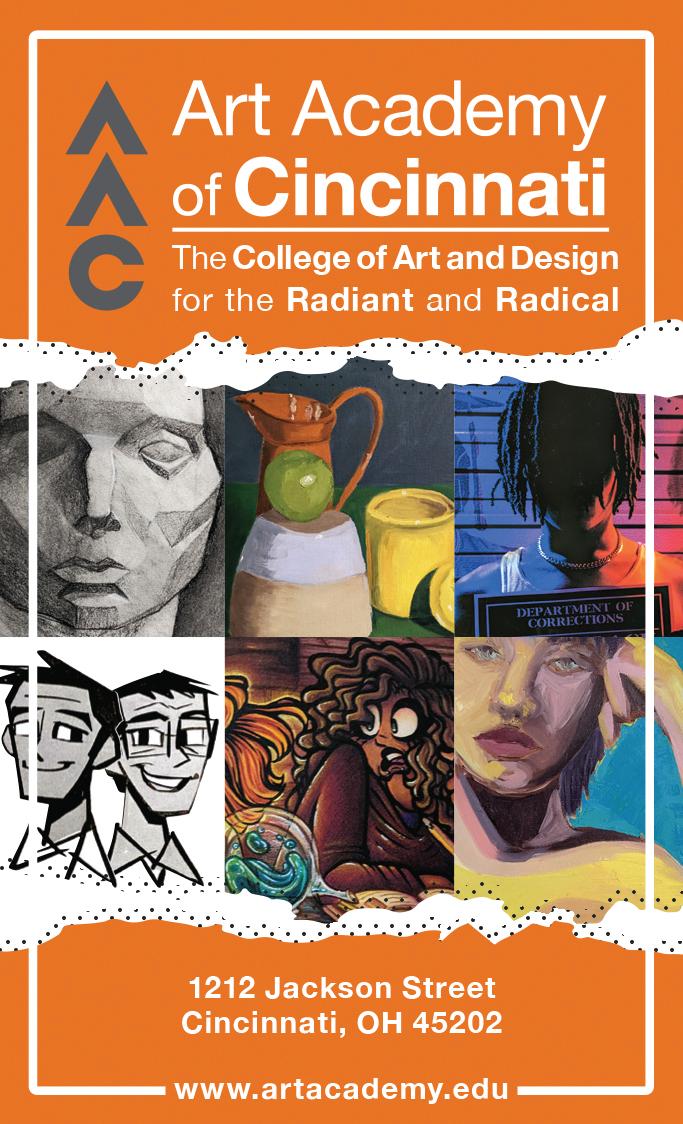

*By texting to this number, you may receive messages that pertain to the organization and its performances; msg & data rates may apply. Reply HELP to help, STOP to cancel.


In gratitude, he dedicated the new Concerto to Dr. Dahl.
The C Minor Concerto begins with eight bell-tone chords from the solo piano that herald the surging main theme, announced by the strings. A climax is achieved before a sudden drop in intensity makes way for the arching second theme, initiated by the soloist. The development, concerned largely with the first theme, is propelled by a martial rhythm that continues with undiminished energy into the recapitulation. The second theme returns in the horn before the martial mood is reestablished to close the movement. The Adagio is a long-limbed nocturne with a running commentary of sweeping figurations from the piano. The finale resumes the marching rhythmic motion of the first movement with its introduction and bold main theme. Standing in bold relief to this vigorous music is the lyrical second theme, one of the best-loved melodies in the entire orchestral literature, a grand inspiration in the ripest Romantic tradition. (Years ago, this melody was lifted from the Concerto by the tunesmiths of Tin Pan Alley and fitted with su ciently maudlin phrases to become the popular hit “Full Moon and Empty Arms.”) These two themes, the martial and the romantic, alternate for the remainder of the movement. The coda rises through a finely crafted line of mounting tension to bring the work to an electrifying close.
PROGRAM NOTES 60 | 2023–24 SEASON
—Dr. Richard E. Rodda
AUDRA McDONALD ANDY EINHORN, conductor
SUN OCT 8, 7:30 pm

Music Hall
Audra McDonald returns to the Music Hall stage, after her sold-out performance with the Pops in 2018! The winner of a record-breaking six Tony Awards, two Grammys, an Emmy and the National Medal of Arts, Audra is unparalleled in her versatility as both a singer and actor. Audra has appeared on the Broadway stage in Carousel, Ragtime and Sweeney Todd, and film and television credits include The Good Fight, Respect and The Gilded Age
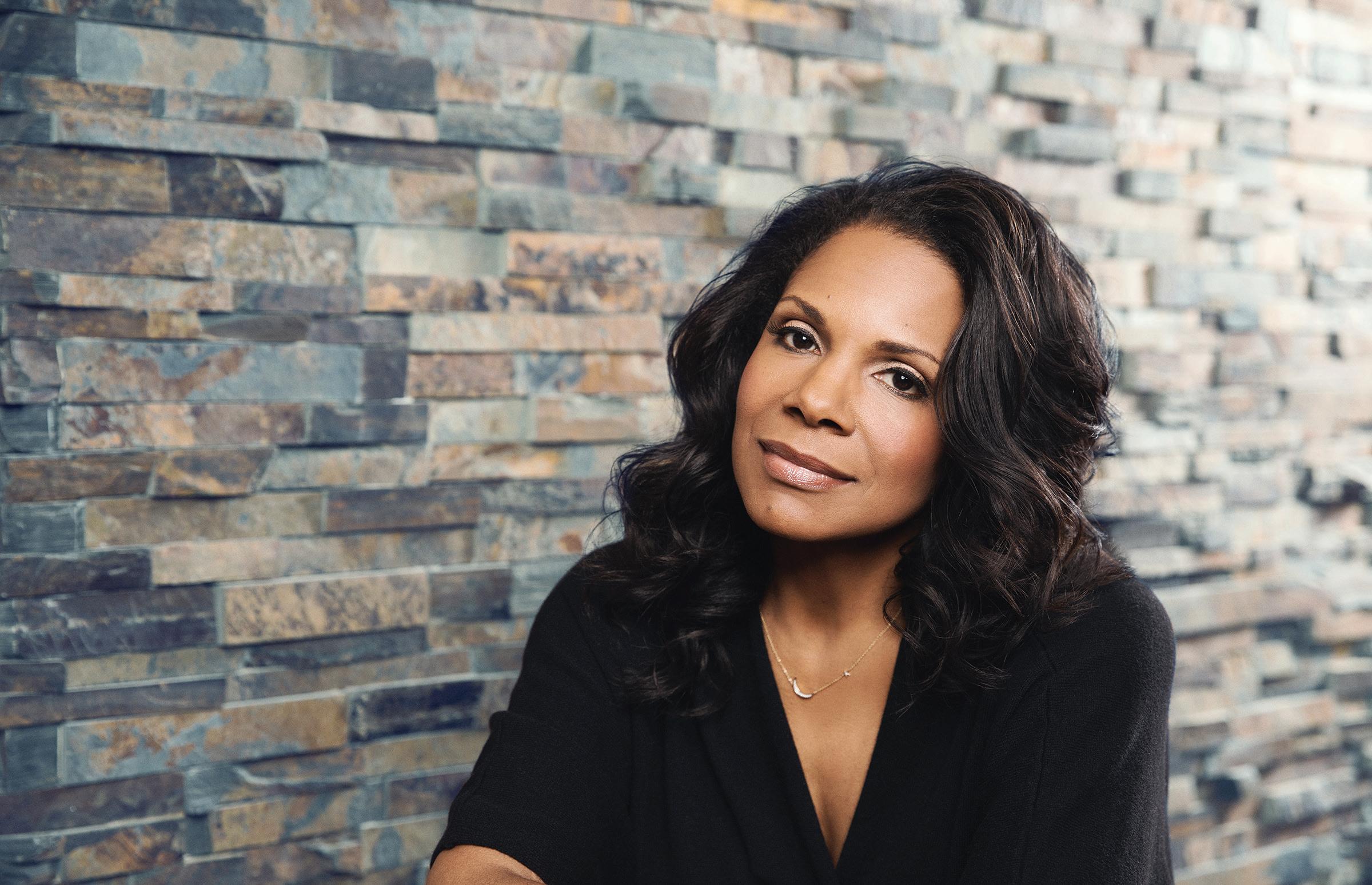
Selections will be announced from the stage. There will be one 20-minute intermission.
The Cincinnati Pops Orchestra is grateful to Pops Season Sponsor PNC and Show Sponsor Pyro-Technical Investigations, Inc.

The Cincinnati Symphony Orchestra is grateful for the support of the Louise Dieterle Nippert Musical Arts Fund of the Greenacres Foundation and the Nina Browne Parker Trust, and for the thousands of people who give generously to the ArtsWave Community Campaign, the region’s primary source for arts funding. This project was supported in part by the Ohio Arts Council, which receives support from the State of Ohio and the National Endowment for the Arts
The Cincinnati Symphony Orchestra in-orchestra Steinway piano is made possible in part by the Jacob G. Schmidlapp Trust
Fanfare Magazine | 61
AUDRA McDONALD | 2023–24 SEASON
Fanfare Magazine | 61
FRI OCT 13, 11 am SAT OCT 14, 7:30 pm Music Hall
LOUIS LANGRÉE, conductor GEORGE TAKEI, narrator
Leonard BERNSTEIN Overture to Candide (1918–1990)


Florence PRICE Symphony No. 1 (1888–1953) Allegro, ma non troppo Largo, maestoso Juba Dance Finale
INTERMISSION
Aaron COPLAND Lincoln Portrait (1900–1990)
Leonard BERNSTEIN Symphonic Suite from On the Waterfront
These performances are approximately 125 minutes long, including intermission.
The CSO is grateful to CSO Season Sponsor Western & Southern Financial Group
The Cincinnati Symphony Orchestra is grateful for the support of the Louise Dieterle Nippert Musical Arts Fund of the Greenacres Foundation and the Nina Browne Parker Trust, and for the thousands of people who give generously to the ArtsWave Community Campaign, the region’s primary source for arts funding. This project was supported in part by the Ohio Arts Council, which receives support from the State of Ohio and the National Endowment for the Arts
Pre-Concert Talks are made possible by an endowed gift from Melody Sawyer Richardson
WGUC is the Media Partner for these concerts.
The Cincinnati Symphony Orchestra in-orchestra Steinway piano is made possible in part by the Jacob G. Schmidlapp Trust
BERNSTEIN, PRICE & COPLAND | 2023–24 SEASON
62 | 2023–24 SEASON
LEONARD BERNSTEIN
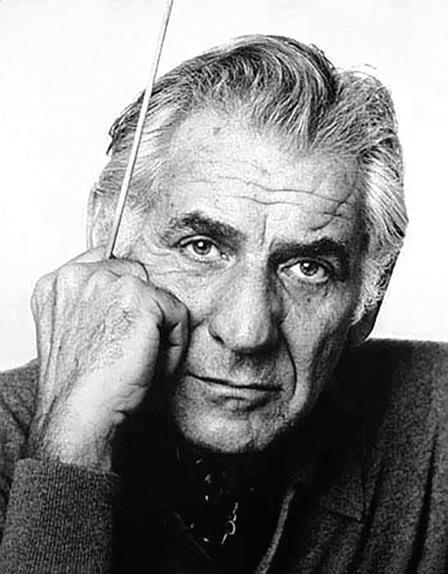
Born: August 25, 1918, Lawrence, Massachusetts
Died: October 14, 1990, New York City
Overture to Candide
The story of Leonard Bernstein’s musical comedy—or operetta, or opera—Candide is convoluted and, in the end, not altogether happy—an unfortunate situation for an ebullient, madcap work whose Overture positively sparkles. Voltaire is ultimately to blame for the whole a air, since it was his novella Candide, ou l’Optimisme (1759) that inspired Bernstein to struggle for more than three decades to find the perfect way to translate it for the musical stage.
To Voltaire we owe the tale of the wide-eyed hero Candide, whose trips to distant points of the globe invariably turn into dismal misadventures, much though he may be assured by his idealistic tutor, Doctor Pangloss, that everything is for the best. He wrote his novella as a charming but persuasive rebuttal to the German philosopher Gottfried Wilhelm von Leibnitz’s metaphysical assertion that “All is for the best in the best of all possible worlds.” This struck Voltaire as palpably absurd. What about blatant violence? What about shipwrecks? What about the Spanish Inquisition? Candide has to deal with them all in the course of this tale, and by the time he gets back to his native Westphalia he has become a wiser, if more cynical, young man, intent on finding happiness where he can, come what may, and content in just making his garden grow.
In the fall of 1953, Lillian Hellman suggested teaming up with Bernstein to develop a stage work based on Candide, after an earlier collaboration they had flirted with, on the subject of Eva Perón, had failed to take root. By January 1954, Bernstein was firmly committed to the project, which he initially envisioned as a full-scale three-act opera. Hellman began fashioning Voltaire’s volume into a book for the show, and John Latouche and Richard Wilbur were enlisted to pen the lyrics, although Hellman, Dorothy Parker and Bernstein himself all added further contributions to the script. Candide opened in New York on December 1, 1956 and played for 73 performances at the Martin Beck Theatre—which is to say, long enough to have proved in some measure respectable (and certainly long enough to pique the interest of many sophisticated music lovers), but not long enough to be considered a success by any stretch of Broadway’s imagination.
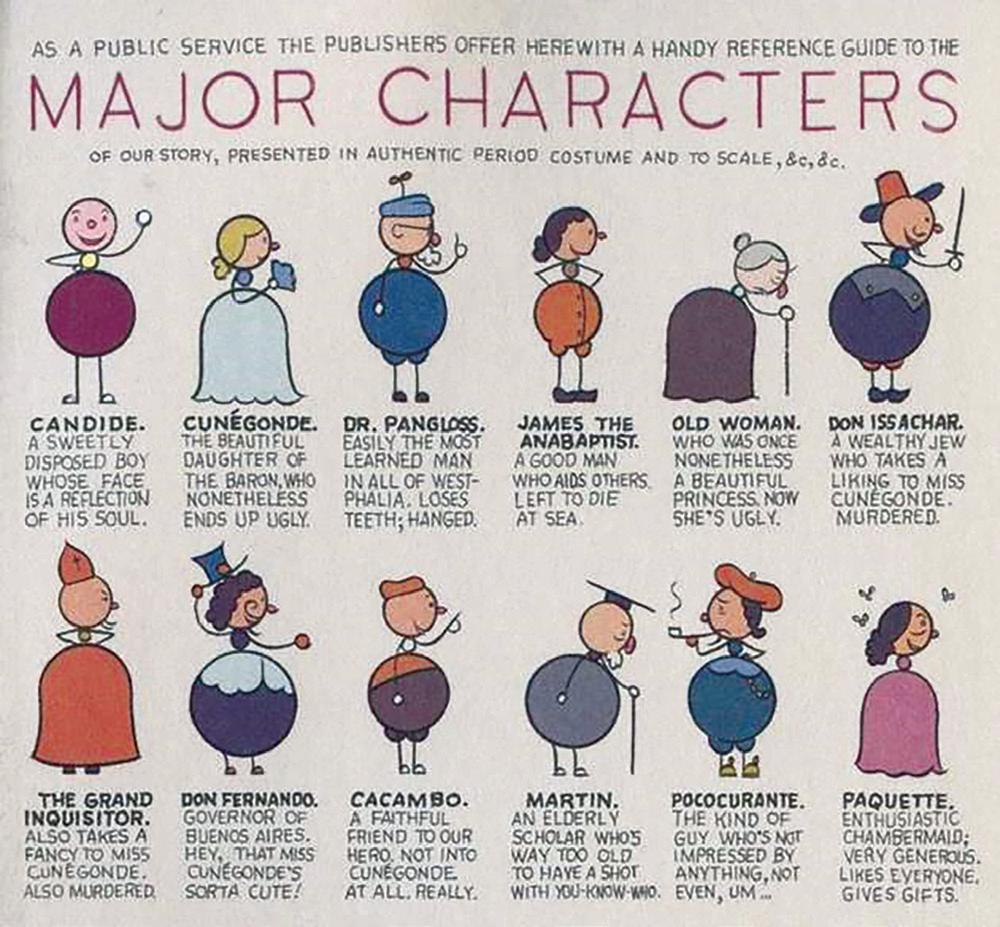
In the course of later emendations, Candide was transformed considerably, incorporating new material by figures including Hugh Wheeler and Stephen Sondheim. Bernstein was directly involved in at least seven versions of Candide, none of which proved definitive, although each had his blessing at least provisionally.
Through all the turmoil, the Candide Overture remained essentially untouched and,
Composed: Completed in August 1956
Premiere: October 29, 1956, in its first preview at the Colonial Theatre in Boston; the show reached Broadway on December 1 of that year, at the Martin Beck Theatre.
Instrumentation (symphonic version played here): 2 flutes, piccolo, 2 oboes, 2 clarinets, E-flat clarinet, bass clarinet, 2 bassoons, contrabassoon, 4 horns, 2 trumpets, 3 trombones, tuba, timpani, bass drums, crash cymbals, glockenspiel, snare drum, tenor drum, triangle, xylophone, harp, strings
CSO notable performances: First: January 1962, Haig Yaghjian conducting. Most Recent: October 2017, Louis Langrée conducting. Other: European Tour in 2017, Louis Langrée conducting; Asian Tour in 2009, Paavo Järvi conducting; European Tour in 2001, Jesús López Cobos conducting; European Tour in 1969, Erich Kunzel conducting.
Duration: approx. 5 minutes
Fanfare Magazine | 63
OCT 13–14 PROGRAM NOTES
Leonard Bernstein, ©Jack Mitchell
n Composed: 1931–32
n Premiere: June 15, 1933, Frederick Stock conducting the Chicago Symphony Orchestra at the Chicago World’s Fair.
n Instrumentation: 2 flutes, 2 piccolos, 2 oboes, 2 clarinets, 2 bassoons, 4 horns, 2 trumpets, 3 trombones, tuba, timpani, African drums, bass drum, chimes, crash cymbals, snare drum, suspended cymbals, triangle, wind whistle, celeste, strings
n CSO notable performances: These performances are the CSO premiere for the full symphony; mvt. 3 performed in fall of 2019 as part of a Young People’s Concert (conducted by François López-Ferrer) and at the Bond Hill Brady Block Party in 2023 (conducted by Jeri Lynne Johnson); mvt. 4 performed on the 2019 Classical Roots concert, John Morris Russell conducting.
n Duration: approx. 40 minutes
in 1956, Bernstein scaled up its instrumentation for a full symphony orchestra, for concert-hall use.
The Candide Overture draws principally on two vocal melodies prominent in the stage work. Following some can-can material and a theme that, in the show, occurs at the destruction of Candide’s native Westphalia, we hear a tender (though swiftly flowing) tune that will later resurface as the love duet “Oh, Happy We,” sung by Candide and his girlfriend, Cunegonde. Curiously, Bernstein had originally intended “Oh, Happy We” as a duet for the characters of Tony and Maria to sing in another show/operetta/opera that was gestating at the same time—but West Side Story is a different matter altogether, and the considerable trading off of material between those two very different works is a topic best saved for another time. Near the Overture’s end, after many a musical joke, Bernstein tips his hat to Rossini and has the orchestra repeat over and over, louder and louder, a little tune extracted from Cunegonde’s aria “Glitter and be Gay.”
—James M. Keller*
FLORENCE PRICE
Born: April 9, 1888, Little Rock, Arkansas
Died: June 3, 1953, Chicago, Illinois
Symphony No. 1
“It is a faultless work,” observed Chicago music critic Eugene Stinson after the premiere of Florence Price’s Symphony in E Minor in June 1933, “a work that speaks its own message with restraint and yet with passion. Miss Price’s symphony is worthy of a place in the regular symphonic repertory.” Today, audiences around the world are rapidly discovering the truth of Stinson’s observations.
Florence Beatrice Price was just over 40 years old when she began writing her first orchestral music. Born into a prominent Black family in Little Rock, Arkansas, and educated at Boston’s New England Conservatory, she spent the first two decades of her professional career as a music educator at segregated academies in Arkansas and Georgia. Some of her earliest compositions were written with these students in mind. At the encouragement of her husband in the mid-1920s, Price submitted more ambitious works for solo piano to national competitions designed to support African American composers. Much to her delight, she took home several prizes.
Outside of this professional success, however, Price’s domestic life entered a period of sharp turmoil. Racist violence in Little Rock prompted the Prices and their two daughters to relocate to Chicago in 1927, while her husband’s threatening outbursts caused Florence to seek a divorce only a few years later. Fortunately, Price’s prizewinning reputation had preceded her, and a group of prominent African American musicians, including Maude Roberts George and Estella Bonds, offered professional, artistic and social support—a gesture scholar Samantha Ege has described as “extending the hand of Black women’s fellowship.” It was in this moment of profound transformation that Price began writing for orchestral forces.
Without strong contacts in the orchestra business, she composed two pieces—a tone poem called Ethiopia’s Shadow in America (1929) and the E Minor Symphony (1931–32)—on the gamble that she might eventually find a willing conductor. To that end, she chose to enter both pieces in a 1932 contest named after the department store magnate Rodman Wanamaker. The gamble paid off: the symphony won first prize, gaining the attention of Frederick Stock, longtime conductor of the Chicago Symphony Orchestra, who chose to premiere the symphony at a performance designed to highlight the achievements of African American

64 | 2023–24 SEASON
PROGRAM NOTES
Florence Price
musicians. Extending the hand of fellowship once again, Maude Roberts George personally underwrote the concert.
The symphony itself follows the genre’s standard four-part outline, with two dramatic movements sandwiching a slow, introspective second movement and a dance-inspired third. Within this conventional frame, Price’s musical language pulls from diverse stylistic strands. The expansive first movement begins with an open-ended, questioning melody stated in the bassoons, which becomes the basis of a brief section that burns with the high drama of lush orchestral Romanticism in the strings and brass. A gentler melody in the French horn, appearing just before the three-minute mark, offers a sharp contrast. The rest of the movement moves between these two poles, with the searing heat of the opening taking the lead throughout.
The second and third movements are also a study in contrasts, but both share distinct roots in the folk music of the African diaspora. The contours of the brass chorale that opens the second movement resemble a spiritual, while distinctly evoking the sounds of a church organ, Price’s primary instrument. Underpinned by a pulse given by an “African drum,” this hymn-like music recurs in a structure that scholar Rae Linda Brown has connected to call-and-response practices found throughout the African diaspora. The quick third movement, on the other hand, is an orchestral portrait of the Juba, a rhythmically complex African-derived dance common in the antebellum South that involved percussive movements like hand clapping and foot tapping.
A whirlwind finale once again whips up the energy and drama of the first movement, bringing the symphony to a thrilling conclusion. Reporting on the June 1933 premiere, Robert Abbott, editor of the Chicago Defender, the city’s largest Black newspaper, remarked, “After the number was completed, the large auditorium, filled to the brim with music lovers of all races, rang out in applause for both the composer and the orchestral rendition.”
Abbott closed his remarks by adding, “As we listened to that concert, we took hope again that there may yet be real brotherhood in this land of ours.” Historian Kira Thurman has shown, however, that the racial harmony coalescing in this performance—an all-white orchestra performing music written by an African American woman to broad audience acclaim—did not extend beyond the concert hall doors during Price’s lifetime.
Despite Price’s prominence in several musical arenas, from the great contralto Marian Anderson’s international vocal performances to student piano recitals and university pep band concerts throughout the United States, her music did not find a place in the “regular repertory” that critic Eugene Stinson had envisioned. Orchestral opportunities dried up in the 1940s as conductors like Boston’s Serge Koussevitzky rebuffed Price’s requests for performances. When Price died suddenly of cardiac arrest in 1953, most of her manuscripts remained unpublished, leaving them relatively inaccessible for future performances.
One of Price’s daughters, Florence Louise Robinson, nevertheless worked tirelessly to preserve her mother’s legacy by seeking new performances, but she ran into the same discriminatory roadblocks that had affected Price herself. When Florence Louise died in 1975, the location of Price’s handwritten scores became a mystery outside her family—that is, except for the Symphony in E Minor and a handful of others, which Robinson had sent to an enterprising musicologist at the University of Arkansas in the months preceding her death.
Barbara Garvey Jackson (1929–2022), a specialist in music written by women, quickly became Price’s advocate and champion as she pursued further biographical research and even secured performances of the available orchestral music in the 1970s and 1980s. In April 1986, for example, the Northwest Arkansas Symphony Orchestra became perhaps the first ensemble to perform Price’s E Minor Symphony in the half-
For more information about this program, please text PROGRAM to 513.845.3024*.
*By texting to this number, you may receive messages that pertain to the organization and its performances; msg & data rates may apply. Reply HELP to help, STOP to cancel.
Fanfare Magazine | 65
PROGRAM NOTES
n Composed: 1942, on commission from conductor André Kostelanetz; text arranged by Copland from words by Abraham Lincoln.
n Premiere: May 14, 1942 by the Cincinnati Symphony Orchestra, Andre Kostelanetz conducting; William Adams, narrator
n Instrumentation: narrator, 2 flutes (incl. 2 piccolos), 2 oboes, English horn, 2 clarinets, bass clarinet, 2 bassoons, contrabassoon, 4 horns, 3 trumpets, 3 trombones, tuba, timpani, bass drum, crash cymbals, glockenspiel, sleigh bells, snare drum, suspended cymbals, tam-tam, xylophone, harp, celeste, strings
n CSO notable performances: First: World premiere, May 1942, Andre Kostelanetz conducting; William Adams, narrator (part of the Pension Fund Benefit Concert). First Subscription: February 1948, Thor Johnson conducting; Peter Grant, narrator. Most Recent: Fall 2017 European Tour, Louis Langrée conducting and Leilani Barrett, narrator; April 1976, Aaron Copland conducting and Ray Middleton narrator. Recording: Hallowed Ground (2014), Louis Langrée conducting; Dr. Maya Angelou, narrator.
n Duration: approx. 14 minutes
century after its premiere. Jackson was soon joined by another profoundly influential scholar, Rae Linda Brown (1953–2017), who became a singular authority on Price during her distinguished career.
Miraculously, in 2009, two northern Illinois property hunters named Vicki and Darrell Gatwood stumbled upon a weather-damaged property that contained dozens of pristine handwritten copies of Price’s scores. As it turns out, this property was once Price’s summer home and had fallen into disuse after her daughter’s death. These manuscripts were eventually acquired by the University of Arkansas, where they became available for further use and performance in 2015. From that moment on, scholars and performers have enjoyed access to Price’s scores—a situation bolstered by international publishing giant G. Schirmer’s acquisition of worldwide rights to her catalog.
Through nearly five decades of concerted effort by scholars and performers, Price’s E Minor Symphony—indeed, her entire catalog—is finally entering the “regular repertory” as audiences around the world have come to know and enjoy her distinct compositional voice.
—Dr. Douglas W. Shadle, Vanderbilt University
AARON COPLAND

Born: November 14, 1900, Brooklyn, New York
Died: December 2, 1990, North Tarrytown, New York
Lincoln Portrait
“This Gallery of Musical Portraits is a direct result of the momentous events of December, 1941. In the weeks that followed our entrance into the war I gave a great deal of thought to the manner in which music could be employed to mirror the magnificent spirit of our country.” Andre
Kostelanetz
Just as the United States became actively involved in World War II, the Cincinnati Symphony Orchestra gave auspicious premieres of two consequential works by the “Dean of American Music,” Aaron Copland. One is among Copland’s most familiar and frequently performed, the Fanfare for the Common Man (1943). The other is Lincoln Portrait (1942), a patriotic meditation on American ideals embodied by the country’s 16th president, Abraham Lincoln.
Lincoln Portrait premiered May 14, 1942 on a benefit program for the Cincinnati Symphony Orchestra’s pension fund given by Andre Kostelanetz, the piece’s commissioner and dedicatee, and his wife, soprano Lily Pons. The concert, dubbed a “Gallery of Musical Portraits,” included the world premieres of Lincoln Portrait alongside Jerome Kern’s Mark Twain: Portrait for Orchestra and Virgil Thomson’s The Mayor LaGuardia Waltzes. Copland devised his text himself, comprising texts by Lincoln from years spanning his election campaign into the Civil War, most prominently the Gettysburg Address. Descriptions of Lincoln’s appearance, persona and background interleave the quotations, making an explicit connection between the man and the principles for which he stood, as full a portrait as one can give in a short time.
The piece begins with a slow introduction, delicately coaxing out single members of the orchestra who pass to one another the same longshort-long, three-note musical idea. The full orchestra soon joins for a full-throated fanfare built on the same fragment. The way clears and a solo clarinet brings out the elegiac ballad tune, “Springfield Mountain,” which is immediately echoed by other woodwinds and a solo trumpet. But staid moods reflecting Lincoln’s restrained image do not last long. The full orchestra breaks through with variations on Stephen Foster’s “Camptown Races,” although only in snippets. Copland intended the ensuing cacophonous layering of “Springfield” and “Camptown” to convey
66 | 2023–24 SEASON
PROGRAM NOTES
Aaron Copland, 1962
a wide range of human experience, a setup for the nuances of the narrated texts that follow. A slowing recall of “Springfield” ushers in the narrator, whose words the orchestra underscores and underlines in tone and intensity—weightier music complements quotations of Lincoln’s orations, simpler textures carry the biographical report. Perhaps the most poignant moment of the entire piece is that which brings about the piece’s climactic ending: a solo trumpet deferentially summons “Springfield” once more for the august words of the Gettysburg Address.
Lincoln Portrait most strongly represents what many think of as Copland’s mid-career Americanist style. This style is identified closely with Fanfare for the Common Man and Lincoln Portrait, but also the famous ballets Billy the Kid (1938), Rodeo (1942) and Appalachian Spring (1943–44), the film score for Of Mice and Men (1939), as well as the later midwestern Gothic opera, The Tender Land (1952–54). But a variety of moods that reflect Copland’s versatility ring out in Lincoln Portrait, intended to resonate the piece’s nuanced themes. As musicologist Elizabeth Crist has written, Copland’s compositions from the 1930s and 40s reflect his embrace of cultural pan-Americanism. The use of folk song quotation in Lincoln Portrait recalls similar uses in El Salón México (1932–36), for instance, and is at the heart of the utopian ethos of Appalachian Spring. In all cases, Copland found inspiration in an association of folk music with everyday people, an enduring interest that guided a compositional strategy he hoped would invite wide listenership.
Today, Lincoln Portrait is as much a staple with American orchestras as any of Copland’s music, popular in part due to its practicality and accessibility for musicians and non-musicians alike to perform the narration. Narrators for the piece have included luminaries like Coretta Scott King, American contralto Marian Anderson, Henry Fonda, General Norman Schwarzkopf, and many others in addition to Copland himself. In Cincinnati, conductor Erich Kunzel regularly brought the work to audiences, often as part of the Cincinnati Pops’ Independence Day festivities. Narrators in the Queen City have included Katharine Hepburn, Bryant Gumbel, Dr. Maya Angelou (for Louis Langrée’s 2013 inaugural concert), a spate of local and state politicians, and even members of the Cincinnati Bengals.
—Dr. Jacques Dupuis
LEONARD BERNSTEIN Symphonic Suite from On the Waterfront
Although other of Leonard Bernstein’s dramatic scores were used in film adaptations, the 1954 Elia Kazan film On the Waterfront represented the only time he composed expressly for cinema. The film’s scenario is a gritty tale of corruption and exploitation on the docks of New Jersey. Kazan had already finished filming (with an all-star cast of serious actors that included Marlon Brando, Lee J. Cobb, Karl Malden, Rod Steiger and Eva Marie Saint) before he started worrying about the music. When the producer Sam Spiegel first approached Bernstein about the project, the composer demurred. He was no fan of Kazan, who had gained notoriety in 1952 as an informant to Senator Joseph McCarthy’s House Committee on Un-American Activities, the rabid anti-Communist political incentive that exiled many performing-arts luminaries to the ranks of the unemployable. Bernstein was among the 50 arts celebrities who, in 1947, had signed a manifesto condemning those very hearings. At least Kazan seemed sincere about ruing his participation in that circus. He took out an advertisement in The New York Times rationalizing that he had cooperated with the dark forces in the spirit of patriotism, and On the Waterfront, which trains its unforgiving eye on the ethical dilemma that can pit loyalty to family and friends against the greater good, was a further step in his process of personal redemption.
Fanfare Magazine | 67
PROGRAM NOTES
LEONARD BERNSTEIN Symphonic Suite from On the Waterfront
Composed: 1954
Premiere: The Columbia Pictures film On the Waterfront was released July 28, 1954 with the soundtrack conducted by Morris Stolo ; the Symphonic Suite was premiered August 11, 1955 at the Berkshire Music Festival (Tanglewood) in Massachusetts, with the composer conducting the Boston Symphony Orchestra.
Instrumentation:
2 flutes (incl. piccolo), 2 oboes, 2 clarinets, E-flat clarinet, bass clarinet, alto saxophone, 2 bassoons, contrabassoon, 4 horns, 3 trumpets, 3 trombones, tuba, timpani (two players), bass drum, chimes, crash cymbals, glockenspiel, tam-tams, snare drum, suspended cymbals, triangle, 3 tuned drums, vibraphone, wood block, xylophone, harp, piano, strings
CSO notable performances: First: November 1965 on a Pops concert, Skitch Henderson conducting. Most Recent: Fall 2017 European tour, Louis Langrée conducting.
Duration: approx. 22 minutes

Even on a strictly professional level, Bernstein did not harbor warmth for Kazan. He may have admired Kazan’s socially conscious film achievements, such as Gentleman’s Agreement (1947, which tackled the subject of anti-Semitism in America) and Pinky (1949, which blazed into the topic of racism), not to mention A Streetcar Named Desire (1951), but there was the unavoidable fact that when Kazan was approached about directing Bernstein’s On the Town back in 1944, he had flatly turned down the opportunity. One might not have predicted that the collaboration of these two creative powerhouses would yield happy results.
Nonetheless, Bernstein consented to screen the film in its scoreless, rough-cut state and was immediately won over. “I heard music as I watched,” he later reported. “That was enough. And the atmosphere of talent that this film gave o was exactly the atmosphere in which I love to work and collaborate.… Day after day I sat at a movieola [sic], running the print back and forth, measuring in feet the sequences I had chosen for the music, converting feet into seconds by mathematical formula, making homemade cue sheets.”
Bernstein’s music accompanies about 35 minutes of the film, which reflects the propensity of all Kazan films to use music sparingly but with terrific impact. On the Waterfront was nominated for 12 Academy Awards, including for best score, and it won eight. Bernstein’s score was passed over in favor of Dimitri Tiomkin’s music for The High and the Mighty, a slight that may account for why On the Waterfront remained Bernstein’s one and only film score.

The following year he recast his music into a concert suite that runs nearly two-thirds the length of the complete film score. Prior to its premiere he explained: “The main materials from the suite undergo numerous metamorphoses, following as much as possible the chronological flow of the film score itself.” The Symphonic Suite unrolls in five chapters. It opens with the broad, main-title theme (“Andante, with dignity”) and proceeds from there to a Presto barbaro, a tense section that escalates from music for percussion alone to a set of variations. The lyrical central section (“More flowing”) is the film’s love music, alluding to the romance between protagonist Terry and Edie, the girl who stirs him to stand up for the side of morality and human decency. The ensuing scherzo (Allegro non troppo, molto marcato) relates to the climactic fight between Terry and Johnny Friendly, an ironically named union boss who is in the pocket of the mobsters; and the opening music returns to close the Suite (as it had in the film), now with a subtle overlay of the love music and a sense of grim ambivalence about whether or not Terry’s act of moral defiance really leads to a better world.
—James M. Keller*
* Portions of the Bernstein notes appeared previously in the programs of the New York Philharmonic and San Francisco Symphony and are used with permission. James M. Keller is in his 24th year as Program Annotator of the San Francisco Symphony and was formerly Program Annotator of the New York Philharmonic and a sta writer-editor at The New Yorker. The author of Chamber Music: A Listener’s Guide (Oxford University Press), he is writing a sequel volume about piano music.
68 | 2023–24 SEASON PROGRAM NOTES
FRI
OCT
String Quartet in F Major, Op. 96, American (1841–1904)
Antonín DVOŘÁK
Allegro ma non troppo
Lento
Molto vivace
Finale: Vivace ma no troppo
Stefani Matsuo, violin
Gabriel Pegis, violin
Christian Colberg, viola
Ilya Finkelshteyn, cello
Corker for Clarinet and Percussion (b. 1950)
Libby LARSEN
Ronald Aufmann, clarinet
Michael Culligan, percussion
INTERMISSION
John HARBISON Quintet for Winds (b. 1938) Intrada
Intermezzo
Romanza
Scherzo

Finale
Haley Bangs, flute
Dwight Parry, oboe
Joseph Morris, clarinet
Christopher Sales, bassoon
Molly Norcross, horn
String Quartet No. 1 in C Minor, Op. 51 (1833–1897)
Johannes BRAHMS
Allegro
Romanza: Poco adagio
Allegretto molto moderato e comodo



Allegro
Anna Reider, violin
Cheryl Benedict, violin
Christopher Fischer, viola
Daniel Kaler, cello
YOU’RE INVITED to greet the musicians after the concert.
13, 7:30
WINSTEAD CHAMBER SERIES | 2023–24 SEASON
The Winstead Chamber Series is endowed by a generous gift from the estate of former CSO musician WILLIAM WINSTEAD Fanfare Magazine | 69
pm Harry T. Wilks Studio, Music Hall
This performance is approximately 130 minutes long, including intermission.
n Composed: 1893
n Premiere: January 1, 1894 in Boston by the Kneisel Quartet.
n Duration: approx. 26 minutes
ANTONÍN DVOŘÁK
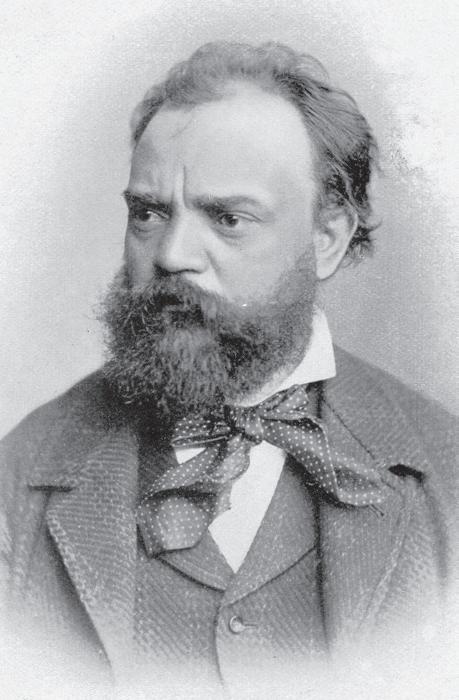
Born: September 8, 1841, Nelahozeves (near Prague), Czechia (Austrian Empire)
Died: May 1, 1904, Prague, Czechia
String Quartet in F Major, Op. 96, American
It was the summer of 1893, and Czech composer Antonín Dvořák was vacationing in Spillville, Iowa. He was only two years into his tenure as director of the National Conservatory in New York, and a severe economic depression known as The Panic of 1893 had just depleted the financial assets upon which the conservatory operated. Dvořák had been brought to New York with the explicit mission of founding a national school of composition, one that would serve as a medium for the expression of American identity in the same way that his own musical idiom had come to represent the Czech national character. Although he wrote of his conviction that the music of African Americans and Indigenous Americans should form the backbone of the national style, the seeds of the idiom that would eventually be known as jazz were only barely in their germinal stage. Thus, for Dvořák, creating Americanness meant adhering to certain general principles, such as tunefulness and clarity of formal design, while capitalizing on specific compositional devices, including pentatonicism, Dorian mode, dotted rhythms and rhythmic displacement.
For more information about this program, please text PROGRAM to 513.845.3024*.
*By texting to this number, you may receive messages that pertain to the organization and its performances; msg & data rates may apply. Reply HELP to help, STOP to cancel.
The composition of the string quartet followed immediately after Dvořák’s Symphony in E Minor, From the New World, with which it shares superficial characteristics. But while the symphony was the product of urban 1890s New York, the quartet displays an intimacy and emotional simplicity appropriate to the sleepy Iowan town of 350 inhabitants.
The quartet opens with a confident viola tune built over the five notes of the F major pentatonic scale, which is quickly followed by a second theme, a tranquil hymn-like tune in A major. In the development of the movement, Dvořák opts for the more learned style—a fugato in F minor, again over a pentatonic framework—before settling back into the hymn tune. He brings the movement to a concise close with a coda extracted from the opening theme.
The second movement is reminiscent of the nature that surrounded Dvořák in Spillville. The melody flows against the backdrop of an ostinato figure in the lower strings, punctuated with woodland noises, and is suggestive of the composer’s description of Iowa to friends at home: “A farmer might be separated from his neighbor by perhaps four miles… You won’t cross paths with anyone and you’re just glad to see the infinite numbers of cattle in the meadows and woods that graze here all year round.”
In the third movement, the character of the music changes abruptly to one of celebration. Constructed from a single musical fragment of 12 notes, it calls to mind the parallel scherzo movement of Dvořák’s New World Symphony. The composer intended the tune to evoke the call of the summer tanager, a songbird indigenous to North America. He offsets its cheerfulness with a tongue-in-cheek minor tune that immediately gives way to the F major theme again.
Dvořák’s final movement bursts with joy and playfulness. The composer constructed it around a sonata-rondo form, linking the sections by means of a bouncing staccato rhythm in the accompanying voices. The rondo episodes contrast in character: the first is a contrapuntal and highly chromatic chorale, while the second is yet another pentatonic melody,
70 | 2023–24 SEASON
OCT 13 PROGRAM NOTES
Antonín Dvořák
evocative of a harmonica tune. The main theme returns for the last time with a newfound air of triumph and unrestrained merrymaking.
Of the pervasive tunefulness and simplicity of the work, Dvořák later observed, “When I wrote the quartet in 1893 in the Bohemian village of Spillville, I had wanted to write something for once that would be very melodious and simple. I always saw Papa Haydn in front of my eyes, that’s why it came so easily. And good thing that it did.”
—Dr. Scot Buzza
LIBBY LARSEN
Born: December 24, 1950, Wilmington, Delaware
Corker for Clarinet and Percussion
American composer Libby Larsen is known for music that reflects both the language and the spirit of contemporary America. Corker reflects Larsen’s love of jazz, especially the swing style of the 1920s, 30s, and 40s. She writes:
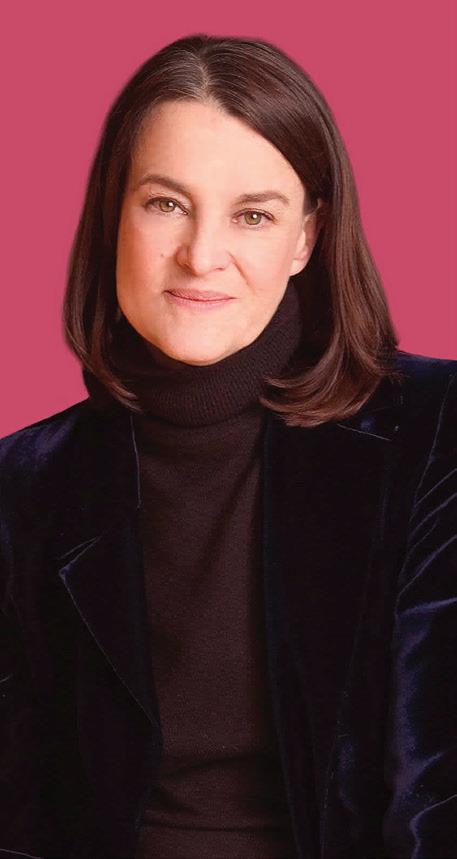
“My inspiration for the work is drawn from 1940s popular musical language, which I love, because the performers are spectacular musicians and because it speaks the rhythms and harmonic language of contemporary American English.”
Corker was part of a trio of pieces composed for solo wind instruments and percussion. The first, Bronze Veil (1979) is for trombone and two percussionists. The second, Xibalba (1989) is for bassoon and two percussionists. Corker was commissioned by clarinetist Robert Spring and premiered in November of 1989.
On Larsen’s website, Corker is listed under the theme of “energy.” It begins with fast rhythmic cymbals and articulated, syncopated playing by the clarinet. This is contrasted by more relaxed sections featuring the vibraphone, before returning to the initial theme to end the piece. It’s an exciting piece to play and, I believe, captures the spirit of the early Swing Era.
—Ronald Aufmann
JOHN HARBISON
Born: December 20, 1938, City of Orange, New Jersey
Quintet for Winds
“I regarded the writing of a quintet for woodwinds as challenging. It is not a naturally felicitous combination of instruments, such as a string quartet.”—John
Harbison
With his 1979 Quintet, John Harbison clearly overcame the obstacles to the merging of five instruments distinct in their timbres, their ranges, their expressive possibilities, and their limitations. The resulting work is extremely challenging to play—its classical transparency notwithstanding.
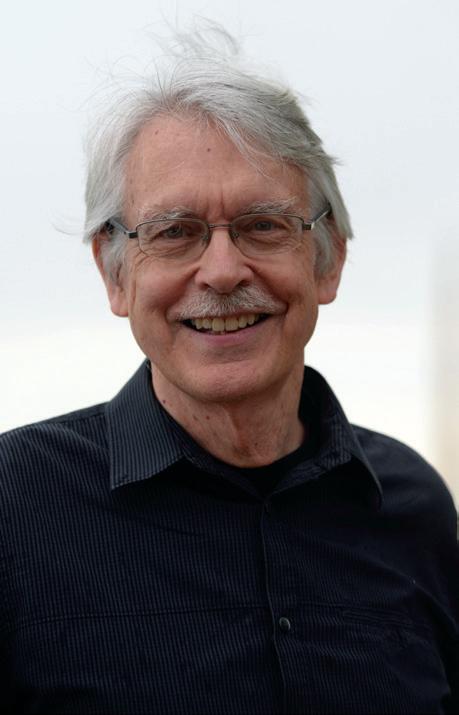
The piece opens with an Intrada structured on modulations of timbre and harmony. The upper registers of horn and bassoon give way to a melody in the upper winds, joined by the bassoon before the full quintet takes the movement to its conclusion. The Intermezzo second movement contains an asymmetrical, lilting tune that brings to mind the Intermezzo interrotto of Bartók’s Concerto for Orchestra. The Romanza alternates lush, cantabile lines with an ironic, playful motive before winding down to a placid state of equilibrium. The structure of the Scherzo reveals its
n Composed: 1989
n Premiere: November 1989
n Duration: approx. 6 minutes
John Harbison
n Composed: 1979
n Premiere: April 15, 1979 in Boston’s Jordan Hall by the Aulos Wind Quintet
n Duration: approx. 22 minutes
Fanfare Magazine | 71
PROGRAM NOTES
Libby Larsen
n Composed: 1873
n Premiere: December 11, 1873 in Vienna
n Duration: approx.
34 minutes
kinship to the symphonic scherzo of the 19th century: the only remaining vestige of its minuet origins are its two similar outer sections encasing a slower, contrasting middle trio. The Finale is a kaleidoscope of everchanging texture and character that invokes associations with a full range of musical idioms, from the wind quintets of Anton Reicha to George Gershwin’s An American in Paris
The composer writes:
I was determined to deal in mixtures rather than counterpoints, and to strive for a classical simplicity of surface—to maximize what I felt to be the great strength of the combination, the ability to present things clearly. The piece especially emphasizes mixtures and doublings and maintains a classically simple surface. It is extremely challenging to play, and one of the principal rewards of the piece has been the opportunity to work with a number of resourceful, inquisitive, and fearless wind players in the mutually beneficial expansion of their repertory.
—Dr. Scot Buzza
JOHANNES BRAHMS

Born: May 7, 1833, Hamburg, Germany
Died: April 3, 1897, Vienna, Austria
String Quartet No. 1 in C Minor, Op. 51
“It is not hard to compose, but it is fantastically difficult to leave the superfluous notes under the table,” Johannes Brahms famously complained to his friend, Theodor Billroth, while working on his string quartets Opus 51. Previous generations of musicians had usually composed specific works for specific occasions under tight deadlines; Brahms felt no such pressure. Thus, he took nearly 20 years to publish his first, the String Quartet No. 1 in C Minor. The genre had become a psychological hurdle for him—in part because of the high bar set by Haydn, Mozart and Beethoven—resulting in his destroying at least 20 false starts before finally publishing his first two quartets in 1873. According to the composer’s friend, Max Kalbeck, Brahms had even insisted on hearing a full play-through in private before he was willing to submit them to public scrutiny.
Later musicians saw these quartets as central to understanding Brahms’ musical language. They are the cornerstone of Arnold Schönberg’s famous essay, Brahms, the Progressive, in which Schönberg identifies a single short motif in the opening movement. From this motif Brahms generated all of the other themes through augmentation and inversion, techniques which, ironically, are more popularly associated with Schönberg than Brahms. Such intellectual exercise may not be necessary for the listener to enjoy the works, but as musicologist Heinrich Reimann asserted, “Brahms’s quartets have often been criticized for going beyond what four individual instruments can achieve in terms of power and sonority…yet he offers rich rewards to those who follow him along this arduous path, whether they be practicing artists or listening laymen.”
The opening movement of the C minor quartet seems to anticipate two other great C minor openings: those of his First Symphony and Third Piano Quartet. Indeed, all three works were completed between 1873 and 1876, and all three were the result of the composer’s internal struggle for perfection. The Allegro of the quartet is held together by a meticulous sonata form, perhaps to camouflage its tonal and metric
72 | 2023–24 SEASON PROGRAM NOTES
Johannes Brahms
instability. The development passes through several related key areas, arrives at the remote destination of A major, and then pivots back to C minor, where it changes from triple to duple meter before ultimately coming to rest in C major.
Although the second movement is titled “Romanze,” it is more melancholy than amorous. When the gently dotted rhythms shift in an upward dolce gesture from A-flat major to C major, they prepare the listener for the halting triplet “sigh” motive that follows, at once both yearning and agitated. After a harmonic twist into E major, the music winds down, first to pizzicato chords and then to silence, before taking up the sighing theme once again. The movement closes on an afterthought: a fading chord simultaneously plucked and bowed.


The third movement is a scherzo more in form than in character. Its pulsating opening motive in F minor would be suitable as a processional were it not for the occasional bursts of playfulness with the triplet motive that follows. The trio introduces a change not only of meter and key, but of geography: the Teutonic opening theme is supplanted by a thoroughly Austrian Ländler before the return of the processional.
The opening accusation of the final movement ignites a contentious argument of counterpoint that, as with the opening movement, takes the listener into metrical conflict and harmonic uncertainty. Brief moments of reconciliation are short lived before passions flair again. The tempo accelerates, and the music churns to an explosive climax, punctuated with three ponderous final chords.
In its warmth and beauty, in its fire and passion, Brahms’ first quartet seems a quintessential reflection of the self-proclaimed romantic of the 19th-century literary world. It a rms rather than refutes the image of the composer as a misunderstood artist, volatile and vulnerable to all that is subjective, irrational, spontaneous and emotional in his search for the transcendental.
—Dr. Scot Buzza
PROGRAM NOTES Fanfare Magazine | 73
RAMÓN TEBAR, conductor JONATHAN BISS, piano
John ADAMS Short Ride in a Fast Machine (b. 1947)
Ludwig van
Concerto No. 4 in G Major for Piano and Orchestra, Op. 58
Allegro moderato (1770–1827) Andante con moto Rondo: Vivace
BEETHOVEN
INTERMISSION
Piotr Ilyich
Symphony No. 4 in F Minor, Op. 36

TCHAIKOVSKY Andante sostenuto. Moderato con anima (1840–1893) Andantino in modo di canzona. Più mosso. Tempo I Allegro. Meno mosso. Tempo I Allegro con fuoco. Andante. Tempo I

These performances are approximately 125 minutes long, including intermission.
The CSO is grateful to CSO Season Sponsor Western & Southern Financial Group
The Cincinnati Symphony Orchestra is grateful for the support of the Louise Dieterle Nippert Musical Arts Fund of the Greenacres Foundation and the Nina Browne Parker Trust, and for the thousands of people who give generously to the ArtsWave Community Campaign, the region’s primary source for arts funding. This project was supported in part by the Ohio Arts Council, which receives support from the State of Ohio and the National Endowment for the Arts
Pre-Concert Talks are made possible by an endowed gift from Melody Sawyer Richardson
WGUC is the Media Partner for these concerts.
The Cincinnati Symphony Orchestra in-orchestra Steinway piano is made possible in part by the Jacob G. Schmidlapp Trust
WED OCT 18, 7:30 pm Music Hall
BEETHOVEN & TCHAIKOVSKY | 2023–24 SEASON
74 | 2023–24 SEASON
JOHN ADAMS
Born: February 15, 1947, Worcester, Massachusetts
Short Ride in a Fast Machine
John Adams is one of today’s most acclaimed composers. His works spanning more than three decades are among the most performed of all contemporary classical music, among them Nixon in China, Harmonielehre, Doctor Atomic, Shaker Loops, El Niño, Short Ride in a Fast Machine and The Dharma at Big Sur. His stage works, many in collaboration with director Peter Sellars, have transformed the genre of contemporary music theater. Of Adams’ best-known opera, the New Yorker magazine wrote “Not since ‘Porgy and Bess’ has an American opera won such universal acclaim as ‘Nixon in China’.” A 2023 New York Times Arts & Leisure cover story called Adams “arguably our greatest living composer.”
Adams (earbox.com) has received numerous Grammy awards, many of them for his over 30 releases on Nonesuch Records. To celebrate his 75th birthday Nonesuch Records released its John Adams Collected Works, a 40-CD box covering his entire output since 1973.

Both Harvard and Yale universities have conferred honorary doctorates on Adams, as have Northwestern University, The Juilliard School, the San Francisco Conservatory and Cambridge University. His Violin Concerto won the 1993 Grawemeyer Award, and On the Transmigration of Souls, commissioned by the New York Philharmonic to commemorate the first anniversary of 9/11, received the 2003 Pulitzer Prize in Music.
Rather than following the expected route for a budding composer, which led through Europe, Adams chose to stay in America. In 1972, he settled in California to join the faculty of the San Francisco Conservatory of Music, where his duties included directing the New Music Ensemble, leading the student orchestra, teaching composition, and administering a graduate program in analysis and history. In 1978, he became associated with the San Francisco Symphony and conductor Edo de Waart in an evaluation of that ensemble’s involvement with contemporary music. Two years later, he helped to institute the Symphony’s “New and Unusual Music” series, which subsequently served as the model for the “Meet the Composer” program, sponsored by the Exxon Corporation, the Rockefeller Foundation and the National Endowment for the Arts, which placed composers-in-residence with several major American orchestras; Adams served as resident composer with the San Francisco Symphony from 1979 to 1985. He has served as Creative Chair with the Los Angeles Philharmonic since 2009, a tenure that began with the premiere of his City Noir
In his compositions through the early 1990s, Adams was closely allied with the style known as “Minimalism,” which uses repetitive melodic patterns, consonant harmonies, motoric rhythms and a deliberate striving for aural beauty. Unlike some other Minimalist music, however, which can be static and intentionally uneventful, the best of Adams’ early works (Grand Pianola Music, Shaker Loops, Harmonium, the brilliant Harmonielehre, and the acclaimed operas Nixon in China [1987] and The Death of Klingho er [1991]) are marked by a sense of determined forward motion and inexorable formal growth, and by frequent allusions to a wide range of 20th-century idioms, both popular and serious. His links with traditional music are further strengthened by consistent use of conventional instruments and predominantly consonant harmony, this latter technique producing what he calls “sustained resonance,” the quality possessed by the acoustical overtone series of common chords to reinforce
Composed: 1986
Premiere: June 13, 1986, Mansfield, Massachusetts, Michael Tilson Thomas conducting
Instrumentation
2 flutes, 2 piccolos, 2 oboes, English horn, 4 clarinets, 3 bassoons, contrabassoon, 4 horns, 4 trumpets, 3 trombones, tuba, timpani, bass drum, bass drum with pedal, crotales, glockenspiel, sizzle cymbal, snare drum, suspended cymbals, 2 tamtams, triangle, 2 tambour de Basque, 3 wood blocks, xylophone, 2 synthesizers, strings
CSO notable performances: First: February 1992 Iván Fischer conducting. Most Recent Subscription: October 2017, Louis Langrée conducting. Most Recent: November 2022 Lollipops Concert, Daniel Wiley conducting.
Duration: approx. 4 minutes
Fanfare Magazine | 75
OCT 18 PROGRAM NOTES
John Adams, ©Vern Evans
n Composed: 1804–06
n Premiere: Beethoven included the Concerto No. 4 in his Akademie program of December 22, 1808, but it had first been heard at a private concert on March 5, 1807 at the palace of Prince Franz Joseph von Lobkowitz in Vienna, with the composer as soloist.
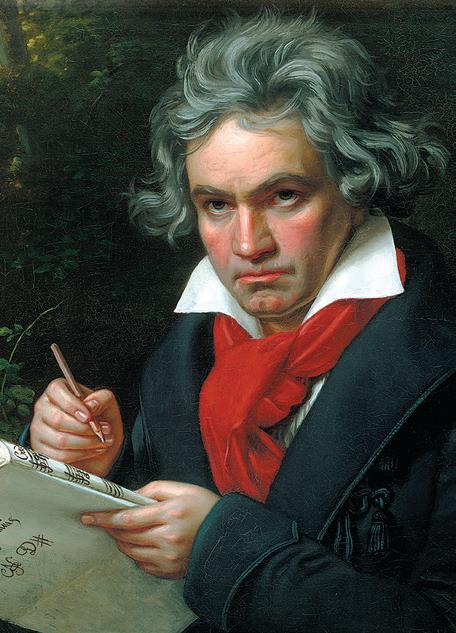
n Instrumentation solo piano, flute, 2 oboes, 2 clarinets, 2 bassoons, 2 horns, 2 trumpets, timpani, strings
n CSO notable performances: First: January 1905, conducted by Frank Van der Stucken with pianist Josef Hofmann. Most Recent: September 2021 as part of MusicNOW, Louis Langrée conducting and Daniil Trifonov, pianist. Other: February/ March 2020 as part of the Beethoven Akademie concert with Louis Langrée conducting and pianist Inon Barnatan. Notable pianists: Artur Schnable, Arthur Rubinstein, Claudio Arrau, Glenn Gould, Emil Gilels, André Watts, Awadagin Pratt and Hélène Grimaud.
n Duration: approx.
34 minutes
and amplify each other to create an enveloping mass of sound. Adams’ recent compositions incorporate more aggressive harmonic idioms and more elaborate contrapuntal textures to create an idiom he distinguishes from that of his earlier music as “more dangerous, but also more fertile, more capable of expressive depth and emotional flexibility.”
For the recording of this work by the San Francisco Symphony (Nonesuch), Michael Steinberg wrote:
Short Ride in a Fast Machine is a joyfully exuberant piece, brilliantly scored for a large orchestra including two synthesizers. Commissioned for the opening of the Great Woods Festival in Mansfield, Massachusetts, it was first played on that occasion, 13 June 1986, by the Pittsburgh Symphony under Michael Tilson Thomas. The steady marking of a beat is typical of Adams’ music. Short Ride begins with a marking of quarters (woodblock, soon joined by the four trumpets) and eighths (clarinets and synthesizers), but the woodblock is fortissimo and the other instruments play forte. Adams describes the woodblock’s persistence as “almost sadistic” and thinks of the rest of the orchestra as running the gauntlet through that rhythmic tunnel. About the title: “You know how it is when someone asks you to ride in a terrific sports car, and then you wish you hadn’t?” It is, in any event, a wonderful opening music for a new American outdoor festival.
—Dr. Richard E. Rodda
LUDWIG van BEETHOVEN
Born: December 16, 1770, Bonn, Germany
Died: March 26, 1827, Vienna, Austria
Concerto No. 4 in G Major for Piano and Orchestra, Op. 58
The Fourth Concerto was one of the projects of the Napoleonic years, and it seems to have been composed simultaneously with the Fifth Symphony. The two are even related in their use of a basic rhythmic motive—three short notes followed by an accented note—and may have germinated from the same conceptual seed, though with vastly different results. While almost nothing is known of the composition of the Concerto, its early performance history is well documented. Beethoven first played it “before a very select audience which had subscribed considerable amounts for the benefit of the author,” according to one contemporary report. The private event took place at the Viennese palace of Prince Lobkowitz, who returned to the city shortly after Napoleon evacuated in 1805. He promoted two private concerts in March 1806 of music exclusively by Beethoven, and presented the composer with all the proceeds, a refutation of the myth that Beethoven was not appreciated in his own time. An account of the elegant event in the appropriately titled Journal des Luxus was typical of many reviews Beethoven received during his life. The writer noted his “wealth of ideas, bold originality, and abundance of power, the special merits of his muse, which were clearly present in these concerts. But some hearers blamed the neglect of a noble simplicity and a too fertile profusion of ideas, which, because of their quantity, are not always sufficiently fused and elaborated; hence their effect is frequently that of an unpolished diamond.”
Because opportunities for public concerts were so few during those troubled times, Beethoven was unable to perform the Concerto in public until the Akademie concert December 22, 1808, nearly two years after its private premiere. Reports on the quality of Beethoven’s playing at the time differed. J.F. Reichardt wrote, “He truly sang on his instrument with a profound feeling of melancholy that pervaded me, too.” The composer
76 | 2023–24 SEASON
PROGRAM NOTES
Ludwig van Beethoven
and violinist Ludwig Spohr, however, commented, “It was by no means an enjoyment [to hear him], for, in the first place, the piano was woefully out of tune, which, however, troubled Beethoven little for he could hear nothing of it; and, secondly, of the former so-much-admired excellence of the virtuoso scarcely anything was left, in consequence of his total deafness.... I felt moved with the deepest sorrow at so hard a destiny.”
The Fourth Concerto was consistently neglected in the years following its creation in favor of the Third and Fifth Concertos. After Beethoven’s two performances, it was not heard again until Felix Mendelssohn played and conducted the work with his Leipzig Gewandhaus Orchestra on November 3, 1836. Robert Schumann, who was at that revival, wrote, “I have received a pleasure from it such as I have never enjoyed, and I sat in my place without moving a muscle or even breathing—afraid of making the least noise.”
Of the nature of the Fourth Concerto, Milton Cross wrote, “[Here] the piano concerto once and for all shakes itself loose from the 18th century. Virtuosity no longer concerns Beethoven at all; his artistic aim here, as in his symphonies and quartets, is the expression of deeply poetic and introspective thoughts.” The mood is established immediately at the outset of the work by a hushed, prefatory phrase for the soloist. The form of the movement, vast yet intimate, begins to unfold with the ensuing orchestral introduction, which presents the rich thematic material: the pregnant main theme, with its small intervals and repeated notes; the secondary themes—a melancholy strain with an arch shape and a grand melody with wide leaps; and a closing theme of descending scales. The soloist re-enters to enrich the themes with elaborate figurations. The central development section is haunted by the rhythmic figuration of the main theme (three short notes and an accented note). The recapitulation returns the themes, and allows an opportunity for a cadenza (Beethoven composed two for this movement) before the coda, a series of glistening scales and chords that bring the movement to a joyous close.
The second movement, “one of the most original and imaginative things that ever fell from the pen of Beethoven or any other musician,” according to Sir George Grove, starkly opposes two musical forces—the stern, unison summons of the strings and the gentle, touching replies of the piano. Franz Liszt compared this music to Orpheus taming the Furies, and the simile is warranted, since both Liszt and Beethoven traced their visions to the magnificent scene in Gluck’s Orfeo where Orpheus’ music charms the very fiends of Hell. In the Concerto, the strings are eventually subdued by the entreaties of the piano, which then gives forth a wistful little song filled with quivering trills. After only the briefest pause, a high-spirited and longlimbed rondo-finale is launched by the strings to bring this Concerto, one of Beethoven’s greatest compositions, to a stirring close.
—Dr. Richard E. Rodda
PIOTR ILYICH TCHAIKOVSKY
Born: May 7, 1840, Votkinsk, Russia
Died: November 6, 1893, St. Petersburg
Symphony No. 4 in F Minor, Op. 36
The Fourth Symphony was a product of the most crucial and turbulent time of Tchaikovsky’s life—1877, when he met two women who forced him to evaluate himself as he never had before. The first was Nadezhda von Meck, the sensitive, music-loving widow of a wealthy Russian railroad baron. Mme. von Meck had been enthralled by Tchaikovsky’s music, and she first contacted him at the end of 1876 to commission a work. She
For more information about this program, please text PROGRAM to 513.845.3024*.
*By texting to this number, you may receive messages that pertain to the organization and its performances; msg & data rates may apply. Reply HELP to help, STOP to cancel.
Fanfare Magazine | 77
PROGRAM NOTES
Composed: 1877–78

Premiere: February 22, 1878 in Moscow, Nikolai Rubinstein conducting
Instrumentation
2 flutes, piccolo, 2 oboes, 2 clarinets, 2 bassoons, 4 horns, 2 trumpets, 3 trombones, tuba, timpani, crash cymbals, triangle, bass drum, strings
CSO notable
performances: First: November 1896, Frank Van der Stucken conducting.
Most Recent: November 2018, Kirill Karabits conducting. Other: Carnegie Hall, March 1992, Jesús López Cobos conducting.
Duration: approx. 44 minutes
paid him extravagantly, and soon an almost constant stream of notes and letters passed between them: hers contained money and e usive praise; his, thanks and an increasingly greater revelation of his thoughts and feelings. She became not only the financial backer who allowed him to quit his irksome teaching job at the Moscow Conservatory to devote himself to composition, but also the sympathetic sounding-board for reports on the whole range of his activities—emotional, musical, personal. Though they never met, her place in Tchaikovsky’s life was enormous and beneficial.
The second woman to enter Tchaikovsky’s life in 1877 was Antonina Miliukova, an unnoticed student in one of his large lecture classes at the Conservatory who had worked herself into a passion over her young professor. Tchaikovsky paid her no special attention, and he had quite forgotten her when he received an ardent love letter professing her flaming and unquenchable desire to meet him. Tchaikovsky (age 37), who should have burned the thing, answered the letter of the 28-year-old Antonina in a polite, cool fashion, but did not include an outright rejection of her advances. He had been considering marriage for almost a year in the hope that it would give him both the stable home life he had not enjoyed in the 20 years since his mother died, as well as to help dispel the all-too-true rumors of his homosexuality. He believed he might achieve both these goals with Antonina. He could not see the situation clearly enough to realize that what he hoped for was impossible—a pure, platonic marriage without its physical and emotional realities. Further letters from Antonina implored Tchaikovsky to meet her, and she threatened suicide out of desperation if he refused. What a welter of emotions must have gripped his heart when, just a few weeks later, he proposed marriage to her! Inevitably, the marriage crumbled within days of the wedding amid Tchaikovsky’s searing self-deprecation.
It was during May and June that Tchaikovsky sketched the Fourth Symphony, finishing the first three movements before Antonina began her siege. The finale was completed by the time he proposed. Because of this chronology, the program of the Symphony was not a direct result of his marital disaster. All that—the July wedding, the mere 18 days of bitter conjugal farce, the two separations—postdated the actual composition of the Symphony by a few months, though the orchestration took place during the painful time from September to January when the composer was seeking respite in a half dozen European cities from St. Petersburg to San Remo. What Tchaikovsky found in his relationship with this woman (who by 1877 already showed signs of approaching the door of the mental ward in which, still legally married to him, she died in 1917) was a confirmation of his belief in the inexorable workings of Fate in human destiny. He later wrote to Mme. von Meck, “We cannot escape our Fate, and there was something fatalistic about my meeting with this girl.” The relationships with the two women of 1877, Mme. von Meck and Antonina, occupy important places in the composition of this Symphony: one made it possible, the other made it inevitable, but the vision and its fulfillment were Tchaikovsky’s alone.

To read what Tchaikvosky wrote of this symphony, visit the digital program at cincinnatisymphony.org/digital-program.
—Dr. Richard E. Rodda
PROGRAM NOTES 78 | 2023–24 SEASON
Piotr Ilyich Tchaikovsky
FRI OCT 20, 7:30 pm
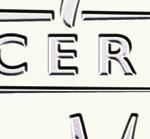



SAT OCT 21, 7:30 pm
SUN OCT 22, 2 pm

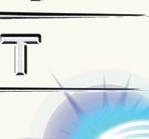
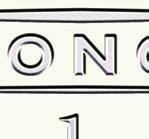
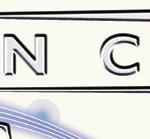

Music Hall
DAMON GUPTON, conductor
Join the Cincinnati Pops for Disney in Concert: The Sound of Magic, a symphonic celebration of Disney music, animation and memories—a century in the making!



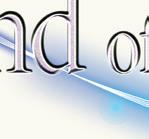
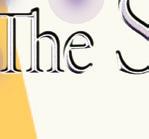



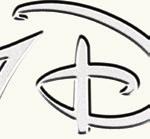







Your favorite characters and soundtracks from the Walt Disney Animation Studios and more come to life on the concert hall stage and big screen in a live-to-film concert like never before. Performed by a live symphony orchestra, this newly imagined concert takes you on a magic carpet ride through the most memorable song, score and movie moments of The Walt Disney Company, including Snow White and the Seven Dwarfs, Moana, Alice in Wonderland, Aladdin, The Jungle Book, Frozen, The Lion King, Fantasia, Encanto, Beauty and the Beast, and more.
Become part of the journey to discover The Sound of Magic.

Today’s performance lasts approximately 1 hour and 40 minutes, including a 20-minute intermission. Out of respect for the musicians and your fellow audience members, please remain seated until the conclusion of the concert.
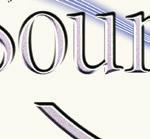



Licensed by Disney Concerts © All rights reserved.
The Cincinnati Pops Orchestra is grateful to Pops Season Sponsor PNC



For more information about this program, please text PROGRAM to 513.845.3024*.
The Cincinnati Symphony Orchestra is grateful for the support of the Louise Dieterle Nippert Musical Arts Fund of the Greenacres Foundation and the Nina Browne Parker Trust, and for the thousands of people who give generously to the ArtsWave Community Campaign, the region’s primary source for arts funding. This project was supported in part by the Ohio Arts Council, which receives support from the State of Ohio and the National Endowment for the Arts
*By texting to this number, you may receive messages that pertain to the organization and its performances; msg & data rates may apply. Reply HELP to help, STOP to cancel.





The Cincinnati Symphony Orchestra in-orchestra Steinway piano is made possible in part by the Jacob G. Schmidlapp Trust







Fanfare Magazine | 79 DISNEY IN CONCERT | 2023–24 SEASON
Fanfare Magazine | 79
FRI OCT 27, 7:30 pm
SAT OCT 28, 7:30 pm
Music Hall
JAMES GAFFIGAN, conductor
Grażyna BACEWICZ Uwertura (“Overture”) (1909–1969)
Wolfgang Amadeus Serenade in G Major, K. 525, Eine kleine Nachtmusik MOZART Allegro (1756–1791)
Romance: Andante

Menuetto: Allegretto. Trio. Menuetto

Rondo: Allegro
INTERMISSION
Richard WAGNER Der Ring ohne Worte (“The Ring Without Words”) (1813–1883) for Orchestra
arr. Maazel
These performances are approximately 130 minutes long.
The CSO is grateful to CSO Season Sponsor Western & Southern Financial Group
The Cincinnati Symphony Orchestra is grateful for the support of the Louise Dieterle Nippert Musical Arts Fund of the Greenacres Foundation and the Nina Browne Parker Trust, and for the thousands of people who give generously to the ArtsWave Community Campaign, the region’s primary source for arts funding. This project was supported in part by the Ohio Arts Council, which receives support from the State of Ohio and the National Endowment for the Arts
Pre-Concert Talks are made possible by an endowed gift from Melody Sawyer Richardson
WGUC is the Media Partner for these concerts.
The Cincinnati Symphony Orchestra in-orchestra Steinway piano is made possible in part by the Jacob G. Schmidlapp Trust
RING WITHOUT WORDS | 2023–24 SEASON
80 | 2023–24 SEASON
GRAŻYNA BACEWICZ
Born: February 5, 1909, Łódź, Poland
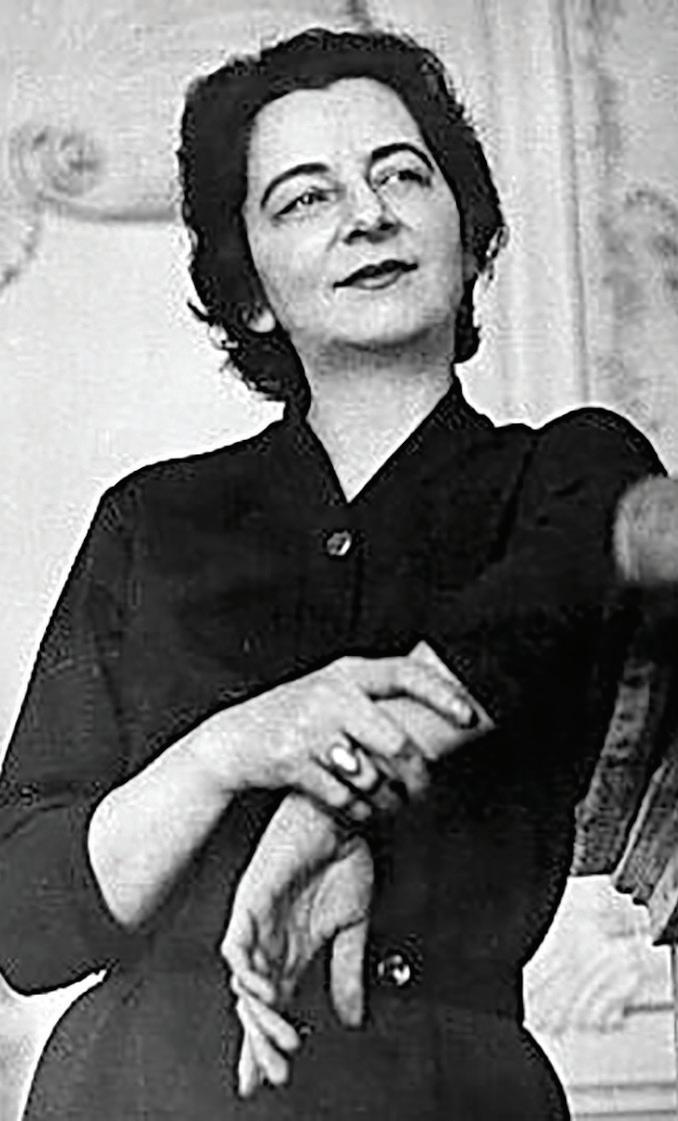
Died: January 17, 1969, Warsaw, Poland
Uwertura (“Overture”)
Composer, violinist, pianist and writer Grażyna Bacewicz (Grah-ZHEEnah baht-SEV-ich) was among Poland’s leading musicians during the early 20th century and the country’s first female musician to gain international prominence since Maria Szymanowska (1789-1831), who toured widely throughout Europe as a virtuoso before being engaged as pianist at the Russian court and whose compositions influenced those of Frédéric Chopin. Bacewicz was born in 1909 into a musical family in Łódź, 75 miles southwest of Warsaw, and her father gave Grażyna her first instruction in piano, violin and music theory. She had her early professional training at the local music school before entering the Warsaw Conservatory in 1928, where her talents as violinist, composer and pianist developed in parallel. After graduating in 1932, she received a grant to study composition with Nadia Boulanger at the École Normale de Musique in Paris; the grant was given by Ignacy Jan Paderewski, the famed composer, pianist and Poland’s Prime Minister in 1919, who used his fortune to aid, among many other causes, the country’s most promising young musicians. Bacewicz also studied violin in Paris with the Hungarian virtuoso and teacher Carl Flesch, and she gained her first notice as a soloist in 1935 at the Wieniawski International Violin Competition in Warsaw. The following year she was appointed principal violinist of the Polish Radio Orchestra in Warsaw and began touring as soloist in Europe, occasionally appearing with her brother Kiejstut, a concert pianist. (The University of Music in Łódź is named jointly in their honor.) Bacewicz composed and gave clandestine concerts during World War II, after which she resumed her touring career and joined the faculty of the Academy of Music in Łódź. In 1953, she retired as a violinist to devote herself to composition and teaching. For the three years before her death from a heart attack in 1969, three weeks short of her 60th birthday, Bacewicz taught composition at the Academy of Music in Warsaw. She received numerous honors throughout her career, including awards for lifetime achievement from the City of Warsaw, Polish Composers’ Union and People’s Republic of Poland; served twice as Vice-Chair of the Polish Composers’ Union; and was an accomplished writer of short stories, novels and autobiographical anecdotes.
“The premise of Bacewicz’s Overture for Orchestra,” wrote Polish composer and conductor Artur Malawski, “is rhythm and motoric movement.” Bacewicz composed the Overture seemingly in defiance of the time of its creation—1943, at the depth of the Nazi occupation and the year of the Warsaw Ghetto Uprising that presaged the final transport of the city’s Jews to the extermination camps. The Overture begins with four soft, quick strokes on the timpani that may have been borrowed from the opening of Beethoven’s Fifth Symphony—short–short–short–long—which the BBC broadcast throughout the war as a hopeful symbol for Allied victory (i.e., Morse code for the letter “V”: dot–dot–dot–dash). The Overture, whose muscularity and orchestral brilliance are cast into relief by a lyrical central episode, was perfectly suited to the time of its premiere, at a Contemporary Polish Music Festival in Kraków on September 1, 1945, four months after Germany had surrendered.
—Dr. Richard E. Rodda
Composed: 1943
Premiere: September 1, 1945 in Kraków by the Kraków Philharmonic, conducted by Mieczysław Mierzejewski
Instrumentation: 2 flutes, piccolo, 2 oboes, 2 clarinets, bass clarinet, 2 bassoons, 4 horns, 2 trumpets, 3 trombones, tuba, timpani, bass drum, glockenspiel, suspended cymbals, triangle, strings
CSO notable performances: These performances are the work’s CSO premiere.
Duration: approx. 6 minutes
For more information about this program, please text PROGRAM to 513.845.3024*.
*By texting to this number, you may receive messages that pertain to the organization and its performances; msg & data rates may apply. Reply HELP to help, STOP to cancel.
Fanfare Magazine | 81 OCT 27–28 PROGRAM NOTES
Grażyna Bacewicz
Composed: 1787
Instrumentation: strings
CSO notable performances: First: April 1916, Ernst Kunwald conducting. Most Recent: May 2000, Jesús López Cobos conducting. Other: June 1992, Riverbend Pops conducted by Bobby McFerrin.
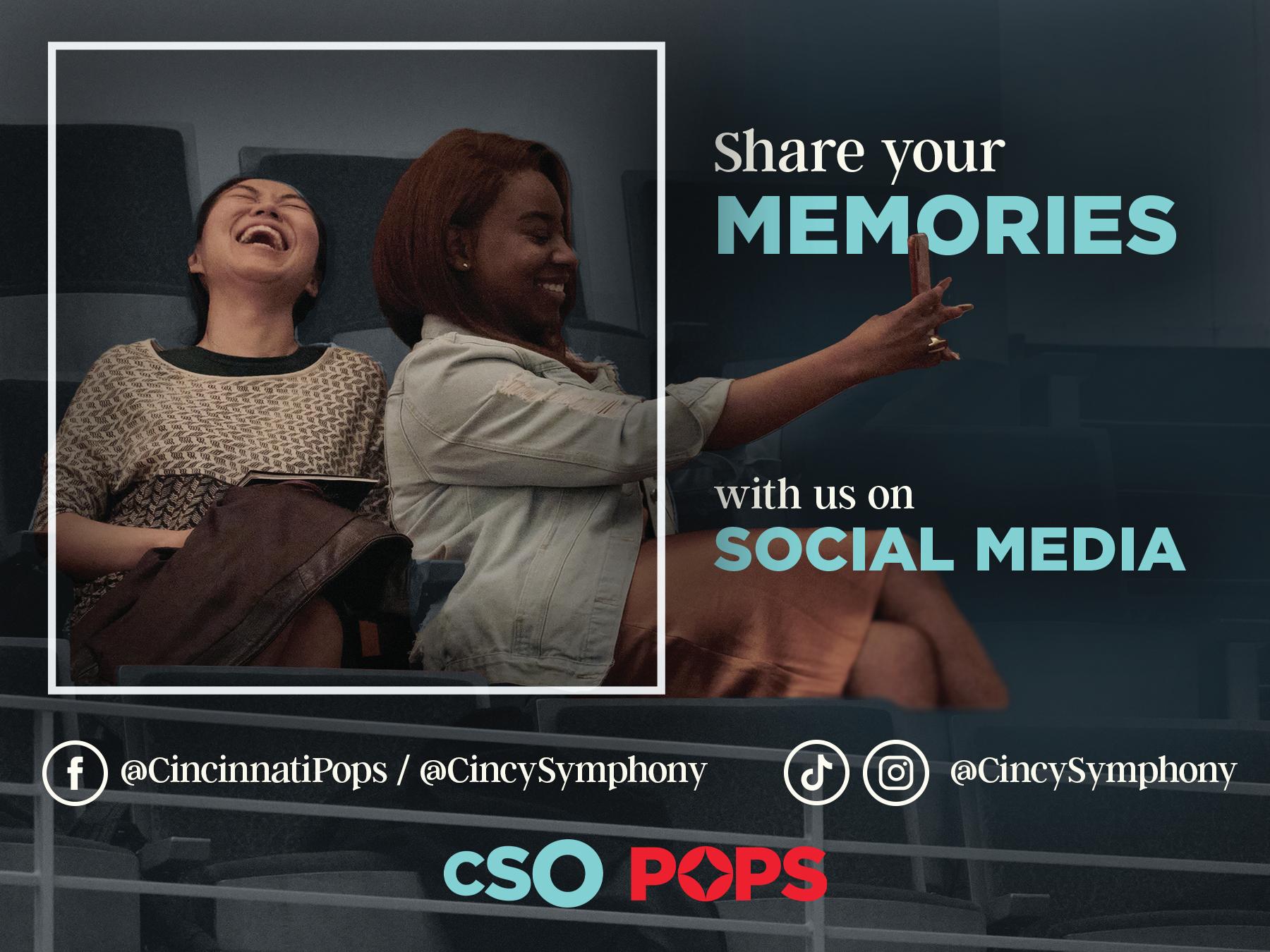
Duration: approx. 16 minutes
WOLFGANG AMADEUS MOZART
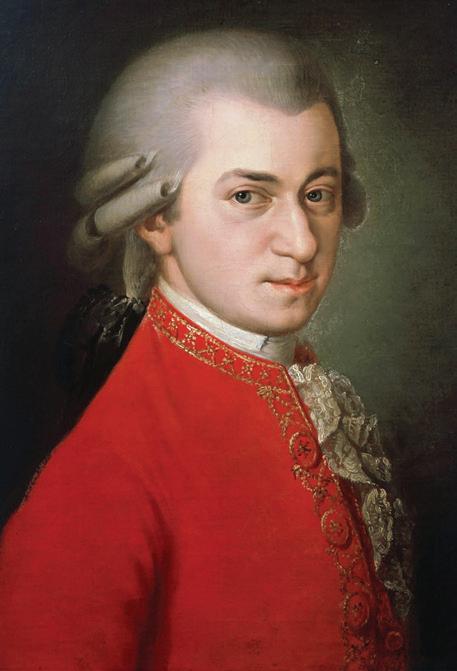
Born: January 27, 1756, Salzburg, Austria
Died: December 5, 1791, Vienna, Austria
Serenade in G Major, K. 525, Eine kleine Nachtmusik
Eine kleine Nachtmusik is at once one of the most familiar yet one of the most mysterious of Mozart’s works. He dated the completed manuscript August 10, 1787, the day he entered it into his catalog of compositions as “Eine kleine Nachtmusik, bestehend in einem [consisting of an] Allegro, Menuett und Trio—Romance, Menuett und Trio, Finale. 2 Violini, Viola e Bassi.” (The first Menuett is lost.) There is no other contemporary record of the work’s provenance, composition or performance. It was the first piece of the serenade type that he had written since the magnificent C Minor Wind Octet (K. 388) of 1782, and it seems unlikely that, at a time when he was increasingly mired in debt, he would have returned to the genre without some promise of payment. Indeed, he had to set aside his furious preparations for the October premiere of Don Giovanni in Prague to compose the piece. The simple, transparent style of Eine kleine Nachtmusik, reminiscent of the music of Mozart’s Salzburg years and so di erent from the heightened expression of his later music, except for the dances he wrote for the Habsburg court balls, suggests that it was designed for amateur performance, perhaps at the request of some aristocratic Viennese player of limited musical ability.
Eine kleine Nachtmusik is an enigma, a wonderful, isolated chronological and stylistic aberration of Mozart’s mature years that raises to perfection the simple musical gestures of his boyhood. Though sunny and cheerful
82 | 2023–24 SEASON
PROGRAM NOTES
Wolfgang Amadeus Mozart
throughout, when seen in the light of its immediate musical companions of 1787—Don Giovanni, the A Major Violin Sonata (K. 526) and the C Major and G Minor String Quintets (K. 515 and 516)—Eine kleine Nachtmusik takes on an added depth of expression as much for what it eschews as for what it contains.
—Dr. Richard E. Rodda
RICHARD WAGNER, arr. Maazel (1930–2014)
Born: May 22, 1813, Leipzig, Germany
Died: February 13, 1883, Venice, Italy
Der Ring ohne Worte (“The Ring Without Words”) for Orchestra
Wagner’s cycle of “music-dramas,” The Ring of the Nibelungen, is unique in the history of art: an ancient mythological tale spread over four interdependent operas; the capstone of Romantic orchestration, harmony and emotional expression; a nodal point in the history of music; and a profound influence on Western thought, art, drama, culture, society and politics.
The vast and complex story of The Ring is told by the singers on stage, but their underlying motivations as well as the cycle’s dramatic and musical continuity are entrusted to the orchestra, whose unprecedented scale, power and importance created a sensation throughout the music world when the operas were new and set a precedent that has continued unabated since. Wagner himself, an excellent and pioneering conductor, began the practice of performing orchestral excerpts from The Ring in concert, and instrumental selections from all four of the operas comprising the cycle have remained standard concert fare. These pieces were programmed as separate selections until 1987, when Cleveland-based record company Telarc International asked Lorin Maazel, a dedicated Wagnerian who had been the first American to conduct the complete Ring at the Festspielhaus (the theater Wagner had specially built in Bayreuth, Germany to stage the cycle), to weave them into a continuous work for a recording with the Berlin Philharmonic.
Maazel set himself some rules in arranging his 70 minutes of orchestraonly excerpts from The Ring’s 17 hours of music:
ONE: The synthesis must be free-flowing (no stops) and chronological, beginning with the first note of Rheingold and finishing with the last chord of Götterdämmerung
TWO: The transitions must be harmonically and formally justifiable, the pacing contrasts commensurate with the length of the work.
THREE: Most all of the music originally written for orchestra without voice must be used, adding those sections with a vocal line essential to a synthesis but only where the line is either doubled by an orchestral instrument or when it can be reproduced by an instrument.

FOUR: Every note must be Wagner’s own.
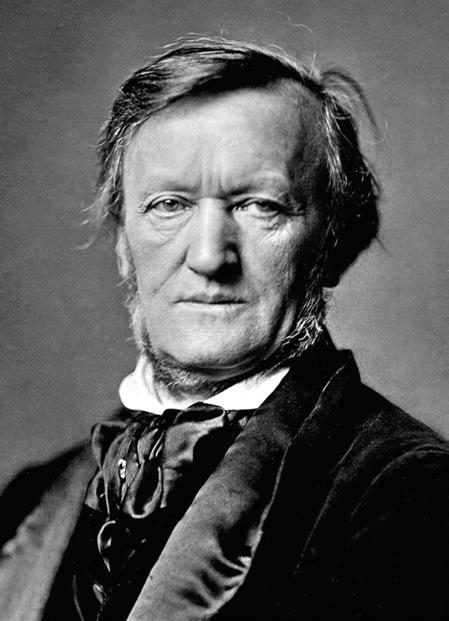
The recording of Maazel’s The Ring Without Words was praised upon its release in 1987 and at its public premiere with the Berlin Philharmonic that December, and his arrangement has since been performed frequently across Europe and America.
—Dr. Richard E. Rodda
Composed: 1853–57 and 1869–74
Premiere: Complete four-opera cycle premiered August 13–17, 1876 at Wagner’s purpose-built Festspielhaus in Bayreuth, Germany, conducted by Hans Richter. Arranged in 1987 by Lorin Maazel and premiered in December 1987 by the Berlin Philharmonic, Lorin Maazel conducting.
Instrumentation: 3 flutes (incl. piccolo), piccolo, 3 oboes, English horn, 3 clarinets, bass clarinet, 3 bassoons, 8 horns (incl. 4 Wagner tubas, 3 o stage horns), 3 trumpets, bass trumpet, 4 trombones (incl. contrabass trombone), tuba, 2 timpani, 3 anvils, bass drum, cow horn, crash cymbals, glockenspiel, snare drum, tam-tam, triangle, 2 harps, strings
CSO notable performances: These are the first CSO performances of The Ring Without Words
Duration: approx. 70 minutes
For more about Wagner’s Der Ring des Nibelungen visit our digital program at cincinnatisymphony.org/ digital-program
PROGRAM NOTES
Fanfare Magazine | 83
Richard Wagner























84 | 2023–24 SEASON find more flavors at homemadebrand . com proud sponsor of GREAT NOTES, GREAT FLAVORS. CHERRY CORDIAL
Overture to The Flying Dutchman
Sensemayá

Waltz from Masquerade
Finale from The Sorcerer’s Apprentice
SAT OCT 28, 10:30 am

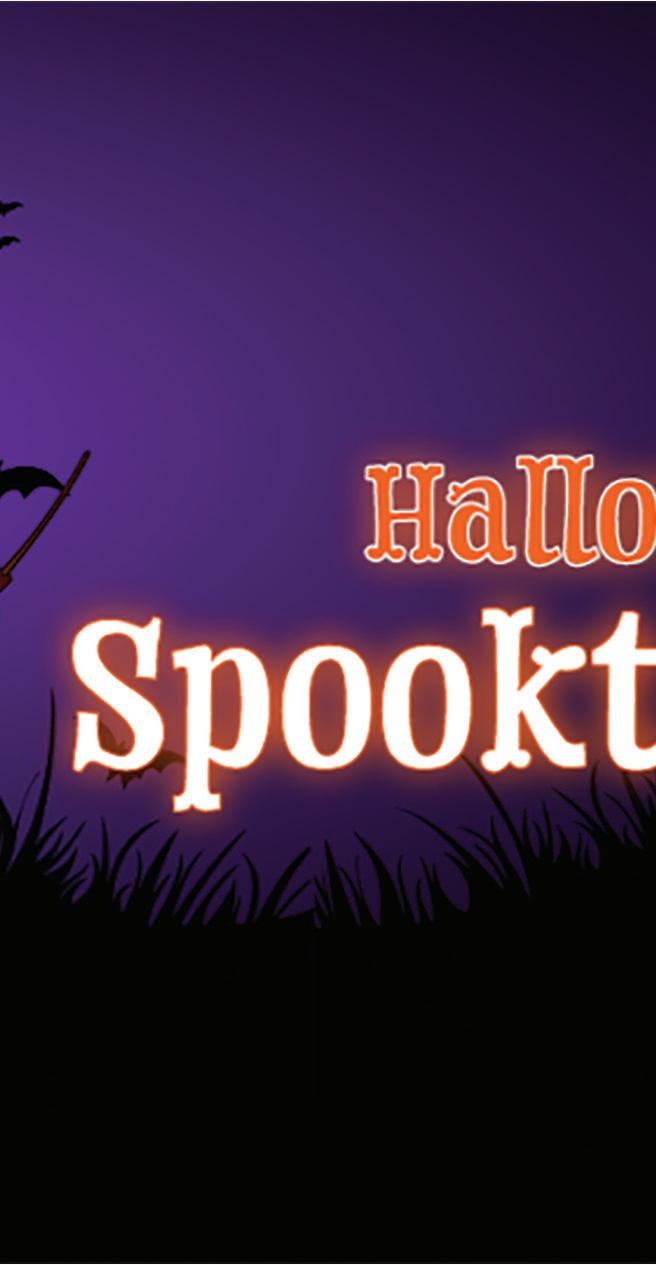
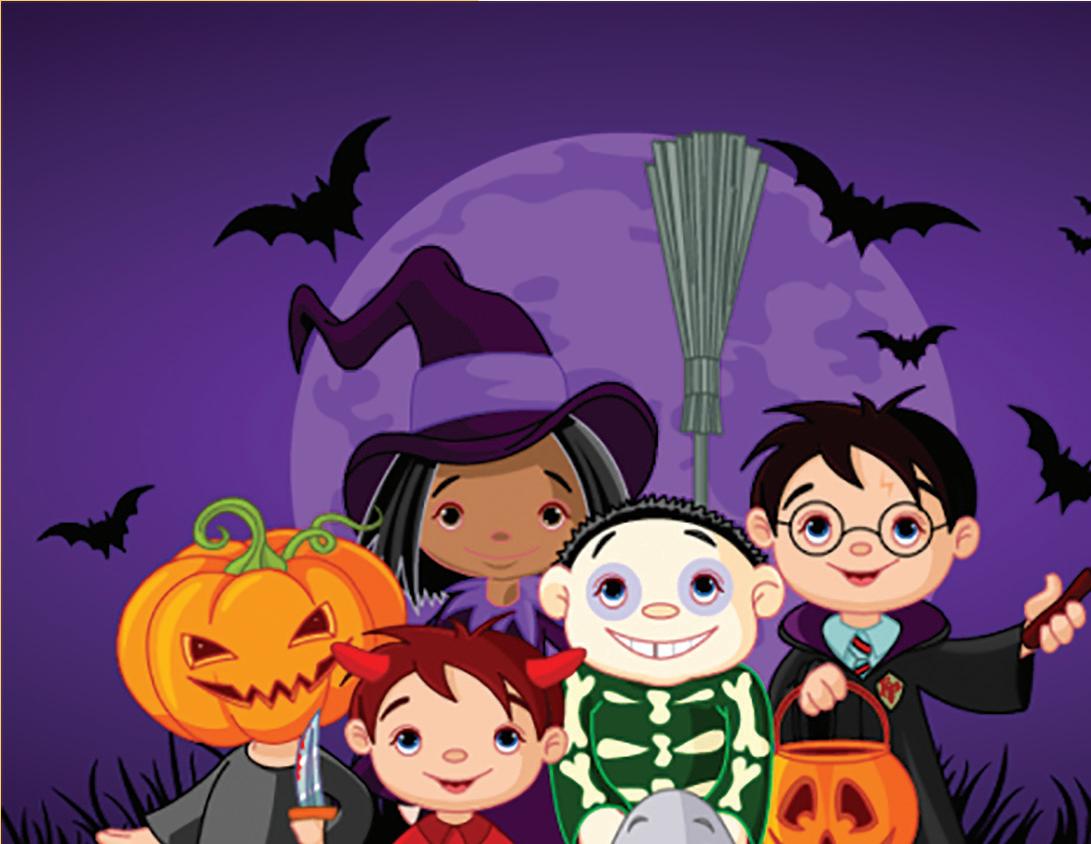
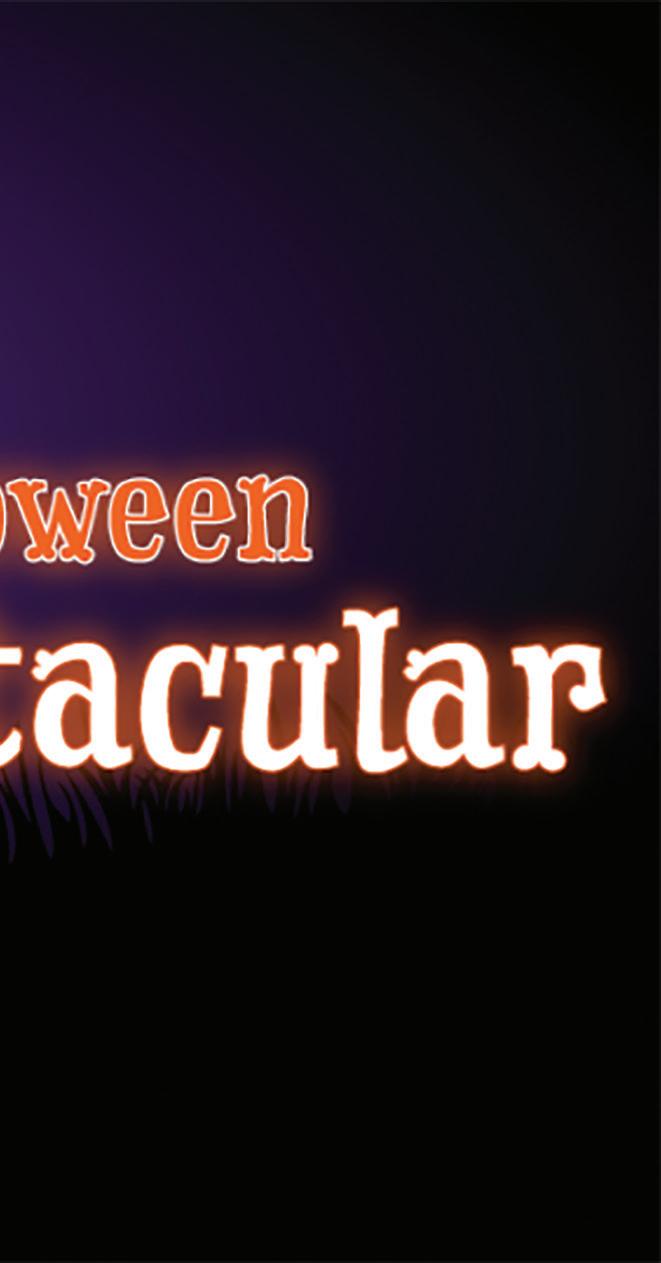
Music Hall
Silvestre Revueltas
Aram Khachaturian
Paul Dukas
John Williams from Harry Potter and the Sorcerer’s Stone
“Hedwig’s Theme” and “Harry’s Wondrous World”
“In the Hall of the Mountain King” from Peer Gynt
The Cincinnati Pops is grateful to Series Sponsor United Dairy Farmers & Homemade Brand Ice Cream Lollipops Family Concerts are supported in part through the Vicki & Rick Reynolds Endowment Fund and through the George & Anne Heldman Endowment Fund

Edvard Grieg
For more information about this program, please text PROGRAM to 513.845.3024*.
*By texting to this number, you may receive messages that pertain to the organization and its performances; msg & data rates may apply. Reply HELP to help, STOP to cancel.
Fanfare Magazine | 85 HALLOWEEN SPOOKTACULAR | 2023–24 SEASON
Daniel Wiley, conductor
Toccata from Toccata and Fugue in D Minor
Johann Sebastian Bach
Richard Wagner
Donate to the CSO by buying yourself a new piano.*
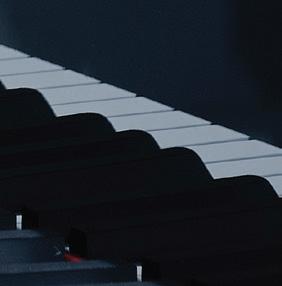
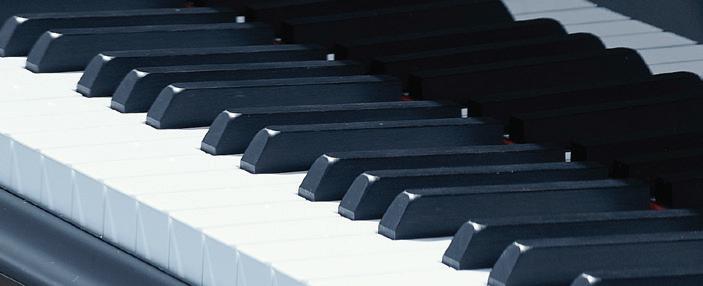
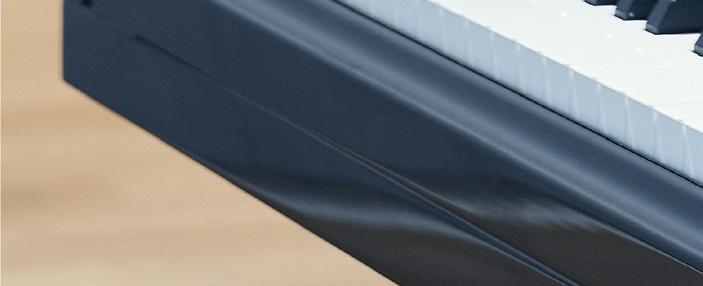
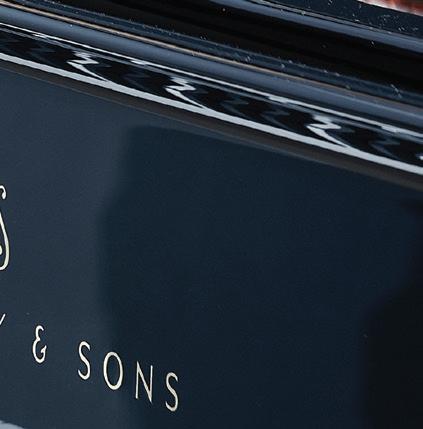
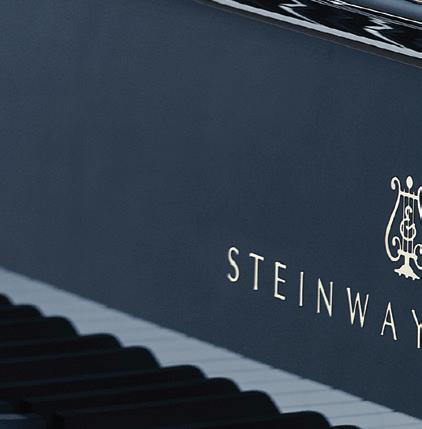

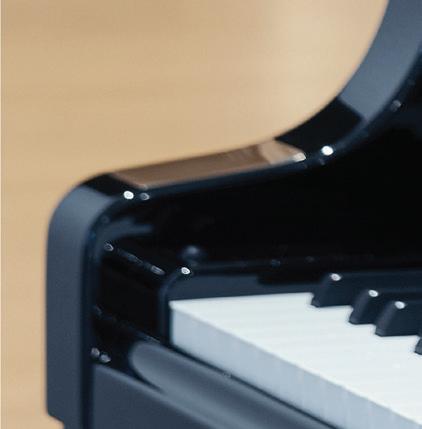


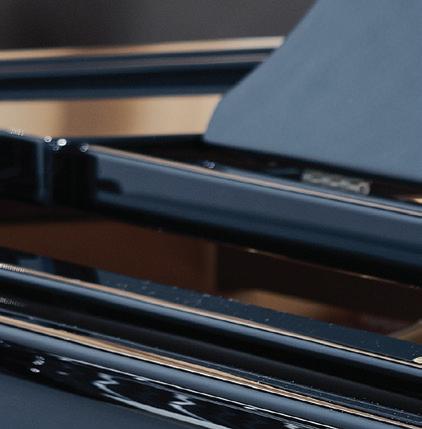
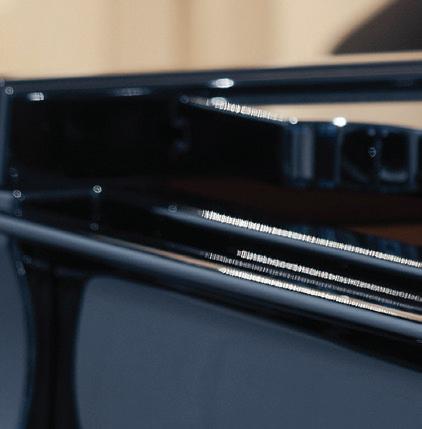

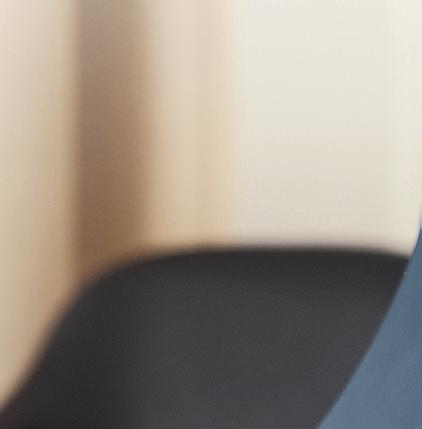

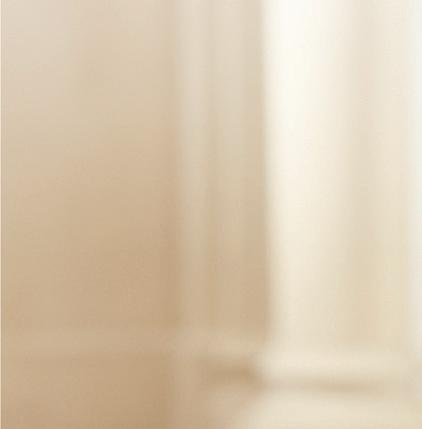
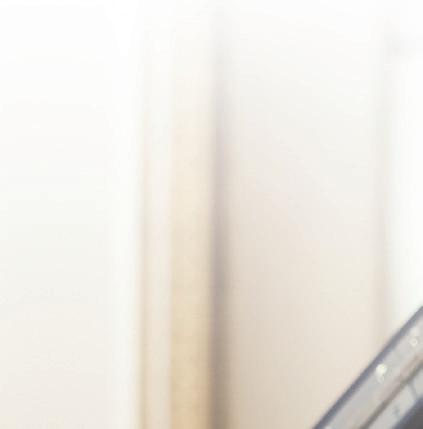



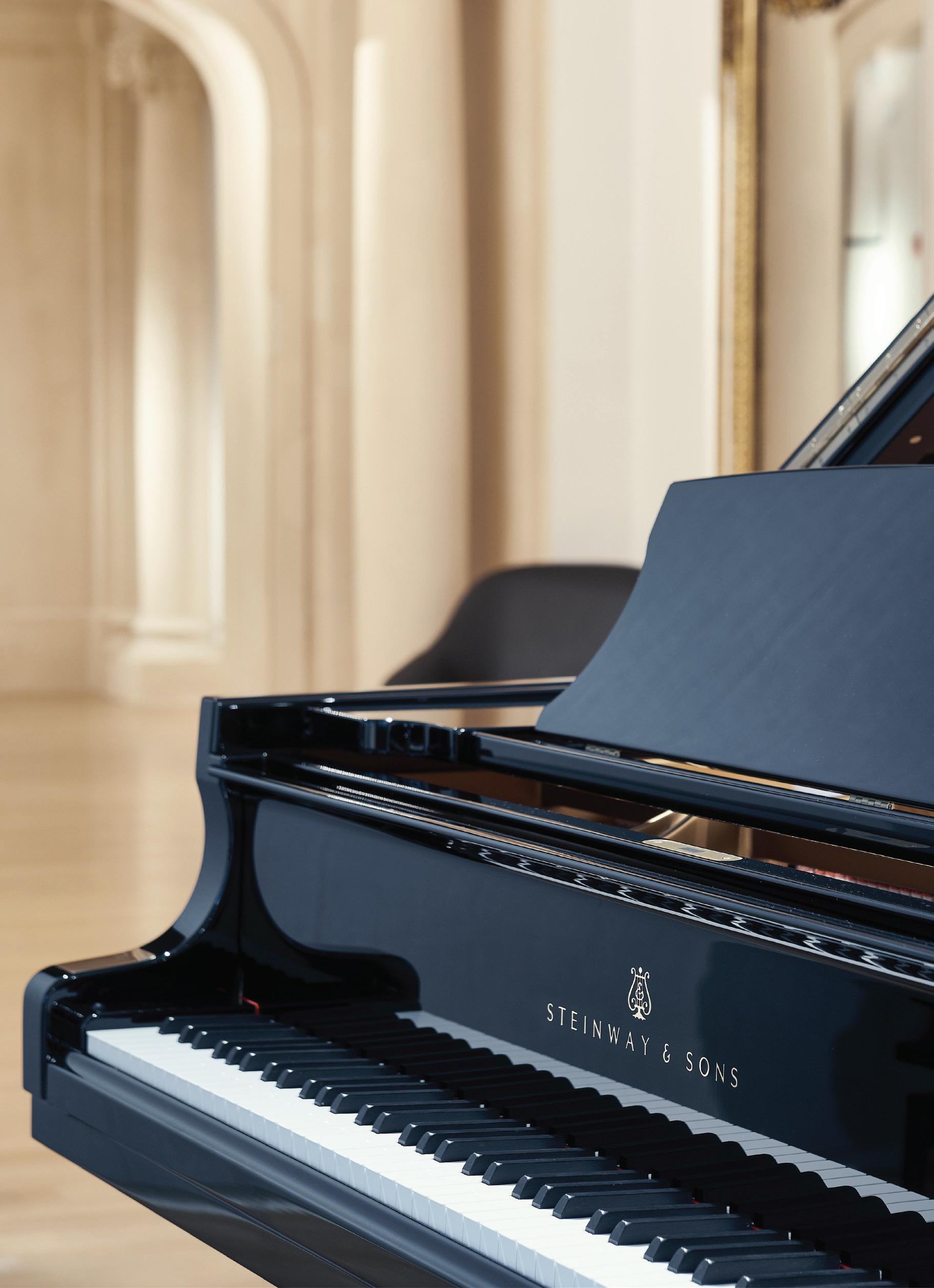
For over 120 years, Willis Music and Cincinnati Symphony Orchestra Have been serving the greater Cincinnati area with music, culture, and music education





EXCELLENCE
STRIVE FOR
Willis Music Kenwood Galleria 8118 Montgomery Road Cincinnati, Oh 45236 (859) 396-4485 pianos@willismusic.com *Willis Music will give a donation to the Cincinnati Symphony Orchestra for every piano that a Cincinnati Symphony Orchestra patron purchases.
. STEINWAY.CINCINNATI.COM
INSTITUTIONAL SUPPORT
Local and national foundations, businesses, and government agencies are integral to the Orchestra’s vibrant performances, community engagement work, and education activities. We are proud to partner with the following funders.
SEASON AND SERIES SPONSORS
PLATINUM BATON CIRCLE ($50,000+)
ArtsWave
Charles H. Dater Foundation
The Thomas J. Emery Memorial Trust
The Fifth Third Foundation

The Carol Ann and Ralph V. Haile, Jr. Foundation
David C. Herriman Fund of Greater Cincinnati Foundation
Carl Jacobs Foundation
H.B., E.W., F.R. Luther Charitable Foundation
The Mellon Foundation
Dr. John & Louise Mulford Fund for the CSO
National Endowment for the Arts
Louise Dieterle Nippert Musical Arts Fund of the Greenacres Foundation
Ohio Arts Council
PNC Bank

Margaret McWilliams Rentschler Fund of Greater Cincinnati Foundation
Nina Browne Parker Trust
Harold C. Schott Foundation / Francie and Tom Hiltz, Trustees
Marge and Charles J. Schott Foundation
The Louise Taft Semple Foundation
Skyler Foundation
Western & Southern Financial Group Anonymous
GOLD BATON CIRCLE ($25,000–$49,999)
Coney Island
The Cincinnati Symphony Club
The Jewish Foundation of Cincinnati
George and Margaret McLane Foundation
The Ladislas & Vilma Segoe Family Foundation
United Dairy Farmers & Homemade Brand Ice Cream
The Wohlgemuth Herschede Foundation
SILVER BATON CIRCLE ($15,000–$24,999)
Graeter’s Ice Cream
HORAN
Johnson Investment Counsel
League Of American Orchestras
Oliver Family Foundation
The Rendigs Foundation
Taft Stettinius & Hollister LLP
Scott and Charla Weiss
Wodecroft Foundation
2023 ARTSWAVE PARTNERS
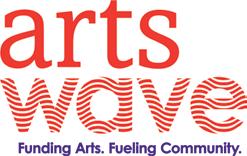
CONDUCTOR’S CIRCLE ($10,000–$14,999)
Bartlett Wealth Management
Chemed Corporation
The Crosset Family Fund of Greater Cincinnati Foundation
CVG Airport Authority
Kelly Dehan and Rick Staudigel
Peter E. Landgren and Judith Schonbach Landgren
Messer Construction Co.
The Daniel & Susan Pfau Foundation
CONCERTMASTER’S CIRCLE ($5,000–$9,999)
Levin Family Foundation
The Willard & Jean Mulford Charitable Fund
Pyro-Technical Investigations, Inc.
Queen City (OH) Chapter of The Links, Incorporated
Thompson Hine LLP
ARTIST’S CIRCLE ($2,500–$4,999)
d.e. Foxx and Associates, Inc.
Richard Freshwater
L. Timothy Giglio
Ohio CAT
Charles Scott Riley III Foundation
Kyle Wynk-Sivashankar and Siva Shankar
BUSINESS & FOUNDATION PARTNERS (up to $2,499)

African American Chamber of Commerce
Albert B. Cord Charitable Foundation
D’Addario Foundation
Earthward Bound Foundation
Hixson Architecture Engineering Interiors
Journey Steel
Robert A. & Marian K. Kennedy Charitable Trust
PricewaterhouseCoopers LLP
Frances L. P. Ricketts Sullivan Memorial Fund
The Voice of Your Customer
Toi and Jay Wagsta
Visit Cincy
Join this distinguished group! Contact Sean Baker at 513.744.3363 or sbaker@cincinnatisymphony.org to learn how you can become a supporter of the CSO and Pops. This list is updated quarterly.
The Cincinnati Symphony Orchestra and Cincinnati Pops acknowledge the following partner companies, foundations and their employees who generously participate in the Annual ArtsWave Community Campaign at the $100,000+ level.
$2 million+
P&G
$1 million to $1,999,999
Fifth Third Bank and Fifth Third Foundation
$500,000 to $999,999
altafiber
GE Aerospace
$250,000 to 499,999
Cincinnati Children’s Hospital Medical Center
The Cincinnati Insurance Companies
Western & Southern Financial Group
$100,000–$299,999
Carol Ann and Ralph V. Haile, Jr. Foundation
Cincinnati Business Courier
Cincinnati Reds
Duke Energy
The E.W. Scripps Company and Scripps Howard Foundation
The Enquirer | Cincinnati.com
Great American Insurance Group
Greater Cincinnati Foundation
The H.B., E.W. and F.R. Luther Charitable Foundation, Fifth Third Bank, N.A., Trustee
The Kroger Co.
Messer Construction Co.
PNC
U.S. Bank
Fanfare Magazine | 87 2023–24 FINANCIAL SUPPORT
Pops Season Lollipops Series CSO Season
IDEA Series
PERMANENT ENDOWMENTS
Endowment gifts perpetuate your values and create a sustainable future for the Orchestra. We extend our deep gratitude to the donors who have provided permanent endowments in support of our programs that are important to them. For more information about endowment gifts, contact Kate Farinacci, Director of Special Campaigns & Legacy Giving, at 513.744.3202.
ENDOWED CHAIRS
Grace M. Allen Chair
Ellen A. & Richard C. Berghamer Chair
Robert E. & Fay Boeh Chair
The Marc Bohlke Chair given by Katrin & Manfred Bohlke
Trish & Rick Bryan Chair
Otto M. Budig Family Foundation Chair
Mary Alice Heekin Burke Chair
Michael L. Cio & Rachael Rowe—
the Honorable Nathaniel R. Jones Chief Diversity & Inclusion O cer
Peter G. Courlas–Nicholas Tsimaras Chair
Ona Hixson Dater Chair
The Anne G. & Robert W. Dorsey Chair+
Jane & David Ellis Chair
Irene & John J. Emery Chair
James M. Ewell Chair
Ashley & Barbara Ford Chair for Assistant Conductor
Ashley & Barbara Ford Chair for Assistant Conductor
Ashley & Barbara Ford Chair for Principal Tuba
Susan S. & William A. Friedlander Chair+
Charles Gausmann Chair
Susanne & Philip O. Geier, Jr. Chair+
Emma Margaret & Irving D. Goldman Chair
Cli ord J. Goosmann & Andrea M. Wilson Chair
Charles Frederic Goss Chair
Jean Ten Have Chair
Dorothy & John Hermanies Chair
Lois Klein Jolson Chair
Josephine I. & David J. Joseph, Jr. Chair
Harold B. & Betty Justice Chair
Marvin Kolodzik & Linda S. Gallaher Chair+
Al Levinson Chair
Patricia Gross Linnemann Chair+
Alberta & Dr. Maurice Marsh Chair
Stephen P. McKean Chair
Laura Kimble McLellan Chair
The Henry Meyer Chair
The Louise Dieterle Nippert & Louis Nippert Chairs
Rawson Chair
The Vicky & Rick Reynolds Chair in honor of William A. Friedlander+
Ida Ringling North Chair
Donald & Margaret Robinson Chair
Dianne & J. David Rosenberg Chair+
Ruth F. Rosevear Chair
The Morleen & Jack Rouse Chair+
Emalee Schavel Chair
Karl & Roberta Schlachter Family Chair
Serge Shababian Chair
Melinda & Irwin Simon Chair+
Tom & Dee Stegman Chair+
Mary & Joseph S. Stern, Jr. Chair+
Cynthia & Frank Stewart Chair
The Jackie & Roy Sweeney Family Chair
The Sweeney Family Chair in memory of Donald C. Sweeney
Anna Sinton Taft Chair
Brenda & Ralph Taylor Chair
James P. Thornton Chair
Nicholas Tsimaras–Peter G. Courlas Chair
Thomas Vanden Eynden Chair
Sallie Robinson Wadsworth & Randolph L. Wadsworth Jr. Chair
Jo Ann & Paul Ward Chair
Matthew & Peg Woodside Chair
Mary M. & Charles F. Yeiser Chair
ENDOWED PERFORMANCES &

PROJECTS
Eleanora C. U. Alms Trust, Fifth Third Bank, Trustee
Rosemary and Frank Bloom Endowment Fund*+
Cincinnati Bell Foundation Inc.
Mr. & Mrs. Val Cook
Nancy & Steve Donovan*
Sue and Bill Friedlander Endowment Fund*+
Mrs. Charles Wm Anness*, Mrs. Frederick D. Ha ner, Mrs. Gerald Skidmore and the La Vaughn Scholl Garrison Fund
Fred L. & Katherine H. Groll Fund for Musical Excellence
Fred L. & Katherine H. Groll Fund for Great Artists

Fred L. & Katherine H. Groll Trust Pianist Fund
The Carol Ann and Ralph V. Haile, Jr. Foundation Endowment Fund
Anne Heldman Endowment Fund**
Mr. and Mrs. Lorrence T. Kellar+
Lawrence A. & Anne J. Leser*
Mr. & Mrs. Carl H. Lindner**
Janice W. & Gary R. Lubin Fund for Black Artists
PNC Financial Services Group
The Procter & Gamble Fund
Vicky & Rick Reynolds Fund for Diverse Artists+
Melody Sawyer Richardson*
Rosemary and Mark Schlachter Endowment Fund*+
The Harold C. Schott Foundation, Francie and Tom Hiltz Endowment Fund+
Peggy Selonick Fund for Great Artists
Dee and Tom Stegman
Endowment Fund*+
Mr. & Mrs. Joseph S. Stern, Jr. Fund for Great Artists
U. S. Bank Foundation*
Sallie and Randolph Wadsworth Endowment Fund+
Educational Concerts
Rosemary & Frank Bloom *
Cincinnati Financial Corporation & The Cincinnati Insurance Companies
The Margaret Embsho
Educational Fund

Kate Foreman Young Peoples Fund
George & Anne Heldman+
Macy’s Foundation
Vicky & Rick Reynolds*+
William R. Schott Family**
Western-Southern Foundation, Inc. Anonymous (3)+

OTHER NAMED FUNDS
Ruth Meacham Bell Memorial Fund
Frank & Mary Bergstein Fund for Musical Excellence+

Jean K. Bloch Music Library Fund
Cora Dow Endowment Fund
Corbett Educational Endowment**
Belmon U. Duvall Fund
Ewell Fund for Riverbend Maintenance
Linda & Harry Fath
Endowment Fund
Ford Foundation Fund
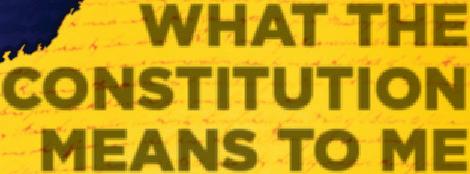
Natalie Wurlitzer & William Ernest Griess Cello Fund
William Hurford and Lesley
Gilbertson Family Fund for Guest Pianists
The Mary Ellyn Hutton Fund for Excellence in Music Education
Josephine I. & David J. Joseph, Jr. Scholarship Fund
Richard & Jean Jubelirer & Family Fund*
The Kosarko Family Innovation Fund
Elma Margaret Lapp Trust
Jésus López-Cobos Fund for Excellence
Mellon Foundation Fund
Nina Browne Parker Trust
Dorothy Robb Perin & Harold F. Poe Trust
Rieveschl Fund
Thomas Schippers Fund
Martha, Max & Alfred M. Stern
Ticket Fund
Mr. & Mrs. John R. Strauss
Student Ticket Fund
Anna Sinton & Charles P. Taft Fund
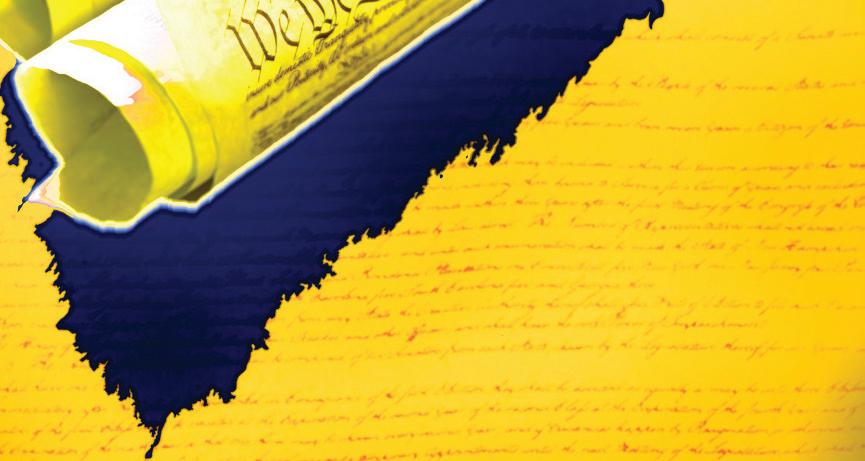
Lucien Wulsin Fund
Wurlitzer Season Ticket Fund
CSO Pooled Income Fund
CSO Musicians Emergency Fund
*Denotes support for Annual Music Program Fund



**Denotes support for the 2nd Century Campaign
+Denotes support for the Fund for Musical Excellence
 book by Zina Camblin music & lyrics by David Kisor
by Heidi Schreck
book by Zina Camblin music & lyrics by David Kisor
by Heidi Schreck
88 | 2023–24 SEASON FINANCIAL SUPPORT
www.ensemblecincinnati.org OPERATING SUPPORT
WHAT THE CONSTITUTION MEANS TO ME REGIONAL PREMIERE DRAMEDY
FIONA: THE MUSICAL WORLD PREMIERE MUSICAL NOV 29 – DEC 29 SEPT 9 – OCT 1
HONOR ROLL OF CONTRIBUTORS
The Cincinnati Symphony Orchestra and Cincinnati Pops are grateful to the following individuals that support our efforts by making a gift to the Orchestra Fund. We extend our heartfelt thanks to each and every one and pay tribute to them here. You can join our family of donors online at cincinnatisymphony.org/donate or by contacting the Philanthropy Department at 513.744.3271.
PLATINUM BATON CIRCLE
Gifts of $50,000 and above
Mr. and Mrs. Frederick E. Bryan, III
Michael L. Cioffi & Rachael Rowe
Robert W. Dorsey §
Healey Liddle Family Foundation, Mel & Bruce Healey
George L. and Anne P. Heldman Fund* §
Harold C. Schott Foundation, Francie & Tom Hiltz
Florence Koetters
Mr. and Mrs. Timothy Maloney
Jo Anne and Joe Orndorff
Marilyn J.* and Jack D. Osborn §
In Memory of Laura Gamble Thompson
Vicky and Rick Reynolds
Ann and Harry Santen §
Irwin and Melinda Simon
Tom and Dee Stegman
Jackie and Roy Sweeney Family Fund*
Mr. Randolph L. Wadsworth Jr. §
Scott and Charla Weiss
Anonymous (1)
GOLD BATON CIRCLE
Gifts of $25,000–$49,999
Dr. and Mrs. John and Suzanne Bossert §
Sheila and Christopher C. Cole
Dr. and Mrs. Carl G. Fischer
Ashley and Bobbie Ford §
Dr. Lesley Gilbertson and Dr. William Hurford
Patti and Fred Heldman
Mrs. Andrea Kaplan
Edyth B. Lindner
Calvin and Patricia Linnemann
Whitney and Phillip Long
Mark and Tia Luegering
Mrs. Susan M. McPartlin
G. Franklin Miller and Carolyn Baker Miller
Dianne and J. David Rosenberg
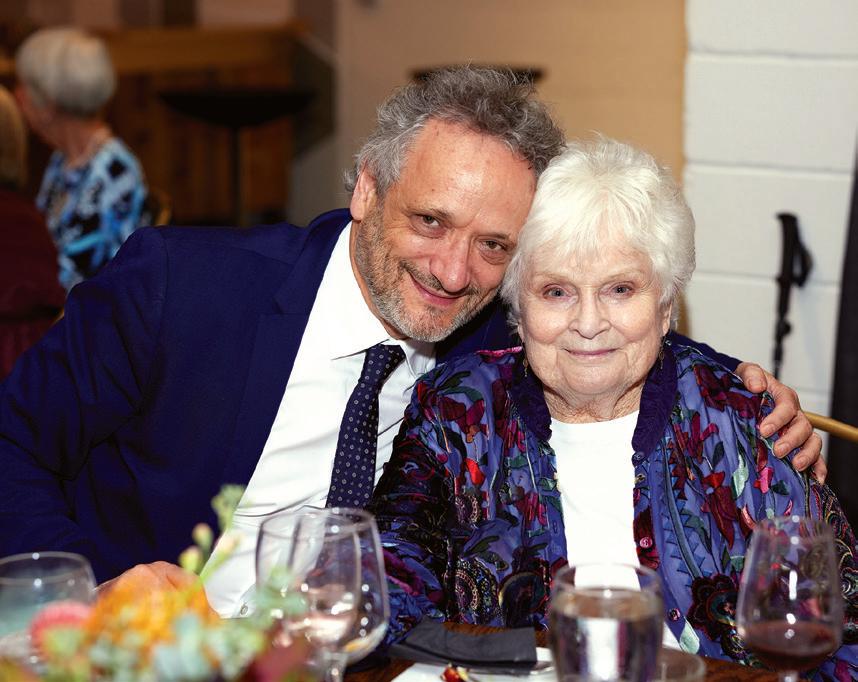
Moe and Jack Rouse §
Mrs. Theodore Striker
Mr. and Mrs. Jonathan Ullman
Nancy C. Wagner and Patricia M. Wagner §
SILVER BATON CIRCLE
Gifts of $15,000–$24,999
Mr. and Mrs. Larry Brueshaber
CCI Design, Molly and Tom Garber
Mr. Gregory D. Buckley and Ms. Susan Berry-Buckley
Robert and Debra Chavez
Stephen J Daush
Kelly Dehan and Rick Staudigel
Dianne Dunkelman and Clever Crazes for Kids
Tom and Jan Hardy §
Mr. and Mrs. Joseph W. Hirschhorn §
Marvin P. Kolodzik and Linda S. Gallaher §
Mrs. Erich Kunzel
Alan Margulies and Gale Snoddy
In memory of Bettie Rehfeld
Mr. and Mrs. Robert W. McDonald
Joseph A. and Susan E. Pichler Fund*
Mrs. Anne Drackett Thomas
Christopher and Nancy Virgulak
DeeDee and Gary West §
Mrs. James W. Wilson, Jr.
Mr. and Mrs. James M. Zimmerman §
Anonymous (1)
CONDUCTOR’S CIRCLE
Gifts of $10,000–$14,999
Mr. and Mrs. Andrew Akers
Michael P Bergan and Tiffany Hanisch
Ms. Melanie M. Chavez
Mrs. Thomas E. Davidson §
Emory P. Zimmer Insurance Agency
Dr. and Mrs. Alberto Espay
Mr. and Mrs. Tom Evans
Mrs. Charles Fleischmann
Anne E. Mulder and Rebecca M. Gibbs
William and Jo Ann Harvey
Patrick and Mary Kirk
John and Ramsey Lanni
The Lewis and Marjorie Daniel Foundation
Holly and Louis Mazzocca
Mr. Bradford Phillips III
Bill and Lisa Sampson
Mark S. and Rosemary K. Schlachter §
Mr. Lawrence Schumacher
In memory of Mary and Joseph S. Stern, Jr
Ralph C. Taylor §
Sarah Thorburn
Mr. and Mrs. JD Vance
Anonymous (2)
CONCERTMASTER’S CIRCLE
Gifts of $5,000–$9,999
Dr. Charles Abbottsmith
Thomas P. Atkins
Mrs. Thomas B. Avril
Joe and Patricia Baker
Kathleen and Michael Ball
Robert and Janet Banks
Robert L. Bogenschutz
Thomas A. Braun, III §
The Otto M. Budig Family Foundation
Sally and Rick Coomes
Bedouin and Randall Dennison
Dennis W. and Cathy Dern
Laura Doerger-Roberts & Peter Roberts
Mrs. John C. Dupree
Mrs. Diana T. Dwight
In Loving Memory of Diane Zent
Mr. and Mrs. Richard Fencl
Mr. and Mrs. James T. Fitzgerald
Marlena and Walter Frank
Dr. and Mrs. Harry F. Fry
L. Timothy Giglio
Kathy Grote in loving memory of Robert Howes §
Mr. and Mrs. Lawrence Hamby
John B. and Judith O. Hansen
Ms. Delores Hargrove-Young
Mr. and Mrs. Brian E. Heekin
Dr. James and Mrs. Susan Herman
Mr. and Mrs. Stephen Hicks
Karlee L. Hilliard §
Mr. and Mrs. Geoffrey Keenan
Mr. and Mrs. Richard Kovarsky
Michael and Marilyn Kremzar
Peter E. Landgren and Judith Schonbach Landgren
Richard and Susan Lauf
Will and Lee Lindner
Elizabeth and Brian Mannion
David L. Martin
Mr. Jonathan Martin
Barbara and Kim McCracken §
Linda and James Miller
James and Margo Minutolo
Mr. Arthur Norman and Mrs. Lisa Lennon Norman
Alice Perlman
David and Jenny Powell
Ellen Rieveschl
Elizabeth and Karl Ronn §
James and Mary Russell
Dr. E. Don Nelson and Ms. Julia Sawyer-Nelson
Martha and Lee Schimberg
Mr. Dennis Schoff and Ms. Nina Sorensen
Mike and Digi Schueler
Brent & Valerie Sheppard
Sue and Glenn Showers §
Rennie and David Siebenhar
Mr. and Mrs. Gerald Skidmore §
Michael and Donnalyn Smith
Dr. Jean and Mrs. Anne Steichen
Brett Stover §
Mr. and Mrs. David R. Valz
Mr. and Mrs. Daniel Wachter
Mrs. Paul H. Ward §
Donna A. Welsch
Cathy S. Willis
Andrea K. Wiot
Irene A. Zigoris Anonymous (3)
ARTIST’S CIRCLE
Gifts of $3,000–$4,999
Mr. and Mrs. Richard N. Adams
Mr. Roger Ames
Mr. Nicholas Apanius
Heather Apple and Mary Kay Koehler
Mr. and Mrs. Gérard Baillely
Glenn and Donna Boutilier
Peter and Kate Brown
Dr. Ralph P. Brown
Janet and Bruce Byrnes
Gordon Christenson
Susan and Burton Closson
Lois Cohen §
Marjorie Craft
George Deepe and Kris Orsborn
Jim and Elizabeth Dodd
Dr. and Mrs. Stewart B. Dunsker
David and Kari Ellis Fund*
Ann A. Ellison
Hardy and Barbara Eshbaugh
Yan Fridman
Frank and Tara Gardner
Dr. and Mrs. Ralph A. Giannella
Lesha and Samuel Greengus
Dr. and Mrs. Jack Hahn
Dr. Donald and Laura Harrison
Mr. and Mrs. Robert R. Heidenreich
Donald and Susan Henson
Ruth C. Holthaus
In Memory of Benjamin C. Hubbard
Mr. and Mrs. Bradley G. Hughes
Mr. and Mrs. Michael C. Hughes
Karolyn Johnsen
Dr. Richard and Lisa Kagan
Dr. Robert W. Keith and Ms. Kathleen Thornton
Don and Kathy King
Lynn Keniston Klahm
Marie and Sam Kocoshis
Mr. Frank P. Kromer
Mr. Shannon Lawson
Mrs. Jean E. Lemon §
Mrs. Robert Lippert
Merlanne Louney
Mr. and Mrs. Donald Marshall
Glen and Lynn Mayfield
Allen-McCarren
Ms. Amy McDiffett
Mrs. Patricia Misrach
Mr. and Mrs. David E. Moccia §
George and Sarah Morrison III
Ms. Mary Lou Motl
Phyllis Myers and Danny Gray
Poul D. and JoAnne Pedersen
Mark and Kim Pomeroy
Mr. Aftab Pureval
Michael and Katherine Rademacher
James Rubenstein and Bernadette Unger
Mr. & Mrs. Peter A. Schmid
Rev. Dr. David V. Schwab
Mr. Rick Sherrer and Dr. Lisa D. Kelly
Elizabeth C. B. Sittenfeld §
Doug and Laura Skidmore
Elizabeth A. Stone
Margaret and Steven Story
Mr. and Mrs. J. Dwight Thompson
Mr. and Mrs. Ronald Tinklenberg
Neil Tollas and Janet Moore
Dr. and Mrs. Galen R. Warren
Jonathan and Janet Weaver
Jo Ann Wieghaus
Ronna and James Willis
Steve and Katie Wolnitzek
Carol and Don Wuebbling
Mr. and Mrs. Robert L. Zierolf
Anonymous (3)
SYMPHONY CIRCLE
Gifts of $1,500–$2,999
Jeff and Keiko Alexander §
Lisa Allgood
Beth and Bob Baer
Mrs. Gail Bain
William and Barbara Banks
David and Elaine Billmire
Towne Properties
Dr. and Mrs. William Bramlage
Mrs. Jo Ann C. Brown
Ms. Jaqui Brumm
Chris and Tom Buchert
Dr. Leanne Budde
Daniel A. Burr
Ms. Barbara Caramanian
Tom Carpenter and Lynne Lancaster
Dr. Alan Chambers
Randy K. and Nancy R. Cooper
Ms. Andrea Costa
Mr. and Mrs. Charles E. Curran, III §
Mr. Louis M. Dauner and Ms. Geraldine N. Wu
Mrs. Shirley Duff
Mr. and Mrs. John G. Earls §
Ross Charitable Trust
Dr. Thomas and Geneva Cook
Gail F. Forberg §
Dr. Charles E. Frank and Ms. Jan Goldstein
Mr. and Mrs. Joseph Fricke
Linda P. Fulton §
Dudley Fulton
Kathleen Gibboney
Mrs. Jay N. Gibbs
Fanfare Magazine | 89
FINANCIAL SUPPORT
Louis Langrée and Dee Stegman at the Conductor’s Circle Dinner on MAY 3. Credit: Claudia Hershner
Donn Goebel and Cathy McLeod
Dr. and Mrs. Glenn S. Gollobin
Drew Gores and George Warrington
Bill and Christy Griesser
John and Elizabeth Grover
Esther B. Grubbs
Mr. and Mrs. Byron Gustin
Mr. Tom Helmick
Mr. Fred Heyse
Melissa Huber
Mr. Bradley Hunkler
Heidi Jark and Steve Kenat
Linda Busken and Andrew M. Jergens §
Barbara M. Johnson
Ms. Sylvia Johnson
Holly H. Keeler
Arleene Keller
Mr. and Mrs. Woodrow Keown, Jr.
John and Molly Kerman
Bill and Penny Kincaid
In Memory of Jeff Knoop
Juri Kolts
Carol Louise Kruse
Evelyn and Fred Lang
Charles and Jean Lauterbach
Mary Mc and Kevin Lawson
Elizabeth Lilly*
Dr. and Mrs. Lynn Y. Lin
Mr. and Mrs. Clement H. Luken, Jr.
Edmund D. Lyon
Mr. Gerron McKnight
Becky Miars
John and Roberta Michelman
Mr. and Mrs. David A. Millett
Susan E. Noelcke
Nan L. Oscherwitz
Rick Pescovitz and Kelly Mahan
Sandy Pike §
James W. Rauth §
Beverly and Dan Reigle
Stephen and Betty Robinson
Marianne Rowe §
Nancy Ruchhoft
Frederick R. Schneider
James P. Schubert
Stephanie A. Smith
Albert and Liza Smitherman
Bill and Lee Steenken
Mrs. Donald C. Stouffer
Mr. and Mrs. Richard Stradling, Jr.
Susan and John Tew
In Memory of Mr. William T. Bahlman, Jr. §
Janet Todd §
Mr. William Trach
Barbie Wagner
Michael L. Walton, Esq
Ted and Mary Ann Weiss
David F. and Sara K. Weston Fund
Virginia Wilhelm
Rev. Anne Warrington Wilson
Robert and Judy Wilson
Jeff Yang
David and Sharon Youmans
Ms. Nancy Zimpher
Anonymous (8)
CONCERTO CLUB
Gifts of $500–$1,499
Christine O. Adams
Romola N. Allen
In memory of Carol Allgood & Ester Stevens
Mr. Thomas Alloy & Dr. Evaline Alessandrini
Paul and Dolores Anderson
Dr. Victor and Dolores Angel
Nancy J. Apfel
Judy Aronoff and Marshall Ruchman
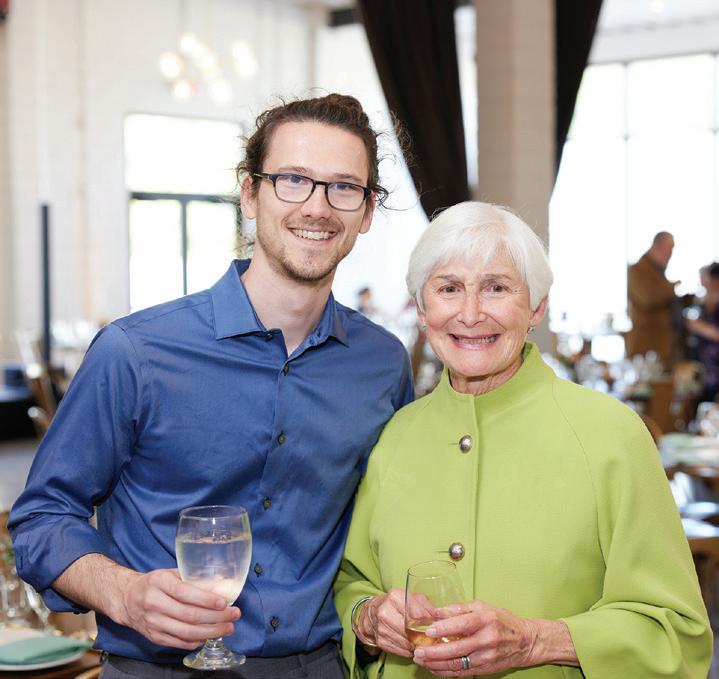
Ms. Laura E. Atkinson
Mr. David H. Axt and Ms. Susan L. Wilkinson
Dr. Diane S. Babcock §
Nate and Greta Bachhuber
Mrs. Mary M. Baer
Todd and Ann Bailey
Jerry and Martha Bain
Mr. and Mrs. Carroll R. Baker
Jack and Diane Baldwin
Peggy Barrett §
Mrs. Polly M. Bassett
Ms. Glenda Bates
Michael and Amy Battoclette
Ms. Bianca Gallagher
Fred Berger
Dr. Allen W. Bernard
Dr. David and Cheryl Bernstein
Glenda and Malcolm Bernstein
Ms. Henryka Bialkowska-Nagy
Sharon Ann Kerns and Mike Birck
Randal and Peter Bloch
Dr. and Mrs. Jeffrey Bloomer
Ms. Sandra Bolek
Ron and Betty Bollinger
Clay and Emily Bond
Mr. and Mrs. Kenneth Borisch
Dr. Carol Brandon
Marilyn and John Braun
Briggs Creative Services, LLC
Robert and Joan Broersma
Marian H. Brown
Rachelle Bruno and Stephen Bondurant
Jacklyn and Gary Bryson
Bob and Angela Buechner
Jack and Marti Butz
Ms. Deborah Campbell §
Mr. and Mrs. Christopher Canarie
Mr. and Mrs. Thomas Carothers
Susan L. Carson
Dr. Julia H. Carter
The Castellini Company
Mike and Shirley Chaney
Catharine W. Chapman §
Ichun Chiao
Dee and Frank Cianciolo Fund*
James Civille
Beverly Kinney and Edward Cloughessy
Dr. George I. Colombel
Fred W. Colucci
Mr. and Mrs. Philip K. Cone
Marilyn Cones
Dr. Margaret Conradi
Thomas and Barbara Conroy
Janet Conway
Jack and Janice Cook §
Robin Cotton and Cindi Fitton
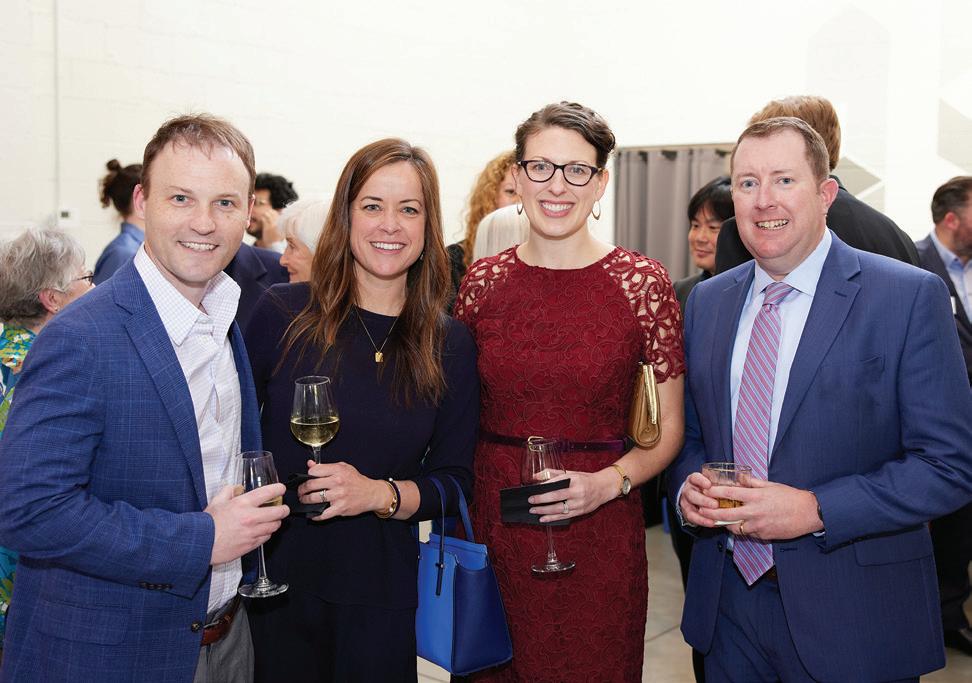
Martha Crafts
Dr. James Creech
Tim and Katie Crowley
Susan and John Cummings
Adrian and Takiyah Cunningham
Jacqueline Cutshall
Mr. Joseph and Mrs. Lori Dattilo
Mr. and Mrs. Jerry E. Davis
Loren and Polly DeFilippo
Stephen and Cynthia DeHoff
Robert B. Dick, Ph.D.
Ms. Rhonda Dickerscheid
Jean and Rick Donaldson
George Dostie
Mrs. John Doviak
David and Kelley Downing
Meredith and Chuck Downton
Ms. Andrea Dubroff
Tom and Leslie Ducey
Tom and Dale Due
David and Linda Dugan
Mr. Corwin R. Dunn
Michael D. and Carolyn Camillo Eagen
Edgar J. and Elaine J. Mack Fund
Mr. Daniel Epstein
Barbara Esposito-Ilacqua
Dr. and Mrs. William J. Faulkner
Ms. Barbara A. Feldmann
Richard and Elizabeth Findlay
Anne and Alan Fleischer
Ms. Nancy B. Forbriger
Janice and Dr. Tom Forte
Mr. and Ms. Bernard Foster
Susan L. Fremont
Mr. Gregrick A. Frey
In memory of Eugene and Cavell Frey
Lynne Friedlander
Michael and Katherine Frisco
Mr. and Mrs. James Fryman
Marjorie Fryxell
Christophe Galopin
Melanie Garner and Michael Berry
Ms. Jane Garvey
Ms. Christina Gearhart
Drs. Michael and Janelle J. Gelfand
Dr. and Mrs. Freidoon Ghazi
David J. Gilner
Mr. and Mrs. James Gingrich
The Glenny Glass Company
Dr. and Mrs. Charles J. Glueck
Mr. Ken Goldhoff
Mr. and Mrs. Jim Goldschmidt
Ms. Arlene Golembiewski
Carl and Joyce Greber
Jim and Jann Greenberg
Mary Grooms
Dr. Anthony and Ann Guanciale
Alison and Charles Haas
Ms. Sarah Habib
Mary and Phil Hagner
Peter Hames
Ham and Ellie Hamilton
Walter and Karen Hand
In memory of Dr. Stuart Handwerger
Catherine K. Hart
Mariana Belvedere and Samer Hasan
Mr. John A. Headley
Amy and Dennis Healy
Kenneth and Rachel Heberling
Mrs. Betty H. Heldman §
Herman & Margaret Wasserman Music Fund*
Michelle and Don Hershey
Janet & Craig Higgins
Mr. and Mrs. William A. Hillebrand
Kyle and Robert Hodgkins
Benjamin & Naomi Hoffman
Ms. Leslie M. Hoggatt
Richard and Marcia Holmes
Stanley A. Hooker, III
Sean and Katie Hubbard
Karen and David Huelsman
Mrs. Carol H. Huether
Dr. G. Edward & Sarah Hughes
Ms. Idit Isaacsohn
Dr. Maralyn M. Itzkowitz
Mrs. Charles H. Jackson, Jr.
Mr. and Mrs. Fred Jebens
Marcia Jelus
David & Penny Jester
John Byrd
Mr. and Mrs. Paul H. Johnson
Mrs. Marilyn P. Johnston
In Honor of Lois Jolson
Elizabeth A. Jones
Scott and Patricia Joseph
Jay and Shirley Joyce
Mr. and Mrs. Robert Judd
Ms. Mary Judge
Dr. and Mrs. Richard Kerstine
Mr. and Mrs. Dave Kitzmiller
Pamela Koester-Hackman
Carol and Scott Kosarko
Mr. and Mrs. Jonathan Kregor
Mr. and Mrs. Bruce A. Krone
Kathleen B. and Michael C. Krug Fund*
Matt & Diane Krumanaker
Mark & Elisabeth Kuhlman
Mrs. John H. Kuhn §
Jo Ann and George Kurz
Patricia Lambeck
Everett and Barbara Landen
Asher Lanier
Karen Larsen
Ms. Sally L. Larson
Mrs. Julie Laskey
Mrs. Judith A. Leege in memory of Philip B. Leege
Betsy Leigh and David Holliday
Dr. Carol P. Leslie
Mr. and Mrs. Lance A. Lewis
Mrs. Maxine F. Lewis
Paula and Nick Link
Mr. Ajene Lomax
Mr. Steven Kent Loveless
Luke and Nita Lovell
David and Katja Lundgren
Mrs. Mary Reed Lyon
Marshall and Nancy Macks
Mr. and Mrs. Julian A. Magnus
Jenea Malarik
Dr. and Ms. Mark Mandell-Brown
Ms. Cheryl Manning
Andrew and Jean Martin
Mr. and Mrs. Warren L. Mason
Mr. and Mrs. Dean Matz
Ms. Mary Jane Mayer
Stephanie McNeill
Charles and JoAnn Mead
Ms. Nancy Menne
Ms. Mary Ann Meyer
Michael V. Middleton
Terence G. Milligan
90 | 2023–24 SEASON FINANCIAL SUPPORT
Assistant Principal Bass Stephen Jones and Carol Striker attend the Conductor’s Circle Dinner on May 3.
Credit: Claudia Hershner
Mark and Colleen McCarthy Blair, CSO Board member Holly Mazzocca, and Keith Dershem together on May 3. Credit: Claudia Hershner
Sonia R. Milrod
Dr. Stanley R. Milstein §
Ms. Laura Mitchell
Mr. Steven Monder
Eileen W. and James R. Moon
Regeana and Al Morgan
Mr. William J. Morgan
Alan Flaherty and Patti Myers §
Mr. and Mrs. Norman Neal
Mr. Scott Nelson and Dr. Susan Kindel
Mr. Ted Nelson and Ms. Ixi Chen
Ms. Helen Neumann
Mr. Gerald Newfarmer
Mrs. Alfred K. Nippert
Jane Oberschmidt §
Ms. Sylvia Osterday
John A. Pape
The Pavelka Family
Ann and Marty Pinales
Mrs. Stewart Proctor
Dr. Aik Khai Pung
Marjorie and Louis Rauh
Ms. Mary Redington
Dr. and Mrs. Robert Reed
Dr. Robert Rhoad and Kitsa Tassian Rhoad
Stephanie Richardson
Mr. David Robertson
Laurie and Dan Roche
Mr. and Mrs. Ian Rodway
Dr. Anna Roetker
Ms. Jeanne C. Rolfes
Catherine Calko
Dr. and Mrs. Gary Roselle
Ellen and Louis Ross
Mr. and Mrs. G. Roger Ross
Dr. Deborah K. Rufner
J. Gregory and Judith B. Rust
Mr. Joseph A. Schilling
Ms. Carol Schleker
Mr. and Mrs. Patrick Schleker
Jane and Wayne Schleutker
Dr. and Mrs. Michael Schmerler
Mrs. Donna Schnicke
George Palmer Schober
Glenda C. Schorr Fund*
Carol J. Schroeder §
Mary D. Schweitzer
Dr. Joseph Segal and Ms. Debbie Friedman
Mr. and Mrs. Thomas P. Semancik
Drs. Mick and Nancy Shaughnessy
Jerry and Donna Shell
The Shepherd Chemical Company
Alfred and Carol Shikany
Ms. Joycee Simendinger
Kristin and David Skidmore
Ms. Martha Slager
Susan and David Smith
Ms. Margaret Smith
Mark M. Smith
(In memory of Terri C. Smith)
Stephen and Lyle Smith
Phillip and Karen Sparkes
Ms. Ruth M. Stechschulte
Mark and Anne Stepaniak
Mr. Jason V. Stitt
Stephanie and Joseph Stitt
Nancy and Gary Strassel
Ms. Susan R. Strick
Mr. George Stricker, Jr.
Mr. Mark Stroud
Patricia Strunk §
Dr. Alan and Shelley Tarshis
Maureen Taylor
Mr. Fred Tegarden
Carlos and Roberta Teran
Rich and Nancy Tereba
Joyce and Howard Thompson
Mr. Stuart Tobin
Torey and Tom Torre
Mrs. Esthela Urriquia
Mr. D. R. Van Lokeren
Dr. Judith Vermillion
Dr. Barbara R. Voelkel
Jim and Rachel Votaw §
Ms. Barbara Wagner
Mr. and Mrs. James L. Wainscott
Jane A. Walker
Sarella Walton
Mrs. Louise Watts
Maryhelen West
Ms. Bonnie White
Ms. Elizabeth White
Ms. Diana Willen
Mr. Dean Windgassen and Ms. Susan Stanton Windgassen
Don and Karen Wolnik
Rebecca Seeman and David Wood
Mr. and Mrs. Robert Wylly III
Mr. John M. Yacher
Mrs. Darleen Young
Judy and Martin Young
Mr. David Youngblood and Ms. Ellen Rosenman
Dr. and Mrs. Daryl Zeigler
Ms. Joan Zellner
Moritz and Barbara Ziegler
Mr. Richard K. Zinicola and Ms. Linda R. Holthaus
Anonymous (17)
OVERTURE CLUB
Gifts of $125–$499
Mr. and Mrs. Fred H. Abel
Mr. Robert Abrahams
Hiro Adachi
Anthony Adams
Donald and Susan Adick
Dr. Steven and Teresa Ahrenholz
Dr. and Mrs. John Aiken III
Drs. Gordon and Dorothy Air
Kenneth and Lois Allen
Ms. Ruth Alpers
Dr. F. Javier Alvarez-Leefmans
AmazonSmile
R. Bruce and Patricia A. Anderson
Theresa M. Anderson
Larry and Sandy Andrzejewski
Don and Julie Anglim
Dr. Jean S. Anthony
Pheruza Tarapore and Jimmy Antia
Mr. and Mrs. Keith Apple
Alejandro Aragaki
Dr. Michael and Lynne Archdeacon
Stefan Athanasiadis
Karen Averbeck
Mr. and Mrs. Gerald R. Ayer
Ms. Patricia Baas
Karen Bachhuber
Fred & Mary Sue Bahr
Ken and Kathy Baier
Lesley Bailey
Mr. Nathan Bailey
Jodie Baker
Ruth Bamberger
Mary Banner
ILSCO Corporation
Gail Barker
Rebecca and Doug Barnaclo
Mr. and Mrs. Paul S. Barnhart
Dr. and Mrs. Robert Barnhorn
Al Barrow
In memory of Ruth Mary Sullivan
Mr. Bruce Batts
Ms. Doris Bax
Michael E. Beall
Ms. Janet C Beckemeyer
NL Becker
Mr. and Mrs. Herbert J. Beigel
In honor of Joe Morris
Dr. and Mrs. Daniel D. Beineke
Ms. Bobbie Bell
Dr. and Mrs. Thomas E. Bell
Mr. David Bella
Joyce M. Benge
Mr. and Mrs. Andrew R. Berger
Mr. Jeffrey Berry
Ms. Marianna Bettman
Mr. and Mrs. Robert T. Betz
Ms. Barbara Bibbee
Lisa Biedenbach and Robert Wuerth
Walter B. Blair §
Mr. Norman Jeffrey Blankenship
Ms. Lauren Blauvelt-Copelin
Milt and Berdie Blersch
Diann and Tony Blizniak
Richard and Susan Bloss
Michael and Pamela Boehm
Perry Kent Bohanon
Mr. and Mrs. Wallace Bolduc
Richard Bollman, S.J.
Ron Bona Hatem
Mary and Bill Bonansinga
Laurence and Hildy Bonhaus
Mr. Guillaume Bonniol
Jane and Gary Booth
Mr. and Mrs. Gilbert Born
Brenda Bowden
Bruce Bowdon and Robin Bratt
Mr. Larry Bowling
David & Madonna Bowman
Mr. Cliff Brahm
Jerome and Linda Brainard
Ms. Chyrl Brandt
Mr. and Mrs. Herb Brass
Mr. and Mrs. Robert A. Brewster
Mr. Gene Breyer
Ms. Elizabeth Brice
Ms. Lori Bridgers
Ms. Arlene J. Brill
Ms. Kimberly Brindley
Brian Brockman
Bob and Sharon Brodbeck
Jim Bronstrup
Ms. Kathleen Albers
Eric Brown
Ms. Sheila J. Brown
Mr. and Mrs. R. Richard Broxon
Ralph and Diane Brueggemann
Mrs. Maureen Bruns
William Bryan
Anna H. Bunker
Mrs. Nancy Bunnell
Ms. Mary K. Burden
Dr. Andrew and Dr. Mary Burger
Ms. Susan Buring
Mr. and Mrs. Robert Burkhart
Ms. Lisa A. Burns
Ms. Elyn Buscani
Mr. and Mrs. Thomas Cahill
Mr. Jon Calderas and Dr. Corinne Lehmann
Ms. Cindy Callicoat
Bernie Calonge
Ms. Vicki Calonge
Mr. Eric Campbell
Vince and Mary Capasso
Michael Carnes
Erin Carpenter
Mr. and Mrs. Chris Carr
Bob and Lucy Carroll
Mr. Patrick Carrothers
Mr. James E. Cartledge
Mr. John Castaldi and Mr. Terry Bazeley
Gary R. Catt
Mr. and Mrs. Kenneth L. Cheever
Edmund Choi and Kieran Daly
Mr. Mark Christian
Cinefro Family
Joseph Clemans
Alan & Vivian Cochrane
Dr. and Mrs. John S. Cohen
Barbara Colburn
Elizabeth Coley
Dr. John and Barbara Collins
Ms. Karen Collins
Mr. and Ms. Stephen Collins
Mr. and Mrs. Tom Collins
Ms. Ashley Colmenero
Ms. Jan Conversano Besl
Ms. Lois Conyers
Deacon and Mrs. John Corson
Mr. and Mrs. James F. Cory, Jr.
Dr. and Mrs. Phillip D. Crabtree
Nancy Creaghead
Michelle, Marty & Anna Cristo
Mrs. Carol Schradin
Mrs. Linda D. Crozier
Jim and Susan Crumpler
Leo & Janet Culligan
Mr. James Curell
Mr. Arthur D. Dahlberg
Neil Danielson & Kami Park
Mr. Michael Dapper
Valerie Dauwe
Gabriel A. and Princess J. Davis
Mr. John A. Davis
John A. Deaver
Ronda Deel
Trevor R. DeJarnett
Joan & Dick DeLon
Red and Jo Deluse
Ms. Mary DeMaria
Dr. and Mrs. Charles Demirjian
Rozelia Park and Christopher Dendy
Mr. and Mrs. Gregory Dennis
Dr. Kimberly G. Deringer
Mr. and Mrs. Michael DeWeirdt
Dietz Family
Philip & Linda Diller
Robert and Gretchen Dinerman
Dr. Karen E. Dinsmore
Rev. and Mrs. Donald Dixon
Joanna Doerner
Susan Dolph
Mary Beth Donica & Carl Fichtenbaum
James H. Donnelly
Marianne Donohue
Carolyn M. Donovan
Elizabeth Doriott
Mark Dornoff
Douglas Dougherty
Roger and Julie Doughty
Karen H. Dowling
Mr. James Doyle
Jim and Karen Draut
Emilie and David Dressler
Charles and Shelley Dumoulin
Royal Duncan
Ms. Deborah D. Dunning
Mr. Dennis Dunwoodie
Mr. David Dupee
Freeman Durham and Dean Clevenger
Richard and Deirdre Dyson
Mr. and Mrs. Donald L. Earnhart
Kay Eby
Dave and Kathy Eby
Joseph and Kristi Echler
Ken Eckert
Charles and Harriet Edwards
Larry and Barbara Elleman
Dale B. Elliott
Ms. Kathryn Ellis
Ramona and Steve Englender
Gary and Hiba Ernst
Ms. Maria Espinola
Ms. Alison Estes
Ms. Amanda Evans-Stephens
Ruth Everman
Paul and Dr. Tsila Evers
Mr. Douglas Fagaly
Mrs. Jerome D. Fagel
Barbara R. Fallis
James Farrell
Jenn J. Farrington
James Fecher
Mr. Robert Ferrell
Mrs. Diana Ficke
Mr. and Mrs. Harold Fischer
Mr. and Mrs. J. Michael Fischer
Michael and Bonnie Fishel
Mr. and Mrs. Roger Fisher
Mrs. Sarah A. Fitzhugh
Mr. David B. Fleming
Mr. Mark A. Fleming
Mrs. Cheryl L. Flurer
Ms. Nancy E. Fogelson
Sean and Amy Beth Foley
Winston Folkers
Janet and Robert Ford
Mrs. Cindy Foster
Marjorie Fox
Forest Frank
John and Susan Frank
Schulzinger-Frankel Family Foundation
Mr. and Mrs. Gerald Franzen
Guy and Marilyn Frederick §
Harriet and Bill Freedman
Ed Freeman and Maralynn Martin
Ms. Melanie Frew
Mary and Kent Friel
Mr. Arthur Ftacnik
Richard and Karen Fuchs
Vinnie Fuggetta
Bella Funk and Kara Funk
John and Miriam Gallagher
S. Gallagher
Mr. Andrew Galloway
Glynnis & Barry Gangwer
Mr. and Mrs. Thomas Gard
Marti Gardner
Mr. Brian Gartner
Cynthia Reinhart and Ernst Gebhardt
Mr. Darryl Geiman
Frank A. Geiser II
John and Pat Geller
Mr. Genther
M. Douglas Gerrard
Dr. and Mrs. Stephen F. Gerstner
Ms. E. Avis Geygan
Mr. and Mrs. Ted Gibboney
Ms. Kathryn Gibbons
Mr. Stephen Gibbs
Paul & Nancy Gibson
Mrs. Patricia Gibson
Ms. Maggie Gieseke
Mr. and Mrs. Donald R. Gilb
Ms. Dana Glasgo
Dr. Seymour I. Glick
Edna M. Godsey
Dr. and Mrs. Richard Goetz
Mr. Bruce E. Goetzman
Steven and Shelley Goldstein
Dr. Michael Gordon
Margot and Harry Gotoff
Dr. Allyson Graf & Mr. Gerard Nielsen
Mr. James Graham
Peter and Mary Ellen Graham
Ms. Dallas Grant
John and Carolyn Grant
Anita J. and Thomas G. Grau
Robert and Cynthia Gray
Elsie and Gary Grebe
Mark Greenberg
Mr. and Mrs. David C. Greulich
Ms. Joan Griggs
Mr. and Mrs. James Grimes
Edward Grossman and Rochelle Stanfield
Fanfare Magazine | 91 FINANCIAL SUPPORT
Mr. Joseph Schen
Mr. and Mrs. William C. Schmidter, III §
Ronald & Ruth Schmiedeker
Jacqueline K. Schneider
Ann and Jerry Schoen
Mr. Jeffrey Schoenberger
Mr. Stephen Schroer
Mr. Arthur and Donna Schuler
Marcia Schulte
Cynthia A. Schultz
Janet R. Schultz
Christine Schumacher and Hal Hess
Mrs. Arlene K. Schwerin
Joseph Schwering
Ruth A. Schwieterman
Mr. and Mrs. Joseph Sciamanna
Ms. Jane Sebree
Scott and Rachel Sedmak
Ms. Barbara Seiver
Mary Sells
Steven L. Selss
Donald and Nancy Seltz
David and Diane Senseman
Saira Shahani and Rick Warm
Ms. Kay Shaner
Barbara Shepard
James and Margaret Sherlock
Jack Sherman, Jr.
Mr. and Mrs. Melvin Shotten
Dr. and Mrs. Donald E. Shrey
Richard and Kathy Siconolfi
Lise and Kevin Sigward
Jacqueline M. Mack and Dr. Edward B. Silberstein
Stephanie Simpson
Mu Sinclaire & Sinclaire Family Foundation
Dr. Leonard Singer
Robert & Linda Singer
Nancy McGaughey and Sally Skillman
Mr. Ron Slageter
John P Slattery
Mrs. Joanne Slovisky
Mr. William Slutz and Ms. Linda A. Rooman
Tracy Jo and David Small
Jay and Michele Smith
Jennifer S. Smith
Mr. John Smith
Mr. Timothy L. Smith and Ms. Penny Poirier
Wanda J. Smith
Drake Snarski
David Snyder §
Mr. and Mrs. Richard W. Sorg
Ms. Patricia Spalding
Mr. C. Gregory Spangler
Mr. and Mrs. Willis R. Sparks
Sue and Andrew Speno
Paula Spitzmiller
Mr. Lee T. Spitznagel
St. John’s Reformed
Episcopal Church Fund*
Elizabeth Rabkin
Joe and Linda Staneck
Dana A. Stang
Kenneth Stang
Ms. Jane T. Stanton
Barry and Sharlyn Stare §
Mr. John Stein
Mary M. Stein
Frank and Alice Stephenson
Frank and Rose Stertz
Susan M. and Joseph Eric Stevens
Ms. Sarah Stevenson
Mr. and Ms. David Stikeleather
Sarah Stirsman
Gary and Leslie Stoelting
Joe and Gladys Stolz
James Howard Storm
Ms. Dolores Stover
Mr. and Mrs. Emmett Stubbs
Mr. and Mrs. Robert Sugerman
Dennis and Helen Sullivan
Theresa and Peter Suranyi
Ms. Donna Tabb
William & Diana Taggart
Mr. and Mrs. William R. Talbot, Jr.
Ginger Tannenbaum
Tarzinski Family
Mr. and Mrs. Alexander W. Teass
Karl and Marilyn Technow
Ms. Paige Tedesco
Tom and Sue Terwilliger
Robert and Rosa Martha Thaler
Mr. Michael J. Thomas
John M. and Elsie A. Thompson
David and Christine Thornbury
Mr. Robert W. Thurston and Ms. Margaret Ziolkowski
Samuel P Todd III
Marcia and Bob Togneri
Paul and Diana Trenkamp
Ms. Valerie Trentman
Timothy Troendle
Mr. and Mrs. Turner
Mr. James Uber
Mr. Randy Ulses and Mr. Michael Smith
Thomas Urban
Mr. Tom Valashinas
Edward Valentine
Dr. Nicolette van der Klaauw
Mr. and Mrs. Daniel Verney
Mr. Eric Vespierre
Mr. Robert von Gerds
Mr. and Mrs. Wm. VonStrohe
Ms. Joan Voorhees
Jacob Wachtman
Gary Wagner
Mr. George Wagner
Mrs. Anne Marie Wagner
Mr. Nick Wagner
Ms. Priscilla S. Walford
Ms. Barbara Walkenhorst Derby
Cynthia and Garret Walker
Rosemary Waller
Mr. and Mrs. Chris Wallhausser
Dr. George and Norma Walter
Rabbi and Mrs. Gerry Walter
Mr. Joseph Walton
Ping Wang
Mr. T. C. Wanstrath
Ms. Anita Ward
Carole and Ed Warfel
Ms. Fran Warm
Dr. and Mrs. Jerry W. Warner
Frederick and Jo Anne Warren §
Chad and Betsy Warwick
C. Watson
Ms. Barbara G. Watts
James and Carol Waugh
Mark and Jennifer Weaver
Dr. and Mrs. Barry Webb
Dr. and Mrs. Robert Weber
Mary Webster
Mrs. William N. Weed
Glenn & Desiree Wegryn
Dr. and Mrs. Alan Weinstein
Mr. Gerard Weller
Justin Weller
Ms. Amy Wertheimer
Mr. Ed Wertheimer
Jeff & Arlene Werts
Gerald and Joann Wess
Anne and John Westenkirchner
Ms. Joan Wham
Ms. Susan Wheatley and Mr. Anthony Becker
Stephen and Amy Whitlatch
Mrs. Constance C. Widmer
Ms. Serah Wiedenhoefer
Janice T. Wieland
Ann Wierwille, M.D.
Mr. Brian Wildman
Mr. and Mrs. George Wilkinson
Ms. Beverly P. Williams
Marsha Williams
Michael George Williams
Mr. Bruce Williamson
Robert and Jean Willis
Mr. Ted Wills
Robert Willson
Ms. Julie Wilson
GIFT OF MUSIC: March 2–July 10, 2023
Ms. Laura Wilson
Mr. James Wise
EJ Wohlgemuth
Craig and Barbara Wolf
Mr. Guy Wolf and Ms. Jane Misiewicz
Louise Wolf
Mr. and Mrs. Matt Wolfgang
Charles Wood
Gary and Marilyn P. Wooddell
John and Nancy Woodin
Kelley Galloway Smith Goolsby, PSC
Judith R Workman
Susan and William Wortman
Ms. Christine Wright
Dr. and Mrs. Robert E. Wubbolding
Betty A. Wuest
Linda Wulff
Mr. and Mrs. Daniel R. Wurtzler
Leo & Edie Yakutis
Jim & Debbie Young
Carol J. Yungbluth
David A. and Martha R. Yutzey
Mr. and Mrs. Michel Zalzal
Meg Zeller and Alan Weinstein
Dr. Herbert Zeman
Mary and Steve Ziller, Jr.
David and Cynthia Zink
John and Jeanie Zoller
Mr. and Mrs. Daniel Zuck
Mrs. Beth Zwergel
Anonymous (95)
GIFTS IN-KIND
Anonymous
Ms. Melanie M. Chavez
Drive Media House
William & Anna Fluke
Graeter’s Ice Cream
Harris Media Co.
Jones Day
The Voice of Your Customer Wegman Company, Inc.
List as of July 13, 2023
* Denotes a fund of The Greater Cincinnati Foundation.
§ Denotes members of The Thomas Schippers Legacy Society. Individuals who have made a planned gift to the Cincinnati Symphony Orchestra and Pops Orchestra are eligible for membership in the Society. For more information, please contact Kate Farinacci at 513.744.3202.
The following people provided gifts to the Gift of Music Fund to celebrate an occasion, to mark a life of service to the Orchestra, or to commemorate a special date. Their contributions are added to the Orchestra’s endowment. For more information on how to contribute to this fund, please call 513.744.3271.
In Honor of Anne Heldman’s 95th Birthday
The Greater Cincinnati Foundation
Madeleine Heldman
In Honor of Joe and Marilyn Hirschhorn on the birth of their great-granddaughters
Judith Aronoff and Marshall D. Ruchman
In Honor of Norman Johns
Dr. and Mrs. Michael J. Gelfand
In Honor of Richard Kovarsky
Ms. Marsha Schofield
In Honor of Steve Pride’s Retirement
Gary and Dee Dee West
In Honor of Joyce Salinger’s Birthday
Mrs. Florette B. Hoffheimer
In Honor of Mary Schubert
Andy Janig
In Memory of Martha Garrison Anness
Ms. Donna Parker
In Memory of Frank Bloom
Mr. Alfred M. Cohen
Nancy Dorn
Ms. Nancy Gladstone
Joseph W. and Marilyn Hirschhorn
J. David and Dianne M. Rosenberg
Gary and Dee Dee West
In Memory of Frank Burdick
Thomas A. Braun III
Mrs. Caroline H. Davidson
Mrs. Veronica M. Mitchell
Mrs. William J. O’Connor
In Memory of Myra and Lou Chabut
John and Virginia Cover
Pat and Walter Timperman
In Memory of Gail Forberg
Stewart B. and Ellen T. Dunsker
In Memory of Sue Friedlander
Bartlett Wealth Management
Nancy C. and Patricia M. Wagner
In Memory of Barbara “Bobbie”
Carson Givens
Anonymous
Mr. and Mrs. Donald Bush
Ms. Megan Gulau
Johnson Investment Counsel
Michael McCutchan
In Memory of Margaret Halberstadt
Dr. and Mrs. T. Richard Halberstadt
In Memory of Louis H. Jacobs
Mr. and Mrs. Robert Cowen
In Memory of Mary L. Jordan
Mr. and Mrs. David Brown
In Memory of Mary Kelton
Ellen and Robert Downey
In Memory of Jeffrey L. Knoop
Duane V. and Anne Keller
In Memory of Nancy Kollier
John and Virginia Cover
In Memory of Charles J. LeBlond
Mrs. Carol C. Cole
Mrs. Nancy King
Mr. and Mrs. Kenneth J. McWhorter
In Memory of Marilyn J. Osborn
Bartlett Wealth Management
Mr. and Mrs. John S. Domaschko
Jack and Barbara Hahn
Mrs. Carl Kalnow
Mr. and Mrs. Lawrence H. Kyte Jr.
Joseph T. and Kathleen F. Luttmer
Timothy and Leslie Maloney
Mr. and Mrs. John J. McLaughlin
J. David and Dianne Rosenberg
Mr. John M. Shepherd
Dr. and Mrs. Walter S. Smitson
Pat ad Walter Timperman
Nancy C. and Patricia M. Wagner
Andrew and Julie Webster
Gary and Dee Dee West
In Memory of Mattie “Ruth” Phillips
Jeff and Lindsay Berding
In Memory of Yvonne Schrotel
Ms. Carol L. Kruse
In Memory of Mary Pamperin Schubert
Ms. Ellen Florentino
In Memory of Kathryn W. Shahani
David and Steven Birch
Mrs. Esther B. Grubbs
Jane Robinson
In Memory of Adele Wolf
Joseph W. and Marilyn Hirschhorn
Fanfare Magazine | 93
FINANCIAL SUPPORT
THE THOMAS SCHIPPERS LEGACY SOCIETY

Thomas Schippers was Music Director from 1970 to 1977. He left not only wonderful musical memories, but also a financial legacy with a personal bequest to the Orchestra. The Thomas Schippers Legacy Society recognizes those who contribute to the Orchestra with a planned gift. We thank these members for their foresight and generosity. For more information on leaving your own legacy, contact Kate Farinacci at 513.744.3202.
Mr. & Mrs. James R. Adams
Je & Keiko Alexander
Mrs. Robert H. Allen
Paul R. Anderson
Carole J. Arend
Donald C. Auberger, Jr.
Dr. Diane Schwemlein Babcock
Henrietta Barlag
Peggy Barrett
Jane* & Ed Bavaria
David & Elaine Billmire
Walter Blair
Lucille* & Dutro Blocksom
Rosemary & Frank Bloom*
Dr. John & Suzanne Bossert
Dr. Mollie H. Bowers-Hollon
Ronald Bozicevich
Thomas A. Braun, III
Joseph Brinkmeyer
Mr. & Mrs. Frederick Bryan, III
Harold & Dorothy Byers
Deborah Campbell & Eunice M. Wolf
Myra Chabut*
Catharine W. Chapman
Michael L. Cio & Rachael Rowe
Mrs. Jackson L. Clagett III
Lois & Phil* Cohen
Leland M.* & Carol C. Cole
Grace A. Cook
Jack & Janice Cook
Mr. & Mrs. Charles Cordes
Andrea Costa
Peter G. Courlas & Nick Tsimaras*
Mr. & Mrs. Charles E. Curran III
Amy & Scott Darrah, Meredith & Will Darrah, & children
Caroline H. Davidson
Harrison R.T. Davis
Ms. Kelly M. Dehan
Amy & Trey Devey
Robert W. Dorsey
Jon & Susan Doucle
Ms. Judith A. Doyle
Mr. & Mrs. John Earls
Barry & Judy Evans
Linda & Harry Fath
Alan Flaherty
Mrs. Richard A. Forberg*
Ashley & Barbara Ford
Guy & Marilyn Frederick
Rich Freshwater & Family
Susan Friedlander*
Mr. Nicholas L. Fry
Linda P. Fulton
H. Jane Gavin
Kenneth A. Goode
Cli ord J. Goosmann & Andrea M. Wilson
Mrs. Madeleine H. Gordon
J. Frederick & Cynthia Gossman
Kathy Grote
Esther B. Grubbs, Marci Bein & Mindi Hamby
William Hackman
Vincent C. Hand & Ann E. Hagerman
Tom & Jan Hardy
William L. Harmon
Mrs. Morton L. Harshman*
Mary J. Healy
Frank G. Heitker
Anne P. Heldman
Betty & John* Heldman
Ms. Roberta Hermesch*
Karlee L. Hilliard
Michael H. Hirsch
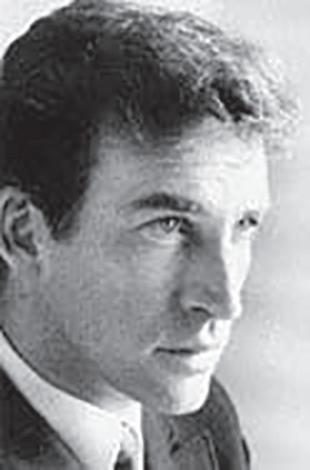
Mr. & Mrs. Joseph W. Hirschhorn
Daniel J. Ho heimer
Kenneth L. Holford
Mr. George R. Hood
Mr. & Mrs. Terence L. Horan
Mrs. Benjamin C. Hubbard
Susan & Tom Hughes
Carolyn R. Hunt*
Dr. William Hurford & Dr. Lesley Gilbertson
Mr. & Mrs. Paul Isaacs
Julia M. F. B. Jackson
Michael & Kathleen Janson
Andrew MacAoidh Jergens
Jean C. Jett
Margaret H. Jung
Mace C. Justice
Karen Kapella
Dr. & Mrs.* Steven Katkin
Rachel Kirley & Joseph Jaquette
Carolyn Koehl
Marvin Kolodzik & Linda Gallaher
Carol & Scott Kosarko
Randolph & Patricia Krumm
Theresa M. Kuhn
Warren & Patricia Lambeck
Peter E. Landgren & Judith Schonbach Landgren
Owen & Cici Lee
Steve Lee
M. Drue Lehmann
Mrs. Jean E. Lemon
Mr. Peter F. Levin
George & Barbara Lott
Janice* & Gary Lubin
Mr.* & Mrs. Ronald Lyons
Marilyn J. Maag
Margot Marples
David L. Martin
Allen* & Judy Martin
David Mason
Mrs. Barbara Witte McCracken
Laura Kimble McLellan
Dr. Stanley R. Milstein
Mrs. William K. Minor
Mr. & Mrs. D. E. Moccia
Kristin & Stephen Mullin
Christopher & Susan Muth
Patti Myers
Susan & Kenneth Newmark
Dr. & Mrs. Theodore Nicholas
Jane Oberschmidt
Marja-Liisa Ogden
Julie & Dick* Okenfuss
Jack & Marilyn* Osborn
Dr. & Mrs. Richard E. Park, MD
Mr. & Mrs. Charles Pease
Poul D. & JoAnne Pedersen
Sandy & Larry* Pike
Mrs. Harold F. Poe
Anne M. Pohl
Irene & Daniel Randolph
James W. Rauth
Barbara S. Reckseit
Melody Sawyer Richardson
Ellen Rieveschl
Elizabeth & Karl Ronn
Moe & Jack Rouse
Marianne Rowe
Ann & Harry Santen
Rosemary & Mark Schlachter
Carol J. Schroeder
Mrs. William R. Seaman
Dr. Brian Sebastian
Mrs. Mildred J. Selonick*
Mrs. Robert B. Shott
Sue & Glenn Showers
Irwin & Melinda Simon
Betsy & Paul* Sittenfeld
Sarah Garrison Skidmore
Adrienne A. Smith
David & Sonja* Snyder
Marie Speziale
Mr. & Mrs. Christopher L. Sprenkle
Michael M. Spresser
Barry & Sharlyn Stare
Cynthia Starr
Bill & Lee Steenken
Tom & Dee Stegman
Barry Steinberg
Nancy M. Steman
John & Helen Stevenson
Mary* & Bob Stewart
Brett Stover
Dr. Robert & Jill Strub
Patricia M. Strunk
Ralph & Brenda* Taylor
Conrad F. Thiede
Minda F. Thompson
Carrie & Peter Throm
Dr. & Mrs. Thomas Todd
Nydia Tranter
Dick & Jane Tuten
Thomas Vanden Eynden & Judith Beiting
Mr. & Mrs. Robert Varley
Mr. & Mrs. James K. Votaw
Mr. & Mrs.* Randolph L. Wadsworth Jr.
Jack K. & Mary V. Wagner*
Nancy C. Wagner
Patricia M. Wagner
Mr.* & Mrs. Paul Ward
Jo Anne & Fred Warren
Mr. Scott Weiss & Dr. Charla Weiss
Anne M. Werner
Gary & Diane West
Charles A. Wilkinson
Ms. Diana Willen
Susan Stanton Windgassen
Mrs. Joan R. Wood
Alison & Jim Zimmerman
* Deceased
New Schippers members are in bold
FINANCIAL SUPPORT
94 | 2023–24 SEASON
Pops Princess Bride: Sep. 9–10
Denham Family and Friends
Dunn Family and Friends
Girl Scout Troop 2136
Hemmer Family and Friends
Pops Defying Gravity: Sep 22–24
Anderson Senior Center
Berkeley Square
Matthew Stegall Family and Friends
Seasons Retirement Community
CSO The Rite of Spring: Sep. 30–Oct. 1
Kristin Lee & Students
Pops Audra McDonald: Oct. 8
Ms. Thelma Thomas and Friends
Provident Travel
CSO Bernstein, Price & Copland: Oct. 13–14
Barrington of Oakley
Kenwood by Senior Star
Knolls of Oxford
Maple Knoll Village
Otterbein Retirement Community
Pops Disney: Sound of Magic: Oct. 20–22
Berkeley Square
Dylan Williams and Friends
Jasmine Artikova Family & Friends
Seasons Retirement Community
ENJOY THE MUSIC, TOGETHER!
• Groups of 10+ save 25% on most concerts and seniors and students save even more!
• Curate your own event with a private reception, guided tour or meet and greet— the possibilities are endless.
Contact CSO Group Sales: 513.864.0196 or groupsales@cincinnatisymphony.org cincinnatisymphony.org/groups
Fanfare Magazine | 95
WELCOME
TO SEP–OCT GROUPS! (as of August 2, 2023)
ADMINISTRATION
SHARED SERVICES & SUBSIDIARIES. The Cincinnati Symphony Orchestra’s business model is unique within the orchestral industry because it provides administrative services for other nonprofits and operates two subsidiary companies—Music & Event Management, Inc. and EVT Management LLC. With the consolidation of resources and expertise, sharing administrative services allows for all organizations within the model to thrive. Under this arrangement, the CSO produces hundreds of events in the Greater Cincinnati and Dayton regions and employs hundreds of people annually.
SENIOR MANAGEMENT TEAM
Jonathan Martin President and CEO
Laura Bordner Adams
Acting Vice President of Orchestra & Personnel
Harold Brown
The Honorable Nathaniel R. Jones Chief Diversity & Inclusion O cer
Rich Freshwater Chief Financial O cer
Michael Frisco
Vice President of Marketing
Felecia Tchen Kanney
Vice President of Communications
Mary McFadden Lawson Chief Philanthropy O cer
Robert McGrath
Chief Operating O cer
Anthony Paggett
Acting Vice President of Artistic Planning
Kyle Wynk-Sivashankar
Vice President of Human Resources
EXECUTIVE OFFICE
Jonathan Martin President and CEO
Andrea Maisonpierre Hessel
Executive Assistant to the President & CEO
Robert McGrath
Chief Operating O cer
Shannon Faith Assistant to the Chief Operating O cer
ARTISTIC PLANNING
Anthony Paggett
Acting Vice President of Artistic Planning
Nick Minion Artist Liaison
Laura Ruple
Assistant to the Music Director & Artistic Planning
Sam Strater
Senior Advisor for Cincinnati Pops Planning
COMMUNICATIONS
Felecia Tchen Kanney
Vice President of Communications
Charlie Balcom
Social Media Manager
Tyler Secor Director of Publications & Content Development
COMMUNITY ENGAGEMENT, DIVERSITY, EQUITY & INCLUSION
Harold Brown
The Honorable Nathaniel R. Jones Chief Diversity & Inclusion O cer
Ti any Cooper Director of Community Engagement & Diversity
Pamela Jayne Volunteer & Community Engagement Coordinator
DIGITAL CONTENT & INNOVATION
KC Commander Director of Digital Content & Innovation
Kaitlyn Driesen Digital Production Manager
Lee Snow
Digital Content Technology Manager
Corinne Wiseman
Digital Content Manager
FINANCE, IT & DATA SERVICES
Rich Freshwater Chief Financial O cer
Deborah Benjamin Accounting Clerk
Kathleen Curry Data Entry Clerk
Elizabeth Engwall Accounting Manager
Matt Grady Accounting Manager
Sharon Grayton
Data Services Manager
Marijane Klug Accounting Manager
Shannon May Accounting Clerk
Kristina Pfei er Director of Finance
Elizabeth Salmons Accounting Clerk
Judy Simpson
Director of Finance
Tara Williams Data Services Manager
HUMAN RESOURCES & PAYROLL
Kyle Wynk-Sivashankar Vice President of Human Resources
Megan Inderbitzin-Tsai Payroll Manager
Natalia Lerzundi Payroll Specialist
Jenny Ryan Human Resources Manager
LEARNING
Carol Dary Dunevant Director of Learning
Holly Greenwood Learning Coordinator
Emily Jordan
Sound Discoveries Technology Assistant
Kyle Lamb
Learning Programs Manager
Ian McIntyre Sound Discoveries
Teaching Artist
MARKETING
Michael Frisco Vice President of Marketing
Leon Barton Web Manger
Nic Bizub
Group Sales Manager
Jon Dellinger Copywriter & Marketing Manager
Carmen Granger Subscriptions Marketing Manager
Elaine Hudson Assistant Box O ce Manger
Hannah Kaiser Assistant Box O ce Manger
Abigail Karr
Audience Engagement Manager
Stephanie Lazorchak Graphic Designer
Michelle Lewandowski Director of Marketing
Tina Marshall Director of Ticketing & Audience Services
Amber Ostaszewski Director of Audience Engagement
Alexis Shambley Marketing & Audience Insight Coordinator
Patron Services Representatives
Rebecca Ammerman, Lead
Ellison Blair, Lead
Drew Dolan, Lead
Wendy Marshall, Lead
Erik Nordstrom, Lead
Benjamin Connelly
Craig Doolin
Mary Duplantier
Ebony Jackson
Grace Kim
Gracie Lustenberg
Marian Mayen
PHILANTHROPY
Mary McFadden Lawson
Chief Philanthropy O cer
Sean Baker
Director of Institutional Giving
Bhaya Nayna Channan
Corporate Giving Manager
Ashley Co ey
Foundation & Grants Manager
Kate Farinacci
Director of Special Campaigns & Legacy Giving
Penny Hamilton
Philanthropy Assistant
Catherine Hann
Assistant Director of Individual Giving
Leslie Hoggatt
Director of Individual Giving & Donor Services
Quinton Je erson Research & Grants Administrator
D’Anté McNeal
Special Projects Coordinator
Jenna Montes
Individual Giving Manager
Emma Steward
Donor Engagement Coordinator

PRODUCTION
Laura Bordner Adams
Acting Vice President of Orchestra & Personnel
Naomi Bennett
Orchestra Personnel & Operations Manager
Carlos Javier
Production Manager
Alex Magg
Production Manager
Brenda Tullos
Director of Orchestra Personnel
96 | 2023–24 SEASON
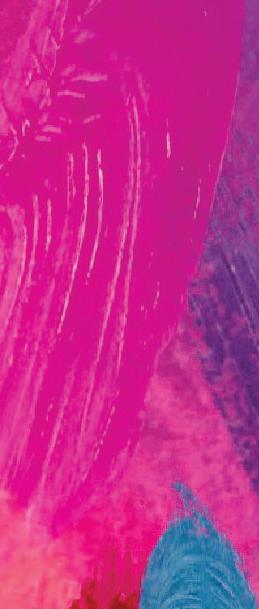





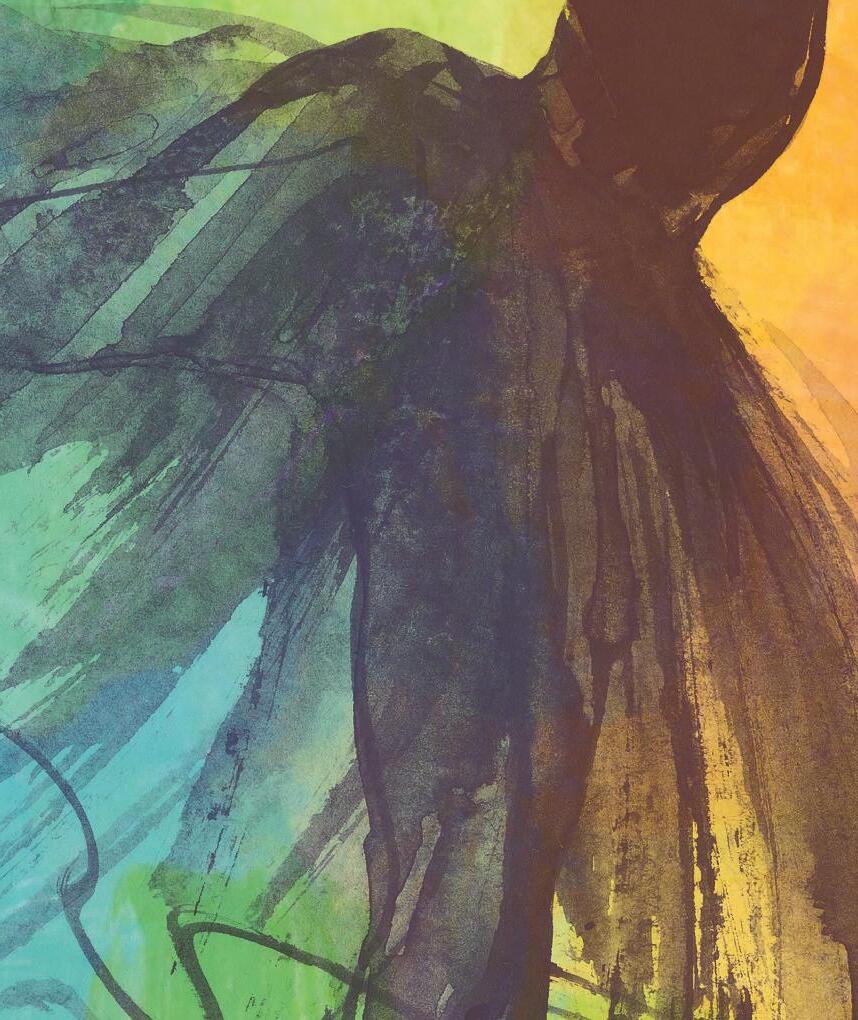
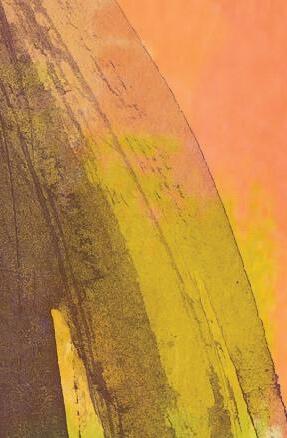

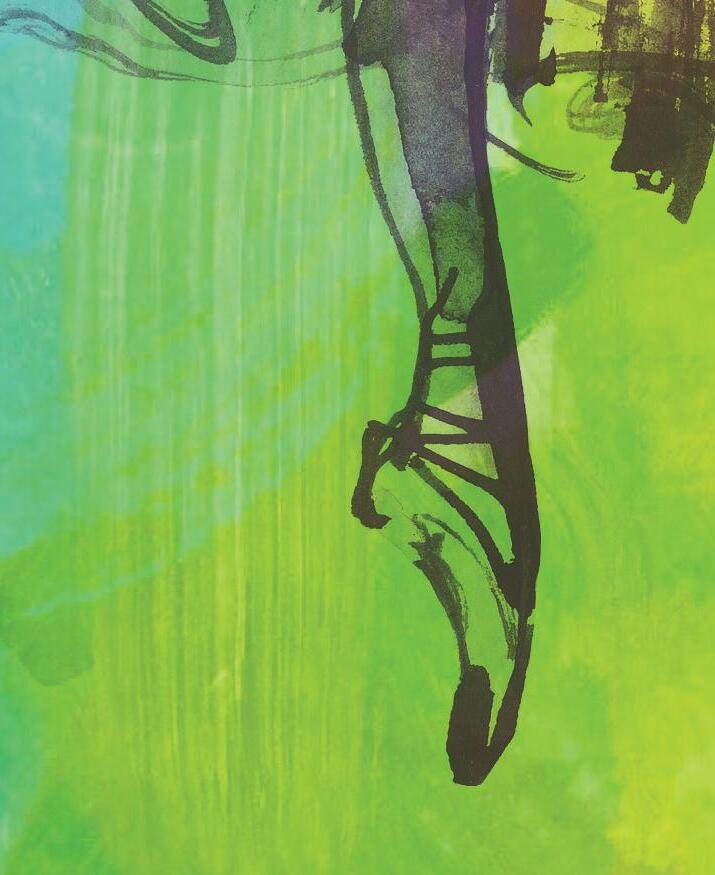
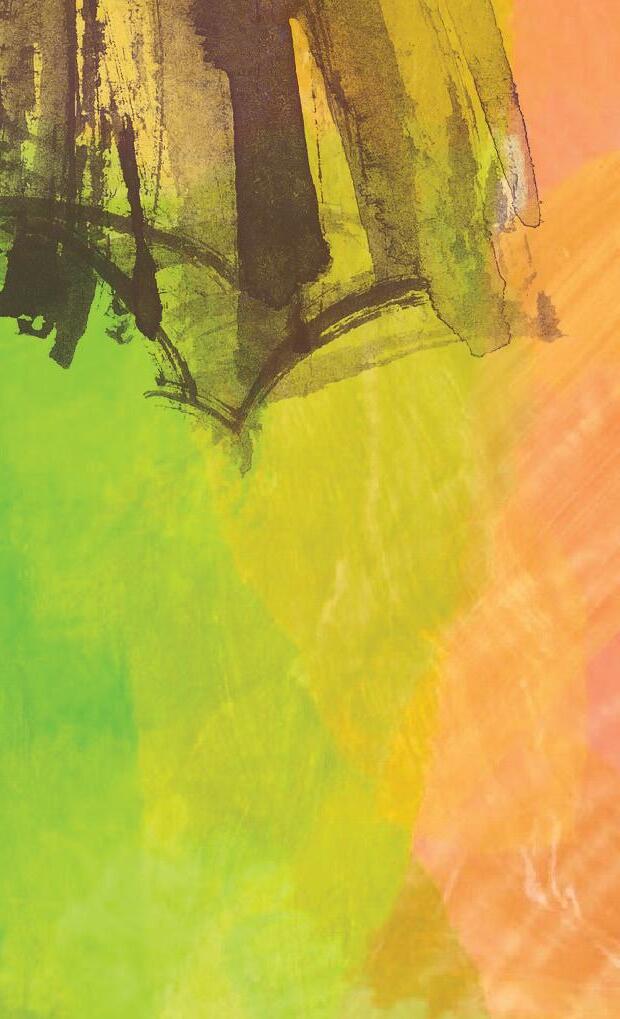





























A proud sponsor of the musical arts
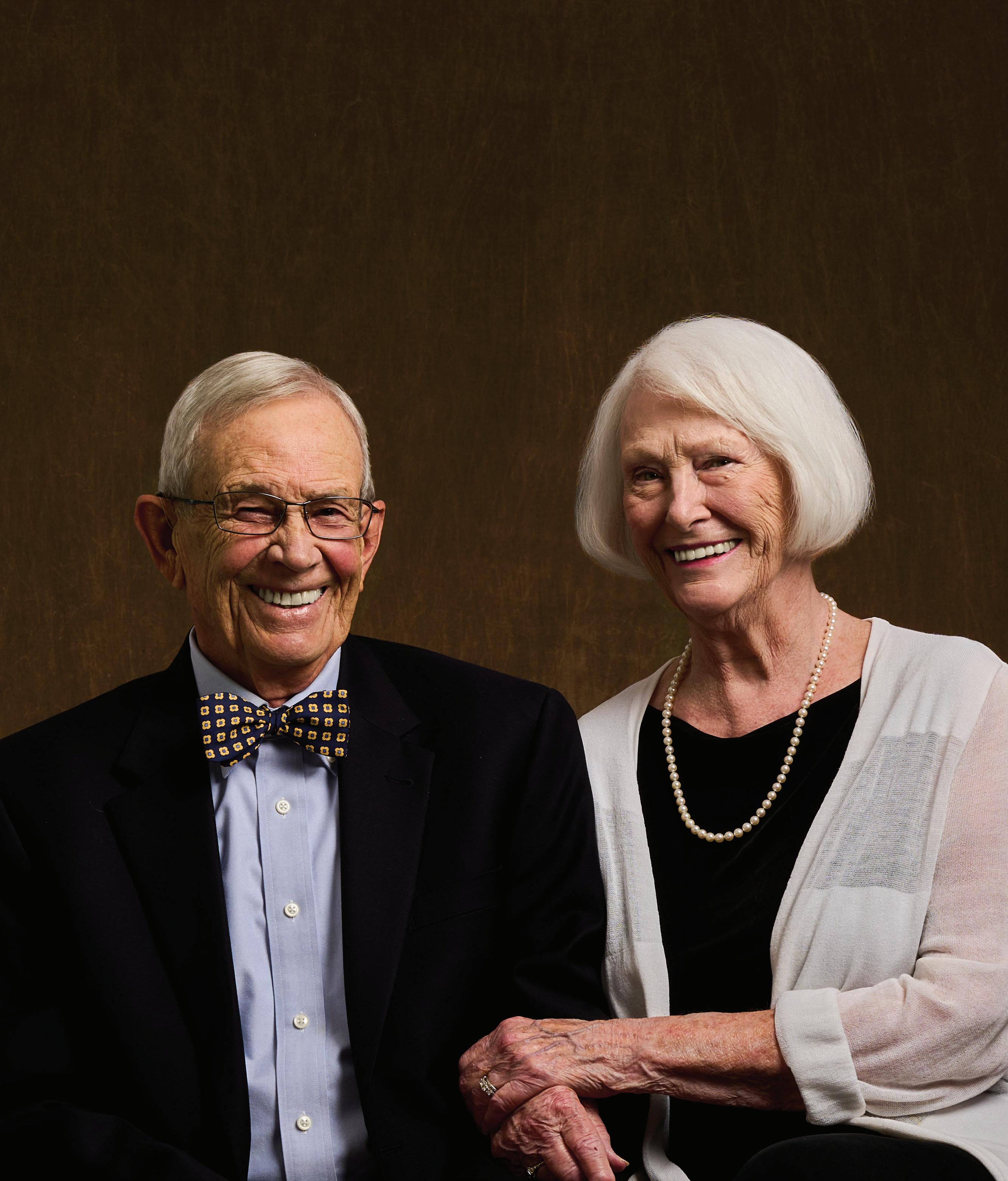
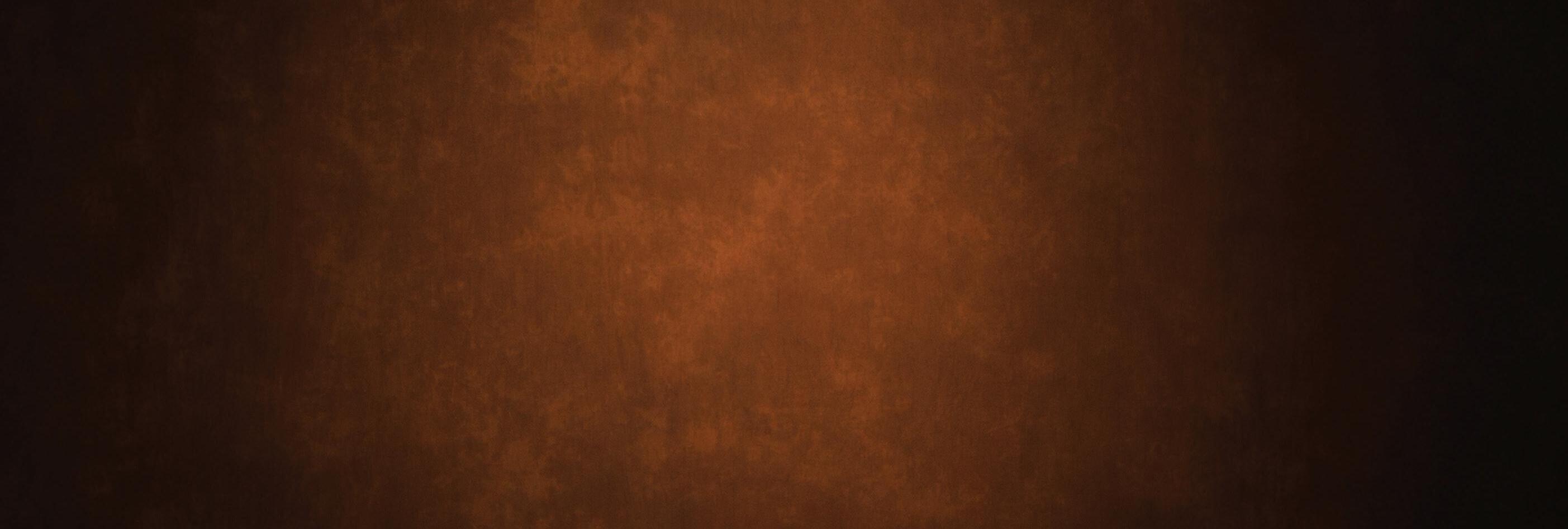














































 by KEN SMITH
by KEN SMITH











 by DAVID LYMAN
by DAVID LYMAN










































































































































































































































































































































































